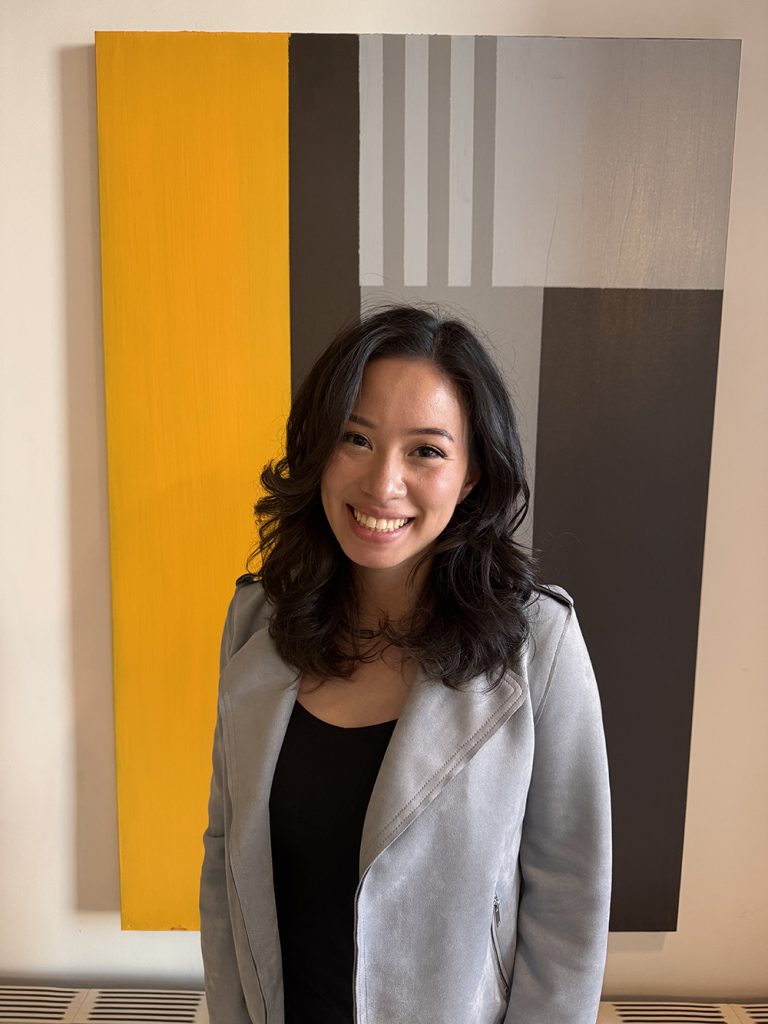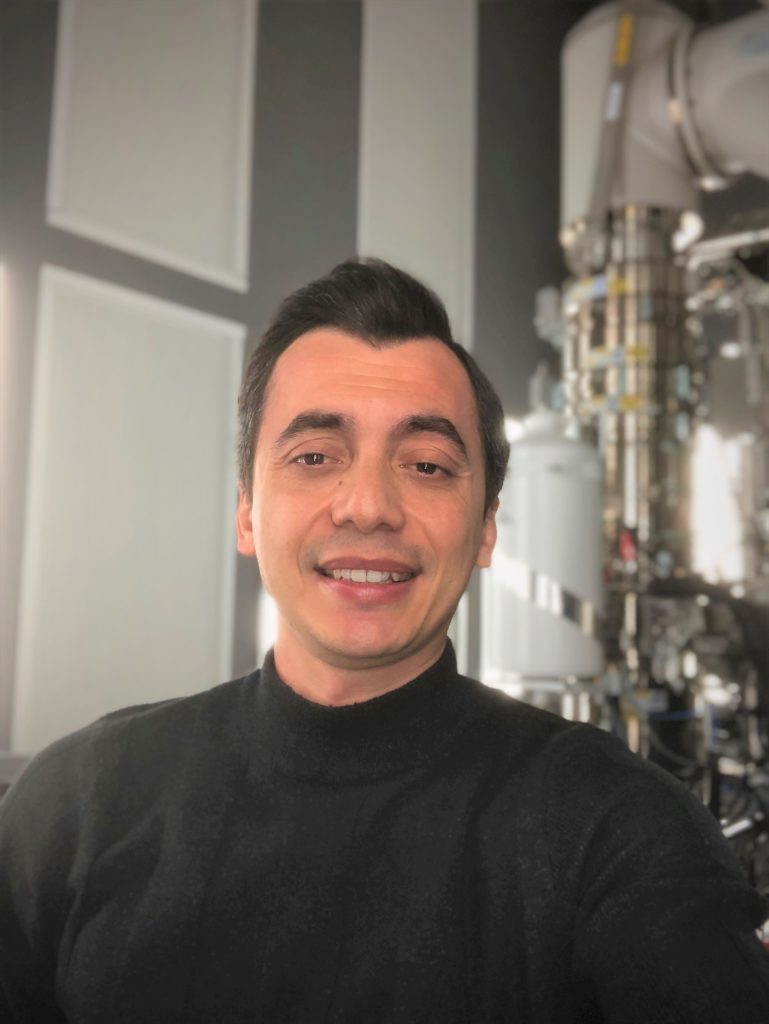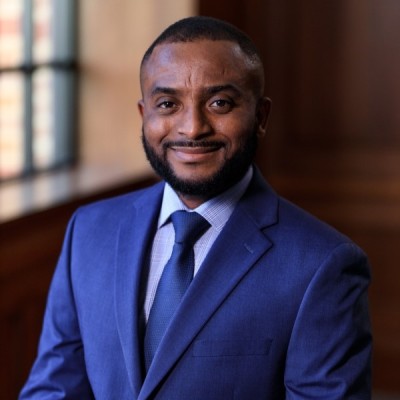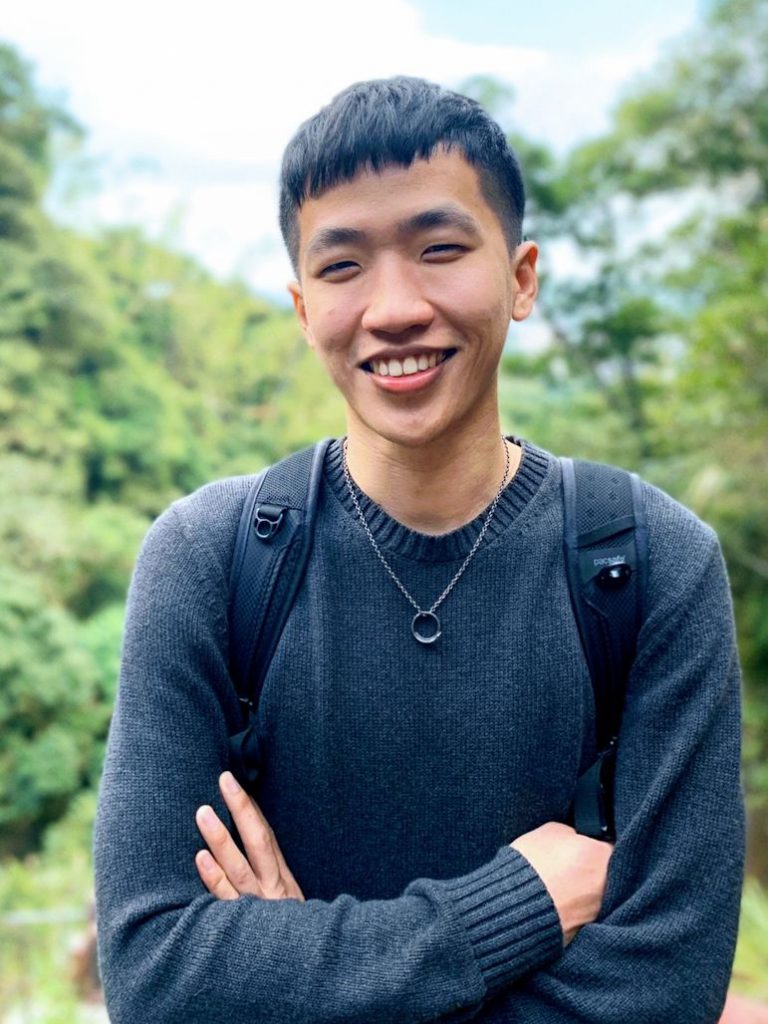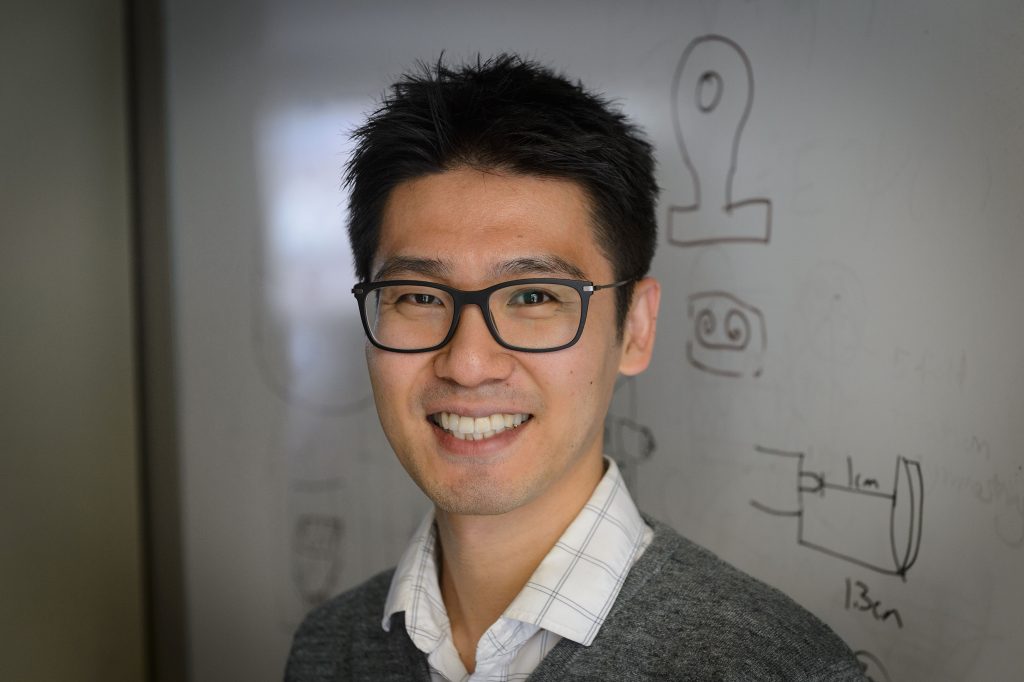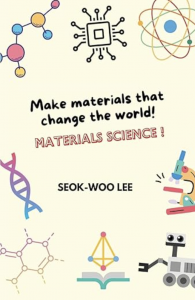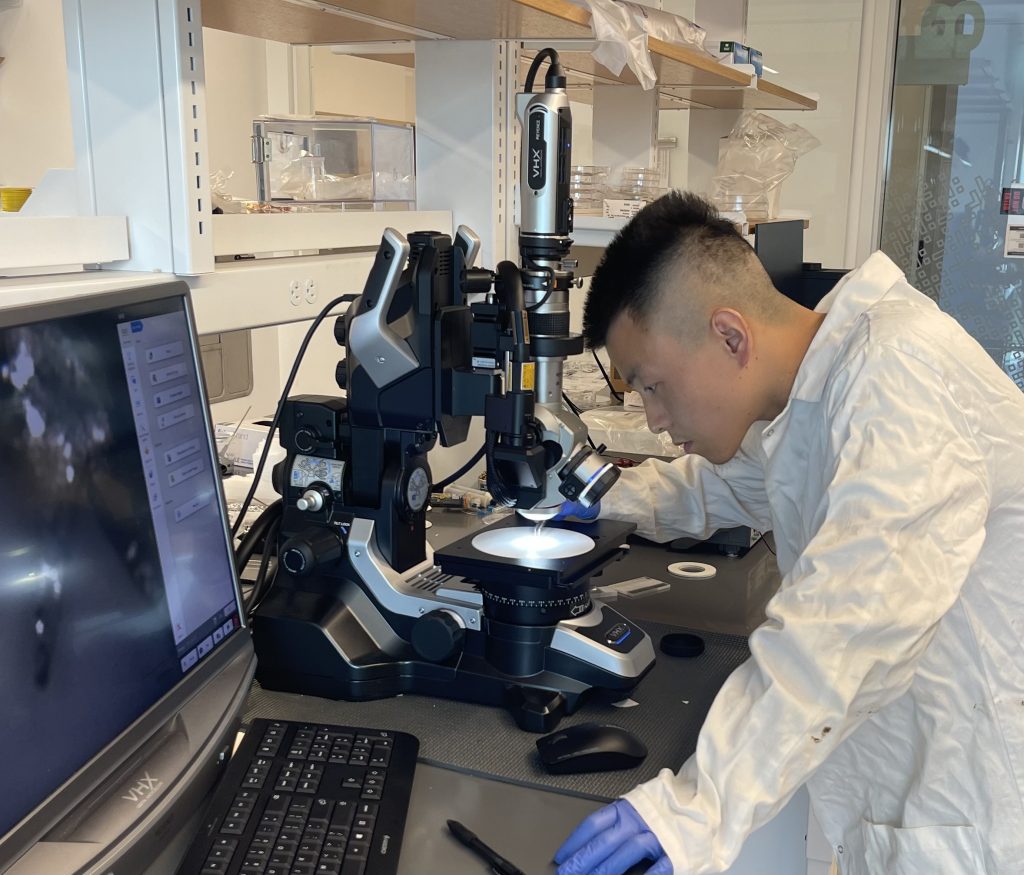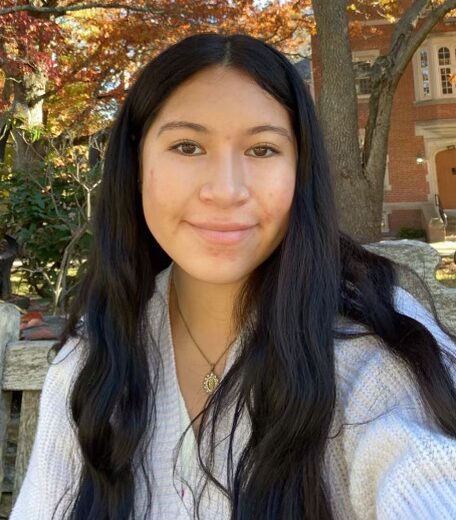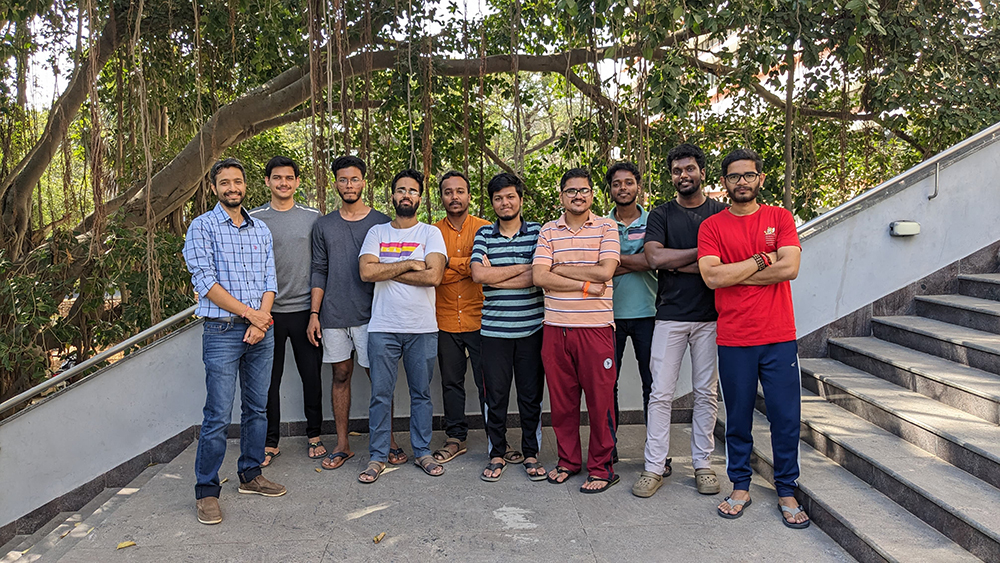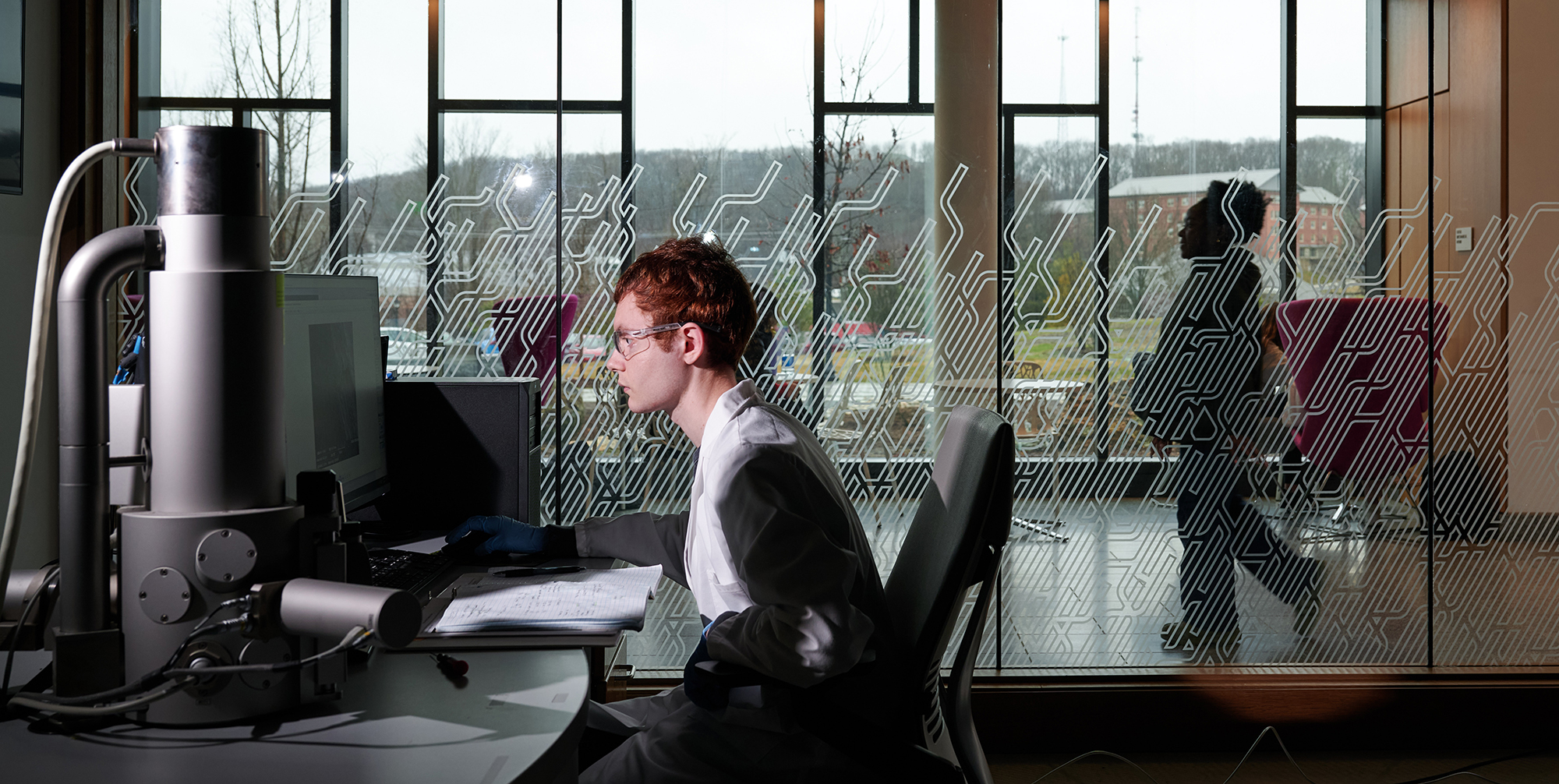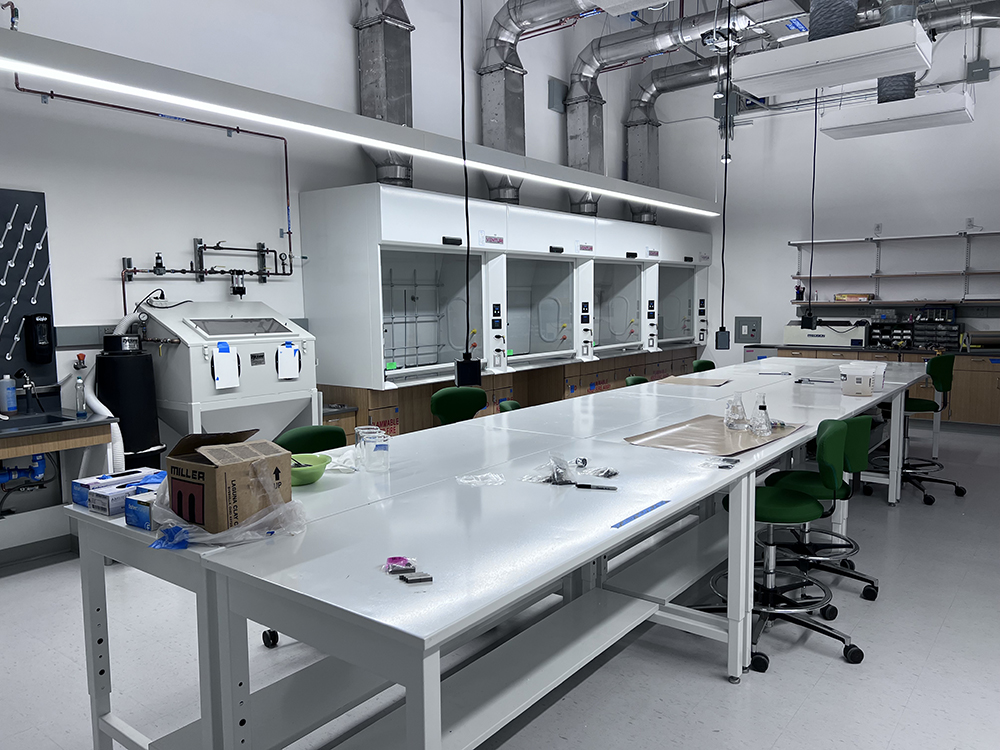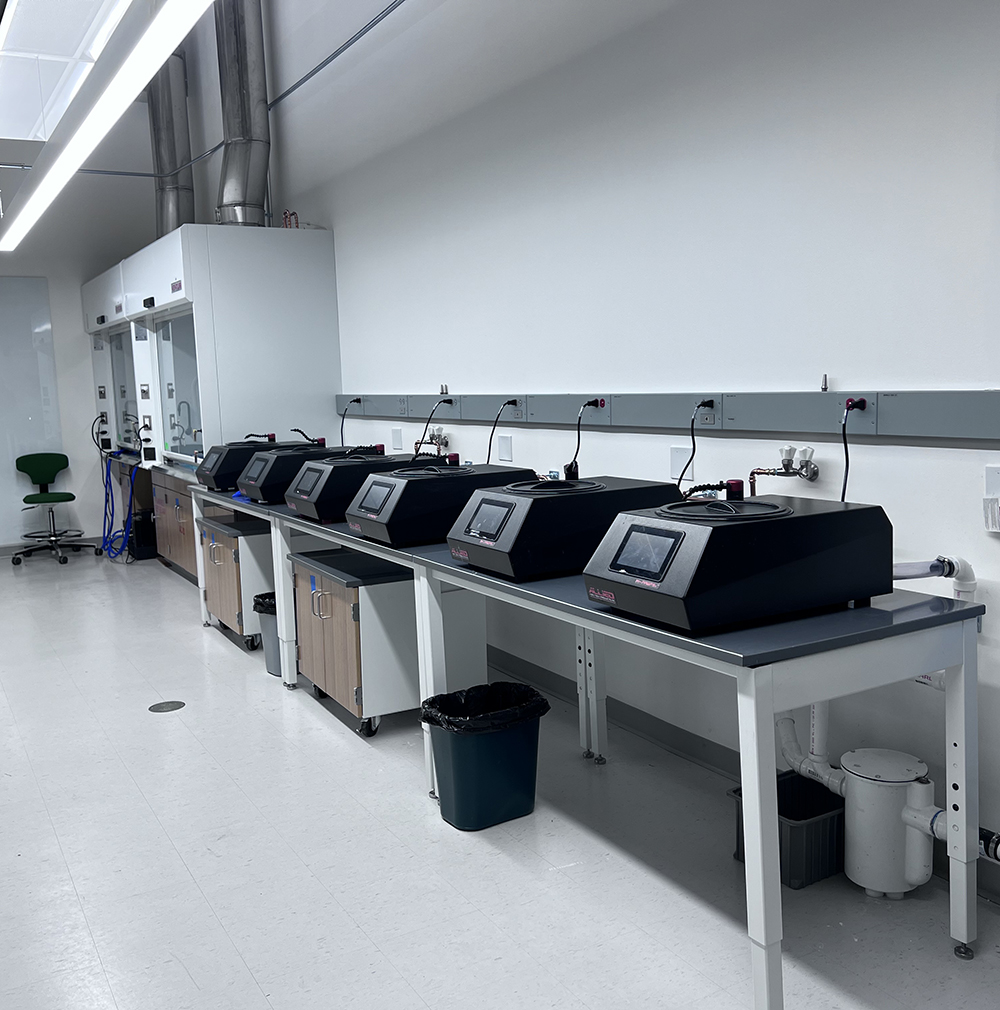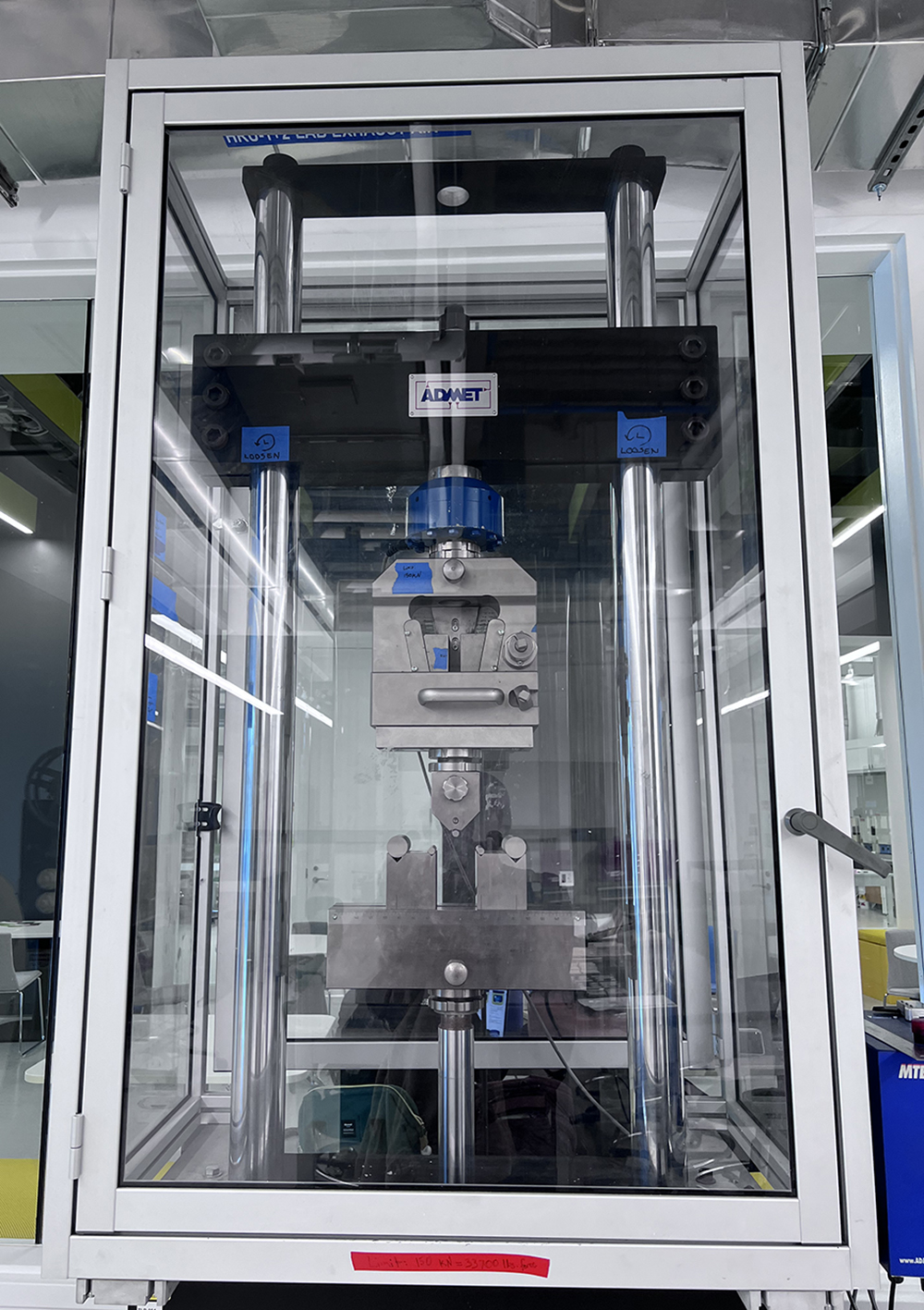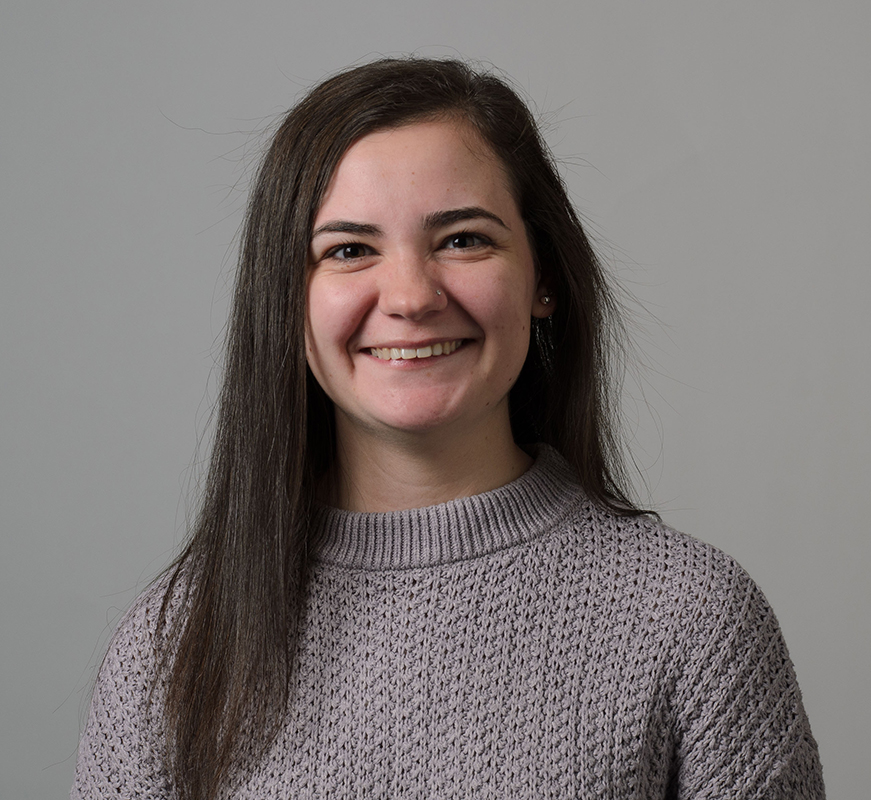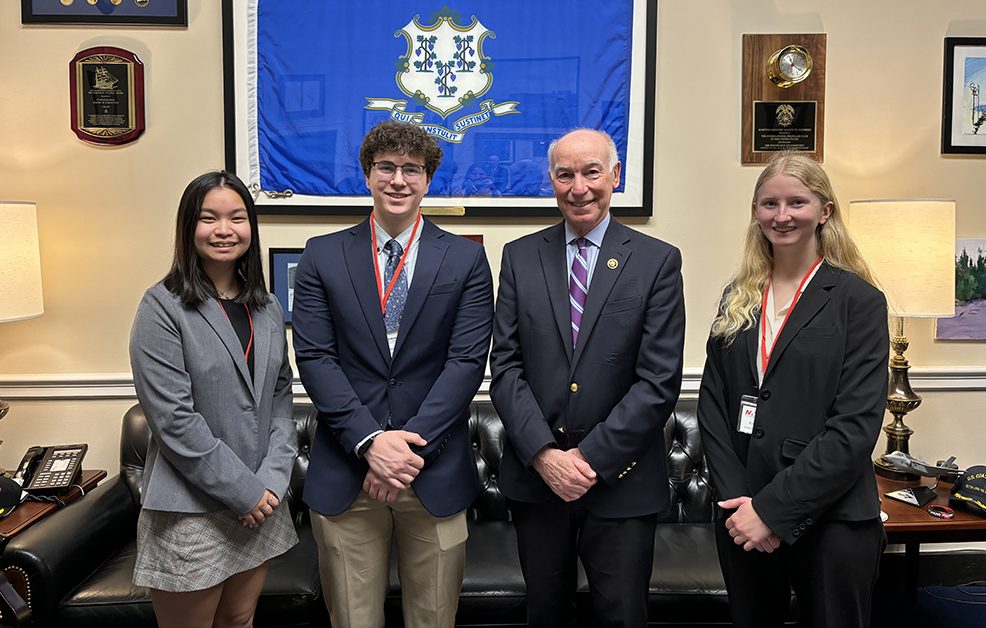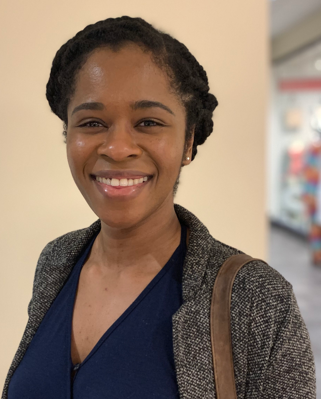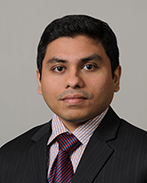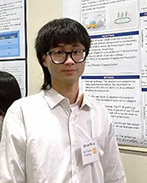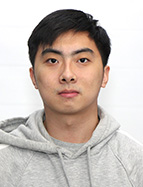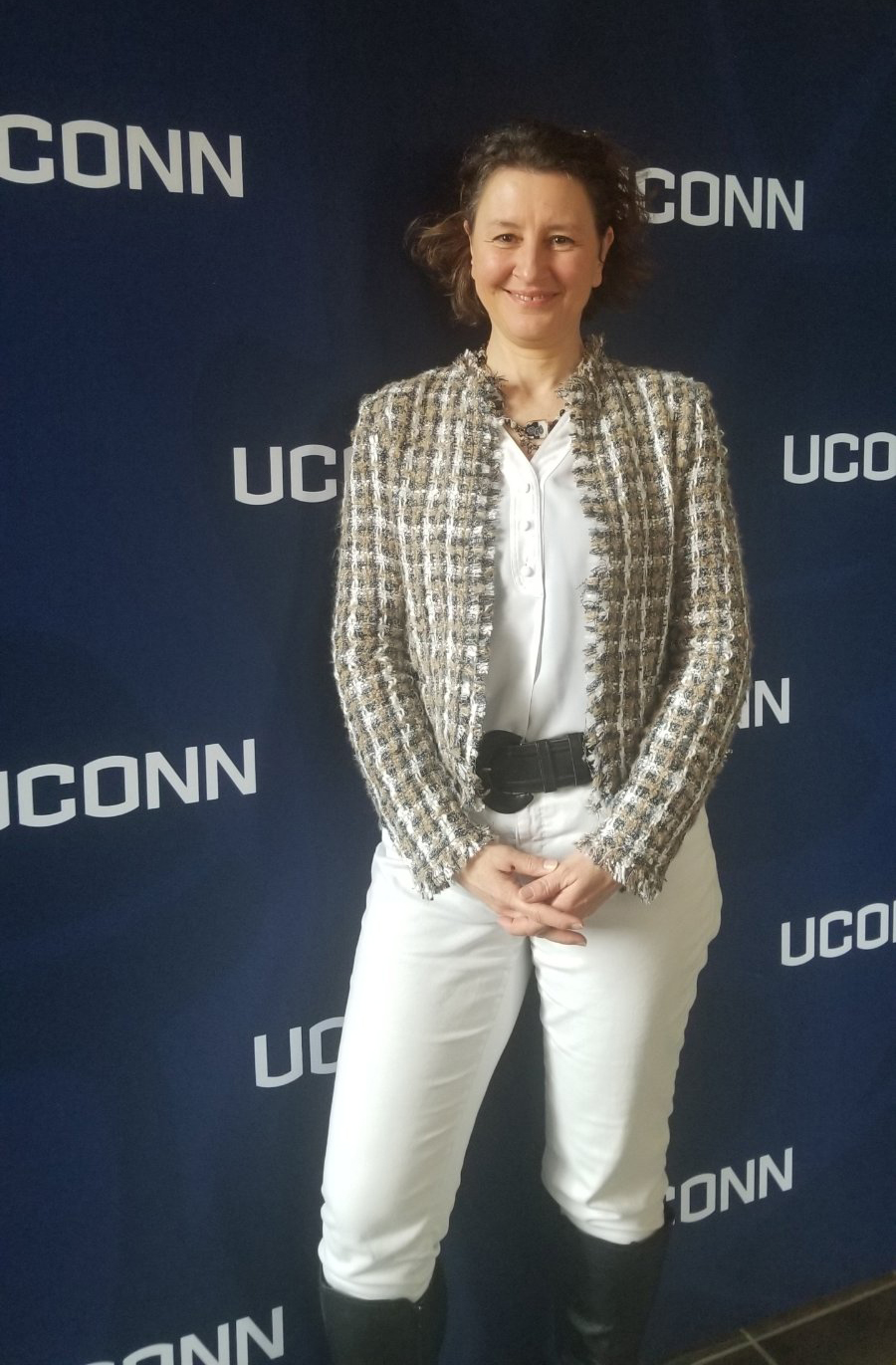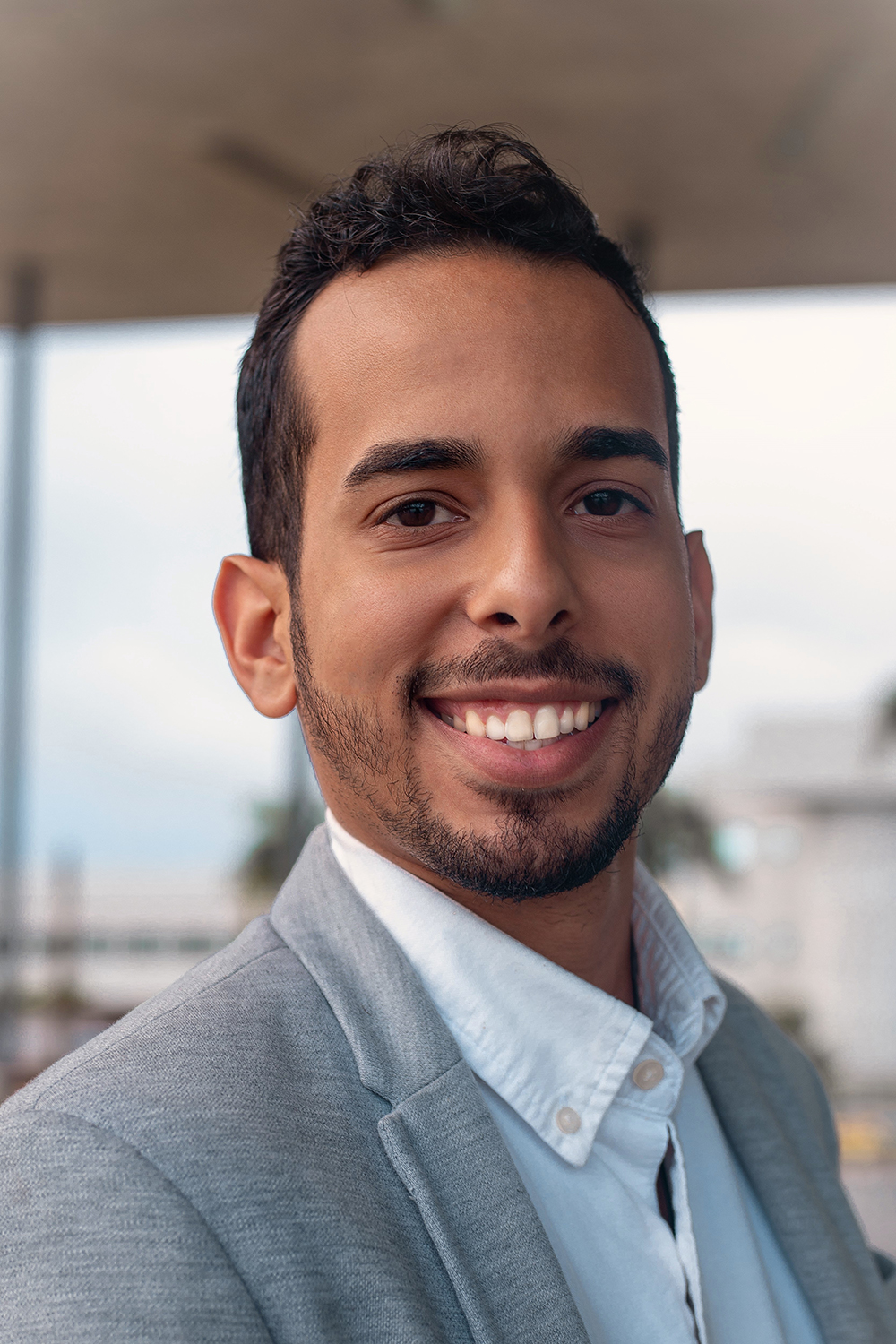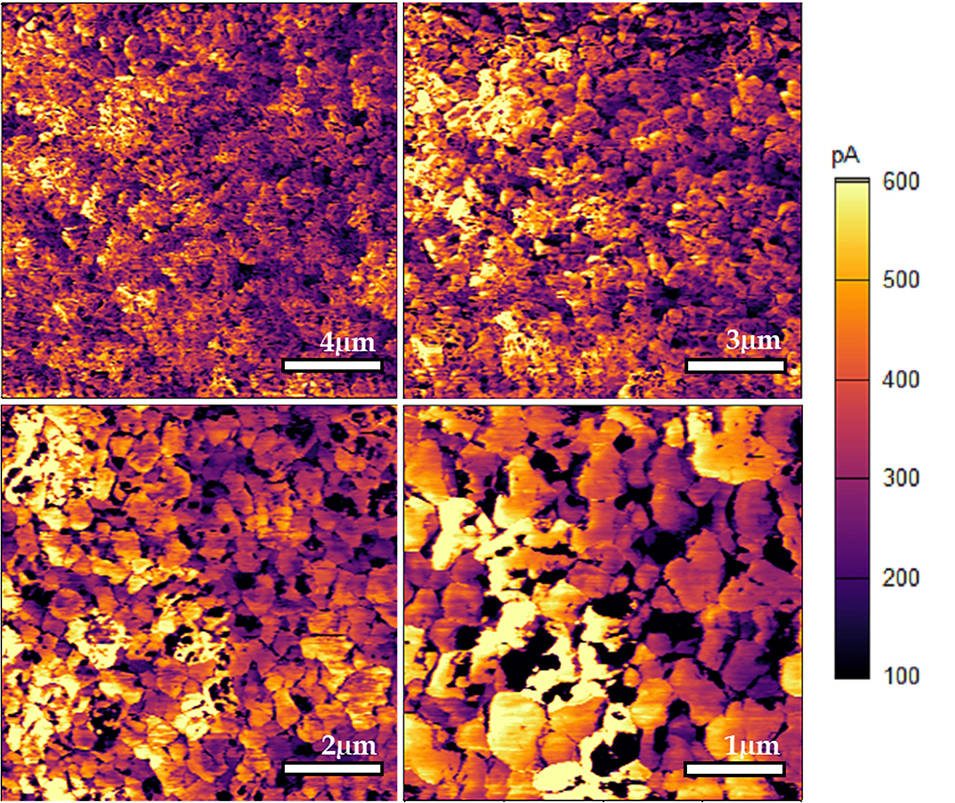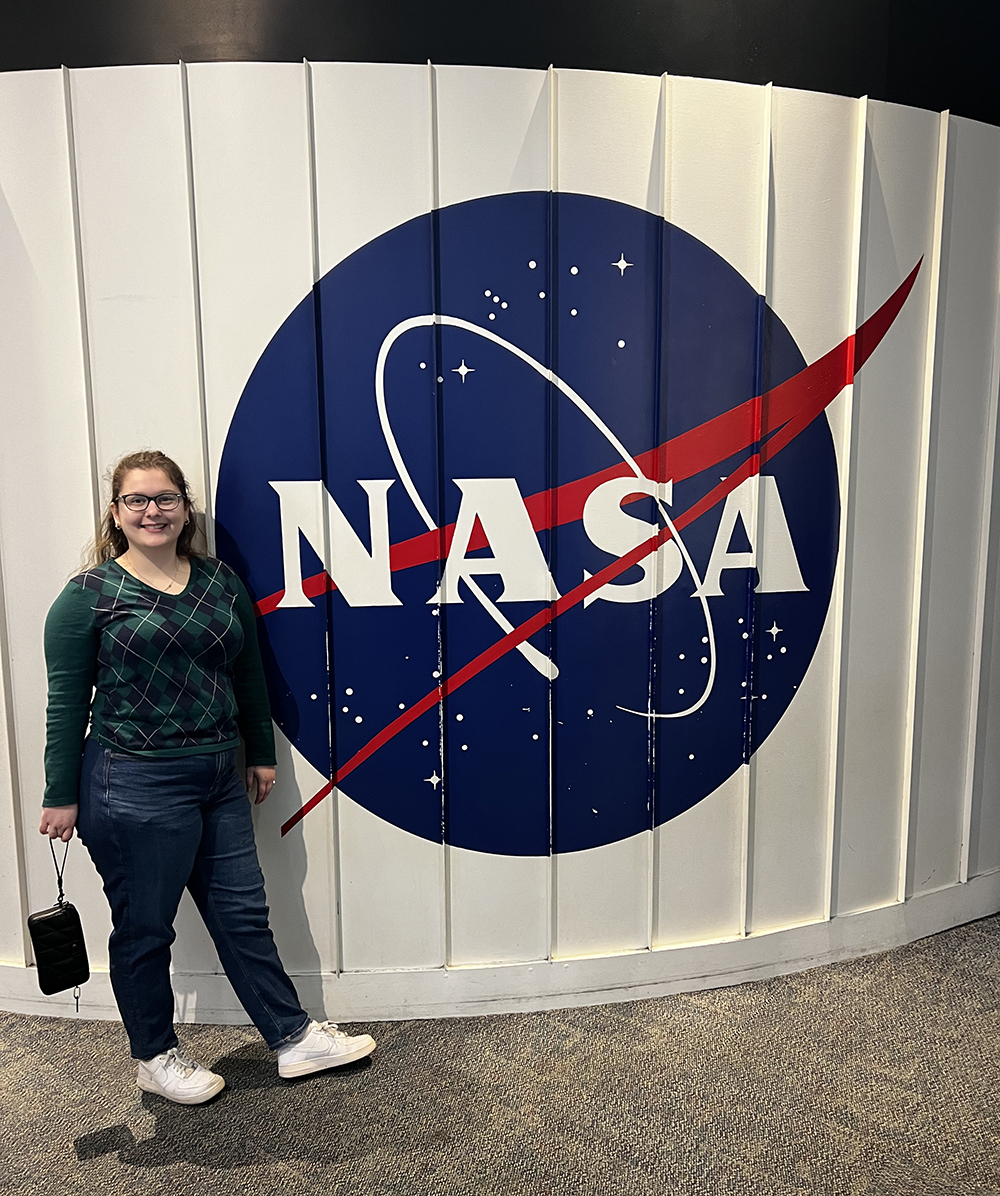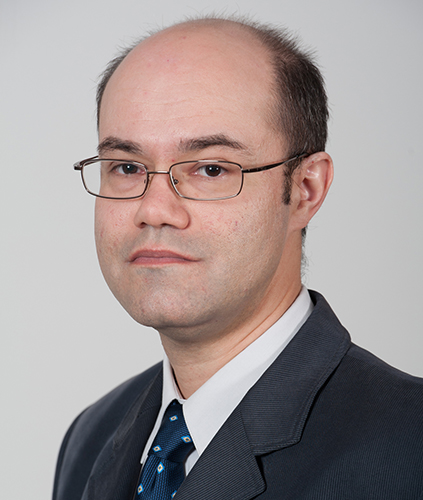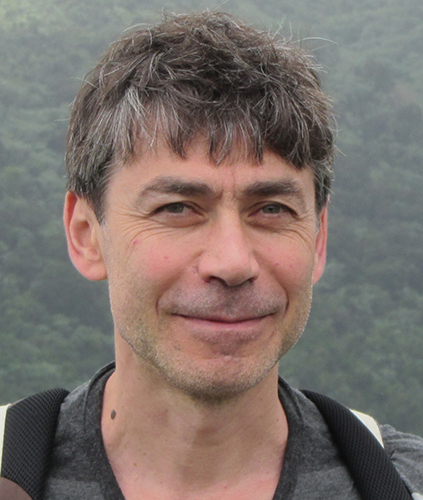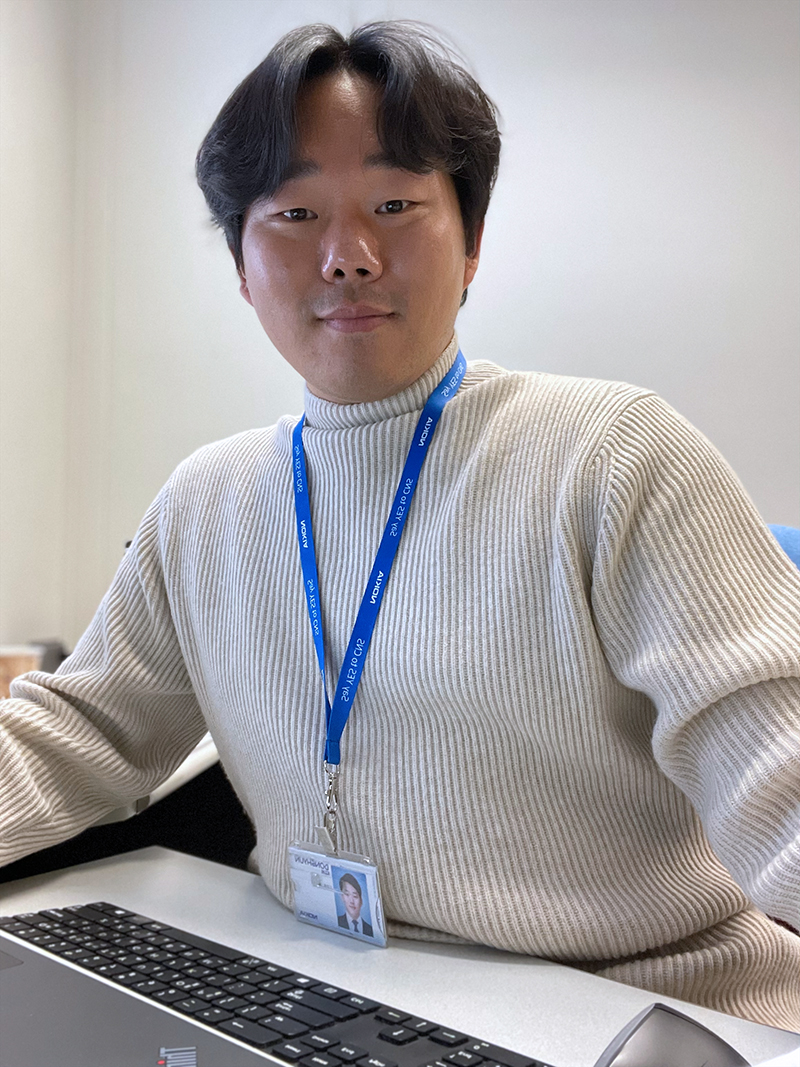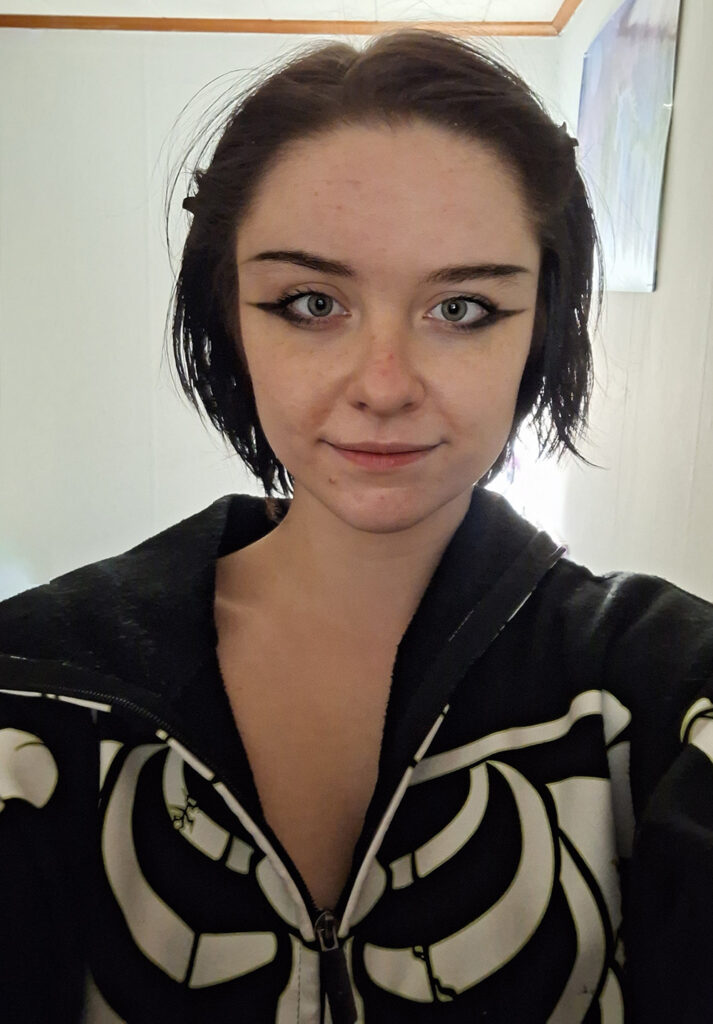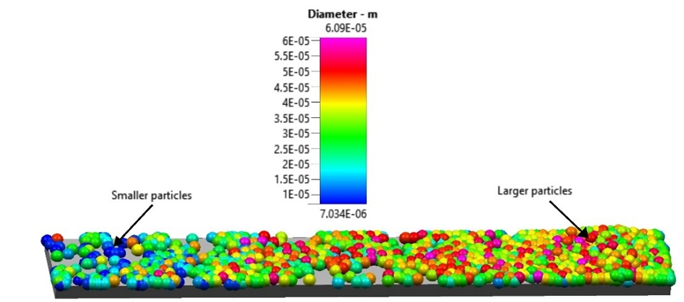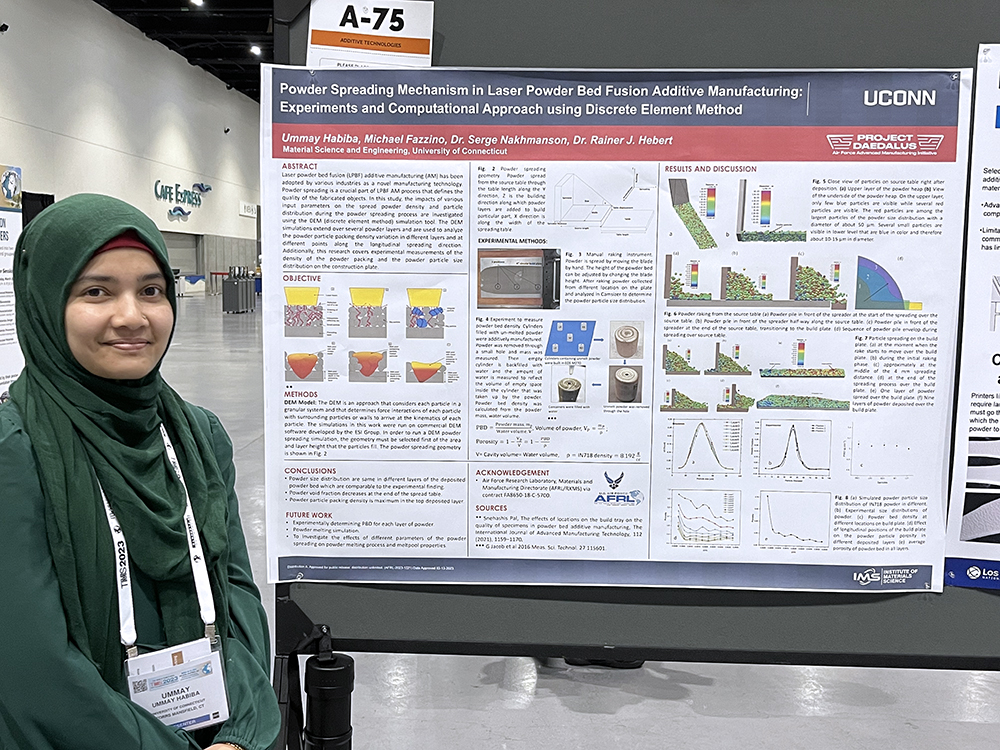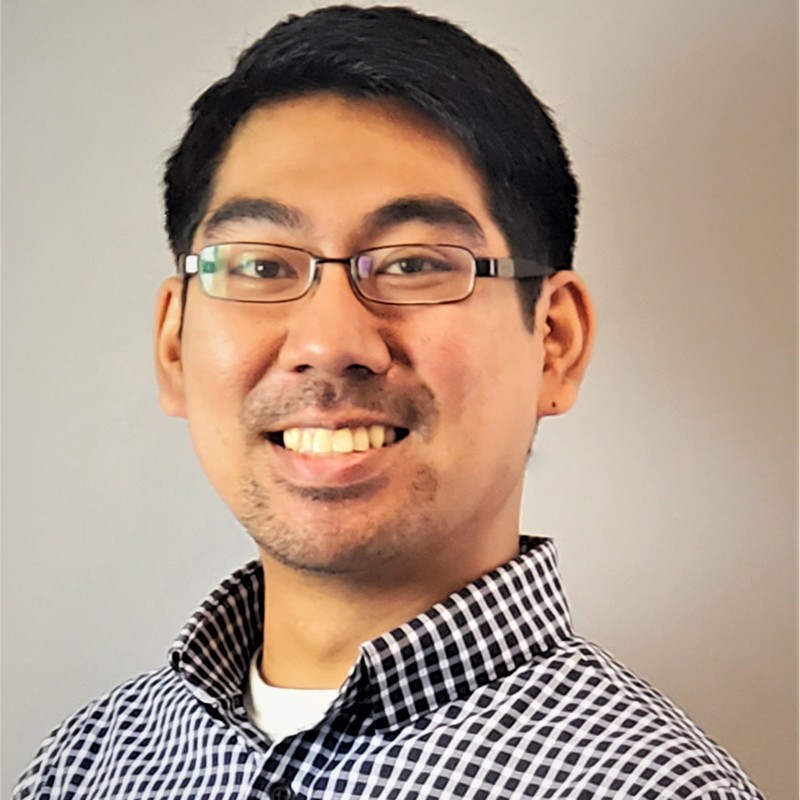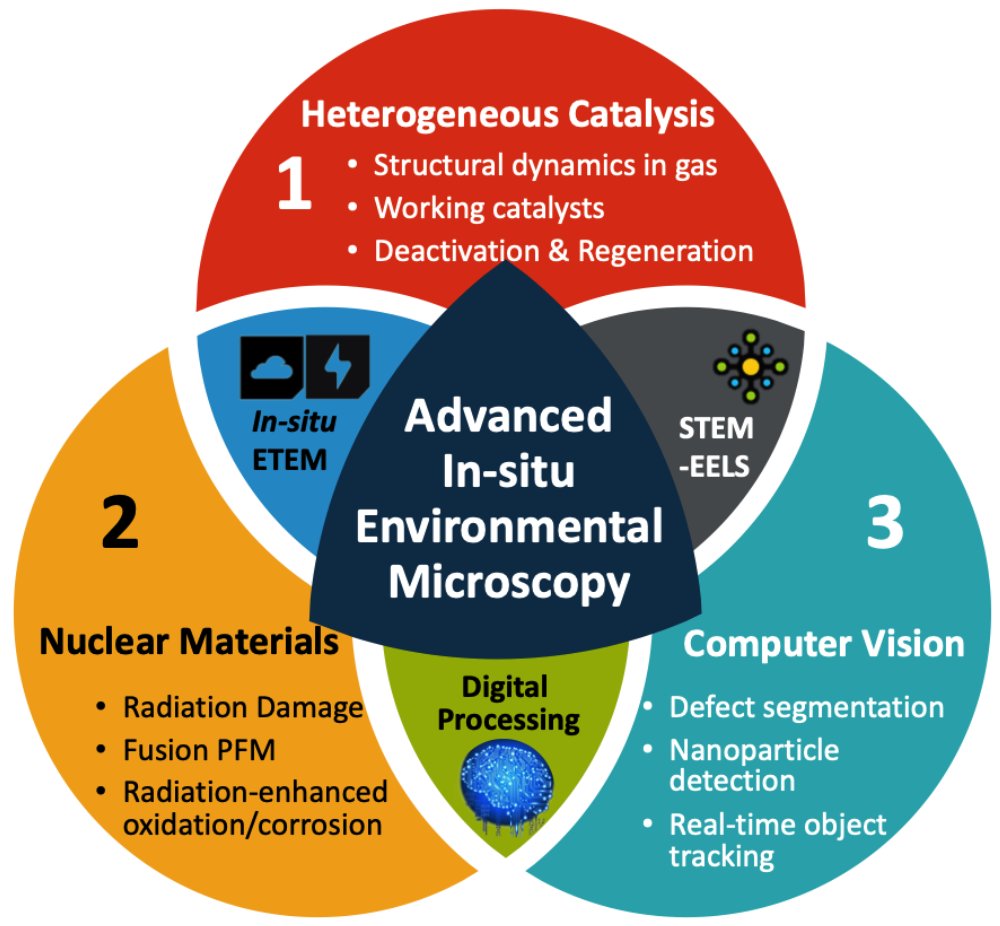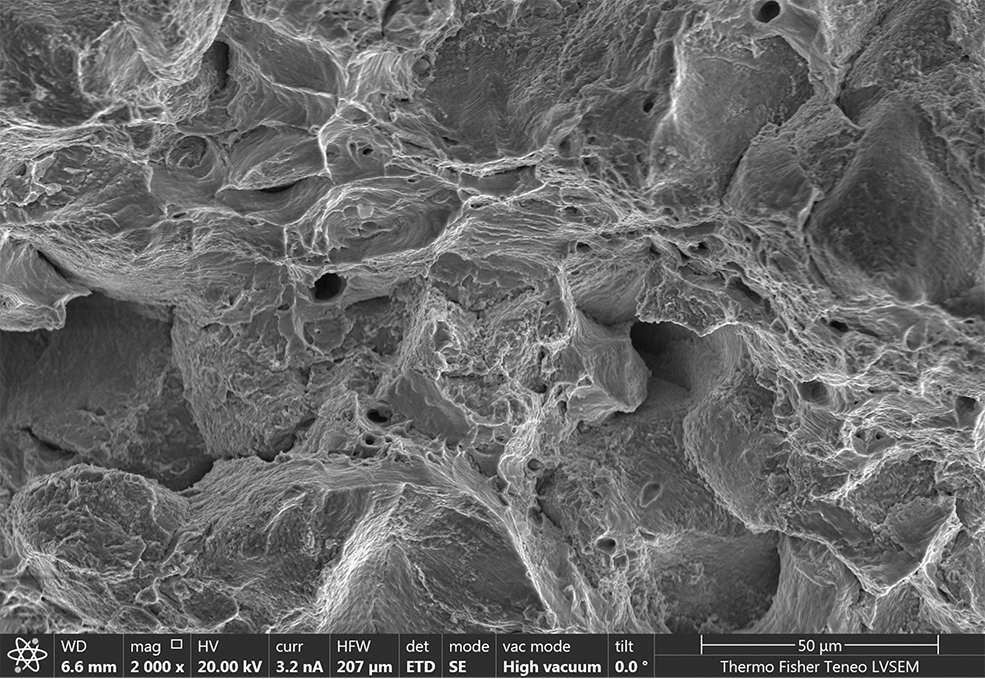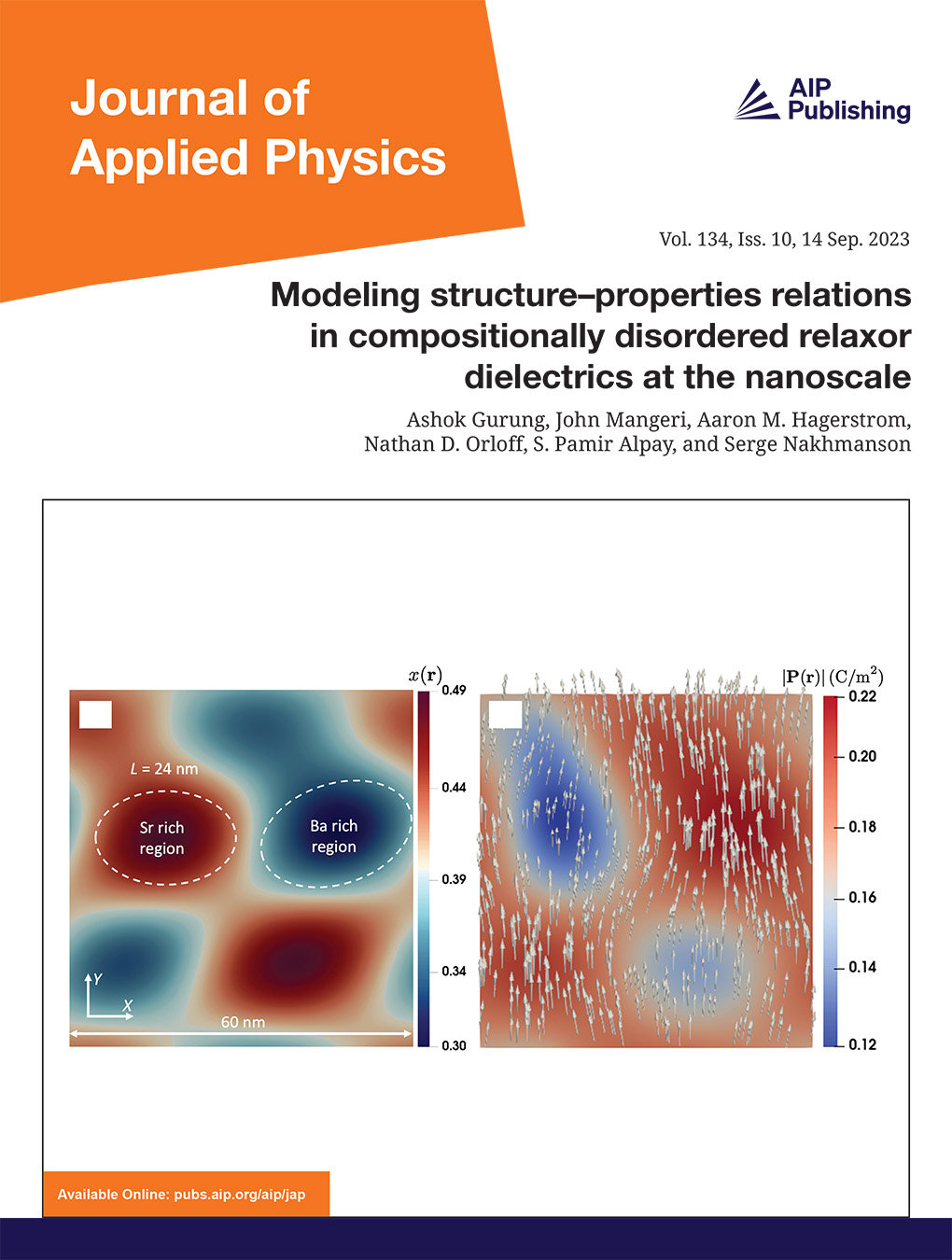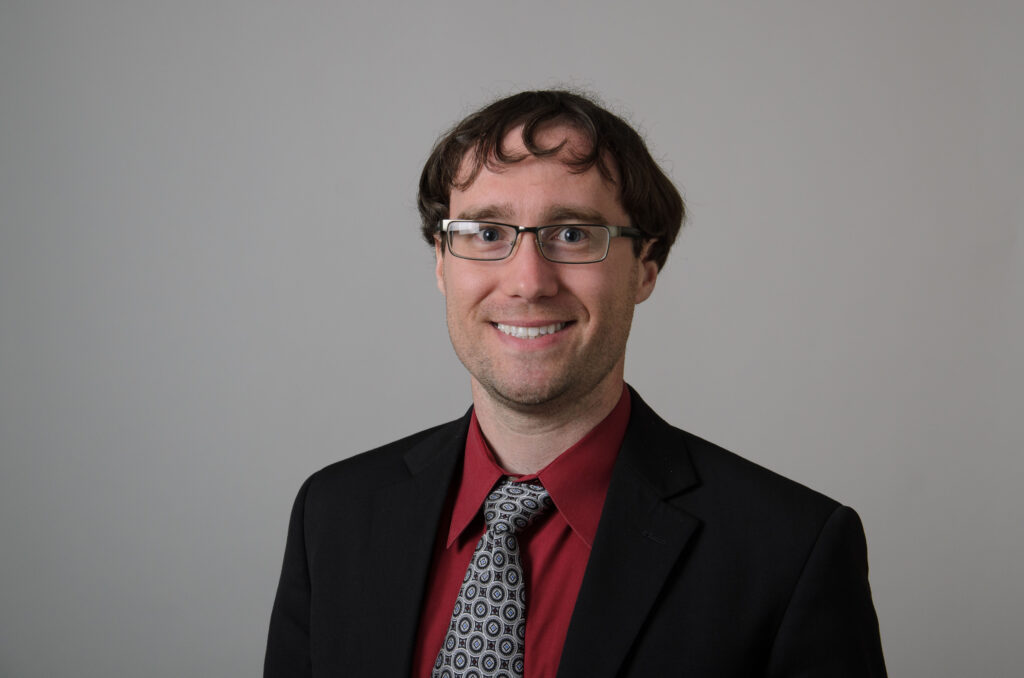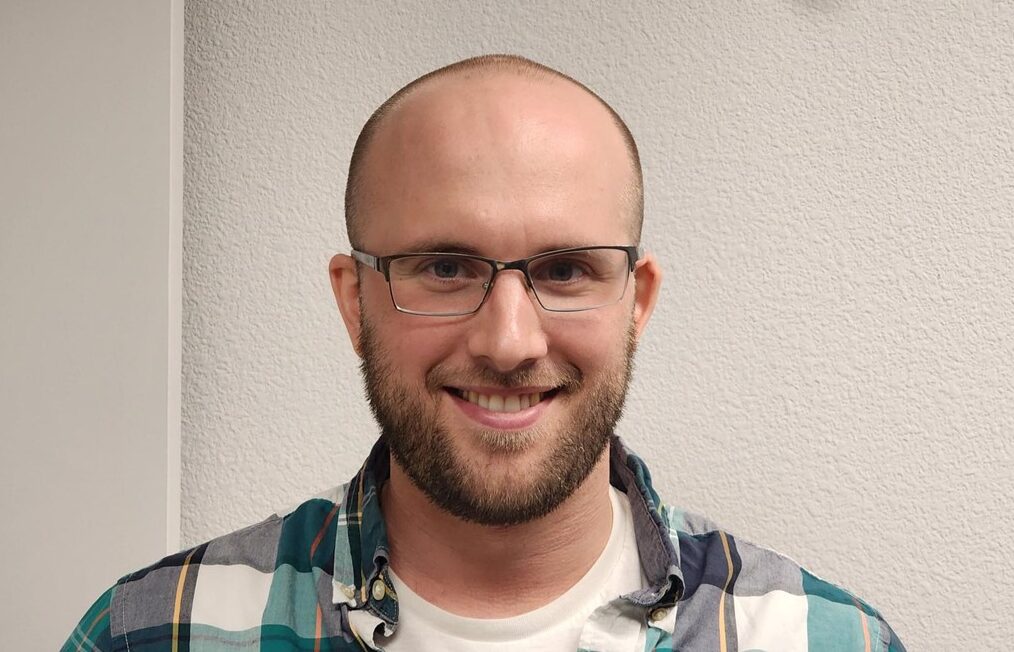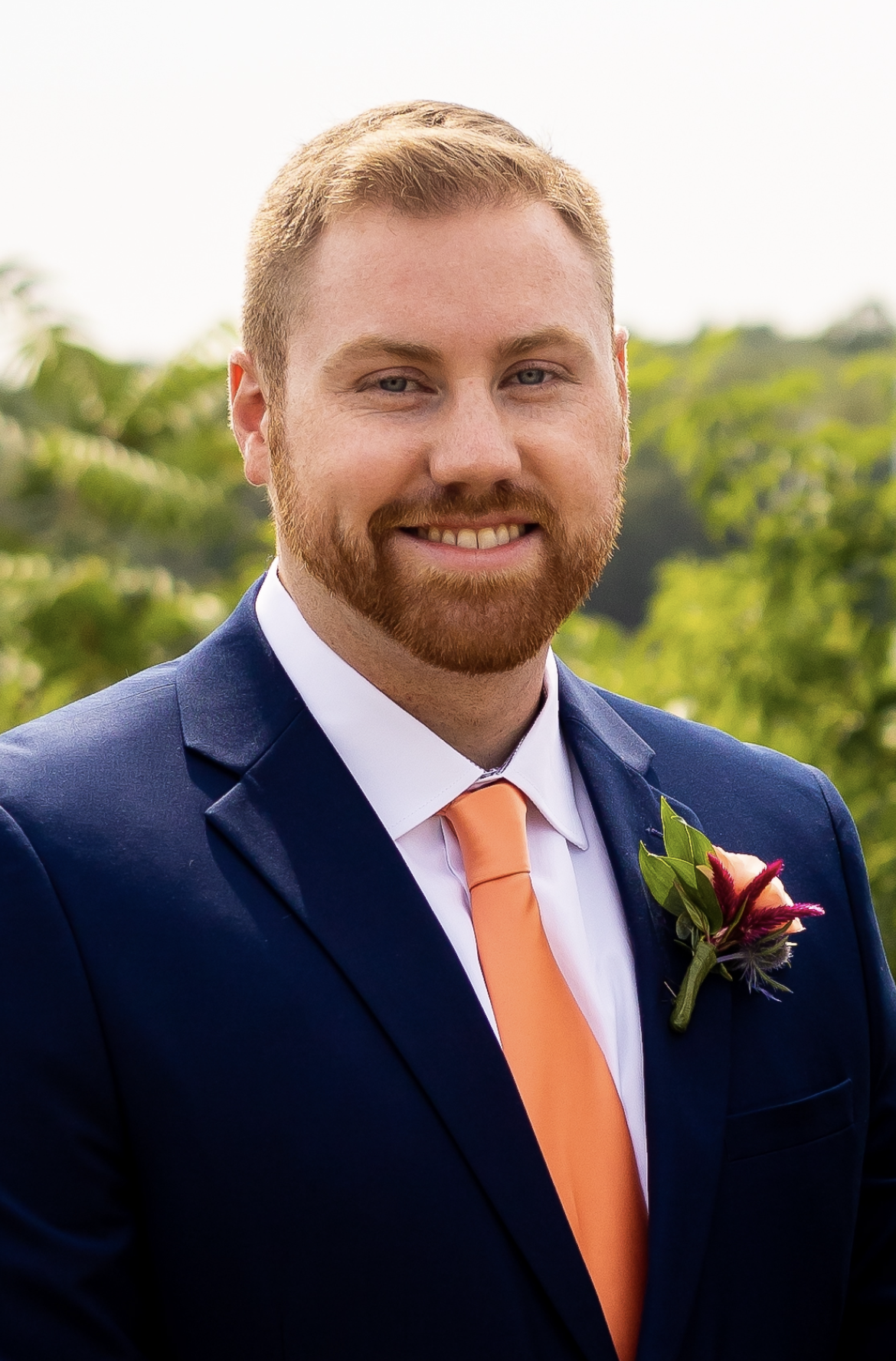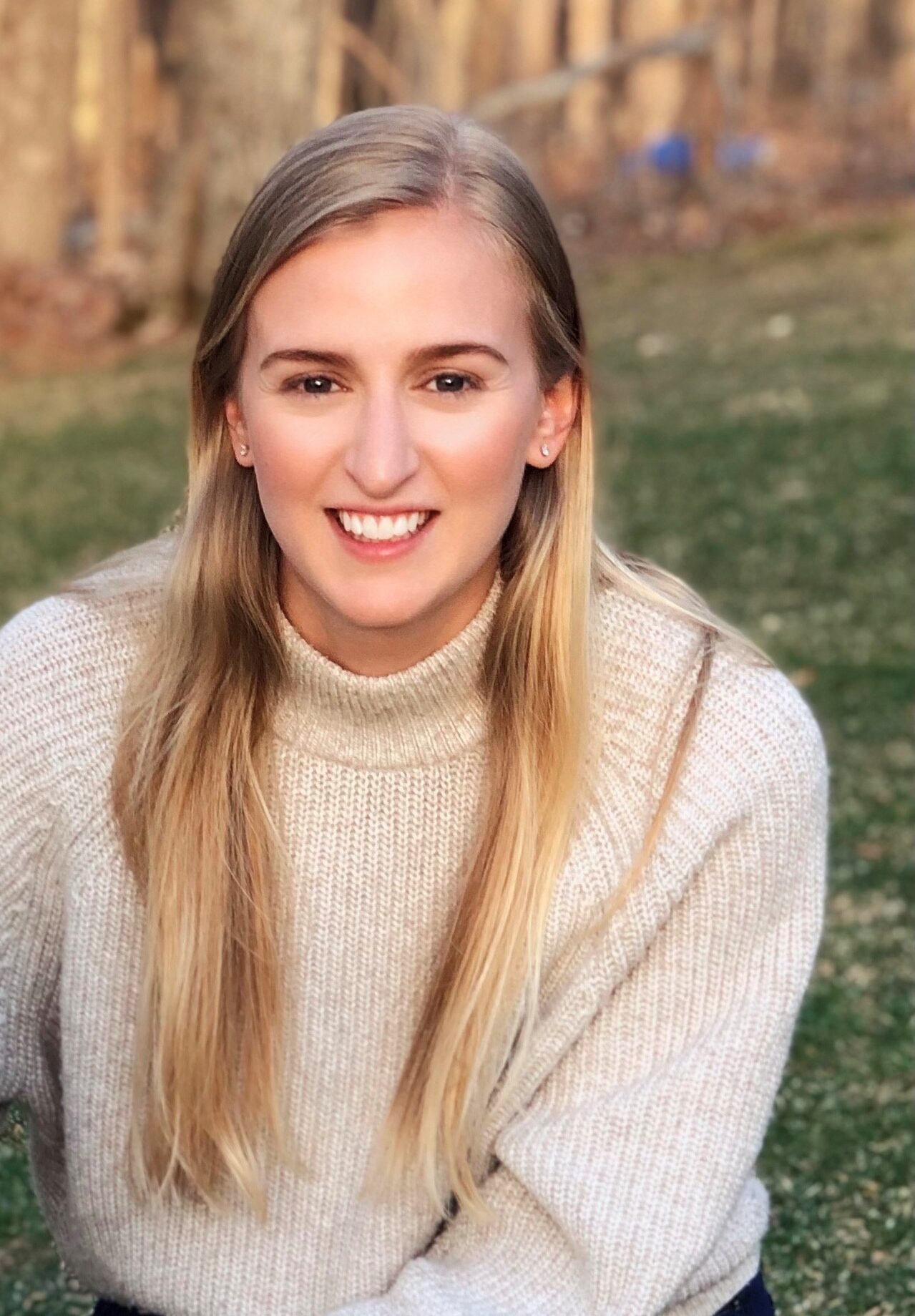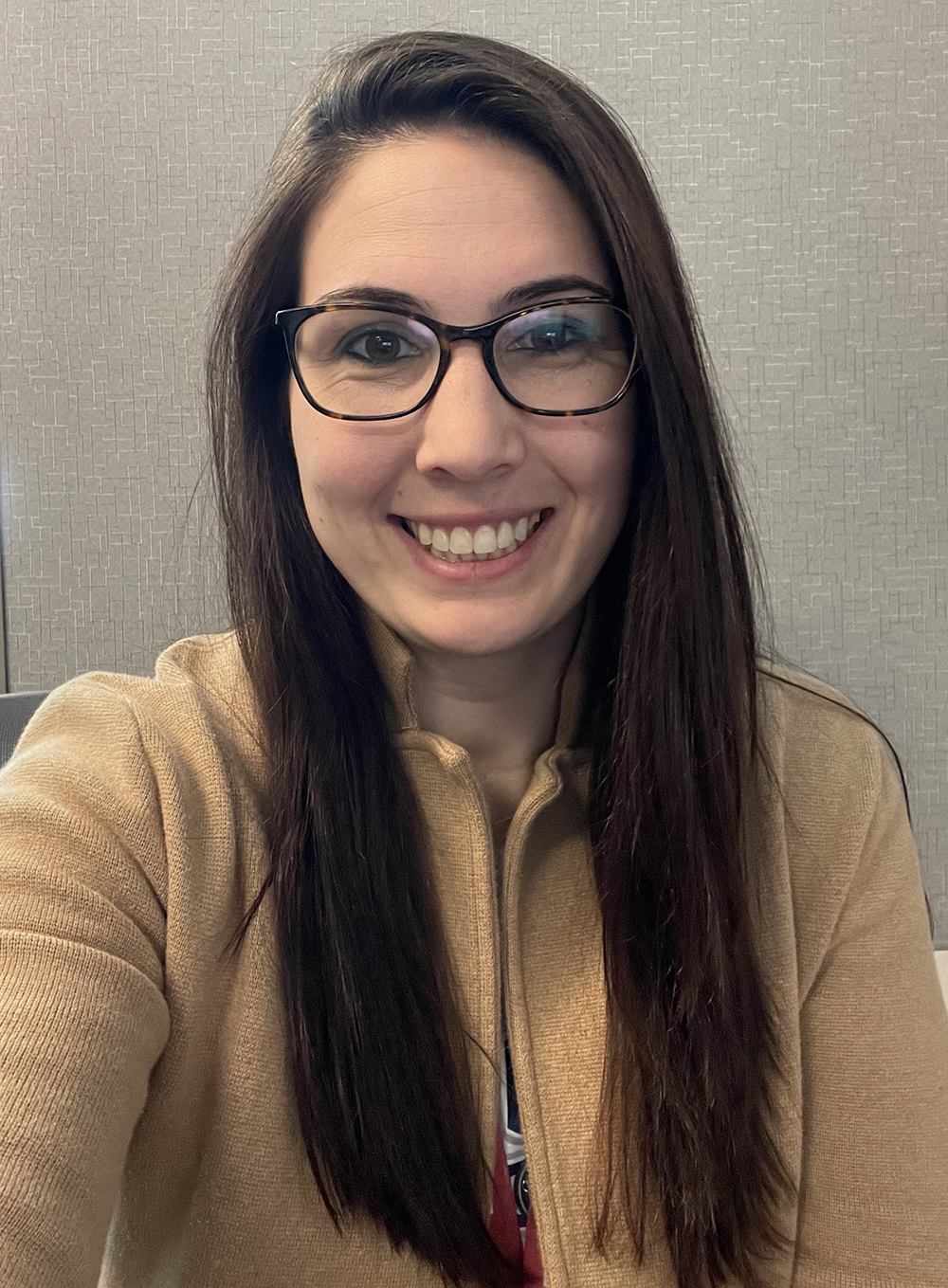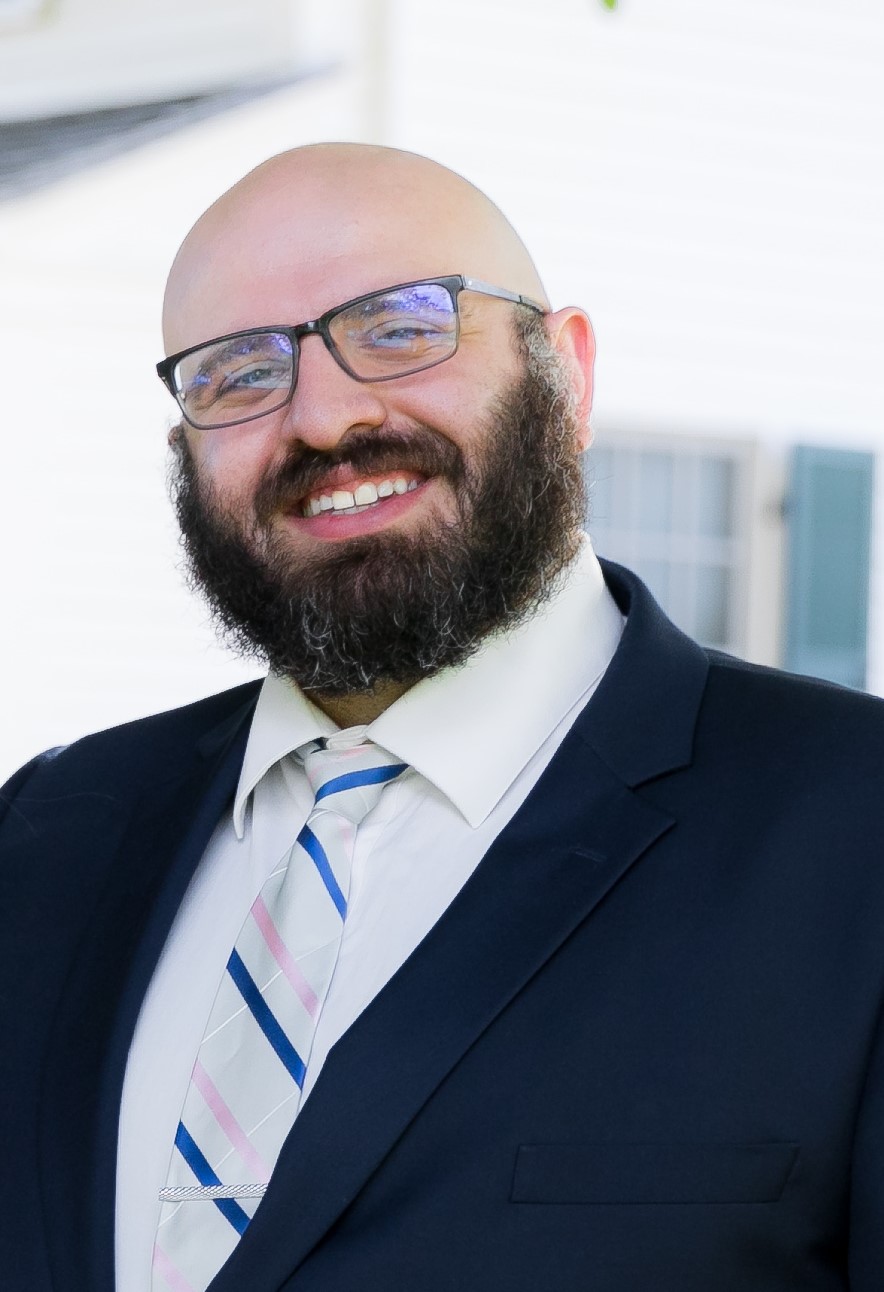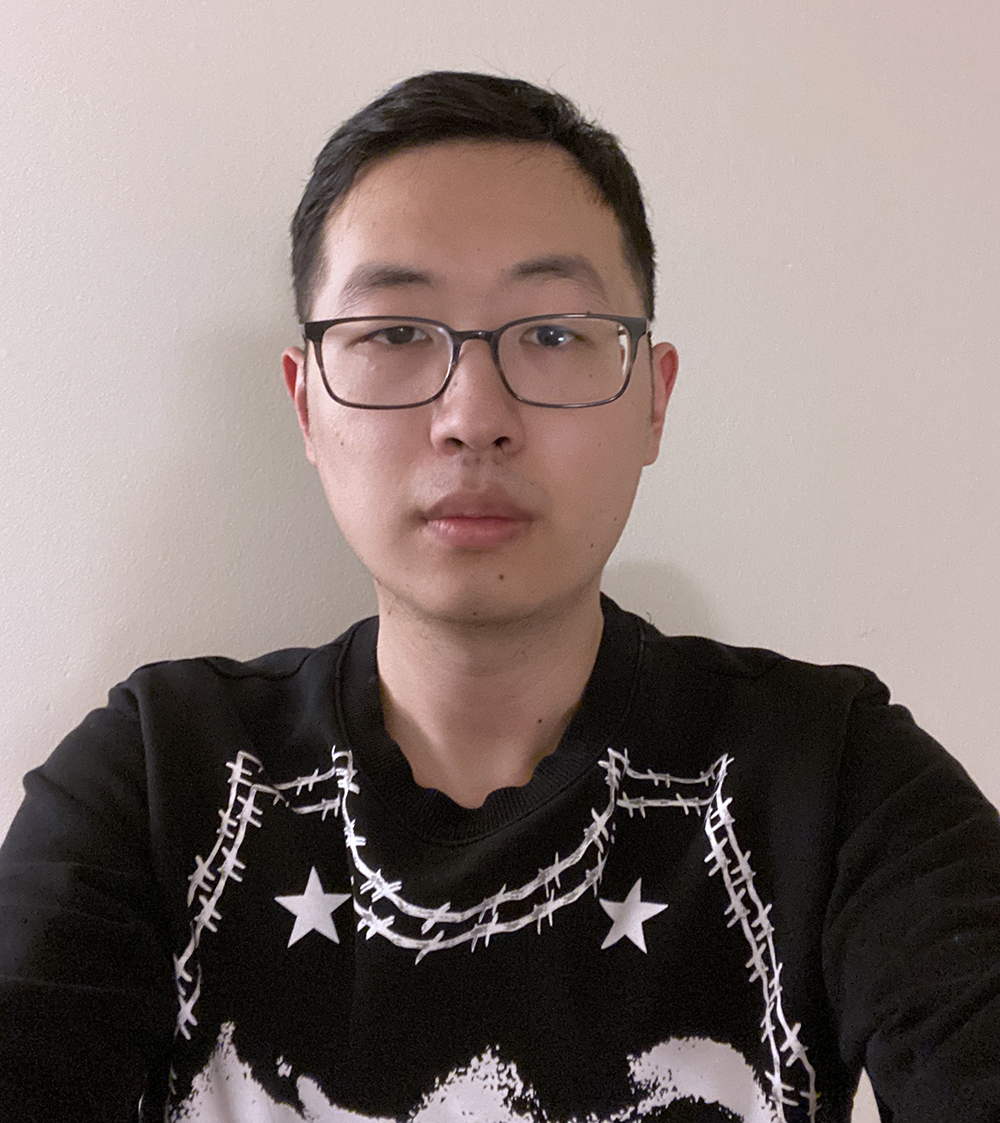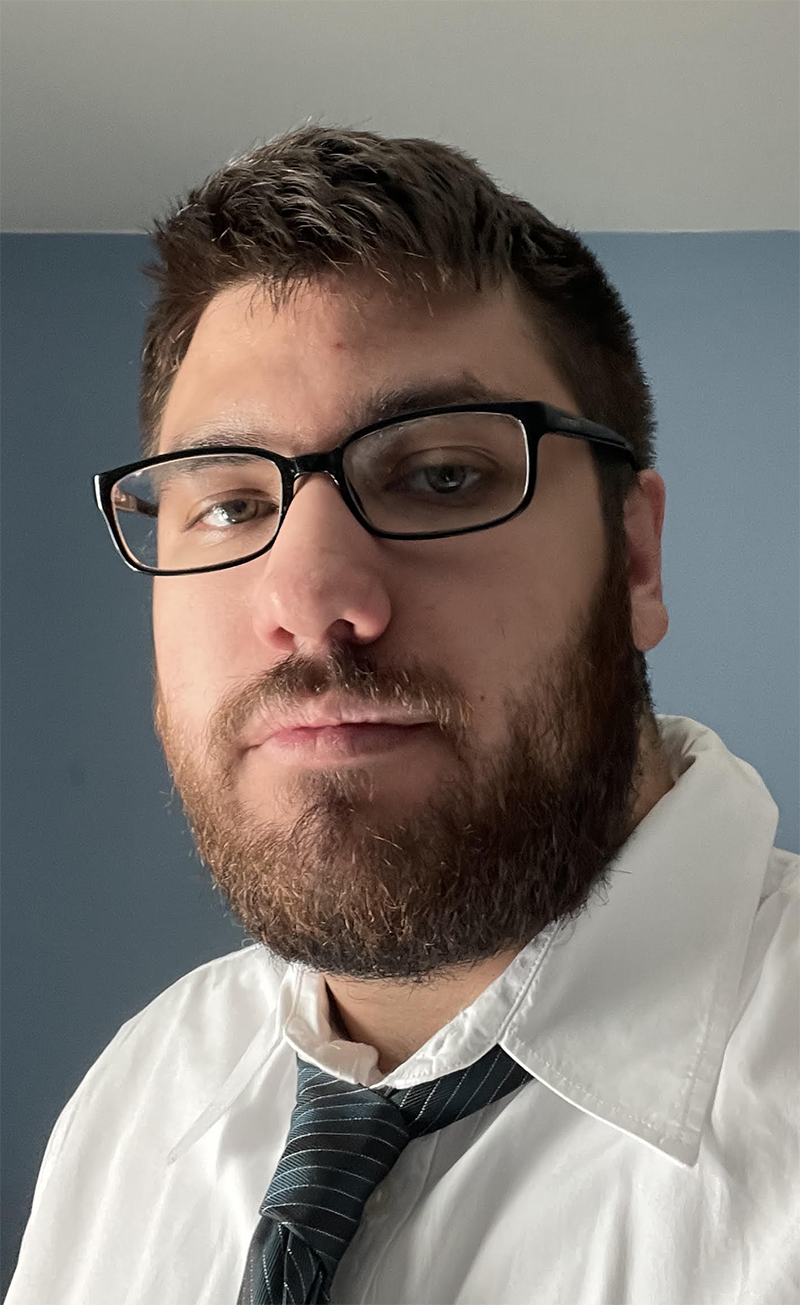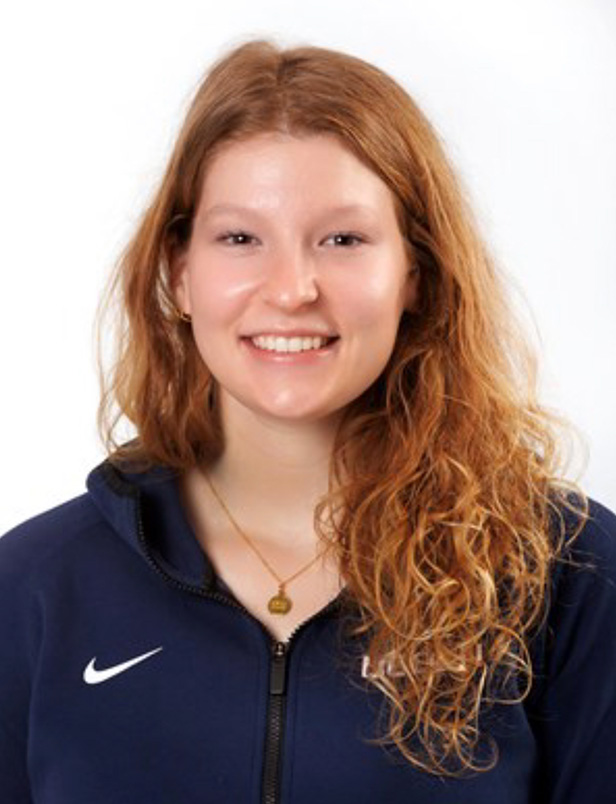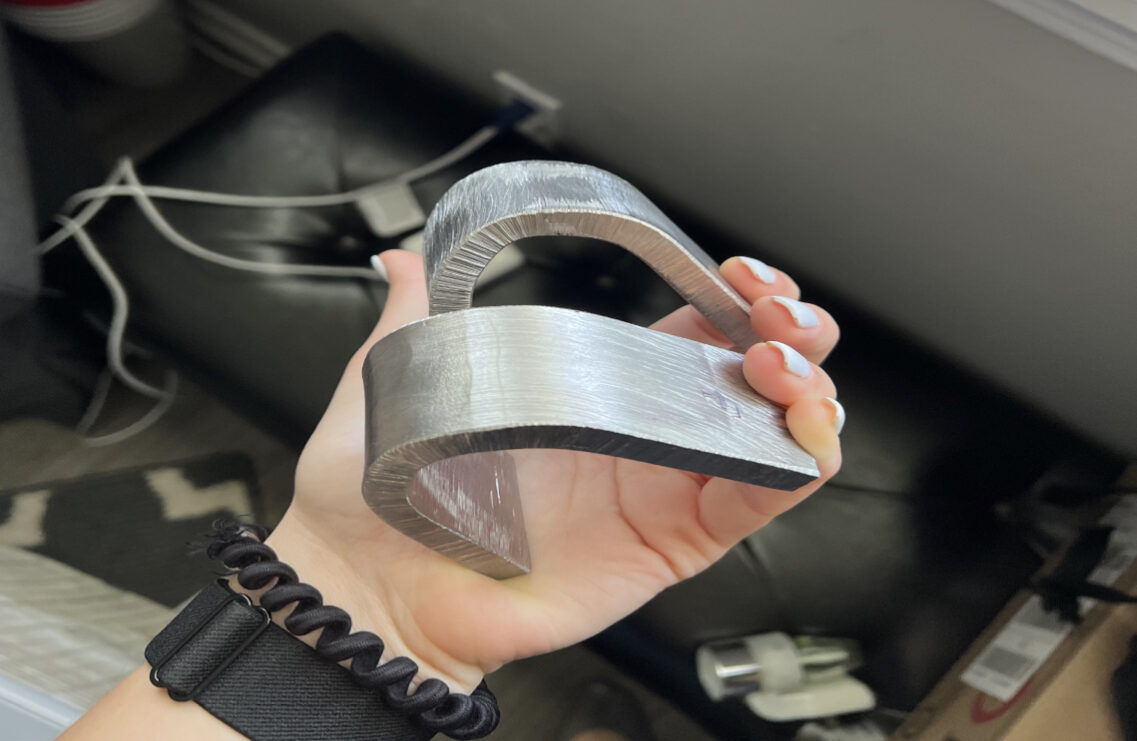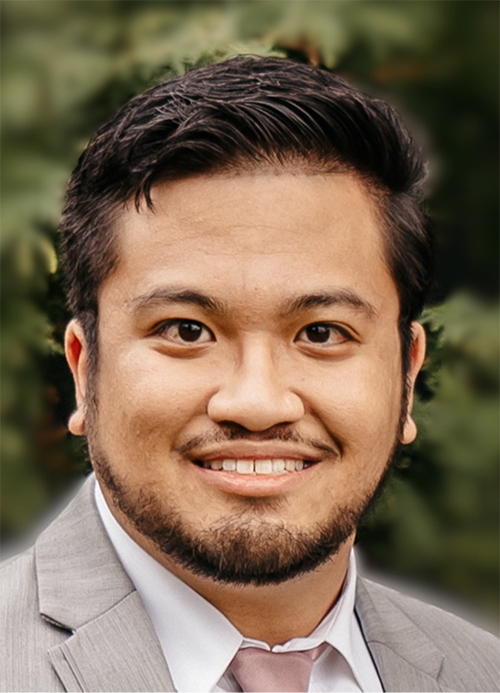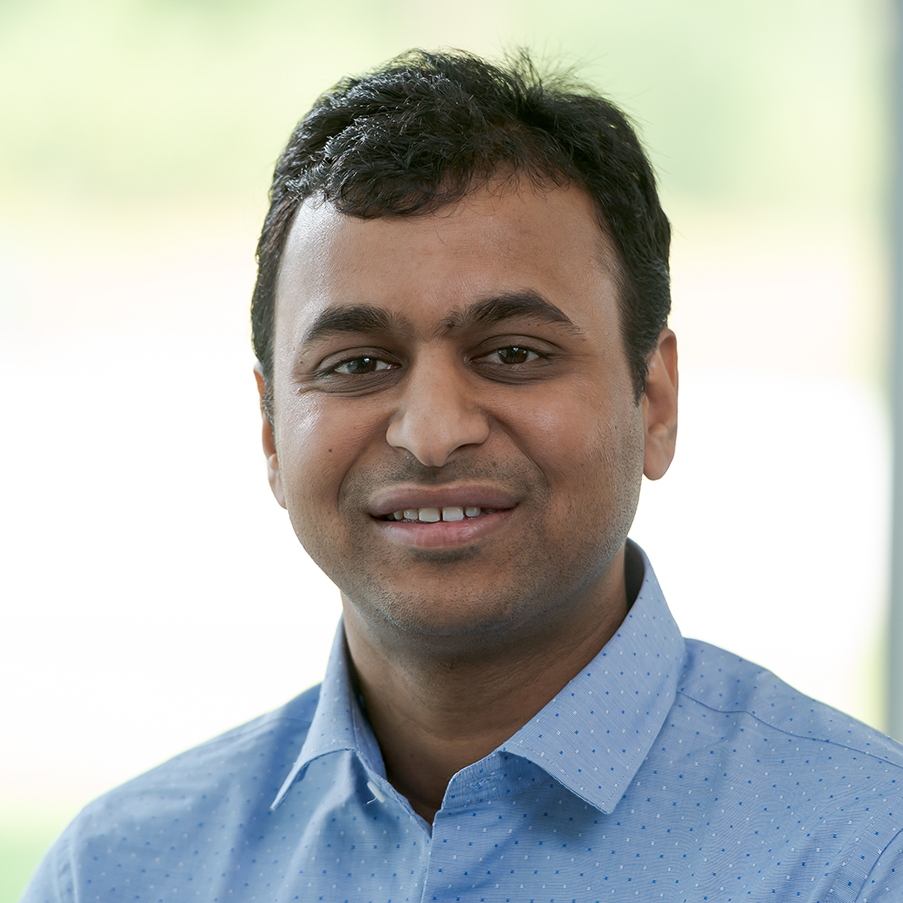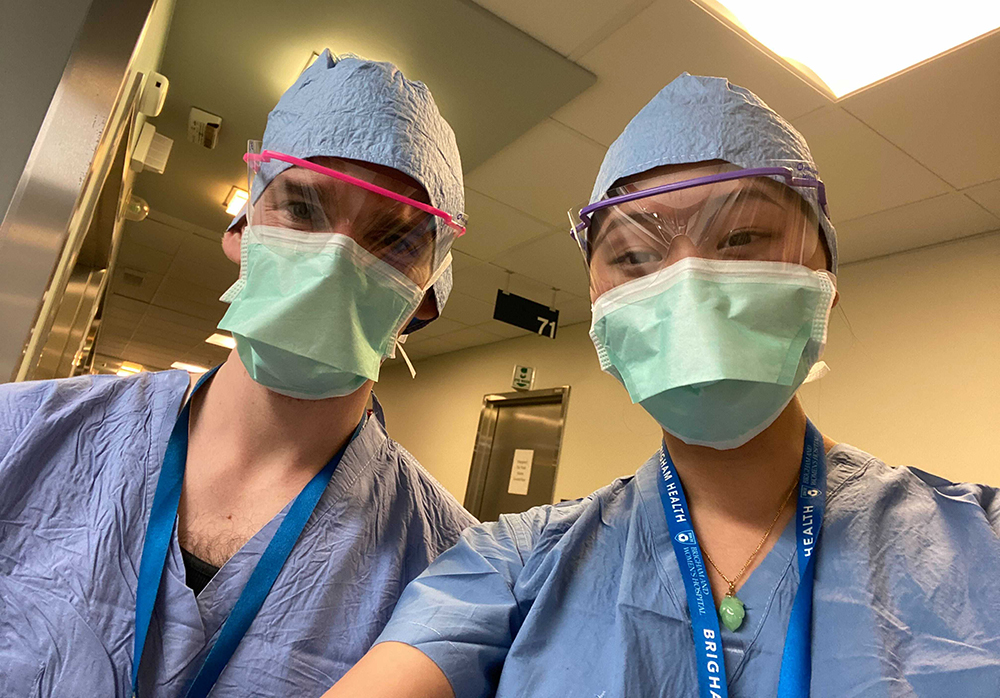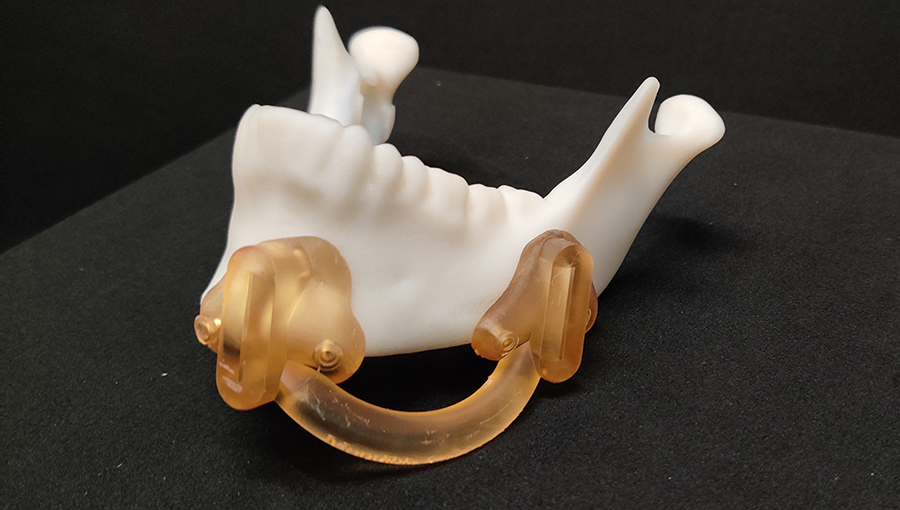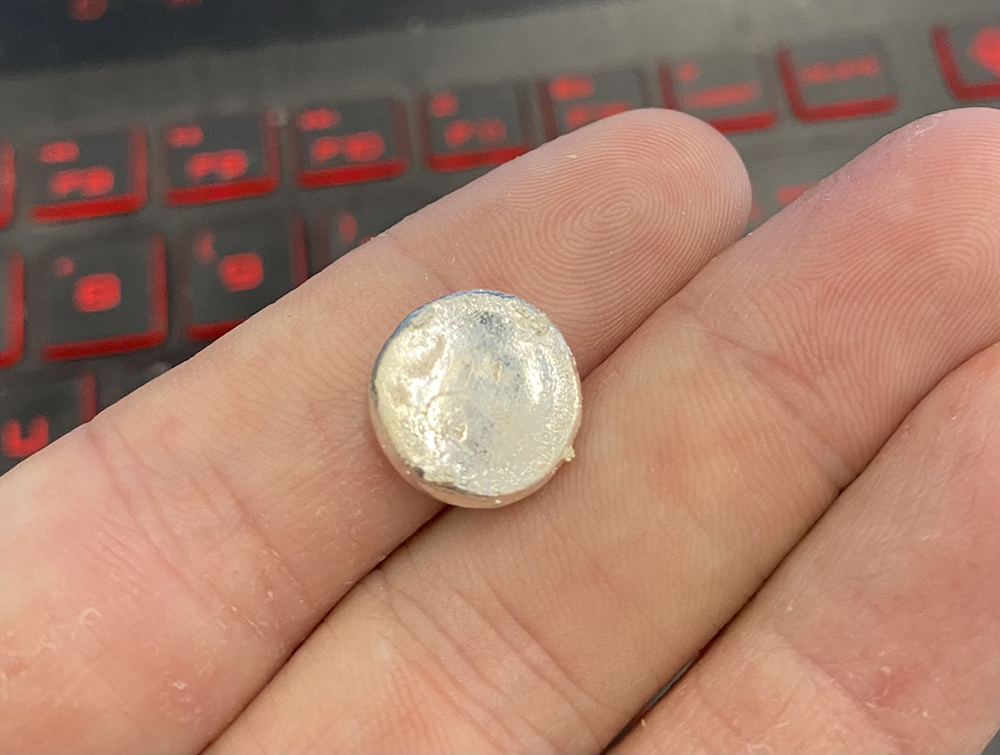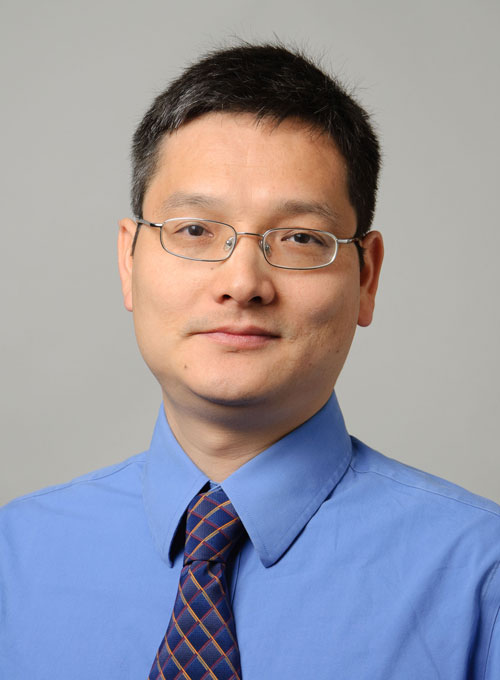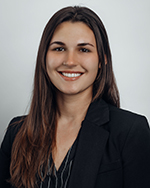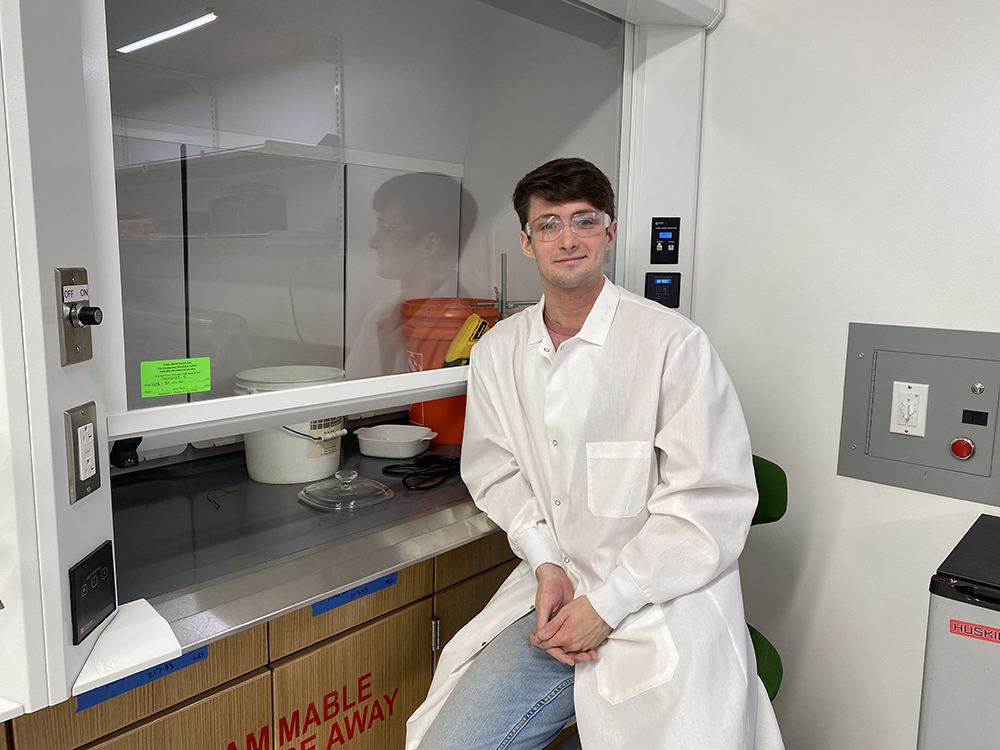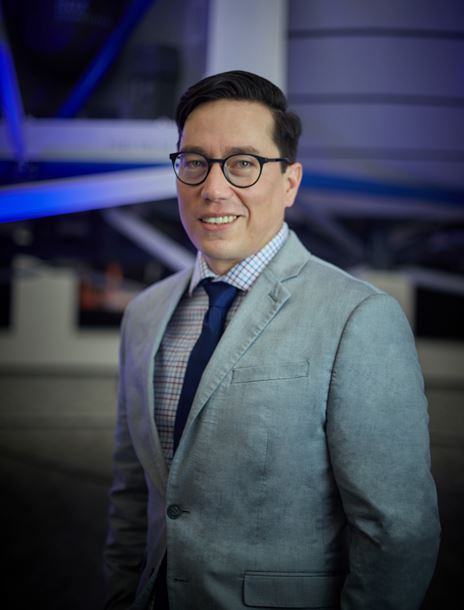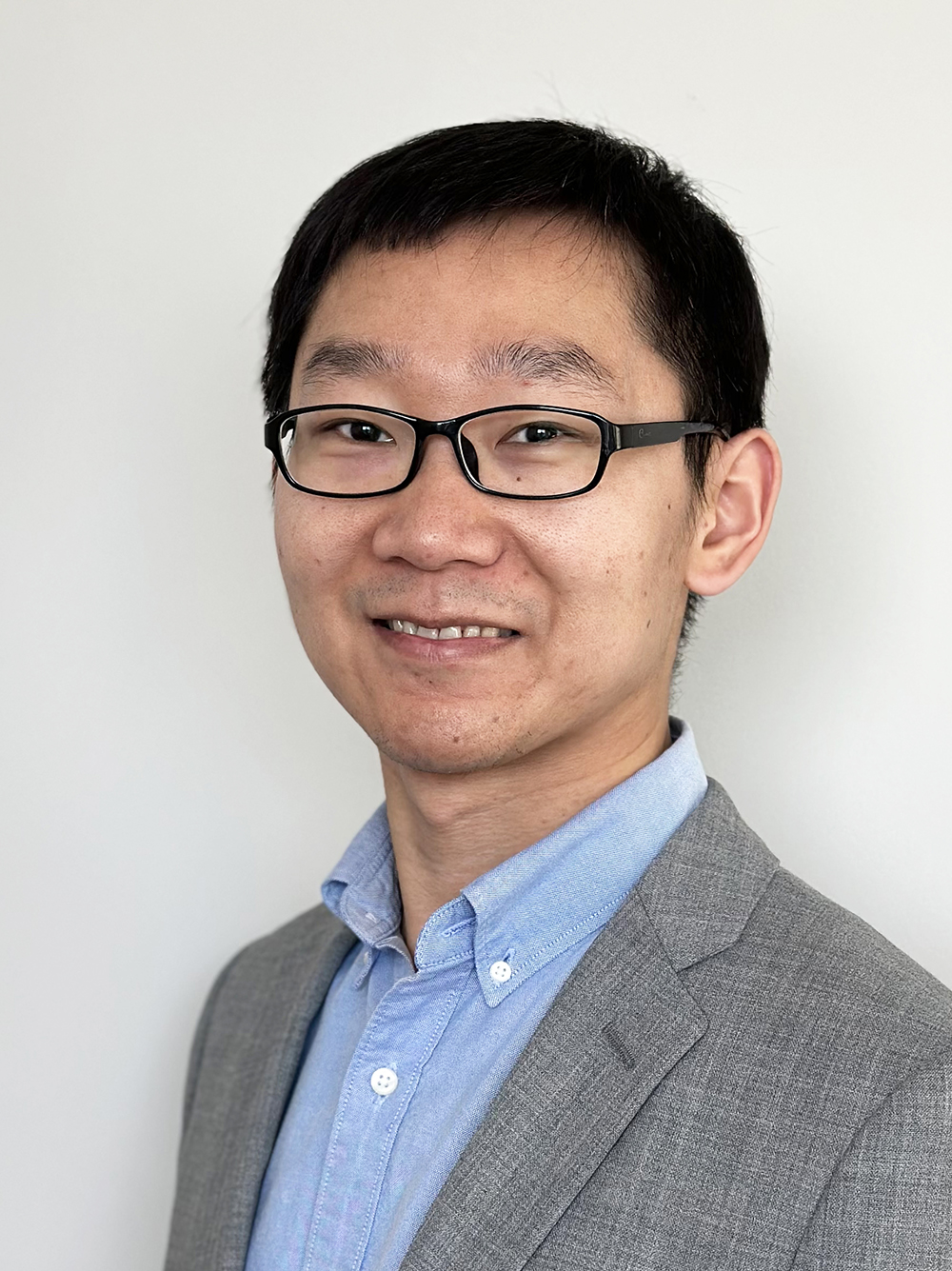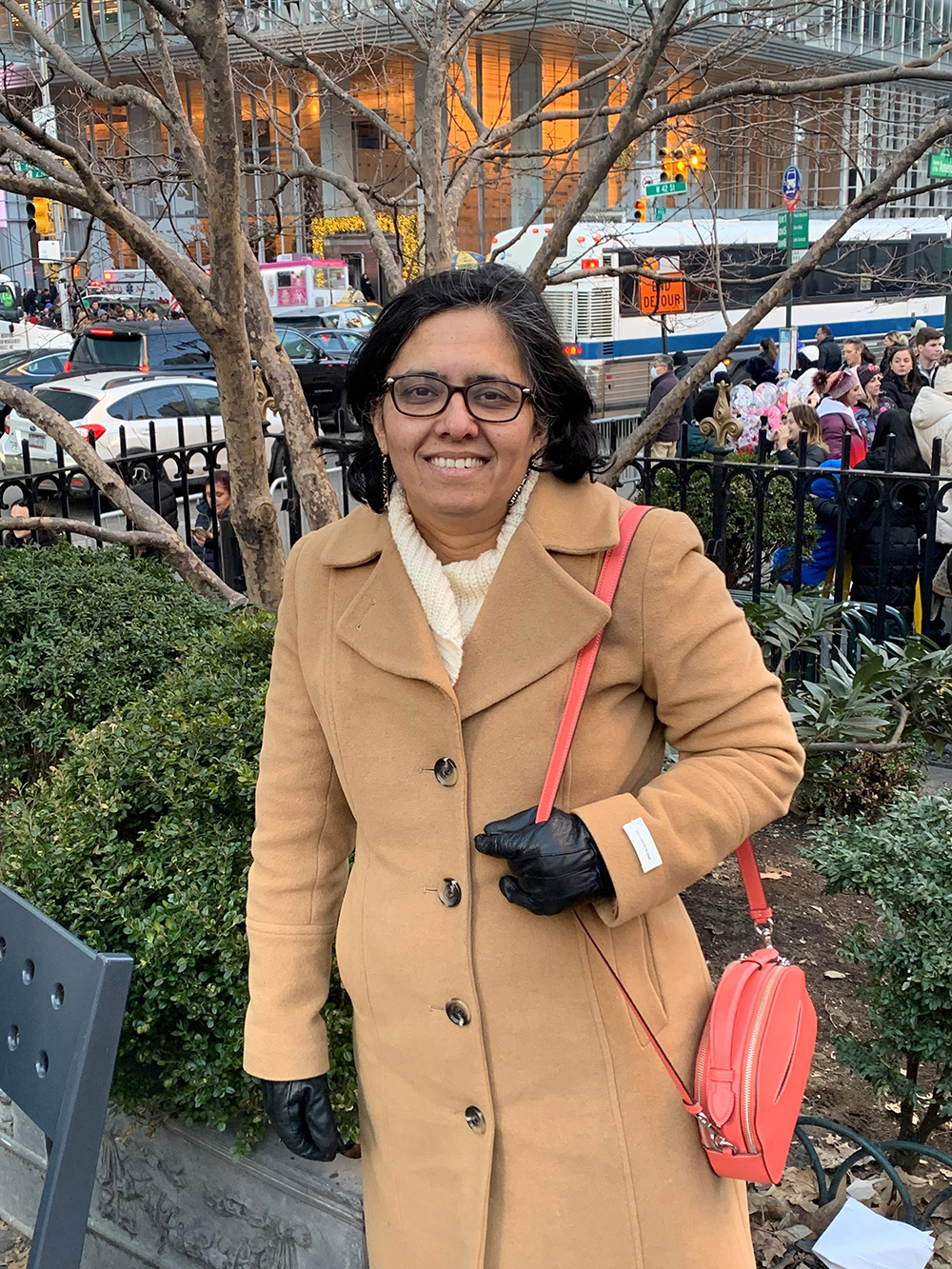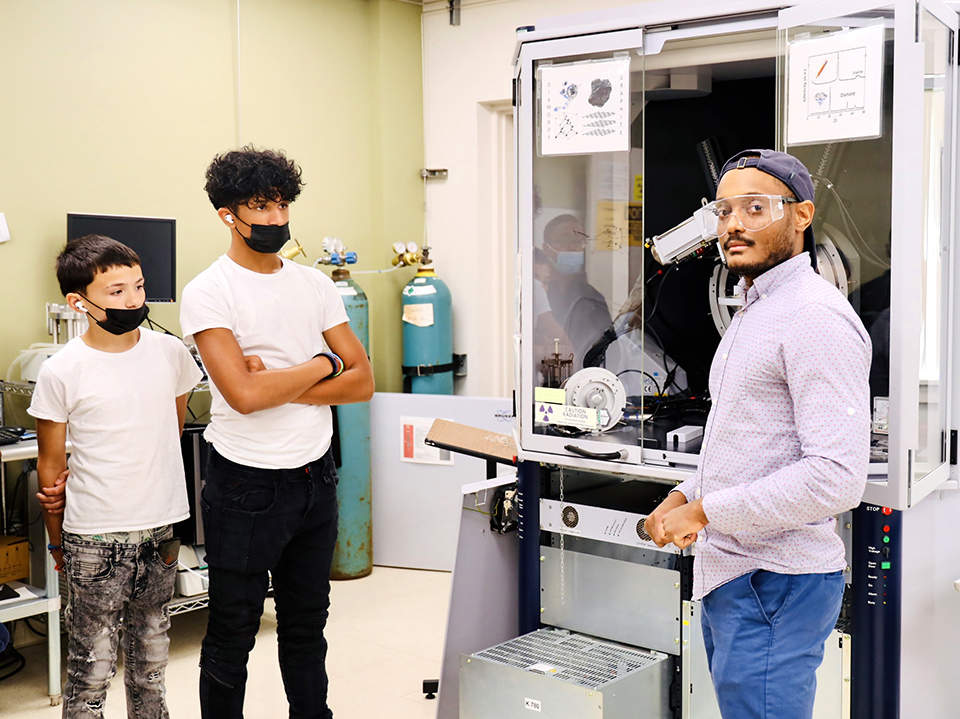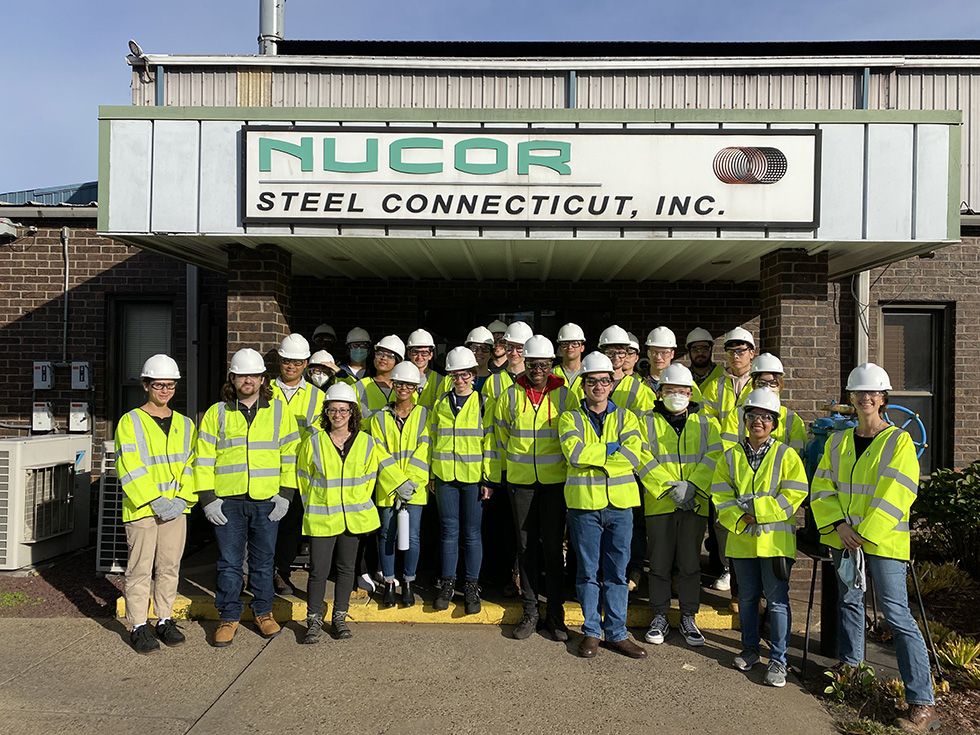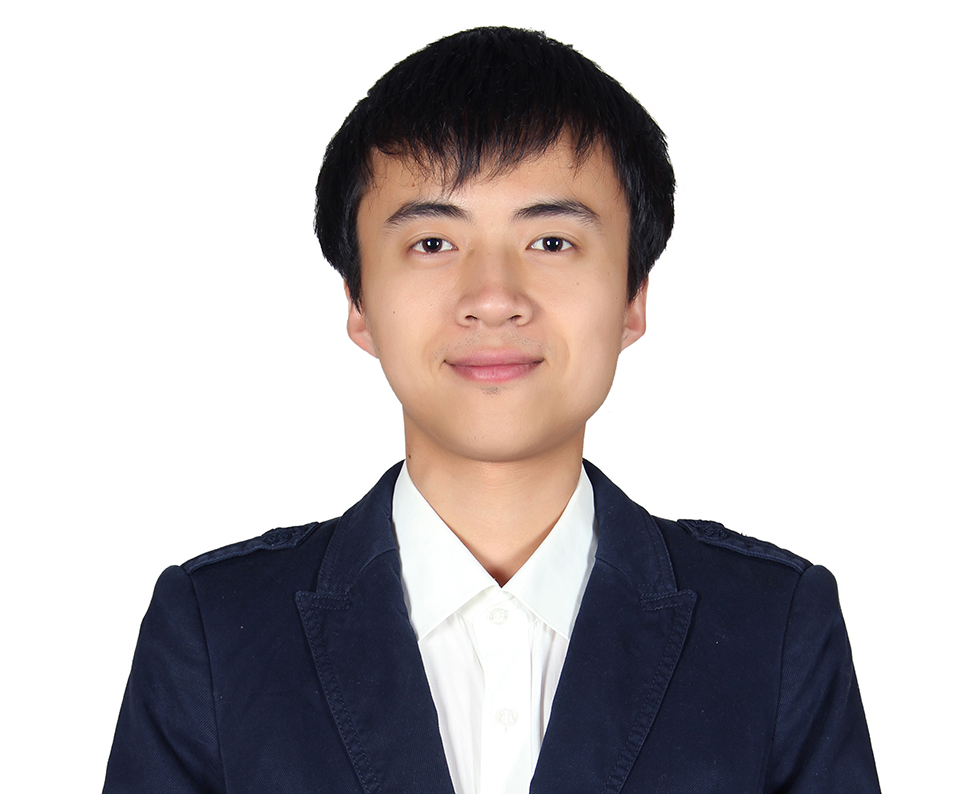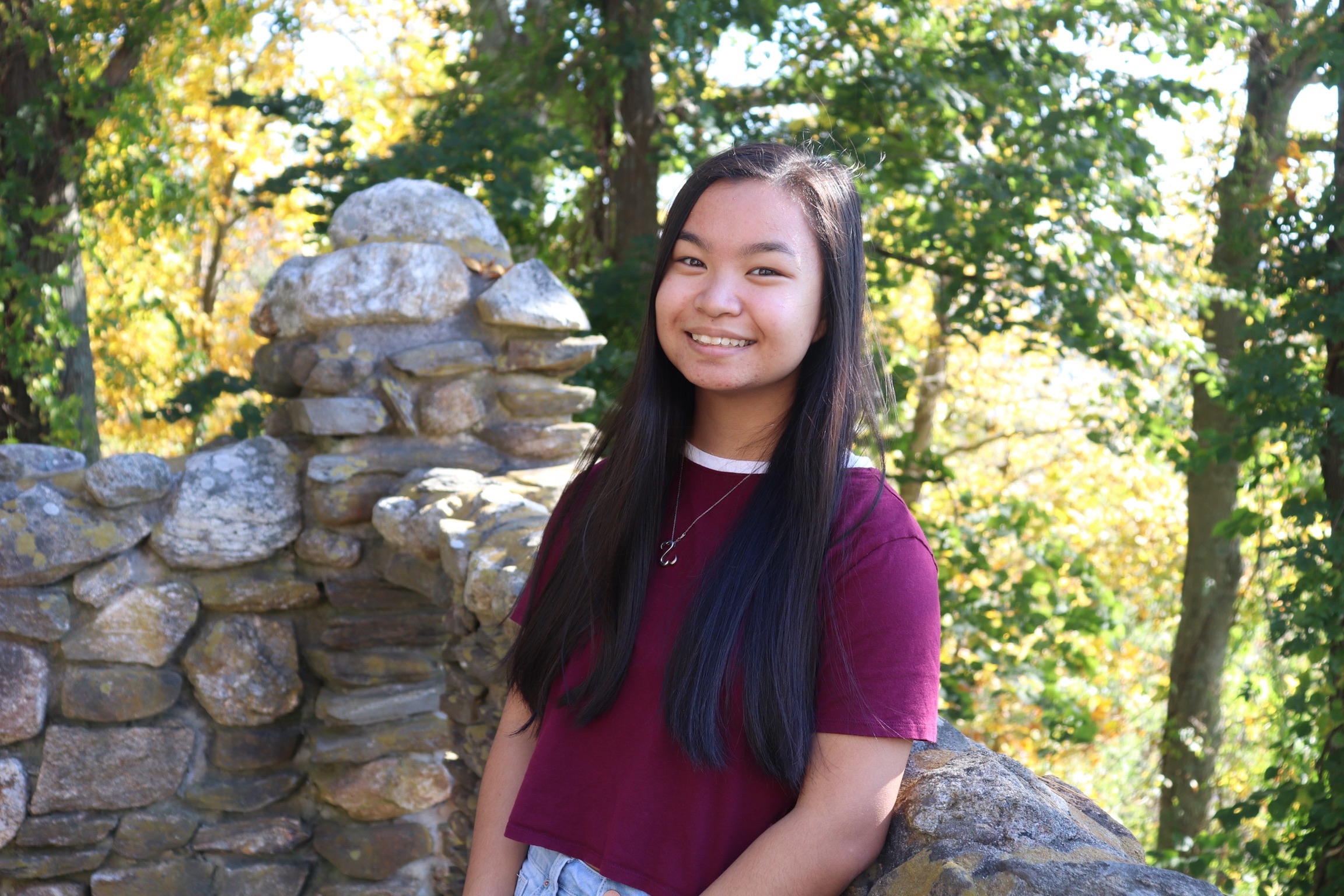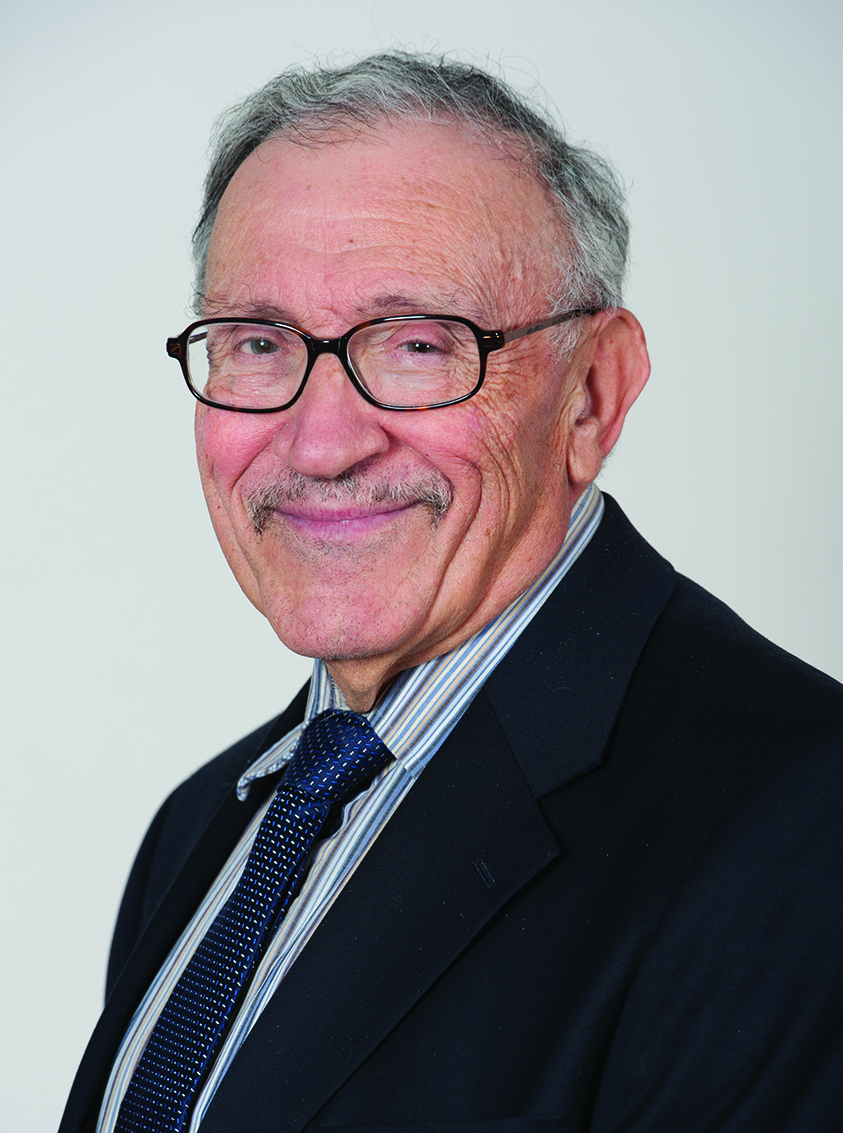Author: Bridging Technology, Business, and Leadership
By Razil Fernandes, Written Communications Specialist
Motivated by a desire to learn and grow, MSE alumna Amanda Agui chose to move away from her home in Ohio to take advantage of the opportunities at the University of Connecticut. Drawn to UConn’s strong academic reputation and highly regarded STEM programs, she joined the Honors College and STEM Scholars program with the support of merit scholarships.
During her undergraduate years, attending the 2019 MS&T Conference in Portland, Oregon, stood out as a significant experience. She joined her peers from the UConn Material Advantage chapter to participate in challenges that tested their engineering skills. Her team’s entry in the Geodesic Dome Design Competition provided an opportunity to present their concept to industry professionals, offering valuable insight into real-world problem-solving. The team earned the “Best in Destruction” award and placed second overall, which was a rewarding outcome of their collaboration and effort. Reflecting on the experience, she noted, “It was a space where I could grow, ask questions, and work with my teammates to design and deliver solutions together.”
Academic challenges played an important role in her time at UConn. Retaking the challenging MSE 3002 course with Professor Brody was a significant experience. Reflecting on the course, she admitted, “I performed poorly during my first attempt at this class, to the point that I needed to retake it.” Determined to succeed, she approached the course differently the second time, focusing on improving her study habits, attending office hours, and seeking additional support. Her efforts paid off when she scored 100% on her first exam the second time around. “It is my personal reminder that I am able to overcome significant challenges,” she said.
Today, she applies those same principles as a Technical Product Owner (TPO) at Synchrony, a financial services company. In her role, she leads the development of cloud-based solutions that deliver real-time data to clients and internal stakeholders. Her work involves collaborating with engineering, credit, and portfolio management teams to design and prioritize features that align with business objectives. Managing her team’s backlog and translating complex problems for cross-functional teams are just some of the ways she combines her technical expertise with a strategic business mindset.
Her interest in the intersection of business and technology began during her undergraduate years, where she served as president of UConn’s International Business Association. Engaging with companies like Henkel, Travelers, and Pratt & Whitney solidified her interest for identifying how technology can drive business innovation. This blend of technical and strategic skills keeps her engaged in the ever-evolving digital landscape of retail and finance, and it motivates her to continue contributing to Synchrony’s cloud transformation goals.
Upskilling has been an important part of her professional development. Earning certifications in agile project management, AWS cloud technologies, and change management has broadened her skill set and sparked her interest in organizational development and adult learning. These experiences have motivated her to pursue a graduate degree in Organizational Leadership and Development, where she plans to build on her knowledge to design effective learning strategies, lead change, and foster continuous growth in the workplace.
Outside of her job, Amanda is heavily involved in Synchrony’s Diversity Networks and Employee Resource Groups. These groups seek to address challenges and opportunities and allow anyone to join in solidarity. She holds leadership positions in both the Asian Professional Engagement Network+ (APEN+) and the Hispanic Network (H+), but is also a member of the Women’s Network (WN+), EnAbled + Network (EN+) and Black Experiences+ (BE+). Amanda encourages students to connect with companies like hers which support such initiatives.
Her particular advice to current materials science and engineering students is simple: “You know yourself best. Identify disciplines that excite you and find the intersection where you can make an impact. From there, get involved in organizations that give you face-time with industry professionals, UConn alumni, or faculty members to help roadmap your early career plan.”
Author: Baris Yavas: Advancing Materials Science at UConn
Baris Yavas, Ph.D., did not always know he wanted to be a materials scientist. “Honestly, I knew little about materials science when I was preparing for university entrance exams in high school. I was initially focused on more traditional engineering fields,” he shares. It was his family’s encouragement that guided him toward the field, and as he began to explore its significance across all areas of engineering, he quickly realized its immense potential. This realization drove him to pursue advanced degrees, ultimately earning a Ph.D. in metallurgical and materials engineering (MME) from Istanbul Technical University (ITU) in 2020. His doctoral work focused on developing novel metal-matrix composites using spark plasma sintering, setting the stage for his future research.
A pivotal moment in his career came when he joined UConn in August 2020 to work jointly with MSE Professors Pamir Alpay and Mark Aindow in the Department of Materials Science and Engineering (MSE). Their shared vision for exploring Al-Cu-Fe-based systems for additive manufacturing opened doors to a transformative postdoctoral experience. “This collaboration has been incredibly fruitful, resulting in four journal publications and five conference presentations,” he shares.
Beyond the measurable outcomes, the mentorship from Professors Alpay and Aindow has profoundly shaped his scientific approach and career. “Both Dr. Alpay and Dr. Aindow are role models for me as scientists and advisors,” he reflects. “Every day, I learn valuable scientific and professional insights from their approaches to various challenges.”
Since August 2023, Yavas has been working as a research scientist at MSE, continuing to push the boundaries of materials science through innovative research. His work often involves advanced electron microscopy to investigate materials. “These tools allow us to investigate material details at incredibly high magnifications and perform detailed analysis, enabling us to understand how changes at the micro or even atomic level can influence material properties,” he explains. The meticulous study of materials’ behavior under extreme conditions remains one of the most rewarding aspects of his work.
His research aligns with the cutting-edge needs of the aerospace industry. Projects funded by the Air Force Research Laboratory, Pratt & Whitney, and Collins Aerospace have allowed him to explore next-generation manufacturing solutions and investigate the failure mechanisms of titanium alloys used in jet engines. His early work at UConn, specifically on quasicrystal-reinforced aluminum matrix composites, has significantly contributed to advancements in additive manufacturing techniques.
The excitement in his field is palpable, particularly with advancements in additive manufacturing and quantum materials. “Understanding and explaining the underlying mechanisms in additive manufacturing often requires detailed microscopic analysis,” he says. While quantum materials are not his primary focus, he is intrigued by their potential and continues to explore ways his expertise might contribute to this emerging field as well.
In addition to his research, Yavas is actively engaged with the broader materials science community. As vice-chair of the Connecticut chapter of ASM International, he organizes events and fosters connections between students, faculty, and industry leaders. He also finds great fulfillment in mentoring students. “Teaching and advising students is deeply rewarding; their fresh perspectives and creative problem-solving approaches keep me motivated” he reflects.
His contributions to the field have earned him recognition through several prestigious awards, including the Most Successful Doctoral Thesis Award from Istanbul Technical University and the Honorary Award for outstanding contributions in materials science. With 26 publications to his name, he encourages students to stay curious, engaged, and committed to solving engineering challenges.
Looking ahead, he envisions a future where materials science drives innovation in sustainability, smart materials, and advanced manufacturing. “Materials science will continue to be at the forefront of technological innovation, solving global challenges and enabling next-generation technologies,” he predicts.
Author: Science, Innovation, and Impact: Ken’s Mission at Pfizer
By Razil Fernandes, Written Communications Specialist
Kenneth S. Ogueri, a 2020 graduate of UConn’s Ph.D. program in materials science and engineering (MSE), is now a Principal Scientist at Pfizer where he focuses on drug design. He still remembers the rush he felt upon publishing his first lead-authored paper during his graduate studies. By the time he completed his Ph.D., Ken had authored an astounding 12 first-authored papers on advanced biomaterials and contributed to a total of 20 publications. He attributes this success to relentless effort, a supportive academic environment, and the skills he honed through active participation in workshops.
Ken chose UConn for his doctoral studies because of the opportunity to work under Dr. Cato Laurencin, who is a renowned expert in biomaterials, regenerative engineering, and drug delivery. UConn’s commitment to fostering a well-rounded education and exceptional research training also influenced his decision. The driving factor was the positive anecdotes from UConn alumni he worked with during a prior internship at the materials engineering company Saint-Gobain.
The MSE Ph.D. program formed the foundation for Ken’s research and academic growth. He says that classes like ‘Thermodynamics of Materials’, Transport Phenomenon in Materials Science, and ‘Polymer Properties’ provided him with an in-depth understanding of material behavior. He adds, “my advisor, Dr. Laurencin, played a key role. His guidance, encouragement and unwavering belief in my potential empowered me to excel, while his constructive criticism refined my critical thinking and problem-solving abilities.”
Beyond Dr. Laurencin’s mentorship, two professors fortified Ken’s materials science foundation: Professors George A. Rossetti Jr., and Avinash M. Dongare. “Professor Rossetti illuminated complex transport mechanisms, clarifying material behavior. Professor Dongare revealed material responses to external forces, solidifying my grasp of structural integrity.” His Ph.D. committee members, Dr. Lakshmi Nair and Dr. Yusuf Khan, both associate professors in the Department of Orthopedic Surgery at the UConn Health Center, also provided invaluable guidance throughout his studies.
Currently, Ken works as a principal scientist at Pfizer Inc. “What drew me to this career path, and what sustains my passion, is the convergence of science, innovation and impact.” Ken helps create patient-centric medicine by bringing research into the drug delivery market. His contributions may improve cancer patients’ access to innovative therapies. Ken is also co-leading formulation development for a groundbreaking weight-loss medicine that would reduce diabetes and cardiovascular disease and enhance quality of life.
In addition to a Ph.D., Ken holds an MBA from the Rice School of Business. This exploration of the intersection of science, technology, and business expanded his expertise on the commercial aspects of research. Through this interdisciplinary education, Ken learned to translate research into industry applications, and communicate complex topics to diverse stakeholders.
Fun fact: Ken has an identical twin brother who is also a Ph.D.-level scientist! “We have often been mistaken for each other, but our careers have taken distinct paths,” he shares. While Ken is pioneering drug design at Pfizer, his brother works with Kenvue, formerly part of Johnson & Johnson. On the home front, Ken finds joy and inspiration from his loving family, especially his 14-month-old son, Kevin, whose curiosity already hints at a budding scientist in the making. Balancing a fulfilling career with cherished moments spent with his wife, son, and extended family, Ken is reminded daily of the importance of both professional passion and personal connections.
Ken shares a message for MSE students. He says, “attend conferences and seminars, network with alumni and professionals, and engage in extracurriculars like research projects, internships, and co-op programs.”
Ken highly recommends students join the UConn Materials Research Society (MRS) student chapter as well. While the Secretary of MRS, he organized workshops and facilitated dialogues. “Establishing relationships with professionals opened doors for research positions, collaborations, and conferences.”
Author: UConn MSE Celebrates Legacy of Prior Department Head John Eric Morral
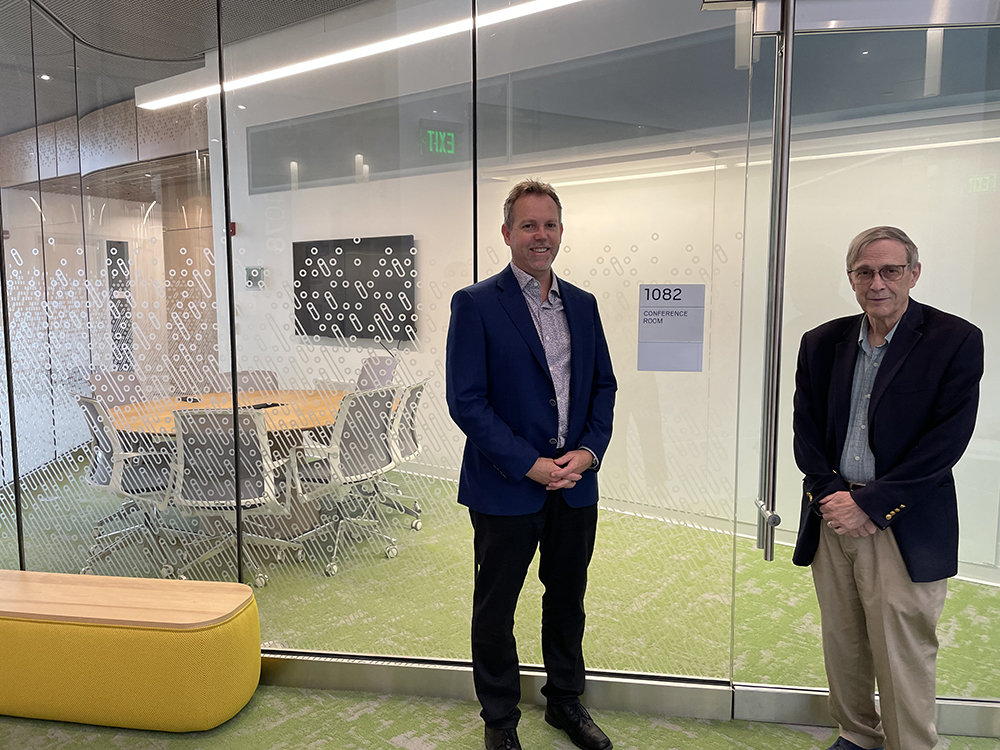
(Left to right) MSE department head Bryan Huey and IMS Director Steven Suib shown with the plaque honoring John Eric Morral.
A conference room in the amazing new Science1 facility is now named in honor of John Morral, prior department head and renowned expert in metallurgical thermodynamics. This is made possible by a generous gift from his wife, Dot Morral, and is helping our current students to succeed through funding for summer research, travel to conferences, and industry tours.
Although Professor Morral passed away in 2021, we will think of him often whenever we see his plaque in our UConn Institute of Materials Science.
According to Pamir Alpay, current Vice President for Research, Innovation, and Entrepreneurship, John was “an excellent researcher and great mentor.” He was also a fellow with ASM International since 1995, the editor for the Journal of Phase Diagrams and Diffusion for many years, and earned the Gibbs Phase Equilibria Award in 2017. Notably for UConn MSE, John was our department head when we shifted from a department of Metallurgy to a department of Materials Science and Engineering, with a broader focus spanning functional materials, energy materials, biomaterials, and more.
If you also wish to make a donation to support our students, faculty, and staff, there are many opportunities through the UConn Foundation which directly impact the MSE department.
Author: Forging New Paths in Laser-Metal Modeling
By Razil Fernandes, Written Communications Specialist
Luck and fate certainly played a role in Ching Chen’s educational trajectory. Ching says it is a coincidence that he worked on laser experiments during his master’s degree and is now modeling laser-metal interactions. Thankfully, UConn’s MSE graduate program has several faculty members who work on computational material modeling, the topic in which Ching wanted to specialize.
Ching earned his master’s degree in materials science and engineering from National Chiao Tung University in 2016. After working as a process engineer at TSMC in 2018, and then as a research assistant at National Chiao Tung University in 2019, Ching joined the Computational Materials and Mechanics Group (CMMG) as a graduate student (Ph.D. program) in the Department of Material Science and Engineering at UCONN in Fall 2019. He was offered a graduate assistantship during his first semester, which allowed him to engage directly with faculty as an international student. He selected Professor Dongare as his Ph.D advisor, joining his Group for Extreme Mechanics and Materials Science (GEMMS), where he explores the fundamental behavior of materials.
In the Dongare Research Group, Ching’s research focuses on modeling laser interactions with metallic materials ranging from atomic to micrometer scales. He says the most exciting aspect of GEMMS is: “we try to develop new computational tools to expand material modeling capabilities.” One specific aspect of this work is atomic-scale modeling, especially simulating how atoms move under different conditions, such as to understand how a metal melts in the presence of a laser.
Laser technology can be readily applied to several topics, from microstructures to manufacturing. His research offers insights that can complement experimental results, since computational models allow for predicting ion laser-induced phenomena ranging from atomic to experimental scales.
Collaborating with partners from Johns Hopkins University, who specialize in laser shock investigations, provided experimental perspectives to refine his simulations. Thus far, Ching is the primary author of two published papers and has received two awards from UConn MSE: the Teaching Excellence Award and the Doctoral Research Dissertation Award. The latter focused on how laser-driven flyer velocities depend on laser fluence.
Ching states, “The MSE graduate program is a fulfilling and intellectually stimulating experience.” He feels it has provided skills beyond just knowledge, such as effectively collaborating and presenting complex ideas. He plans to enter a career as a computational materials scientist and feels well-prepared for success in this field. “UConn MSE builds an environment of collaboration and open discussion in classes and labs. The faculty are approachable, and the diverse research groups encourage interdisciplinary collaboration.”
Beyond research, Ching has given back to MSE through his teaching experience. He worked as graduate research assistant for a course called Classical Atomic Scale Simulations in Materials Science and Engineering. “Assisting with this course, which combined theory, coding, and hands-on projects, was both challenging and rewarding. I enjoyed working with the students and learned how to explain complex theories and simulations to those unfamiliar with the field.”
Ching encourages MSE students to fully engage with their research and coursework while building connections within the MSE community. For instance, the Materials Research Society (MRS) Chapter at UConn brings together graduate students and faculty through various events including panel discussions. Many UConn MRS members also attend the Fall and Spring MRS conferences, to present their work and network with industry professionals in addition to fun social gatherings such as game nights.
Author: Professor Seok-Woo Lee’s Journey from Alchemy Dreams to Materials Science
By Razil Fernandes, Written Communications Specialist
From a young age, Associate Professor Seok-Woo Lee was drawn to stories of alchemists transforming elements into gold. This childhood interest translated into what is now a lifelong journey revolving around materials science. Today, Professor Lee follows his quest to push the boundaries of materials as he explores the impact materials science innovations can have on our lives.
When he joined UConn in 2014, he was drawn by the collaborative spirit he felt during his interview. He chose UConn over other universities, charmed by the warmth and camaraderie of faculty and students. As the MSE Director of Undergraduate Studies, he works to refine the curriculum and connects with high school students at outreach events to share the excitement of materials science.
Research is at the heart of Professor Lee’s work, and his latest project demonstrates just how impactful materials science can be. His team, along with collaborators at UMass-Amherst, UW-Madison, and Caltech, made a recent breakthrough published in Nature Communications entitled “Nanoporous amorphous carbon nanopillars with lightweight, ultrahigh strength, large fracture strain, and high damping capability.” His former PhD student, Zhongyuan Li, was the first author of this paper. The main conclusion from this work is that nanoporous amorphous carbon nanopillars demonstrate superior strength, are lightweight, and are simultaneously highly deformable due to uniquely self-assembled nanoscale pore structures. Surprisingly, the strength of these nanopillars is higher than most engineering materials with the same mass density (0.8~1.6g/cm3). Thus, they are “light, but still extraordinarily strong.” Such a material could have major impacts in terms of reducing the weight of engineering systems. His advice for students interested in pursuing materials science and engineering is to consider the impacts and importance of such a field: “Developing lightweight high-strength materials is crucial in many aspects. Cars and airplanes made from such material can fly further and require less fuel, saving money and resources. This goes hand in hand with the fact that high-strength materials last longer which saves raw materials, money, and energy, ultimately preserving the environment.” He emphasizes, “I hope that a student knows that making lightweight high-strength materials is not just simply making something unbreakable but one of the wonderful ways to improve our society.”
Another major focus for Professor Lee over the past seven years has been studying the mechanical properties of ThCr₂Si₂-structured intermetallic compounds. “These materials exhibit super-elasticity through a mechanism that makes and breaks chemical bonds,” he explains. This super-elasticity opens up fascinating materials research areas related to phase transformation, magnetism, superconductivity, elastocaloric cooling, and mechanical damping. Professor Lee describes this research as one of the most enjoyable aspects of his career, particularly because of the collaboration it entails. He works closely with UConn’s Professor Mark Aindow and several esteemed colleagues outside of UConn, such as Professor Paul Canfield from Iowa State University in materials synthesis, and Professors Roser Valentí from Goethe University in Germany and Christopher Weinberger from Colorado State University who each specialize in computer simulations. This ongoing work highlights the collaborative spirit of his research and his dedication to exploring the structural potential of materials—a passion that continues to drive his innovations and contributions to the field.
Professor Lee received his Ph.D. from Stanford University in 2011 and has been at UConn for the past 10 years. After completing 4 years of MSE undergraduate studies and a 2-year MSE master’s program in South Korea, Professor Lee traveled to the United States to pursue further studies. Now, he has 63 scientific articles published on topics related to alloy synthesis and mechanical characterization.
Collaboration is clearly a key to his success. Working closely with Professor Mark Aindow’s group on electron microscopy, they examine how the atomic structure of materials affects their mechanical properties. Additionally, he collaborates with Professor Avinash Dongare’s group, who run atomic simulations to better understand material behavior under various conditions. Dr. Lee says, “this work is deeply rewarding, especially as it allows me to guide and be inspired by the students who contribute fresh perspectives and ideas to the research.”
Outside of research, Professor Lee is the MSE director of undergraduate studies. In this role, he answers questions from about UConn’s undergraduate program, helps to improve the MSE curriculum, and is involved with undergraduate student recruiting. In fact, he is so committed to informing high school students about the importance of materials engineering that he recently published a book entitled “Make Materials that Change the World! Materials Science’“his book was written to introduce the fundamental ideas of materials science, and its important role in the development of modern technologies to high school students.
Mentorship is as important to Professor Lee as innovation. He holds several awards such as the MSE Teaching Excellence of the Year from UConn in 2018 and 2017, as well as the Mentorship Excellence Award in 2019. His dedication to his students was recognized with the latter award when one of his undergraduate students, Hetal Patel, nominated him—a surprise honor that he considers his proudest accomplishment. Seok-Woo says, “Watching students grow into skilled scientists is one of the most gratifying aspects of his role at UConn.”
Looking ahead, Professor Lee envisions an exciting future for innovative structural materials. He believes that as techniques like nanoscale 3D printing and self-assembly advance, scientists will be able to create high-strength, lightweight nano-structured materials at larger scales.
Author: Soft Robotics Researcher Yi Li’s Journey from Ph.D., to Postdoc, to Professor
By Thatcher Slocum, Written Communications Specialist
Yi Li, a postdoc in Associate Professor Xueju “Sophie” Wang’s laboratory , chose to study materials science and engineering to explore its wide range of real-world applications across various industries. This broad interest is reflected in the diverse research he has performed during his extensive journey in the field.
Yi began his studies in materials science at the University of Science and Technology Beijing, where he obtained his bachelor’s and master’s degrees studying the mechanics of deformation of steel at high speeds for automotive applications. He began his Ph.D. studies in Professor Wang’s lab at the University of Missouri in 2019, and followed her to UConn when she was hired as an assistant professor in 2020. In Wang’s lab, he studies polymer-based soft robotics, which are flexible and can operate in environments where traditional, rigid robots might fail. His research specifically focuses on how soft robots can be used underwater to collect data such as water pressure, temperature, salinity, and pH for environmental monitoring and site identification for commercial projects.
Despite studying vastly different topics thus far, Yi has achieved remarkable success during his doctoral and postdoctoral studies. While pursuing his Ph.D., he published eight first-author papers on soft robotics in high-impact journals such as Matter and Advanced Functional Materials. In recognition of his thesis, he was awarded the MSE Department’s Doctoral Dissertation Award after completing his Ph.D. in 2023. His postdoctoral year has been equally impressive, as he has already received offers for multiple tenure-track positions.
Yi’s main advice to current students and future researchers is to keep an open mind, seek feedback as often as possible, and continuously assess the efficiency and effectiveness of one’s research direction. Above all, he advises that students focus on developing a strong understanding of experimental design, which serves as a necessary foundation upon which field-specific technical skills can always be built.
Beyond his research-focused mindset, Yi attributes his success to the abundance of resources at UConn, which have been especially conducive to his cutting-edge research. Professor Wang’s lab has amazing equipment, and MSE students have ready access to cutting edge tools such as scanning electron microscopes (SEM), transmission electron microscopes (TEM), and others at the Innovation Partnership Building (IPB).
Collaboration and mentorship have also played an important role in Yi’s development as a researcher. He speaks highly of Professor Wang, crediting her with teaching him how to approach research projects holistically—from designing experiments to ensuring that ideas are both novel and viable. “She taught me a lot about how to think critically, design experiments, and develop innovative ideas,” Yi said. He also values the support of his lab mates, Zizheng Wang and Shao-Hao Lu, who provided guidance during his Ph.D., as well as his fellow postdocs, who have inspired and helped him to incorporate more advanced techniques and simulations into his work. Yi also appreciates UConn for its opportunities beyond academics and the lab: he enjoys hiking nearby with his friends and his dog Bluney, who, fitting with the UConn theme, is a husky!
Yi is poised to continue his success as he decides on the next step in his research career. While his current research focuses on underwater robots, he aspires to do pioneering work on biomedical soft robots that could be integrated more seamlessly into the human body, potentially revolutionizing surgeries and treatments for various medical conditions. Yi remarks that soft robotics is an exciting, innovative, and diverse field that is still in its infancy. When asked whether he sees himself as a future leader in soft robotics, he responded confidently: “Yeah. It’s a really cool position to be in.”
Author: UConn Engineering Student Selected for Prestigious Brookhaven Mini-Semester
By Razil Fernandes, Written Communications Specialist
Ingrid Magallanes, an undergraduate student in multi-disciplinary engineering who is currently working in MSE Professor Dupuy‘s lab, has been accepted to a prestigious Mini-Semester program at Brookhaven National Laboratory (BNL). This immersive Workforce Development & Science Education (WDTS) program offers STEM undergraduates a unique chance to work alongside world-renowned scientists and engineers, gaining insights into cutting-edge research and innovation in a national-laboratory setting.
At BNL, Ingrid will join around 40 other students in the program, with half on focused Engineering and Technical teams, and the other half as part of an Interdisciplinary Science track. All of the students will gain access to the world-class facilities at Brookhaven, hands-on research experience, and opportunities to network with top scientists and administrators. With housing and transportation supported by BNL, the week promises a transformative experience that will deepen Ingrid’s engagement with scientific research and open doors for her future career in STEM.
In Professor Dupuy’s lab, Ingrid primarily works on a project related to high entropy piezoelectric materials for use as biomaterials. She contributes to synthesis, processing, and sample preparation of the materials working closely with graduate student Alireza Jenabi. Together, they are presently synthesizing and testing several dozen different compositions trying to achieve optimal properties.
Professor Dupuy says, “I am so proud of Ingrid for being accepted into this program, and I am excited for all of the opportunities this will bring to her. She has been an extraordinary undergraduate researcher, having already made significant contributions to our research projects.”
Ingrid actively participates in several initiatives that connect with her engineering interests. She serves as Vice President of Analytics on the leadership team of UConn’s Engineering Ambassadors. Engineering Ambassadors hold presentations, both on-campus and off-campus visits, and inspire middle and high school students’ curiosity surrounding science and engineering topics.
She also actively shares her passion for engineering through the Vergnano Institute for Inclusion’s SPARK Summer Program. There she has worked with middle-school girls on hands-on engineering activities that are both challenging and creative, helping to foster early interest in STEM.
Department Head Bryan Huey notes, “the MSE field is inherently interdisciplinary, so it’s no surprise that driven students like Ingrid, especially those in UConn’s Multidisciplinary Engineering program, are inspired by and successfully working with MSE faculty.”
Author: Accelerating Postprocessing of Tomographic Atomic Force Microscopy Data with Lidar Toolbox
To view the article, please visit the URL:
https://www.mathworks.com/company/technical-articles/revolutionizing-atomic-force-microscopy-with-tomographic-afm.html
Author: Inside Scoop on UConn’s Performance at IMAT Conference
By Razil Fernandes, Written Communications Specialist

(Back from left to right): Benjamin Gwinnell ’25, Jackson Boulter ’26, Connor Storicks ’26, Wyeth Haddock ’26, and Reid Morrow ’27. Front from left to right: Catherine Cala ’26, Jaclyn Grace B.S. ‘24, Rachel Harris ’26, and Carlin Quigley ’26)
Each year, the International Materials Application & Technologies (IMAT) Conference selects a specific topic, and this time it was energy storage. The event took place from September 30 to October 3 in Cleveland, Ohio in partnership with the International Federation for Heat Treatment and Surface Engineering (IFHTSE) World Congress and American Society for Metals (ASM) Annual Meeting. This collaboration provided opportunities for networking across the materials science network and technology network. The conference included professional development sessions, exhibits, and student-focused events. UConn MSE students competed in two main competitions: “Strong Bar” and “DomesDay.”
“Strong Bar” is a heat treatment competition hosted by the Heat Treatment Society. The goal is to create a bar with the right balance of mechanical strength, ductility, and hardness properties through heat treatment. Reid Morrow, Carlin Quigley, Rachel Harris, and Catherine Cala made up the team, named “The Dairy Bar,” with Ben Gwinnell serving as the team lead. Since the start of the Fall semester, the team has been preparing for the competition through design blueprints, research, heat treating, and foundry work. At the conference, students were provided with 4-inch bars of AISI 9254 steel. They began by cutting one of the bars up into 1/4″ disks and varying austenitizing temperature between 850°C-870°C for 30 minutes, followed by quenching in canola oil at an elevated temperature of 200°C. Then they performed tempering at specific temperatures, averaged their data, and completed a second round of tempering. The result was a bar that held 32kN force with a 7 mm deflection, achieving what team led Ben described as a “perfectly plastic condition.” Last year, students placed 1st, but unfortunately, they did not place this year.
“DomesDay” is a geodesic dome fabrication competition hosted by ASM International. The team named “Dome Hurley” included Connor Storicks, Wyeth Haddock, and Jackson Boulter with Jaclyn Grace serving as team lead. At the 2023 conference, the team placed 1st, and this year, they placed 2nd. Dome Hurley began by modeling their dome using Fusion360, refining it through multiple iterations. They analyzed the deformation using the platform Ansys Mechanical to ensure it met design requirements and team expectations. The team added a hexagonal pouring sprue and air vents before 3D printing the dome. They worked with Ben Gwinnell and Matthew Carragher to create an investment mold. After removing the dome from the mold, they completed the heat treatment and tempering process and added rubber for increased friction. Domes were judged based on their strength-to-weight ratio, with Dome Hurley’s weighing 460 g and withstanding 44 kN.
Another UConn student, Leena Alam, showcased her work in the HTS Fluxtrol poster competition, gaining valuable experience despite not advancing to the next round.
Regardless of placements, UConn was strongly represented by these talented MSE students at the IMAT Conference, who put their knowledge and skills to the test. Notably, Dome Hurley set a new record, as they were able to withstand four times the force as last year’s dome. Overall, the IMAT Conference proved to be an innovative and collaborative learning experience.
Author: Jasna Jankovic receives the Fraunhofer-Bessel Research Award
By Thatcher Slocum, Written Communications Specialist
Associate Professor of Materials Science and Engineering (MSE) Jasna Jankovic was recently awarded the Fraunhofer-Bessel Research Award, which comes with €45,000 and supports awardee-directed research at a German institution of the Fraunhofer-Gesellschaft for internationally recognized researchers in the applied sciences. The award was established in 2005 by the Alexander von Humboldt Foundation and aims to support renowned researchers whose impact spans far beyond their institution, nation, and field of study.
Jankovic’s research centers on hydrogen fuel cells, nanomaterials, electrospinning for clean energy, advanced imaging and spectroscopy, and biology-inspired design of sustainable energy. This year, she has additionally been awarded the 2024 UConn Distinguished Engineering Educator Award and has been nominated for the Connecticut Technology Council’s 2024 Women of Innovation Award. Beyond her research, Jankovic is deeply involved in education, outreach, women in STEM and clean energy initiatives, and exploring the intersection of engineering and design.
Jankovic was nominated for the Fraunhofer-Bessel Award by Nada Zamel, a researcher in the Fraunhofer Institute for Solar Energy Systems (ISE). Her stay in Germany is sponsored by ISE Head of Department Fuel Cell Systems Ulf Groos and Director of ISE Professor Dr. Christopher Hebling. Her research will focus on developing cutting edge, ex-situ characterization techniques for fuel cells and electrolyzers.
Jankovic is currently on sabbatical for her stay in Germany. “I cannot wait to be working with the fantastic ISE researchers on advancing fuel cells and electrolyzers!!!” Jankovic said in her LinkedIn reaction to receiving the award.
Department Head Bryan Huey notes, “This is another great recognition for Professor Jankovic, and also for our department. Many of our faculty have received travel and research awards to spend our sabbaticals sharing expertise directly at other universities, national laboratories, and companies. Upon return, we bring back new ideas, teaching methods, and professional connections that benefit us all.”
Author: Webs of Dreams: A Quest to create Spider-Man’s Web Fluid
By Francesca Rameau, Written Communications Assistant

Alumna Riley Blumenfield (’20), current senior manufacturing supervisor at Raytheon and graduate student at the University of Massachusetts Lowell
When it came time to choose a university for her undergraduate studies, MSE alumna Riley Blumenfield ’20, had two main things in mind: affordability and proximity to home. After weighing her options, the University of Connecticut emerged as the clear winner. “It just felt right, being close to home and UConn having a great program at a more affordable price,” Riley explains reflecting on her decision.
Despite starting off as an undecided engineering major, Riley quickly found her niche within the field. Drawing from past experiences, including a captivating experience in the Exploring Engineering program during high school, she gravitated towards materials engineering. “I was always fascinated by materials, ever since I got to tinker around with them in that program,” Riley recalls. “Who wouldn’t want to make Spider-Man’s web fluid? Materials science and engineering seemed like the perfect path to turn that dream into reality.” Thus, Riley embarked on a journey fueled by curiosity, determination, and a touch of superhero inspiration.
During her time at UConn, Blumenfield served as a research assistant in Dr. Cato Laurencin’s lab focusing on polymers. She elaborated, “We were working on polymers to be used as scaffolding in tissue regeneration. I focused on the polymer degradation side, which entailed soaking PLAGA-polyphosphazene samples and measuring their performance after 2-week intervals. I performed GPC, FTIR, pH measurements, and DSC/TGA measurements.”
But Riley’s college journey wasn’t without its challenges. The final year, 2020, brought an unexpected hurdle: the pandemic. Amidst the chaos, Riley and her team were knee-deep in their senior project. Racing against time, they scrambled to wrap up the hands-on part of their research before the shutdown hit. And against all odds, they made it. Riley reflects on that chaotic time, expressing gratitude for her teammates’ dedication. “I’m just so thankful for everyone’s hard work. We pulled through, finished the lab work, and submitted a solid project on time!”
At present, Riley Blumenfield is pursuing graduate studies in Polymer/Plastic Engineering while also working as a senior manufacturing supervisor at Raytheon with the role of managing workers on the factory floor. She elucidated her role, “I manage a team of assemblers and testers working directly on a factory floor. I am responsible for the cost and schedule performance of the high-complexity, high-mix manufacturing line that the team works on. This included tackling obstacles as they pop up, which helps me explore some technical challenges in the office!”
Her shift towards a career outside of MSE stemmed from her desire to participate in a rotational program, which introduced her to the world of operations management. “What ultimately drew me more to operations management was the pace. I loved working in a lab but missed the urgency that comes with owning the product and deliverables of a team,” she explained her choice.
Even though her current position diverges from the traditional path taken by MSE students, Riley Blumenfield attributes much of her success in her career to her experiences and studies in MSE. She emphasizes how the engineering mindset continues to be an invaluable tool for problem-solving in her day-to-day work. “The biggest takeaway is applying the engineering mindset,” she explains. “Engineering teaches you to deconstruct a problem to its base elements and solve it at the very core. There’s also a lot of base material property understanding that comes into manufacturing – for example, knowing to raise my hand when it looks like a screw is under too much strain or understanding the consequences of a cure not being followed properly.”
Blumenfield is currently pursuing her master’s degree at the University of Massachusetts Lowell in Polymer/Plastic Engineering. She credits the MSE faculties she encountered at UConn along with the doctorate candidate she worked with during her undergraduate years.
“I had a lot of influence from professors and the doctoral candidate I worked with in Dr. Laurencin’s lab. With my coursework focusing heavily on metals, I wanted to explore polymers with my research. I found that fascinating, and the research I did heavily influenced my decision to study plastics engineering in graduate school,” stated Riley Blumenfield. “The other major influence was Professor Fiona Leek in the materials lab courses. She gave me lots of advice when I was her student and TA.”
Looking ahead, Blumenfield hopes to earn her master’s degree this spring at the University of Massachusetts Lowell. And, when it comes to the long game, she aspires to continue building her team-building abilities and to keep herself open to different roles and industries. “There is so much out there, and I’ve only had a small taste of the opportunities!”
Drawing from her journey, Blumenfield offers advice to both aspiring MSE students and current ones considering career paths outside of traditional roles. To aspiring students, Blumenfield advises, “I encourage them to get involved in research in undergrad, and look ahead to Masters or Ph.D. degrees if they want to do the full science route. It is always a good idea to find a mentor in industry who can coach you through job opportunities and the right career path for you.”
For current students, Riley suggests, “I recommend that they pursue internships outside of MSE before committing to a full-time job. Being in a rotational program was a great experience for me and helped me figure out what I wanted. I would also prompt them to try taking classes outside of the MSE core and not to limit themselves to what they studied.”
Author: From MSE Graduate to Professor in Materials Science Innovation
By Alec Arbia, Written Communications Assistant
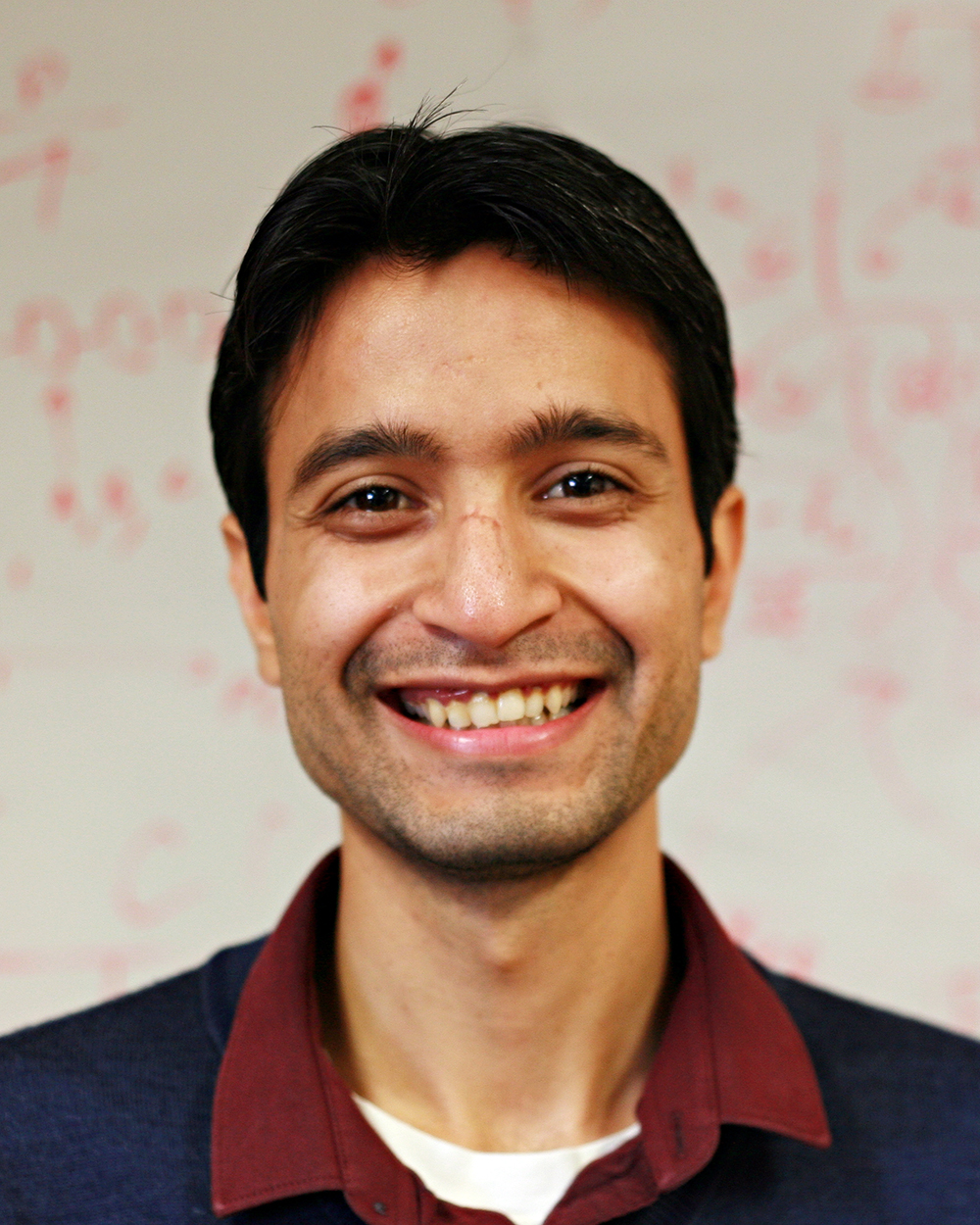
Professor Rohit Batra, UConn MSE alum (‘19) and current assistant professor at the Indian Institute of Technology, Madras.
UConn alum Rohit Batra suspects that he may have been unconsciously influenced to enter the field of materials science and engineering (MSE) by his father having owned a small electroplating plant when he was a child. “Seeing him work around several day-to-day items based on metals, and processing them to appear fancy and useful, did impact my decision.”
Batra received his Bachelor of Technology in metallurgical and materials engineering from the Indian Institute of Technology, Roorkee in 2011 before deciding to pursue his Ph.D. at UConn. “A couple of seniors in my undergraduate institute were pursuing their Ph.D. under Professor Rampi Ramprasad at UConn. Before even applying, I talked to them and learned about their experiences and possible future opportunities. They motivated me to apply under Professor Ramprasad as well. After my undergraduate and before starting my Ph.D. I did explore industry for around three years. However, I did not enjoy my work and decided to go for a Ph.D. instead– where I could gain more technical knowledge and train myself to solve more technically challenging problems.”
Batra holds Professor Ramprasad, his Ph.D. advisor who now teaches at Georgia Tech, in very high regard, along with several other faculty members. “I found professors at UConn to be quite approachable, knowledgeable and very helpful. I had good discussions with several of them both on the professional and personal level.”
During the pursuit of his Ph.D., Batra enjoyed learning different skill sets and using them to solve challenging technical problems. “I picked up computational methods to simulate materials (such as DFT, MD simulations) as well as machine learning based methods. I enjoyed how I can use these methods to understand some of the mysteries of nature – the intricate interactions between atoms happening at the micro-scale but resulting in the macroscopic behavior that we see with our eyes. I also loved how I can use these methods to design or discover new materials that can solve the demands of the future, such as generation or storage of clean energy, sustainable polymers, etc.”
Currently, Batra works as an assistant professor at the Indian Institute of Technology, Madras. He explained that his job involves three different realms of responsibility: teaching, research, and administration. “Under teaching, I teach core courses (theory or labs) and also design new elective courses that allow students to be more aware of the current research activities or perhaps become more employable. For instance, after joining IIT Madras, I floated my elective course titled “Machine Learning in Materials Science”, in which I cover several aspects of how AI/ML methods are being used to accelerate the process of discovery and design of new materials for several applications. Under research, my job is to train students at various levels (PhD, MS, M.Tech, B.Tech) to carry out research projects. This involves meeting with them regularly and advising them on how to conduct research and how to communicate their results. This also involves traveling to conferences to communicate my research and find new projects and collaborations. Under administration, I perform several department or institute activities to ensure smooth functioning. For instance, I am part of a committee responsible for Ph.D./MS admissions interviews. We also have a facet regarding the mental well-being of our students, and as part of that I meet with about twenty students every month to listen to their various issues.”
Batra proceeded to explain his personal teaching style. “I like my classes to be interactive, and therefore while teaching I pose lots of questions to the class. I only move forward with a topic after students answer my questions. I use a mixture of presentation slides, hand-written lecture notes, software programming codes, video links, etc. In my elective I do not conduct an exam but only grade based on project and assignments. I also conduct a few interesting and graded class competitions such as technical pictionary or buzzer games to make class fun. Students seem to enjoy activities like that a lot.”
At his institute, Batra leads a research group called The Materials Informatics Lab. “We try to use data driven methods coupled with materials computations to find new materials. Specifically, we develop ML/AI methods to accelerate discovery of materials. For instance, we are working on a project to find new polymer electrolytes that have Li-ion conductivity and could possibly help resolve the safety issues concerning present Li-ion batteries in the market. In another project we used ML/AI methods to come up with a new class of non-intuitive and unusual peptide sequences that show b-sheet self-assembly. Such peptide materials could be useful for catalysis, drug-discovery, or metal recovery applications. Similarly, we are working on projects that involve the discovery of high temperature shape memory alloys and AI-driven autonomous materials laboratory for thin films.”
When asked what the most rewarding part of his job is, Batra mentioned two different aspects. “Firstly, I feel very happy when my students get offers from a good industry or academic institute. I get to share their joy and that is one of the most rewarding experiences. Second, when you do a good job as a professor, students really respect you from their heart. I also find it very rewarding when students genuinely respect you for the hard work you have put into their training.”
Batra then elaborated the impact of working with students on his personal research and outlook on life. “Teaching is the best form of learning. Because students are new and still learning, they ask questions from several different angles. This mere interaction with them forces you to think about technical concepts and research from several perspectives, which ultimately enhances your understanding of the topic and makes you a better researcher. I also find it interesting that this job allows you to interact with students from various backgrounds, cultures, upbringings, and personalities. I would like to believe that closely interacting with such a diverse crowd makes you a more open, humble, and good human being.”
When asked what advice he has for current MSE students, Batra said the following: “There is a lot of scope in this field. There are many materials challenges that need to be solved to meet future energy and sustainability goals. Try your best to grasp the fundamental aspects of this field, to do projects in research groups that allow you to get hands-on experience on what research is being conducted and how the concepts you learn in your coursework are utilized. If possible, along with MSE also try to gain basic software programming and ML/AI knowledge. These skills are becoming quite important and will allow you to do even better work in the field of MSE.”
“Overall,” Batra concluded, “I really enjoyed my time at UConn. Some of the friends I made at this school are life-long and I’m still in touch with them, even after moving to India. I feel that UConn provides a good learning environment for international students.”
Author: Nabil Bhuiyan: A Journey through Materials Science and Engineering
By Francesca Rameau, Written Communication Assistant
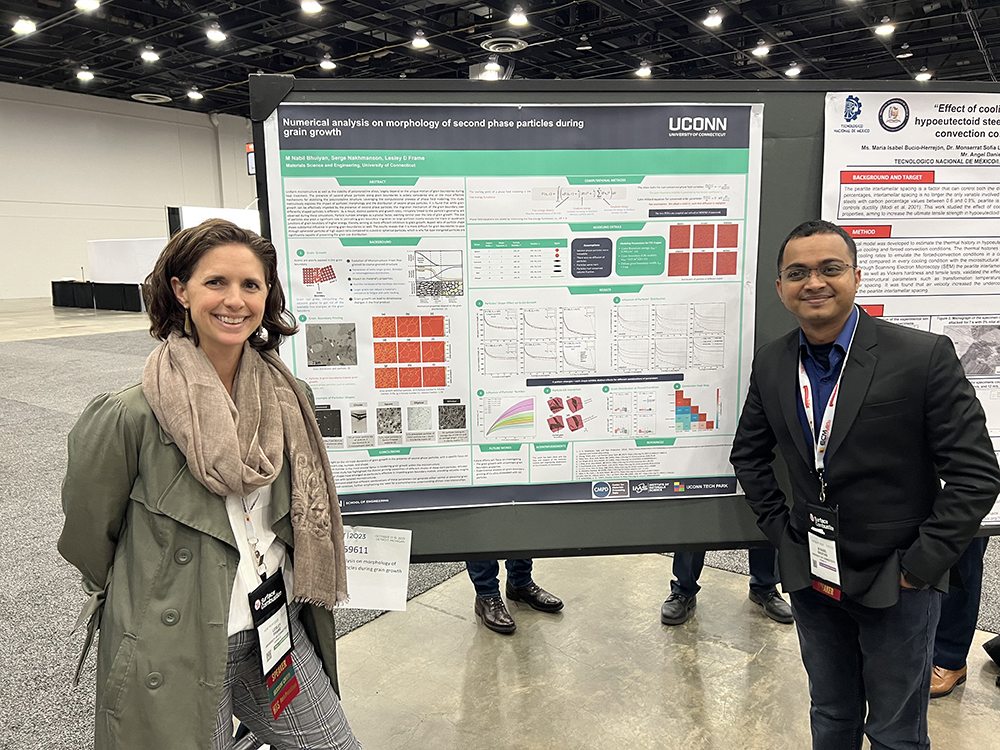
Graduate student Nabil Bhuiyan (right) and Assistant Professor Lesley Frame at the Fluxtrol Student Research Competition in Heat Treat 2023 conference in Detroit, MI
Many universities are not as fortunate as UConn to have a dedicated Materials Science and Engineering department. For Nabil Bhuiyan, during his undergraduate studies at the Islamic University of Technology in Bangladesh, he encountered materials science as a subdivision of mechanical engineering. This initial exposure sparked a fascination in materials science for Bhuiyan, motivating him to pursue a Master of Science in MSE at the University of Nevada. Now, as he works towards earning his Ph.D. at UConn in 2026, Bhuiyan still holds the same enthusiasm for the subject he first felt.
“As I delved into my coursework, I became increasingly drawn to the mystery of materials science and its role in shaping technological advancement. “I view materials science as a dynamic and rapidly evolving field with immense potential for innovation and impact”, claimed Bhuiyan enthusiastically. “The prospect of contributing to advancements in materials research and technology is what ultimately influenced my decision to specialize in this area, building upon my background in mechanical engineering.”
Speaking on his decision to pursue his Ph.D. at UConn, Bhuiyan remarked with excitement, “I was particularly attracted to UConn MSE due to its world-class research facilities and renowned faculty members who are leaders in their respective fields and conduct innovative research. Additionally, the availability of state-of-the-art research equipment further solidified my decision to join the program.” Bhuiyan also complemented UConn’s compelling reputation and the opportunity to engage in research as key factors in his decision.
Nabil Bhuiyan currently has two advisors in the MSE Program, Professors Serge Nakhmanson and Lesley Frame. Bhuiyan opted for this arrangement because of his interest in pursuing both computational and experimental research. He gets to couple idealized calculations in a virtual world and real-world samples and measurements.
He explained, “Professor Frame is an expert in thermal processing and experimental methods, while Professor Nakhmanson is renowned for his expertise in computational modeling. Given the complementary nature of their expertise and my desire to explore both realms, it makes sense to work with them. Having two advisors with complementary expertise provides me with diverse perspectives and resources, enhancing the depth and breadth of my research. This collaborative approach is yielding valuable insights and advancements in my doctoral studies.”
Bhuiyan also acknowledges and commends all the MSE faculty members he has encountered. “The mentorship I have received from my advisors, and other faculty members throughout my time in the program, has been invaluable. Their guidance and support have significantly influenced my research direction and learning experience. They have played a pivotal role in facilitating opportunities such as internships and offering important advice to further my professional development. They are enabling me to grow and thrive in the field.” he said.
Bhuiyan mentioned facing some hardships along the way. He admits, “I encountered various challenges that tested my perseverance and problem-solving skills. I needed to adapt to balancing coursework, research commitments, and personal responsibilities. I tried to implement effective time management strategies to overcome this challenge, such as creating detailed schedules and prioritizing tasks based on deadlines and importance. Additionally, I learned to delegate tasks when possible and sought support from my peers and advisors when needed. I also learned to deal with setbacks in my research endeavors. Research can be unpredictable, and experiments may not yield the expected results. In such situations, I learned to maintain a positive mindset, embrace failures as learning opportunities, and persistently troubleshoot and update my approaches.”
Currently, Nabil is researching grain growth in copper alloys. Bhuiyan explained, “”In industries such as semiconductor manufacturing and RF component production, precise control over copper microstructures is paramount. Whether it’s for fine copper microstructures facilitating current flow in semiconductors or for micromachined copper structures in RF components, such as filters and waveguides, meticulous management of grain size and surface roughness is imperative. These requirements extend to microfluidic devices, where controlled grain size and surface characteristics are essential for optimal fluid flow in applications like lab-on-a-chip diagnostics and bioprinting. These diverse applications underscore the critical importance of surface characteristics in microscale devices, emphasizing the necessity for meticulous control over microstructure to ensure efficient operation across various industries.”
Bhuiyan has published four papers, including two in Advanced Engineering Materials. Another paper is in the works.
Beyond academics, Bhuiyan is currently the treasurer of the UConn MRS (Materials Research Society) chapter. He emphasized, “As the treasurer of the MRS chapter, my focus is overseeing the organization’s financial matters. This involves budgeting for various activities and initiatives, monitoring expenditures, and ensuring overall financial stability. I strive to support the club’s objectives and facilitate its ongoing operations by maintaining transparent and responsible financial practices.”
Nabil also serves as an ambassador of the MSE Department, representing and promoting its interests and activities. He was a member of the John Lof leadership Academy, was the technical secretary for the UConn South Asian Graduate Student Community (Tarang) and earned a third-place finish in the Fluxtrol Student Research competition at the Heat Treat Conference in 2023.
After completing his Ph.D., Bhuiyan aims to work in the industry where he can apply his expertise. He is confident that the overall skills and experiences he has gained during his Ph.D. journey will benefit his success in securing such a position and beyond.
When asked about advice for students looking to pursue a career or studies in MSE, Bhuiyan stated, “Materials have evolved from inert to smart materials and they are becoming smarter each day. Professor Frame likes to say that knowing this science will give you the feeling of being a magician. To me, it is a place to flourish, since so many sectors of industries necessitate a fundamental grasp of materials engineering for their diverse advances to be successful.”
Besides his academic and organizational commitments, Bhuiyan enjoys traveling, community involvement, and volunteer work. He has already explored 40 out of the 50 states in the United States, where he has discovered diverse landscapes and cultures which he described as an enriching journey. Bhuiyan has also been actively involved in mentoring programs for underprivileged youth, and in environmental conservation efforts. He affirmed, “I find great fulfillment in contributing to causes that positively impact society, so I strive to integrate service into my personal and professional life whenever possible.”
Author: From Formula 1 to Nanocalorimetry
By Alec Arbia, Written Communications Assistant

Lakshmi Ravi Narayan, UConn MSE alumna (‘22), conducting experiments on chip-sensors that she fabricated in one of the clean room facilities at the National Institute of Standards and Technology (NIST).
MSE alumna Lakshmi Ravi Narayan has known she’s wanted to be an engineer since she was eight years old. “I was watching Formula 1 races and thinking about how fascinating the jobs were in the garages and pit walls. As I progressed in my education and career, I became interested in manufacturing processes and the underlying science behind them, which is how I found myself in the field of materials science and engineering (MSE).”
Lakshmi received her Ph.D. in MSE in 2022, and mentioned multiple UConn professors that inspired her. “My Ph.D. advisor, Professor Rainer Hebert, showed me that research is not about the number of publications, but rather the quality and value of the work that we do. He also taught me that playing by the rules is more important than gaming the system, and that a good balance of work and life is necessary. I now know that a supervisor should be understanding, flexible, and kind, because that type of an environment brings out the best in people.”
“Professor Lesley Frame is the kind of researcher I hope to be,” Lakshmi continued. “She has such a depth and breadth of knowledge that one comes out of an interaction with her having learned so much and with renewed insight into one’s own work. She is able to see so much in a piece of data and can foresee so much even before you complete an experiment.”
Lakshmi then spoke highly of Professor Harold Brody. “He has always made me feel good about myself – even when I was a half-baked experimentalist – and that helped me a lot during my Ph.D. work. I am proud to have had one of the biggest names in the field on my committee, but I will value him most for always building me up.”
Currently, Lakshmi works for the National Institute of Standards and Technology (NIST) as a foreign guest researcher. “NIST has a global reputation that is unmatched, particularly in the field of metallurgy and thermal analysis – my chosen areas of research. When I would use a method or technique and cite a NIST work for it, Professor Hebert never questioned it, and I wanted to go work at the place where the quality of research is of that caliber.”
When asked what her job typically involves, Lakshmi said, “I am at the post-doctoral stage of my career, which varies in nature from place to place. At NIST, some post-docs go on to academia after a couple of years, and their projects are short-term, but others who intend to stay pick up longer term projects. My group at NIST is now working on a few CHIPS-funded projects, and my project involves applying thermal analysis techniques to semiconductor devices – scaling down calorimetry to the nano-scale. We make the chips on which the experiment runs, the associated electronics and instrumentation, and the Labview codes to run them. Then there’s the experiment itself. This is a rather uphill path for me as I had never made chips before or encountered circuits beyond an undergraduate textbook.”
Lakshmi’s current work is something called the Nanocalorimetry project. “What we do is develop thermal analysis techniques at the nanoscale, to study the effect of rapid thermal cycling on the performance of semiconductor materials and devices. You know when you’re scrolling through instagram and your phone gets too hot, until one day it dies? That’s what we’re working to prevent.”
“It is definitely a privilege to work alongside some of the most brilliant people,” Lakshmi said regarding her favorite part of her job. “In fact, as I type this, there is a Nobel laureate in the building across the courtyard! While very arduous, the huge upskill from what I was doing before to what I can do now is very satisfying. It is indeed rare to be able to do fundamental research with all the resources at one’s disposal.”
When asked about the most difficult part of her job, Lakshmi explained, “Making chips is physically exhausting, and trying to keep up with very brilliant people in things like electronics and circuitry that are outside my ken can be hard on the spirit – but I try to focus on the kind of researcher I am going to be. That makes it alright.”
Lakshmi also mentioned several ways that interested individuals could get involved at NIST. “NIST is always seeking postdocs, but often the positions are not posted formally. That is because they can be tweaked to suit the interests of the applicant. I encourage Ph.D. students to directly contact the person at NIST who’s work seems interesting. The NRC program is open to citizens and there are postings on the website, but there are other means to be hired as well. CHIPS is looking for many postdocs to hire right away and is open to everyone. I also recommend the Summer Undergraduate Research Fellowship (SURF) to undergraduates who would like to experience a large lab and do hands-on work, but with a healthy side of fun.”
Networking with alumni can be incredibly important for students of any major. It can provide amazing opportunities, open doors that were previously closed, and help pave the path to the career a student is striving for.
Lakshmi’s final words of advice to current and prospective MSE students are as follows: “If you are good at it, you can make a living out of it. If you are comfortable with math and don’t mind getting your hands dirty, MSE is for you.”
Author: Ever Wondered What Goes On in the New MSE Undergrad Labs?
Author: College of Engineering Names New Dean
You will be redirected shortly.
Author: “Find What Research is the Best Fit for You”
By Alec Arbia, Written Communications Assistant
Cassidy Atkinson, a final year materials science and engineering (MSE) Ph.D. candidate, discovered her passion for MSE during her undergraduate college tours because of its wide-ranging applications across various fields. “I like how broad a field it is because it is truly relating to everything, but everyone’s research is so niche.”
Throughout her time at UConn, Atkinson had several inspirational professors. “Professor Alpay and Professor Frame have stood out to me as being professors that I look up to and I feel comfortable having a conversation with, whether research related or not. Other faculty members in the department have also taught me a lot, including Professors Nakhmanson, Goberman, Brody, and Lee. They are all very knowledgeable in their fields and I think their enthusiasm for it comes off clearly in the way they teach and interact with their students.”
During her sophomore year of undergrad, Atkinson received a Summer Undergraduate Research Fund (SURF) award, a competitive accolade where applicants propose summer research projects. Her winning project, titled Chemical Trends in Al-Cu and Al-Ag Interfaces from First-principles Theory, was guided by her faculty mentor Professor Pamir Alpay.
Also during her undergraduate studies, Atkinson participated in multiple projects with the Army Research Laboratory (ARL), an experience that she credits with shaping her decision to pursue a Ph.D. “I already knew that I wanted to pursue higher education. Being at the research lab and talking to the professional researchers there helped me realize that it would be beneficial for me personally to go directly to graduate school after finishing undergrad. I think if I had taken a break and gone into industry instead, I would’ve had a difficult time going back to school.”
Atkinson proceeded to delve into her past research endeavors, detailing how they paved the way for the research she currently conducts as a grad student. “I started doing density functional theory (DFT) as an undergrad and I really enjoyed doing computational research, so I decided to keep pursuing it as my graduate research. I wanted to learn more about the computational side of things for my PhD. A lot of my current research focuses on seeing the impact of impurities on properties and structural stability of various material systems. I mostly focus on ceramics, but am also working on a side project looking at the effects of impurities on aluminum.”
Atkinson’s research has resulted in three publications on topics such as silicon carbide grain boundaries, enhancing the electro-optic effect in HfO2 and ZrO2, and analyzing the local atomic environment in calcium lanthanum sulfide ceramics. Additionally, she is currently working on two more papers focusing on calcium lanthanum sulfide and aluminum impurities.
In 2023, Atkinson embarked on a six month research project in France through the Chateaubriand Fellowship. This prestigious grant, awarded by the embassy of France in the United States, aims to support outstanding Ph.D. students from American universities pursuing research opportunities in France. “It was a great experience to see how research is done in a different country. I really enjoyed the people that I worked with and the environment that I was in. It helped me grow as a researcher and learn how to communicate my own research more clearly.”
When asked what advice she has for any current MSE students, Atkinson said, “It is important to get involved in research. If a professor is doing research that interests you, reach out to them and see if there is any opportunity for you to join their lab. Don’t be afraid to reach out to multiple professors and find what research is the best fit for you.”
Author: MSE Banquet 2024: Honoring Achievement and Community Spirit
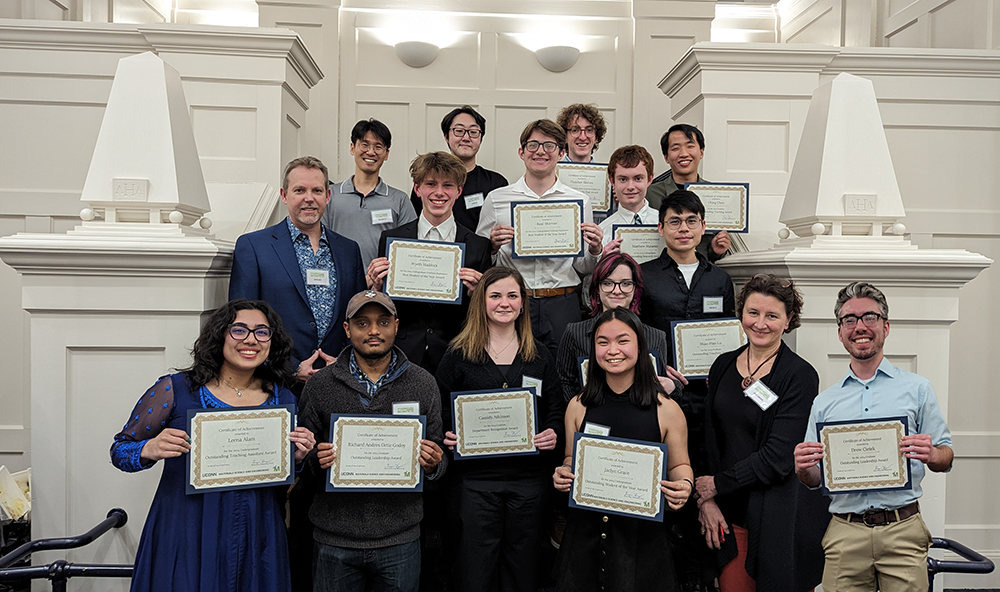
From left to right:
Front row: Leena Alam, Andres Godoy, Cassidy Atkinson, Jaclyn Grace, Professor Jasna Jankovic, Drew Cietek; Middle front: Aurora Buswell, Shao-Hao Lu; Middle back: Professor Bryan Huey, Wyeth Haddock, Reid Morrow, Matthew Maramo; Back row: Professor Seok-Woo Lee, Byung Jung, Thatcher Slocum, Ching Chen
By Francesca Rameau, Written Communications Assistant
On April 19, at the Alumni Center Great Hall, the materials science and engineering department (MSE) hosted its 11th annual banquet. This year-end celebration features awards for just some of the remarkable accomplishments by our students in the department. With an impressive turnout of 96 attendees, the event was a testament to the strong community within MSE.
Distinguished undergraduate and graduate students were lauded for their exceptional dedication and contributions to MSE throughout the year in several categories.
Undergraduate Awards:
- Best Freshmen/Sophomore Students of the Year: Wyeth Haddock, Reid Morrow, and Thatcher Slocum
- Outstanding Teaching Assistants: Leena Alam and Christian Sabatini
- Outstanding Undergraduate Research: Mathew Maramo and Aurora Buswell
- Undergraduate Student of the Year: Jaclyn Grace
Graduate Awards:
- Teaching Excellence: Shao-Hao Lu
- Best Talk: Byung Jung
- Doctoral Research Dissertation: Ching Chen
- Outstanding Leadership: Andres Godoy and Drew Cietek
- Department Recognition: Martin Birnbach and Cassidy Atkinson
Overall, the evening buzzed with camaraderie and networking opportunities. And as has become a tradition, the undergraduates prepared an icebreaker activity, fostering new connections and strengthening existing bonds. Participants enjoyed a lighthearted survey, with questions prompting lively discussions and friendly competition. From sharing eclipse experiences to guessing how each table would define color, every interaction added a touch of excitement to the festivities.
Congratulations to all involved.
And if you’d like to help support this subsidized event for the future, including the ~$5,000 in prize money awarded to our excellent students for our next annual banquet, donate now and join those who have helped to make this event such a wonderful tradition!
Author: Student Advocacy in Action: UConn MSE Delegation’s Impactful Congressional Visits Day
By Alec Arbia, Written Communications Assistant
Five materials science and engineering (MSE) undergraduate students from UConn packed their bags and headed to Washington, DC in April for ‘Congressional Visits Day.’ This event, organized by Material Advantage – the student association for the four main MSE professional societies (ASM International, TMS, AIST, and ACerS) – brought together students from across the nation. Leading the UCMA (UConn Material Advantage Student Chapter) delegation was Jaclyn Grace (’24), the outgoing UCMA president, accompanied by the newly elected executive board members Benjamin Gwinnell (’25), Connor Storicks (’26), Thatcher Slocum (’28), and Rachel Harris (’26).
“The goal of the event is to speak to Congressional Legislators and their teams about the importance of research in materials science, engineering and manufacturing, and the recent cut in R&D (research and development) funding,” Senior MSE major, Jaclyn Grace, explained. “There was a cut of over 6% federally, which greatly impacts the colleges and universities in our country. We were not lobbying for Connecticut specifically, but for R&D and educational funding for STEM in general.”
During the event, students had quick sit-downs with staffers to talk about how federal funding hits home for them. Some meetings were as short as ten minutes in duration, but Jaclyn felt like the response rate was high. “Our meetings mostly consisted of staffers telling us that they will look for letters and bills that support our cause, and will try to move them up on their lists of importance,” she said.
UConn’s meetings were with John Larson (CT 1), Rosa DeLauro (CT 3), Richard Blumenthal (CT Senate), and Andy Kim (NJ 3). “I think what stood out to me most was how kind the staffers are. Even though they are busy and overbooked, they faced us with kindness and genuinely listened to what we were saying. Most didn’t know what MSE was, and being able to speak about our individual experiences was important.”
Jaclyn shared that the highlight of the event was an unexpected meeting with Congressman Joe Courtney. “We ended up meeting him completely by surprise, as we initially had a meeting with one of his staffers. Our meeting took place in his office, so upon his return, he joined our meeting. Getting to meet with the actual Congresspeople and Senators is not common during this event since they are so busy, so it was a welcome surprise. He was very excited to talk to us about submarines, welding, and manufacturing. Since Rachel, Ben, and myself are all from District 2, our meeting felt extremely personal. He brought up the importance of educational funding in each of our hometowns. In my case specifically, he told me about his recent visit to my prior high school–Westbrook High. They have become a golden standard of tailoring their education to learning styles of many different students and providing alternative opportunities through a partnership with General Dynamics Electric Boat. It showed that he truly cares about the people he is representing.”
Overall, Jaclyn summarized Congressional Visits Day not as a conference, but an opportunity. “The event was very self-motivated, as the total impact of the day was based on the students’ proactivity and personal experiences that they shared. I think everyone should participate in a congressional visit if they get the chance, because it’s important to fight for the things that are personally meaningful. It doesn’t necessarily have to be education or R&D, but the more that elected officials hear from their constituents about the things we’re passionate about, the more likely that our issues are to be addressed. You never know how big of an impact you can have, but you do know that nothing will ever change if you don’t make an effort.”
Author: Celebrating Excellence at CMOC 2024
Author: Jasna Jankovic named 2024 Distinguished Engineering Educator
By Alec Arbia, Written Communications Assistant
Jasna Jankovic, Associate Professor in the Department of Materials Science and Engineering (MSE), has been recognized by the UConn College of Engineering as a winner of the 2024 Distinguished Engineering Educator Award. The DEE award is bestowed yearly on select engineering faculty for outstanding teaching and innovation at the undergraduate level.
Jankovic has been with UConn since 2018 and has been a valued member of the MSE Department. She has received a number of awards, including Provost Letter of Teaching Excellence in 2019 and 2020, and AAUP Award for Special Achievements 2021. Also in 2021 she received the prestigious NSF CAREER Award, which, besides an innovative research component, has a unique educational component using virtual reality. Jankovic recently received two grants from the Department of Energy, totaling close to $3 million. Her research group’s interests include advanced nanomaterials for clean energy, electrospinning for clean energy applications, and templating nature designs for application in clean energy.
Jankovic’s research is closely interconnected with her teaching, in which she uses creative ways to inspire students to learn. These methods include ideation, design and building of the UConn STEAM Tree, implementing of entrepreneurship aspects in engineering classes, and offering research experiences to undergrads in her lab. Jankovic’s friendly and inclusive teaching style is appreciated by her students, as stated in one of the student support letters. MSE undergrad Jaclyn Grace wrote, “Within my four years at UConn, I have yet to find another professor who loves and cares about each and every one of their students as much as Professor Jankovic. Lectures are tailored to the individual learning styles of those in her class, including having an online synchronous option for students who are traveling or sick, no questions asked.”
When asked how she feels upon receiving this award, Jankovic said that it means a lot to her. “I really care about how students experience learning – for me it is a holistic experience. Students need to be inspired, to enjoy the process, and to trust the instructor. It’s then that learning comes naturally.”
The Distinguished Engineering Educator Award comes with $5,000 and a plaque, the latter of which will be presented to Jankovic on 2024 Design Day, which will be taking place on April 26th in Gampel Pavilion.
Author: UConn Signs Contract With Air Force Research Laboratory
By Alec Arbia, Written Communications Assistant
UConn recently received $10.5 million from the Air Force Research Laboratory (AFRL) for research on high-temperature materials and manufacturing processes. The funding will allow a team of seven faculty members from Materials Science and Engineering (Professors Aindow, Alpay, Frame, and Hebert), Civil and Environmental Engineering (Professor Kim), Mechanical Engineering (Professor Bilal), and Chemistry (Professor Suib) along with post-doctoral associates and graduate assistants to address challenges in the manufacturing of aerial systems intended to fly at high speed. Much of the four-year research project will focus on welding-related challenges for high-temperature metallic materials that are used for structures exposed to high speeds. The UConn team will combine experimental and theoretical approaches to help their collaborator, RTX, advance their manufacturing solutions. Additional project tasks address the behavior of non-metallic high-temperature materials under different processing and service conditions, additive manufacturing of high-temperature refractory metals, and the design and processing of metamaterials. These metamaterials are designed to change heat- and electro-magnetic fields in and around structures and are considered to advance the thermal management of high-temperature structures.
The new AFRL project comes at the heels of previous and ongoing AFRL projects for UConn approaching $30 million that involve over 15 faculty members from the Colleges of Engineering and Liberal Arts and Sciences with dozens of graduate students and post-doctoral associates. Covering research from functional materials and photonics to casting, welding, and additive manufacturing, the UConn team has established itself as a valuable partner for the AFRL and key industry partners, for example, Pratt&Whitney and Collins Aerospace.
Professor Rainer Hebert says of the contract, “The AFRL funding enables the UConn team to pursue materials processing research with a strong focus on industry and government relevance. Students and post-doctoral associates working on the project see firsthand how their research translates to industry. This insight will help in preparing a workforce that can pursue research excellence with a keen sense of the needs and constraints of industrial applications.”
Author: A Materials Graduate Student’s Mission to Advance Latino Recruitment and Participation in STEM
By Francesca Rameau, Written Communications Assistant
Ph.D. student Luis Ortiz’s passion for materials science was ignited during his undergraduate years at the Universidad de Puerto Rico – Humacao, where he was involved in research focused on physics applied to electronics. He revealed, “In my Applied Physics department in Puerto Rico, we have a program mainly focused on materials research. Based on my experience there, I fell in love with the material science field and decided to pursue my graduate studies in this area.”
Ortiz became exposed to the UConn MSE program through various fellowships he applied to throughout his undergraduate years. He revealed, “We didn’t have much information about UConn in Puerto Rico. As a minority student, I decided to apply for fellowship opportunities that could help me succeed in graduate school at universities in the USA. I also applied to this specific program called the Bridge to the Doctorate Louis Stokes Alliance for Minority Participation while I was an undergraduate student. This is a two-year fellowship that helps you bridge between undergraduate and graduate school, and they supported me through the start of my Ph.D. They have a network of universities inside the program, and UConn was one of the listed colleges.”
During the two-year fellowship, Ortiz was introduced to Professor Bryan Huey, who currently heads the MSE department and serves as his advisor. Luis admits feeling supported by Professor Huey and the other department faculty members. He remarked, “Many people here are willing to mentor students and see us become better professionals. My advisor has been one of them.” Ortiz acknowledged the support he receives from MSE faculty members to pursue his dreams and their confidence in his ability to achieve them. “I feel supported and validated in terms of how we pursue our path and work to achieve our goals,” he said.
Currently, Ortiz is conducting research on material properties, primarily using the Atomic Force Microscope (AFM) and its advanced extensions. In simpler terms, he explains, “I’m currently working on an alternative type of solar cells. These ‘Halide Perovskite’ systems use far less energy and raw materials to manufacture but can be just as efficient. However, the main problem that they have is stability. No one has yet figured out how to make them last longer. So, everyone is competing to understand and eventually sell the best product.”
When explaining how his research transfers and relates to the real world, Ortiz stated, “Traditional silicon solar cells have been around for years. We know how they work, and they have been in the market for decades now. However, they are still relatively expensive. With this research we are really part of a worldwide effort to develop this new kind of solar cell that should be up to five times cheaper than traditional panels. This would make alternative renewable energy systems so much more accessible in the future.”
Professor Huey notes, “Luis is studying the performance of this new solar cell technology at one of the finest levels of resolution in the world. It is groundbreaking work and required him to develop new protocols to learn the most from his incredibly challenging measurements. This is only one of Luis’ great strengths, though—he’s also a great speaker, passionate about expanding diversity in engineering, and so Luis has also become a wonderful ambassador for UConn Engineering to help us inspire and recruit future students especially from institutions back home in Puerto Rico.”
Ortiz embarked on a transformative journey within the Research Experiences for Undergraduates (REU) program for four consecutive summers. Throughout each internship, Ortiz acquired new knowledge and skills, contributing to his emergence as a scholar and problem solver. His journey began at NASA, delving into the field of heliophysics. During this time, Ortiz was able to unravel the mysteries of solar radiation and its effects on space electronics and astronauts’ health. The following summer, Ortiz found himself at Michigan State University, where he explored the world of Nuclear Physics. He was able to probe into the fundamental forces of the universe, gaining more knowledge of the fabrics of reality and exploring alternative solutions for the newest generations of nuclear energy. Ortiz then ventured into electrical engineering studies at Princeton University, where he collaborated to develop testing mechanisms to monitor functional electronics. Finally, his journey concluded at Brigham Young University, where Ortiz explored magnetic properties in a sequence of samples that are used for data storage applications (like hard drives in computers), which is an important topic in the MSE field.
Reminiscing on these experiences, Ortiz expressed with gratitude, “They all gave me the tools I needed to understand what I wanted to do next and expand my knowledge in some other areas too. For example, we do a lot of data processing and coding in our lab. This is something I did during my first two internships as well. All of these experiences helped me forge the professional who I have become today.” In addition to these opportunities, Ortiz also had a four-month internship at Mott Corporation in 2022 as a Research and Development Intern.
In addition to his academic pursuits, Ortiz was very involved with the Material Research Society (MRS) University Chapter at UConn and was elected President by its student members for 2021-2022. And, as his advisor noted earlier, Luis was invited by the UConn College of Engineering to join in several trips to Puerto Rico for student recruiting. He got to visit several universities throughout Puerto Rico, engaging with students and professors. They set up booths on campuses and offered interactive class participation activities to introduce the students to topics often discussed at UConn. Ortiz asserts that his main goal for participating in this program is to expose students in Puerto Rico to opportunities and resources and confirm that they can receive economic and academic support to attend graduate school.
Ortiz wants to be seen as a testament to the opportunities that arise when support is provided. He professed, “A lot of people don’t know that they can get funded while pursuing their graduate degrees. This is an important aspect to consider in order to encourage other people to pursue this path, especially those who do not have resources of their own. I also think there should be more minority participation in to show diverse representation in grad school. For many groups, including international students, people of color, and Latinos, this is the best way to let them know earning an advanced degree at UConn or elsewhere is possible, and that a support community will be available too. We are all striving for the best version of ourselves to make a change in society and contribute to a better future.”
Ortiz has seen academic success translate into multiple accolades, including winning 1st place in the 2023 School of Engineering Poster Presentation for the MSE division and earning the UConn Material Science and Engineering Outstanding Leadership Award in 2022. Reflecting on the latter recognition, Luis affirmed, “This was a great opportunity to develop my leadership skills and be exposed to other people involved in materials research and other organizations. I wanted to get exposure with those beyond UConn, do more networking, build my confidence in talking to people, and improve many other life skills.” As a scholar, Ortiz, in collaboration with others, has published three papers and submitted two, with two more currently in the process of being submitted.
After completing his Ph.D., Ortiz hopes to continue working in research and emerge as a leader in a technologically advanced field. He credits UConn for preparing him for his future career. He claimed, “I want to work in an industry lab, and I also want to use my skills to lead others and have a research group in the future.”
Ortiz emphasized one word when asked about advice he would give students aspiring to pursue MSE research. He said, “Do your research to understand exactly what you’re getting into. Something very good about materials science and engineering is that this is a very multidisciplinary field. So, just get involved in reading and understanding the path that you want to follow. Get exposed, talk to people, talk to your advisors, professors, and other grad students, and then dive in.”
Author: Breakthrough Papers in Nature Materials and Advanced Materials Unveil Nano-scale Material Insights
By Francesca Rameau, Written Communications Assistant

The extreme resolution possible with UConn’s novel Tomographic AFM is demonstrated by the full 3-D map of ferroelectric domains (color, top), and magnified image just of domain walls (base), for a crystal of multiferroic ErMnO3 reported in the Advanced Materials publication. This work incorporated 403 raw images, 633 million total data voxels, and depth resolution better than 5 nm.
Professor Bryan Huey, Head of the MSE Department, has coauthored two papers published in the prestigious journals Nature Materials and Advanced Materials. Nature Materials, a leading monthly journal in materials science and engineering, showcases top-tier research across all disciplines within the field. Advanced Materials, renowned for over 30 years, serves as a cornerstone for the finest achievements in materials science globally.
Huey’s current and former Ph.D. students are coauthors and led UConn’s important contributions to these multinational efforts, especially Karla Del Cid-Ledezma and Dr. Thomas Moran. Both papers feature the Tomographic AFM method, which is unique to our lab at UConn because we are able to provide otherwise inaccessible nano-volumetric insights into the functional properties of materials. For the Advanced Materials paper, we studied the beautiful and property-defining curvature of ferroelectric domain walls in multiferroic crystals, while the Nature Materials paper analyzed thickness-dependent morphologies of ferroelectric domains that are less than just five units cells thick.
Author: The World’s Smallest Basketball, from the Basketball Capital of the World
You will be redirected shortly.
The World’s Smallest Basketball, from the Basketball Capital of the World
Author: The People Are What Make MSE
By Alec Arbia, Written Communications Assistant
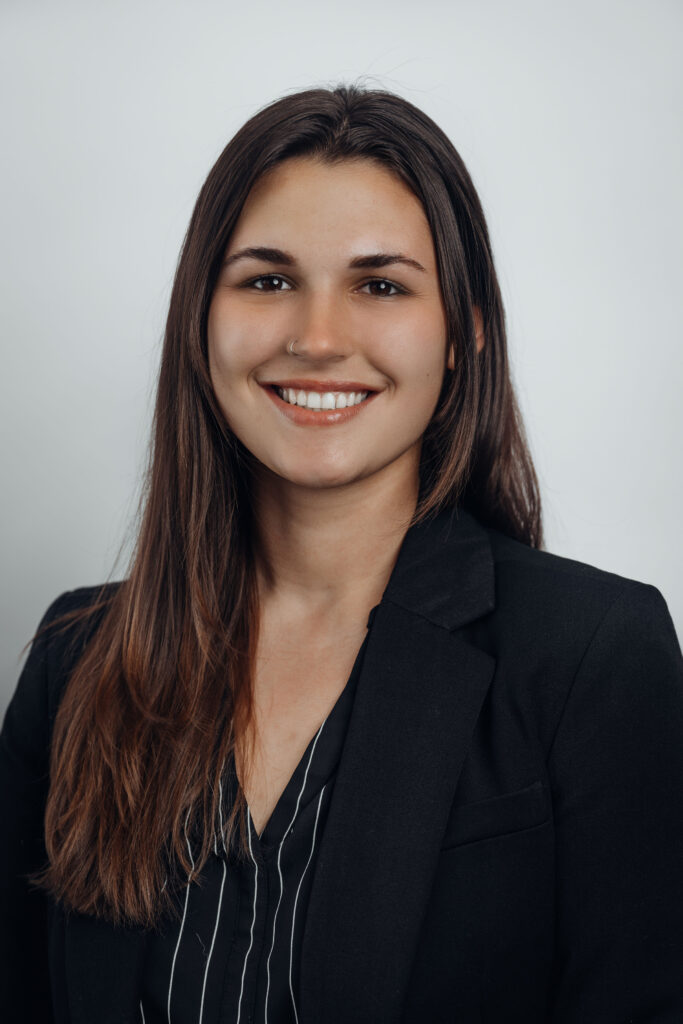
Victoria Reichelderfer (MSE ‘20), current materials and process engineer at Pratt & Whitney and member of the MSE External Advisory Board.
Victoria Reichelderfer (‘20) didn’t start out as a materials science and engineering (MSE) major; when she first began attending UConn, she was majoring in chemical engineering. “I didn’t actually know much about MSE, and as I learned more about it I thought it sounded interesting. The reason I switched into the major, however, was because it felt like a community. The students immediately seemed like my kind of people, and I liked that because it’s a smaller major, you could get to know your professors really well. Of course, I find the subject matter really interesting, but I think the people are what make MSE a very special major.”
When asked if she had any professors that were particularly inspirational, Reichelderfer said, “Serge Nakhmanson was a great mentor to me for most of my time at UConn, and we remain good friends even though I haven’t been a student for a few years now. I worked in his lab as an undergraduate and he helped me with technical subject matter, but even more importantly he had no shortage of advice on navigating my career. Even after I left UConn, Serge always had supportive advice when I wasn’t sure what to do next.”
Professor Nakhmanson said in response, “I am pleased to observe all the positive developments regarding Victoria’s professional career, especially since she managed to come back to us after attending grad school in Colorado. Although an obvious part of our effort as faculty is filling the heads of students with knowledge, our true main goal is trying to ensure that our students are happy and fulfilled in what they do. It is very satisfying to me when I see Victoria moving in that direction. I want to wish her all the best in growing her career at Pratt & Whitney.”
As an undergraduate, Reichelderfer was an active member of the Society of Women Engineers, whose mission is to support the professional interests of female engineering students during their time at UConn.
After receiving her bachelor’s in MSE from UConn in 2020, Reichelderfer went on to receive her master’s in MSE from the University of Colorado Boulder in 2022.
Right after graduation, Reichelderfer began working as a materials and process engineer at Kaman. Now, she holds the same position at Pratt & Whitney. “I wanted to come back to the east coast after grad school, so I was looking at a few jobs in CT, but when I met the team at Kaman I knew it would be a great fit for me. Leaving Kaman was very bittersweet, but I came to Pratt & Whitney because I wanted to get more specific in terms of the subject matter of my job.”
Reichelderfer’s current work focuses on aluminum and titanium components. “My role is very much tied to the development side of things. I focus a lot on understanding how processing impacts alloy microstructure, and how that ultimately defines how that material can be used for a certain component. It ties together the needs of the component’s design with material requirements, and helps go from a drawing on paper to an actual component. We also provide support to the team on the production side in case things don’t go as planned.”
The most rewarding part of Reichelderfer’s job is when she finds the solution to a problem into which she’s put a lot of time and effort. On the other hand, “sometimes it can be difficult to work with people who have a different style of working than you do. Therefore to any current students, I say: it turns out all those group projects they make you do are actually important, especially for being able to balance many personality types when you’re in the industry.”
When asked about her current research interests, Reichelderfer said, “Lately I’ve been really interested in aluminum ingot solidification. I’ve also been working to understand titanium microstructure on a deeper level. My main interest is how upstream material processing (casting, extrusion, rolling, etc.) impacts microstructure and defines the properties of the final part. I try to absorb as much as I can from the more experienced engineers in my group.”
In March of 2023, Reichelderfer joined UConn’s MSE External Advisory Board (EAB). “Members of the EAB work with MSE to understand how the MSE curriculum can be optimized for our alumni to be successful after graduation, as well as to fit the needs of the industry in Connecticut. CT is a great state for pursuing a degree in MSE because there are a lot of companies that are pushing the limits of currently available materials. I hope to help support the already great relationship between UConn MSE and regional industry so that we can create many opportunities for UConn students before and after graduation.”
Reichelderfer’s advice to any current MSE students is as follows: “MSE is a really broad major, so if you’re not 100% sure what you want to do, you have options. I tried out a couple of different sub-fields before settling on metallurgy, and I’m glad my degree is in a field where you can do that. It doesn’t tie you down at all – I even know materials engineers who went on to work in other engineering disciplines. Find a subject area where you enjoy the process, be disciplined about it, and the results will arrive on their own.”
Author: Pioneering Piezoelectric: Karla Del Cid-Ledezma’s Research Shaping the Future of Semiconductors
By Francesca Rameau, Written Communications Assistant

MSE graduate student Karla Del Cid-Ledezma conducts research on nano volumetric resolution of ferroelectric and mechanical properties in Professor Huey’s research group.
When Karla Del Cid-Ledezma embarked on her journey into graduate studies at UConn, she steered towards materials science and engineering, diverging from her undergraduate path in nuclear, plasma, and radiological engineering at the University of Illinois Urbana-Champaign. She credits her undergraduate research for sparking her profound passion for materials. “I really enjoyed the plasma-material interaction research that I learned from my undergrad,” Del Cid-Ledezma reflected, “and decided that I wanted to explore the material side for my graduate degree.”
When inquired about her decision to attend UConn, Del Cid-Ledezma remarked, “UConn is known for its strong academic reputation, and the MSE program is well-regarded. The research that the MSE program offered was extensive and interesting to me… I really enjoyed the opportunity to look at different research opportunities the MSE program had to offer.”
Del Cid-Ledezma’s current advisor is Professor Bryan Huey, whom she deeply admires and greatly respects. “My main advisor, mentor, and cheerleader is Professor Huey. He has been extremely influential and supportive in everything I do.” She also voiced her gratitude and acknowledgment towards all faculty members in the MSE program. “The faculty is welcoming and supportive of the students in the program.”
Currently, Del Cid-Ledezma is working in research related to nano volumetric resolution of ferroelectric and mechanical properties. To simplify, “Essentially, I am looking at materials known as piezoelectrics. These materials exhibit a mechanical response when an electric bias is applied to them, and we can capture that response at the nanoscale through an Atomic Force Microscope (AFM). Using the AFM, I can even dig into these materials, allowing me to uncover properties beneath the surface. After we do this over and over, we can recreate full 3D profiles of those properties. Much like how archeologists dig to investigate the past, I dig to look to the future of technology at the nanoscale.” Del Cid-Ledezma hopes that her research can shed light into how the behavior changes for certain materials as they decrease in size—which future devices always demand.
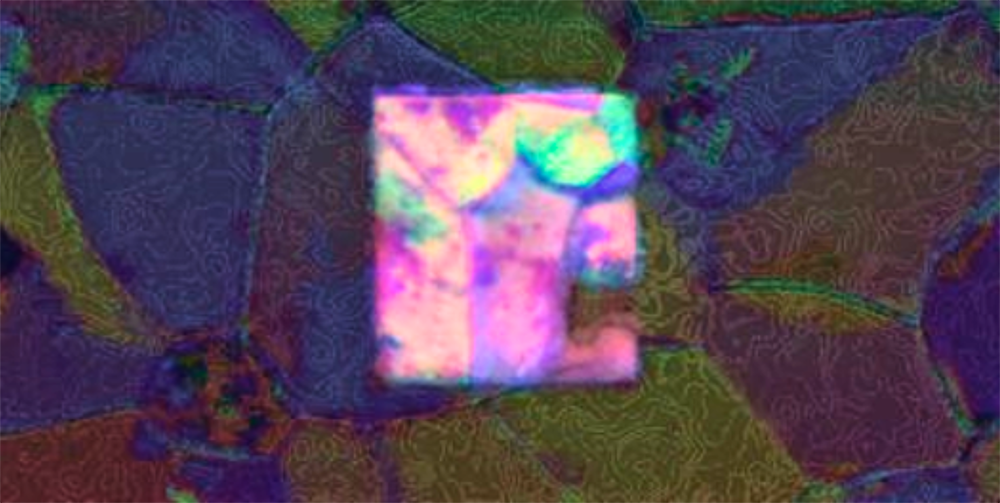
PZT (Lead Zirconate Titanate) milled area. The illuminated area is the area that has been milled down with an AFM tip and the surrounding area has been untouched. Typical digs can go to depths of 100-200 nm with a 5 by 5 um area. This is the piezoresponse of the material.
When asked about the real-world significance of her work, Del Cid-Ledezma emphasized, “These materials play a crucial role in the future of semiconductors and logic technology. Their impact can be seen in practical applications like flash memory and semiconductor technology, which become increasingly powerful, efficient, and compact, all while increasing their capacities. Being able to study that in 3D, like we do in our labs, is indispensable for shaping the future of these devices.”
Expanding on her dedication to making a real-world impact through her research, Del Cid-Ledezma participated in a nine-month internship with Applied Materials. Through this experience, she collaborated with industry professionals growing her skills in problem-solving while delivering efficient and comprehensible solutions. Del Cid-Ledezma expressed her gratitude towards this opportunity highlighting the personal and professional growth it facilitated. She stated, “My internship at Applied Materials was an amazing experience. I became a more efficient and confident engineer during my nine months as a process engineer R&D intern at the Gloucester, Massachusetts site. It was a different experience than what I had been used to in academia. I made incredible connections there, and I always felt like I was part of the team.” Additionally, she felt that this opportunity bolstered her confidence as an engineer since she could see in her work and the appreciation from her team members that her contributions were valuable.
Beyond academics, up until the Spring 2023 semester, Del Cid-Ledezma was actively involved in the Society of Hispanic Professional Engineers (SHPE), where she co-founded and served as the vice president of the UConn Graduate Chapter. The main goal of the organization is to provide an opportunity for Latinx and Hispanic graduate students to connect with one another and establish a strong sense of community. “It was an amazing experience to create a community for my fellow Latinx/Hispanic graduate peers,” declared Del Cid-Ledezma when reflecting on her involvement in the organization, “I believe it is important to be proud of who you are and to be supported for being authentically you.”
Del Cid-Ledezma’s academic accomplishments have been highlighted by a series of accolades and achievements. In 2022, she was honored by the Advancements’ category at the Society of Hispanic Professional Engineers Conference, and then was recognized in the Basic Research Art of Science Showcase in 2023. Del Cid-Ledezma has also been awarded several pre-doctoral fellowships from UConn. She co-authored a paper titled “Defeating depolarizing fields with artificial flux closure in ultrathin ferroelectrics” published in Nature Materials, one of the highest impact factor journals in the field, and has several other papers in the pipeline awaiting publication.
Her advisor, Professor Bryan Huey, also points out that Karla has helped to run the AFM lab for several years. “She’s learned so many skills, contributed to so many academic and industrial projects, and served as a leader in so many student organizations—it’s no wonder that Applied Materials has hired her into a special technical leadership program for as soon as she graduates.”
Adding to her academic pursuits and fluency in both English and Spanish, here’s a fun fact about Del Cid-Ledezma: she nurtures a passion for spelling bees. She showcased her talent at a young age by competing at the State level, representing her hometown in the Spanish Spelling Bee during her 6th-grade year.
When asked about any advice for students aspiring to pursue a career in MSE or study MSE, Del Cid-Ledezma offers the following guidance, “Take the time to explore various aspects of MSE to identify specific areas that genuinely interest you. Stay flexible and open-minded, be willing to adapt to change, and embrace a learning and growth mindset throughout your academic and professional journey. Take advantage of the resources available to you, seek guidance from mentors, and approach your academic and career path with enthusiasm and curiosity. Most importantly, if you need help always seek it out, help is available at UConn whether it is academic or personal.”
Author: A Look into the Life of the 2023 IPOEF Inspiration Award Winner
By Alec Arbia, Written Communications Assistant
When Audrey Larson was sixteen years old, she received her first patent for a system that helped reduce carbon emissions from cars on highways. At seventeen years old, she received her second patent – this one for a bullet proof barrier to help protect students during the event of a school shooting.
In high school, Audrey started the Inventors Club through the CT Invention Convention. “It was a response to COVID-19,” she explained. “During the pandemic student inventors around the state who would normally work on their inventions in school lost the ability to do so. The Inventor’s Club was an afterschool opportunity for those students to connect virtually and work on their inventions together.”
At UConn, Audrey is an undergraduate who is double-majoring in materials science and engineering (MSE) and civil engineering. “My reasoning for choosing MSE stems from my interest in engineering, which started with participation in the CT Invention Convention program. This program introduced me to the career of engineering while I was in elementary school, and it was then that I realized I wanted to be an engineer. My specific interest in MSE came in high school when I did the Explore Engineering (E2) summer camp at UConn which allowed me to learn about different engineering majors. Up until that point in my life I had no idea MSE even existed, and it was after this that I knew MSE was for me. It blends my love of engineering with chemistry and allows me to be interdisciplinary.”
UConn’s research opportunities are a large part of why Audrey chose to attend. “I knew UConn is an R1 university and I really loved the idea of doing research while in school. This hope ended up coming true, as I began to do research the summer before my freshman year – before I was even a husky!”
Audrey is most interested in additive manufacturing (3D printing) and how materials science plays into that field. Her favorite class so far has been Professor Rainer Hebert’s thermodynamics class. “The course material was so fun, and he used real world examples to explain the concepts, which made it much easier to grasp.”
It was in Audrey’s dorm room freshman year that she started her first of two companies – Unfolded and Geomate. “Unfolded was formed to give student artists a platform. Through the company we sell sustainable shirts and jewelry that have the designs of myself, my business partner, and other UConn students who we contract out to create designs. Geomate is an earlier stage venture that was founded out of the UConn Student Health and Wellness program, Innovate Wellness. Geomate is an app that is made to help students feel safer when they are walking alone at night on campus.”
Last year Audrey was the 2023 recipient of the IPO Education Foundation (IPOEF) Inspiration Award, which recognizes individuals who have made a significant contribution by promoting and championing intellectual property rights for, and on behalf of, members of underrepresented communities. “I was absolutely honored to earn the award from IPOEF for my work in intellectual property (IP). I have always tried to support others in their pursuit of IP and to help make way for other students like me who are interested in protecting their IP. Through the CT Invention Convention and the years I worked with them, I have developed a love for inventing and for meeting and working with other student inventors like myself.”
Department Head Bryan Huey notes: “Audrey’s passion about materials, and entrepreneurial successes, are clearly extraordinary. They’re also representative of a consistent theme among our majors, alumni, and faculty, since we are continually discovering new materials to improve engineered designs that impact our everyday lives. In fact, at that same IPOEF awards ceremony, Professor Cato Laurencin was recognized as their inventor of the year!”
Audrey has an upcoming co-op with NASA. “A co-op is a longer-term internship, usually lasting a semester, where you get to work for a company or national lab before graduation. Co-ops can help you figure out what you love and what you are passionate about. I have always loved space and dreamt of working for NASA as a kid. Since freshman year I have been looking at and applying to various internships at NASA with no luck. This year I got my first interview, which led me to spending my spring 2024 semester in Houston, TX working for NASA at the Johnson Space Center. I am so excited about this opportunity. I am such a nerd about space, and NASA has always been something that interests me. I am most excited to meet my coworkers, and maybe some astronauts!”
When asked how UConn’s MSE department has helped her work towards her career goals, Audrey said, “UConn MSE continues to have a curriculum that lets its students explore all areas of MSE, from biomaterials to energy. This has helped me pinpoint my interests in a positive way. The MSE environment here is very tight knit, and I know I can always rely on my classmates!”
Author: MSE Faculty Members Awarded Grant by Office of Naval Research (ONR)
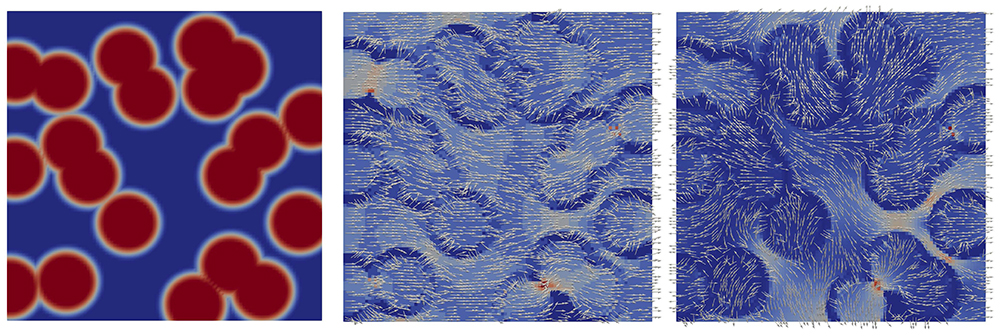
(Left panel) A 2D ‘fuzzy interface’ structural model of a particle-matrix composite, with red and blue phases having different electrical and thermal transport properties. Simulated electrical (Central panel) and thermal (Right panel) current flow through the composite under applied voltage.
By Francesca Rameau, Written Communications Assistant
The Office of Naval Research (ONR) has awarded an exceeding $400k grant to Professor Serge Nakhmanson, Professor David Drabold (Nakhmanson’s Ph.D. advisor, Ohio University Physics), and Professor Mark Aindow, UConn MSE, in collaboration with Dr. Boris Feygelson, a researcher at Naval Research Laboratory, for their research on thermoelectric materials. The research project, title “Structural Optimization of Transport Properties in Artificial Interfacial Solids for High ZT Thermoelectrics” focuses on developing novel materials and composites with enhanced capabilities for converting heat into electricity and vice versa.
This award follows two prior ONR grants supporting graduate students in Professor Nakhmanson’s group for preliminary work on the same topic. The initial grant in 2020 included $50k, while another $120k was provided for 2021-2023. These studies, conducted by then Ph.D. student Mr. Dharma Basaula (Ph.D. Physics, 2023), produced sufficiently promising results that ONR expanded the project substantially this year to also include experiments and additional modelling.
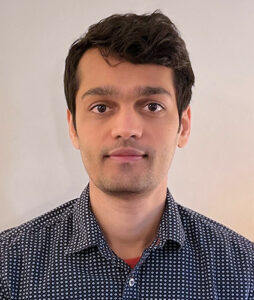
Dharma Basaula, (Ph.D. Physics, ’23), conducted previous ONR-funded studies in 2020 and from 2021 to 2023
Professor Nakhmanson comments, “Prior to this project, we have never worked on thermoelectric materials. However, during this effort, we have learned that the most important characteristics governing thermoelectric behavior of microstructurally complex materials are tied to their interfaces. Such properties are not easy to measure or evaluate computationally, but their knowledge is necessary to predict and improve thermoelectric performance – which is the main goal of the new ONR grant. We are very grateful to Dr. Feygelson for originating this collaboration and to ONR for the continuing support.”
Dr. Boris Feygelson, the collaborator from Naval Research Laboratory (NRL), oversees the development of the material synthesis for the project. New synthesis methods involve atomic layer deposition (ALD) on nanoparticles and nanoporous structures followed by nano-sintering to produce solids with preserved nanostructure of initial constituents. He specializes in creating and manipulating novel materials under high-pressed and high-temperature conditions. Professor Nakhmanson along with an MSE graduate student, Minhaz Morshed, will continue to collaborate with Professor David Drabold and his graduate students for theoretical and computational research. Their specific goal is to gain a deeper understanding of coupled thermal and electrical transport properties in interfacial materials, and then utilize this knowledge to make predictions on how these properties could be improved.
Additionally, Professor Mark Aindow, along with a graduate student, Ovijit Dad, and postdoc Sarshad Rommel, leads the complementary effort in transmission electron microscopy (TEM) to visualize the nano-sized elements and interfaces in solid materials synthesized at NRL. This technique involves the transmission of electron beams through thin specimen to capture detailed images down to the atomic scale.
Department Head Bryan Huey notes, “This effort is a great example of several core strengths in UConn MSE coming together for the common good. It teams Serge Nakhmanson’s extraordinary modeling capabilities with Mark Aindow’s expertise in electron microscopy and microstructure, partners with outstanding external collaborators, and is focused on improving a critical technology for society: efficient conversion of heat and electricity.”
Author: MSE Alumna Recognized by The Journal of Blacks in Higher Education
By Francesca Rameau, Written Communications Assistant
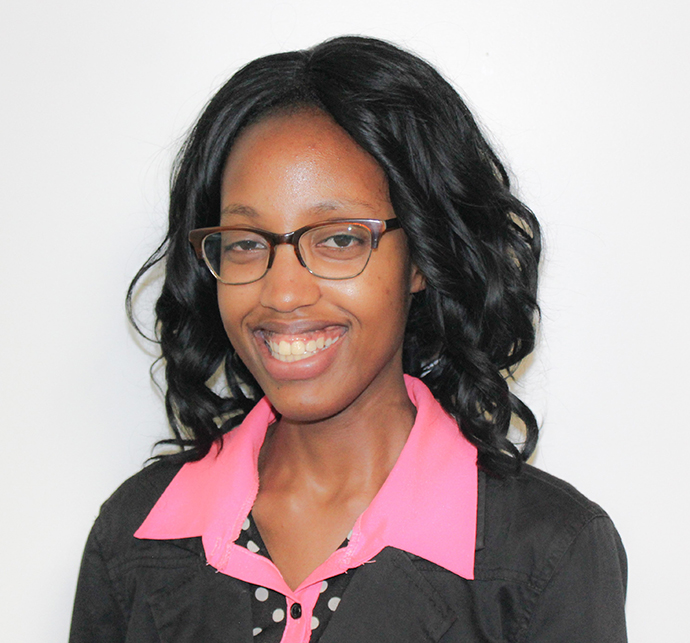
MSE Alumna, Sharon Uwanyuze, assistant teaching professor of materials science and engineering at Missouri University of Science and Technology
MSE alumna, Sharon Uwanyuze ’23 Ph.D., was listed on the ‘Five Black Scholars Who Are Taking on New Assignment at Universities’ list published by The Journal of Blacks in Higher Education. Uwanyuze is a new assistant teaching professor of materials science and engineering at Missouri University of Science and Technology. Her focus is metallurgical engineering, and she is an expert in non-ferrous alloys, such as titanium and nickel-based superalloys, metal-mold reactions, and investment casting.
At UConn, Uwanyuze earned her Ph.D. in materials science and engineering in 2023 while also completing The Graduate Certificate in College Instruction in 2022. This challenging program is designed for individuals interested in enhancing their theoretical and practical knowledge of college teaching, with the goal of providing a better learning experience for their students. And, in addition to Professor Uwanyuze’s academic achievements while a student, Sharon actively engaged in several organizations both on campus and in the community. She served as the President of Grad Black Stem the UConn chapter of the National Society of Black Engineers, an organization dedicated to mentoring undergraduate students interested in pursuing higher education in STEM. Furthermore, she was involved with the His Branches Adventurer Club, a local church-based program for children grades 1-4 to learn and improve their social skills.
Uwanyuze received recognition for her outstanding contributions as a teaching assistant, earning her the UConn MSE Teaching Excellence Award. Additionally, she was awarded the General Electric (GE) Fellowship, a prestigious fellowship granted to graduate students who demonstrate innovation, during a year which especially focused on excellence in communications and pedagogy (teaching).
Department head Bryan Huey says, “Sharon impressed many of us throughout her time in UConn MSE. I’m especially pleased that she is continuing in academics, because I’m sure she will be an inspiration to her current and future students. This is yet another example of the incredible impact our alumni make beyond Storrs after they graduate.”
Author: How to Have Fun in A Ph.D. Program
By Alec Arbia, Written Communications Assistant
“Believe it or not, I decided to be a materials scientist when I was ten,” said Gyuho Song, UConn MSE alum (‘20). “To be precise, I decided to ‘invent a new material’ after watching an animation about a miniature car on TV. It was a fictional unbreakable-yet-strong ceramic and I thought it was really cool. (I didn’t know there is a trade-off between ductility and strength when I was ten – I learned that as an undergraduate.) From there, I fell in love with physics and math in high school, went to study materials science and engineering (MSE) in undergrad, and came to the US for an MSE master`s degree in 2014.”
When asked which professors inspired him the most during his time at UConn, Song listed four.
Professor Bryan Huey, Song remembered, was kind to all. Song was a self-funding student, looking everywhere for research assistance. When Professor Huey got funding for a new project, he called Song to ask if he was interested in joining the team. Song credits that opportunity as the reason he managed to continue his studies and get to where he is today. Professor Avinash Dongare’s teaching was so incredible, Song said, that he could not stop studying and playing with what he had learned from the course. Professor Dongare helped him to see the world completely differently, and is the reason he began to learn computation, machine learning and cloud computing. Professor George Rossetti’s class, Song added, showed him materials science on a completely different level than what he was used to, and had him beginning to think about how amazing MSE knowledge can be in the real-world industry. Professor Seok-Woo Lee, Song’s advisor, was the best fit for him. As a curious person, Song likes to try new things, and Professor Lee allowed him to do so – as long as he got his work done. With Professor Lee’s patience and guidance, they even turned one of Song’s curiosity-driven projects into a publication.
Professor Lee speaks highly of his experience advising Song. “Gyuho is a very inquisitive person who was always willing to learn new things. He always had many research ideas and did not hesitate to share and discuss them with me. I enjoyed talking with him a lot. Even though he was interested in many different topics, he never lost his deep focus on his research. I feel that Gyuho is a born-to-be researcher.”
Currently, Song works as a senior engineer for Frore Systems in San Jose, California. “While at UConn, I attended many entrepreneurship seminars and was fascinated by many startups. As a materials scientist and engineer, Frore being a Silicon Valley tech startup was too awesome not to jump on. I considered it an adventure because the company was still in stealth mode when I applied, and there was not much information about it online.”
“At Frore Systems, like any startup, new problems pop up everywhere, out of nowhere, everyday,” Song explained. “My job is to figure things out – to find a way to investigate the root cause. On top of that, it’s a very fast-paced environment. When we have a meeting at 10am and I am assigned to figure out a problem, I read papers and study theories, put things together, and make sure to have some preliminary experimental data gathered by 4pm the same day. When it works, it feels good to be a scientist! When it doesn’t, I miss all the resources available at UConn (SEM, TEM, XRD, nanoindentation, etc.).”
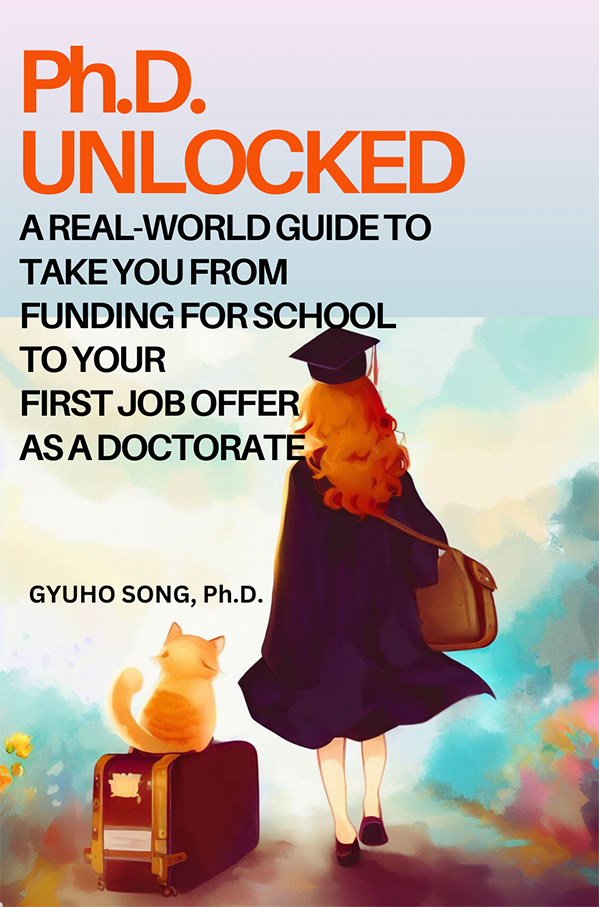
Gyuho Song’s new book, titled PhD Unlocked: A Real-World Guide to take you from Funding for school to Your First Job Offer as a Doctorate.
One of Song’s recent accomplishments has been writing and publishing a book, PhD Unlocked: A Real-World Guide to Take You From Funding for School to Your First Job Offer as a Doctorate. “I wrote the book after moving to Silicon Valley and meeting lots of super-smart Ph.D. holders. When I talked to them, a large number did not seem to have had much fun during their Ph.D. programs. Because I personally had had so much fun and loved every moment at UConn, I decided to write a book about how to make the most out of a Ph.D. program.”
Song listed three kinds of people who he hopes will be impacted by his book. The first group is not only undergraduates, but also people who are already working for companies – those that have a passion for learning and thinking in depth. He wants them to know that a Ph.D. program is not a scary thing; it can be really fun, and truly transformative. Second, he hopes his book reaches people who may be struggling to afford their education. Song worked to save money for graduate school and feared it wouldn’t be enough. He hopes to share with that specific audience that it is possible if you know where to look for funding opportunities. Lastly, he hopes to reach current Ph.D. students who are struggling with their research, writing, or job searches. Song said that he was incredibly lucky to have great advisors and faculty around him, but still saw other students struggling. On top of that, he mentioned that job search was brutal – as is the experience for many students – but eventually, good things happened. He hopes to share that positive energy with students who are currently encountering the same obstacles.
When asked what advice he has for current or prospective materials science students, Song said, “The more advanced work gets, the more collaboration is required. If you like learning and understanding the world more than meets the eye, consider a Ph.D. in MSE. I enjoyed studying MSE at undergrad, but things got so much deeper, more extensive, and – most importantly – more fun at graduate school. You never know what you may end up falling in love with once you are there.”
“I love UConn,” Song said by way of final thoughts. “I really want to do anything I can to help the students there and make the university proud. UConn is my home – it’s where I grew as both a scientist and a person, and met some amazing people (including my wife). If anyone has questions about graduate school, working at a startup, Silicon Valley, or anything at all, they can reach out to me via email or LinkedIn. They will get a response from me in a day.”
Author: Exploring Heavy Metals Along the Ocean Floor
You will be redirected shortly.
Author: Use MSE Knowledge To Solve Diverse Engineering Issues
By Alec Arbia, Written Communications Assistant

Paul Su, UConn MSE alum (‘97), who became a member of the department’s External Advisory Board in March 2023.
Paul Su earned his Ph.D. in materials science and engineering (MSE) from UConn in 1997, and in March 2023, he became a member of the department’s External Advisory Board. Su says that during his time at UConn he “became fascinated by the behavior of materials and their applications, the processes used to create them, and the underlying principles of their properties.”
Su chose to pursue his degree at UConn after receiving a letter of interest from Professor Owen Devereux, who later became Su’s Ph.D. advisor. “Professor Devereux profoundly impacted my professional career and how I approach science and projects. During my studies I had many inspiring discussions with him about surface science and electrochemistry, which taught me the importance of analyzing data rigorously. I enjoyed approaching questions from various perspectives, and he always encouraged me to propose ideas, engage in open discussions, and focus on my research progress. Additionally, Professor Devereux’s book “Topics in Metallurgical Thermodynamics” is always near when I need to go back to fundamentals and refresh my mind. After graduation, he and his wife became my mentors and good friends.”
Currently, Su works as a principal research scientist at FM Global, a property insurance company. “Equipment failure caused by corrosion and material degradation is a significant cause of losses for our clients. Such equipment includes fire sprinkler systems, industrial boilers, pressure vessels, high-energy piping, transformers, gas and steam turbines, and more. As a principal research scientist, I have led and participated in projects related to material degradation, corrosion mitigation, failure analysis, and loss prevention practices. I have also provided consultation to our global operations and engineering divisions.”
Su has been providing risk consultation services since joining FM Global in 2004. “My role primarily focuses on MSE principles, including corrosion, metallurgy, polymers, chemistry, and failure analysis. As the materials science team leader, I work with scientists and technologists with backgrounds in MSE, polymers, chemistry, and engineering. We have seven labs supporting research in materials science, analytical chemistry, polymers, and materials damage.”
“My favorite part of my job is the opportunity to use MSE knowledge to solve diverse engineering issues,” Su said. “The issues are often challenging and unique, so figuring out approaches to them is gratifying. The experience that I have gained in the aerospace and chemical industries has been invaluable in helping me navigate the process.”
Su explained how in 2013 he received a patent for “Combined Plug and Sealing Ring for Sprinkler Nozzle and Related Methods.” “FM Global pioneered the development of a corrosion-resistant fire protection system for extremely corrosive environments, consisting of mixed acid fumes and high velocity particles flowing inside industrial exhaust ducts. This system comprises newly developed sprinkler nozzles, linear heat detector wires and fire control panels, flexible sprinkler connections, and accessories. Altogether, it helps to mitigate damage to the combustible exhaust ducts in the event of a fire, which can lead to plant shutdown for an extended time along with substantial financial losses. We shared this technology with a vendor that commercialized the first Duct Fire Protection Deluge System in 2014. FM Global approved it, allowing our loss prevention engineers to work with insurance clients on successful field installations. It now protects exhaust systems found in steel and alloy manufacturing, power generation, the chemical industry, pulp and paper plants, and metallurgical gas cleaning and acid plants.”
The recipient of seven industry awards, Su was particularly honored to receive the Fellow recognition of National Association of Corrosion Engineers (NACE) in 2020. “This award is special to me as it acknowledges my contribution to corrosion science since graduating from UConn.”
When asked what advice he has for current MSE students, Su said the following: “UConn MSE is unique due to the diverse expertise of its faculty members. Spend time talking to them and participating in projects that align with your interests. I encourage you to ask questions and establish a good mentorship with the professors, as this could be an enriching experience for you in the years to come. Additionally, it is important to keep an open mind, even about topics that may not seem relevant to your career. Take the time to hone your problem-solving skills.”
Author: MSE Is All Around You
By Alec Arbia, Written Communications Assistant
“I’ve always been interested in the transformation of materials all around me,” said Donghyun Kim, UConn MSE alum (‘23). “Especially once I learned that the only solid form of H2O – ice – could float on the liquid form of H2O – water – and how because of the property, everything on earth could exist. Materials science and engineering (MSE) was always present, but it shocked me that I had never thought about it. I also found it fascinating how just the configuration of pure carbon can induce different materials with wildly different properties, such as diamond and graphite. These kinds of things led me to step into the world of materials science and engineering.”
Kim pursued his bachelor’s and master’s in MSE at the University of Ulsan in Korea. “As an undergraduate, I learned about many types of phase changes such as thermal, mechanical, and chemical (or thermodynamic). Although thermodynamics was difficult to understand at first, it helped explain the changes in materials in general, which I had always been curious about. As a result, I naturally wanted to study thermodynamic phase transformations. I also expanded my research interests to include electrochemistry and corrosion, which are extensions of thermodynamics.”
The reason Kim chose to come to UConn was specifically to work with Professor Lesley Frame. “I had considered several universities to pursue a corrosion-related doctoral program, and I found out that Professor Frame focuses on structure-property-processing relationships and corrosion research. As a result, I had a chance to study the effect of steel processing and properties on bridge steel corrosion performance. I learned a lot from her as my major advisor, including maintaining a solid work ethic, staying enthusiastic in the face of difficulty, time management skills, being detail and goal-oriented, and how to be a generous group leader. Academically, her attitude in dealing with research projects inspired me tremendously.”
Now, Kim works for Nokia Bell Labs as a hardware reliability scientist. “My main role is analyzing corrosion phenomena in actual field-used electronics. I work with others on how to resolve the issues, or how to mitigate the corrosion progression in a cost-effective way. I also get a lot of experience in problem solving and research. Learning from my coworkers, which consist of senior scientists and a highly trained technical staff, is definitely my favorite part of my job. I also enjoy having a flexible schedule and our cooperative and supportive environment. Working at a world-renowned and historic laboratory is fascinating.”
When asked further about his research, Kim said, “I mostly work on failed samples from the actual field, so naturally, my research interests include corrosion-induced failure mechanisms of electronics. The reason for corrosion-induced failure in electronics is often unclear, and unidentified because of its randomness. Not only is this my personal research interest, but it’s also a major topic for the entire electronics industry.”
The advice Kim has for those considering majoring in MSE is as follows: “MSE is all around you. Your smartphone, laptop, desk, chair, car, clothes, shoes – everything is built on the foundation of materials science. If you are interested in your surroundings, MSE would be the right major for you. Any company that manufactures something needs an MSE major. And if you are a current MSE student, I would like to quote Professor Frame in saying: don’t be afraid to ask questions.”
When asked if he had any final comments, Kim said, “Don’t let the present slip away while regretting the past and worrying about the future. Be nice to other people and enjoy the present to its fullest.”
Author: Majoring In MSE Will Help You Shoot For The Stars
By Alec Arbia, written communications assistant
Junior undergrad Aurora Buswell hadn’t heard of materials science and engineering (MSE) until her freshman year at UConn. It was after taking Foundations of Engineering, a class that exposes students to the types of work done in different engineering disciplines, that she decided to transition from the ACES program to MSE. (ACES is UConn’s academic advising program for students who want to explore the university’s academic opportunities before deciding on a field of study.)
“I was captivated by how the molecular structure of a material could have such drastic impacts on what it was capable of,” Buswell said. “This showed me just how important MSE is in engineering; if you want your design to work, you need to choose the right materials! This makes it a great career choice too, because engineers in every other discipline need the help of a materials scientist/engineer. We can tell you the type of forces something can withstand, how well it conducts electricity, how fast it might melt, and even how combining different materials will affect the overall component. We’re needed pretty much everywhere, so there’s a really wide range of job options.”
“I have always known I wanted to go into research, so I chose UConn because it had such a wide range of undergraduate research opportunities,” Buswell explained. “When talking to my coworkers during my internship at NASA, I learned that the experience I gained as a research assistant at UConn was a somewhat rare and valuable background for an undergraduate like me in comparison to those from other departments or schools. I definitely made the right choice.”
For two semesters, during the spring and summer of 2022, Buswell had the opportunity to intern at the NASA Glenn Research Center in Cleveland Ohio. “I have always wanted to work at NASA because it’s an organization that is centered around the goal of expanding the knowledge of our universe. It is one of the only places where you are not only impacting the world, but the solar system, in real time! As NASA states, its primary goal is discovery for the benefit of all. I am so grateful to be a part of that.”
“NASA values teamwork, excellence and inclusion, and this could not be more evident in the day-to-day work culture,” Buswell explained. “I felt that my ideas were seriously considered in every discussion I took part in – even though I was just an intern. The core belief is that innovation is best achieved by embracing a wide range of perspectives, so the people there are very open-minded. Resilience is another one of NASA’s core values, so there is an attitude of positivity when it comes to facing setbacks, which felt very encouraging to me as someone just starting out. The culture is very uplifting, and I always felt like my voice was being heard.”
Buswell went on to explain a typical day at the internship: “I usually started my day by coordinating with my team members to determine how we could each work towards our collective goal. I was working with the additive manufacturing team and my job was to study mechanical properties of a certain material, so my day was usually divided between printing samples, testing them, and analyzing the data. I would also use characterization techniques like optical and scanning electron microscopy. I could identify patterns in the physical appearance of the samples after they were compressed or pulled apart, and connect this with the data I compiled. I got to design a lot of the experiments I conducted which was a valuable experience.”
As department head Bryan Huey notes, “That’s exactly why MSE has made such a strong commitment to our teaching labs, with more than half a million dollars in equipment in the last 5 years, and all overseen by Fiona Leek—one of our most popular professors. The work we do in MSE is more hands-on than any other discipline, and it can be very open-ended. So we strive to prepare our students to have the knowledge, and know the tools, to be able to answer whatever technical questions come their way.”
For Buswell, the best part of interning at NASA was “getting to meet so many creative people doing such a wide variety of research, and getting behind-the-scenes with the projects NASA celebrates with the world. People from so many different backgrounds in materials were eager to show me their work, from metals additive manufacturing to the fabrication of polymer-reinforced aerogels. I got to see their one-of-a-kind testing facilities like the wind tunnels, the 300-foot drop tower, and the giant sandbox where they test prototypes of Mars rovers! Overall, I had so much fun, and I learned so much more about all the different avenues a materials scientist/engineer can take in their career.”
The two skills that Buswell found to be most important during the internship were “creativity and being able to work in a team. The truth is that in real life, most engineering problems don’t have straightforward solutions, and there isn’t a clear-cut ‘right’ course of action. You need to be ready to think outside the box and apply your knowledge in unconventional ways. I often found myself in situations where my team encountered some sort of problem – a malfunction with a testing instrument, for example – that none of us knew how to solve off the bat. We worked together to think of a solution, which was sometimes just to use a simple household object like hairspray! Never be afraid to contribute your ideas no matter how silly you might think they are– they just might be the answer your team is looking for.”
The professor that has had the most impact on Buswell during her time at UConn MSE is “the wonderful Dr. Seok-Woo Lee. I met with him my sophomore year before I transitioned from ACES to MSE, and he explained his research in mechanical properties of materials to me. He showed me that knowledge of materials science was the real key to making an engineering design work, because the molecular makeup of materials has such an extreme impact on the forces it can withstand. I thought it was so cool that such tiny features in a material could make or break an engineering design. I also had the privilege of working in his lab, recently earning co-authorship in a research paper.”
Professor Lee had equally kind words to say about Aurora. “I am so proud of her for completing her internship at NASA. She also contributed greatly to my research laboratory. Her nanoindentation results, which she obtained last summer, played an important role in our recent paper published in the Journal of Materials Research. Aurora is an excellent student who has always been passionate about materials science research. She is well on her way to being a top materials scientist.”
When asked about her career goals, Buswell said, “I ultimately would like to work in Research and Development (R&D). UConn has given me a great foundation for this because our program takes a comprehensive approach to MSE. I have not only learned how to operate materials testing equipment, but I also understand how the instruments themselves function so I can decide how to optimize their settings for my research goals. I know the best strategies to test different types of materials as well as how they will behave in a given application. I’ve been educated on the theory behind different types of material properties, and I’ve gotten lots of hands-on experience in the lab. I feel confident that I can conduct effective research, and I have gained a lot of important skills just from my coursework that I can put on my resume.”
Author: MSE Undergrad Receives IPO Education Foundation Inspiration Award 2023
Author: Professor Cato T. Laurencin Named IPO Education Foundation Inventor of Year 2023
You will be redirected shortly.
Author: Studying Materials Is Like Listening To An Orchestral Symphony
By Alec Arbia, Written Communications Assistant
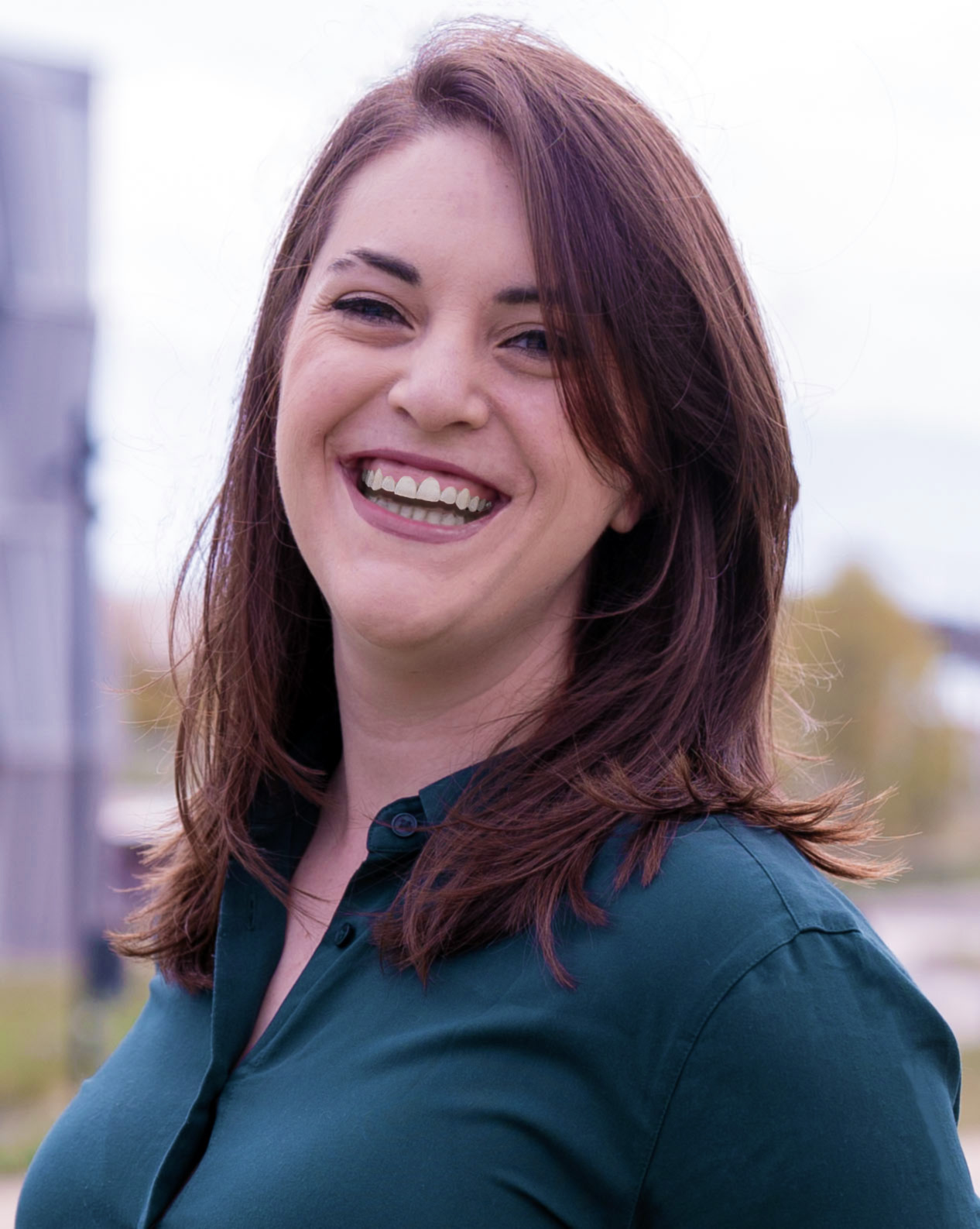
Rose Cersonsky UConn alumna (MSE ’14) and current assistant professor of chemical and biological engineering at the University of Wisconsin – Madison.
Rose Cersonsky, UConn alumna, came up with a beautiful metaphor to explain how she sees materials science and engineering (MSE). “I consider studying molecules like listening to an orchestral symphony. We’re seeing all of these intense, complex forces at play, and it’s making this beautiful music. My job, because I do fundamental theoretical work, is to try to write the sheet music. I look at what’s happening, trying to figure out what forces are at play and what’s making that music – who’s got the solo at one moment versus another. I grew up a theater kid doing a lot of artistic expression, and so I see this as a continuation of that.”
Originally, Cersonsky enrolled at UConn as a civil engineering major. However, after developing an interest in polymers, and sitting in on some classes for different majors with one of her best friends, “I fell in love with the art that is materials science.”
When asked if she had any memorable professors, Cersonsky told the story of how Emeritus Professor Harold Brody started his first class of the year. For the first fifteen minutes, he talked about the election of Franklin Delano Roosevelt. “We all were afraid something was seriously wrong. Until eventually, he stops and he goes, “and that, students, is how we define work. Work is equal to FDR.” I will never forget it. I still bring it up every time I teach work in thermodynamics.”
Other faculty members Cersonsky made a point to mention were “Bryan Huey, who has looked out for me the entirety of my career – and Dan Burkey. I spent a lot of time in the undergraduate administration office trying to figure out how to continue to afford college, and so there’s people that have infinite favors from me and that I consider to be in my corner until the end of time.”
Currently, Cersonsky is an assistant professor of chemical and biological engineering at the University of Wisconsin – Madison. In regard to her choice to teach that subject instead of materials science and engineering, Cersonsky said, “I got my Ph.D. in something more akin to chemical engineering, and so really sitting at the intersection I applied to jobs in both arenas. My choice was less to do with the name of the department than the ethos of the department, about who I wanted to work with and build my career with. It was up to them to decide if my research fit in the department, but I wanted to be working with people that I knew would be the colleagues I wanted to have.” At least in Wisconsin, that’s in CBE. Though Rose is also an affiliated faculty member in MSE.
“I decided to pursue a career in academia four months before I applied to jobs,” Cersonsky admitted. “I wanted something where I would have the ability to do the research and the inquiry that I find really fascinating. And to work with students, I mean – watching students get it, watching students understand something for the first time, and connect it, and then realize how cool it feels to understand this thing – it’s incredible. Realizing, ‘oh my god – I just connected something for somebody.’ And they’re going to go through life fundamentally changed for knowing this. In that respect, there’s no career like academia.”
Cersonsky went on to explain how she keeps students engaged and learning effectively – by using humor and lots of analogizing moments. “I was teaching failure modes in my last class with a Bop It. Failure modes are all the different ways a sample can break. You can pull on it, you can twist it, you can compress it, or you can shear it, and so I asked, ‘Who here was born in the 90s?’ and some hands didn’t raise, and I died a little bit. I then showed them the Bop It commercial from the 90s, which goes, ‘push it, twist it, pull it’. Those are three out of the four failure modes.”
When asked what her job’s primary responsibilities are, Cersonsky broke her answer up into the three parts of her job: professor, researcher, and administrator. “My goal as an assistant professor is to teach the courses where I can make sure the students in both my classes and my research group are learning the right things – where I’m able to attract students who are interested in the research that I do. And then with said research, my job is to do cool stuff and convince other people to get funding to do cool stuff. Lastly, administratively, it’s about being a contributing member to the department. Making sure that in the communities that I’m a part of, I’m helping this department grow and function.”
In technical terms, Cersonsky’s research group could be described as developing and applying mathematical languages for representing materials and chemistry in machine learning models. In simpler terms, Cersonsky describes what they do as “understanding and decoupling forces in weirdly shaped molecules. We’re trying to understand how molecules interact with each other, using and developing different machine learning methods to make understanding them easier and more conclusive. Essentially, we’re leveraging molecular simulation and machine learning to – as I call it – see the world from the viewpoint of molecules. Because molecules don’t see x y z coordinates, they don’t see the inputs that we’ve put into our simulation. They see their universe – and what does that look like for them?”
This research can be used to “help build accurate, interpretable surrogate models for machine learning. All in all, what we do can be classified as fairly fundamental — we design software and methods for enabling larger-scale analysis of molecular systems and materials behavior.”
The most difficult part of Cersonsky’s job is “keeping in mind what your own expectations are in the context of everyone else’s expectations. There’s going to be people for whom you should really take their expectations and advice into account – you learn who those trusted people are – and then there’s going to be people to which you say, ‘That’s not me.’ Knowing where that line is – and having the strength to not try to please everyone – is very hard.”
When asked what advice she has for those considering majoring in MSE, Cersonsky said, “Do it. One thing that was really helpful for me in my own journey – and something I’m really explicit about as a professor now – is to understand that when you’re in class, your job is to learn and your professor’s job is to teach. That was something I struggled with a lot as an undergrad, of feeling the power and the confidence to not know things.”
Cersonsky admits, “Of course, it took a long time to get to where I am in terms of scientific confidence. Especially as someone not traditionally represented in this field, I did (and still do) have to work through the feeling of not knowing if I belong. But, at the end of the day, I get to decide how I see myself as a scientist and engineer; I decided that I belong.”
Author: Publications by MSE Ph.D. Candidate Featured in MDPI Journal – Materials
by Alec Arbia, Written Communications Assistant
Ummay Habiba, 5th year Ph.D. student in materials science and engineering (MSE), had two recent publications featured in the MDPI journal Materials.
Published in April of 2023, the first article is titled “Powder Spreading Mechanism in Laser Powder Bed Fusion Additive Manufacturing: Experiments and Computational Approach Using Discrete Element Method”. In Habiba’s study, the impact of powder spreading in Laser Powder Bed Fusion (LPBF) additive manufacturing was investigated, with a focus on the influence of various input parameters. Utilizing the Discrete Element Method (DEM) simulation tool, the effects on powder density and particle distribution were systematically explored across multiple layers. Beyond simulation her research also covers experimental measurements to unveil variations in powder density and particle size distributions on the construction plate. This comprehensive analysis provides valuable insights into the optimization of fabricated object quality in the dynamic realm of LPBF additive manufacturing.
Another article, titled “Powder Bed Thermal Diffusivity Using Laser Flash Three Layer Analysis”, was published in September of 2023. This article explores the intricate relationship between thermal diffusivity and mechanical properties in LPBF additive manufacturing. It focuses on the precise measurement of thermal diffusivity in the nickel-based super alloy Inconel718 (IN718). Additionally, comprehensive measurements at varying temperatures were conducted on a three-layered sample using laser flash three-layered analysis equipped with a dedicated powder cell. This article provides insights crucial for optimizing the LPBF process and enhancing the mechanical integrity of fabricated components.
For Habiba, her interest in research started in Bangladesh, the country where she grew up. There she realized materials science and engineering impacts every aspect of our lives and decided to pursue a career in mse. One of her key aspirations in research is to achieve breakthroughs that contribute to advancements in the manufacturing sectors.
Under the guidance of Professor Rainer Hebert, Habiba expressed her gratitude, stating, “I am very fortunate to have the opportunity to work with a supportive and professional supervisor who has provided me with a positive work environment and strong connections to the industry. Work doesn’t feel like work when you’re living your passion. I count my blessings daily for the opportunity to do what I love. It’s a privilege I don’t take for granted.”
Author: Fall 2023 MSE Graduate Student Elevator Talk Competition Winners
By Alec Arbia, Written Communications Assistant
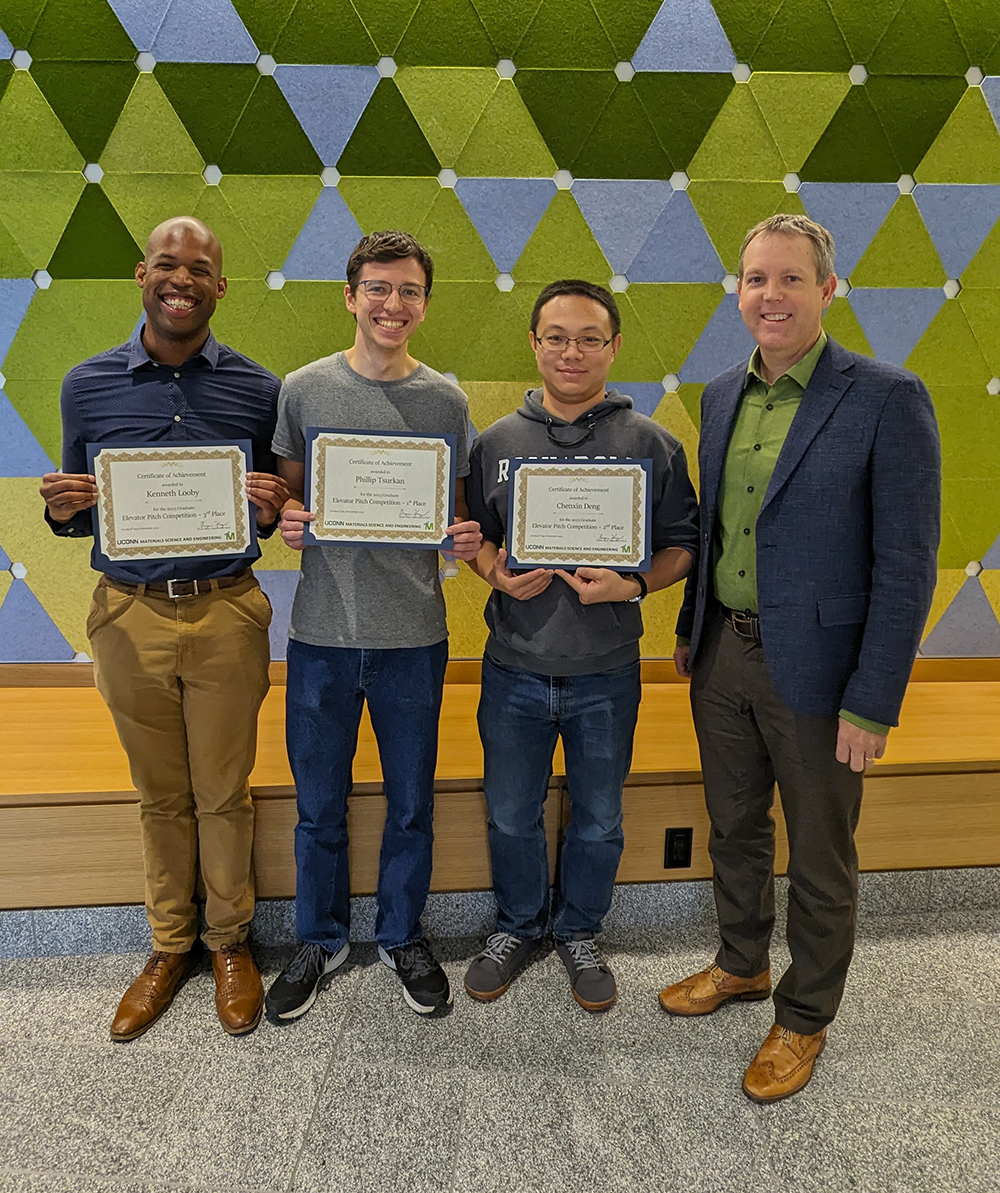
From left to right: Kenneth Looby (3rd place), Phillip Tsurkan (1st place), Chenxin Deng (2nd place), and Bryan Huey (MSE Department Head).
On Friday October 27th all second and third year MSE graduate students (M.S. and Ph.D.), gathered in Science 1 to compete in the annual Fall 2023 MSE Graduate Student Elevator Talk Competition.
Each participant delivered a presentation within a strict two-minute time frame accompanied by a maximum of two PowerPoint slides to convey the essential information of their research. Faculty judges assessed and determined the first three winners based on their presentations. The respective prizes awarded were $100, $75, and $50.
Among the twenty-four MSE graduate students who presented their work, Kenneth Looby secured 3rd place with his research titled ‘Effects of Strain Hardening and Alloying on the Strength of Al-Mg-Si Alloys’.”I love that UCONN’s Materials Science & Engineering program provides ample opportunities to build our professional skills,” Looby said. “The elevator pitch is a great way to succinctly summarize and present our research to other scientists and engineers. I enjoyed the challenge of condensing months of research into a short time period. I believe this skill will help me better prepare for conferences, interviews and other science communication opportunities. I am grateful to be part of a community that values our development as materials scientists and engineers.”
Chenxin Deng earned 2nd place, for his research titled ‘Unraveling Structure-Performance Relationship of Nanoarray Anodes in Water Electrolysis’. Deng described his research as “Altering the structure of nanoarray anodes and test conditions to understand the relationship between electrode structure, electrolyte environment, and the water electrolysis performance.”
Lastly, Phillip Tsurkan won 1st place for his research titled ‘Understanding and Characterization of the Phase Stability and Dynamic Deformation Behavior of Cu-Fe Based Microstructures’. Tsurkan noted, “Investigating material behavior under extreme conditions is very important, but it can be difficult for people unfamiliar with the topic to understand. Being able to communicate research in any field to any audience in an effective way is very difficult, but presentations like these are great practice.”
Author: UConn MSE Sweeps the 2023 ASM International Materials Challenges
You will be redirected shortly.
https://today.uconn.edu/2023/11/uconn-mse-sweeps-the-2023-asm-international-materials-challenges/#
Author: Learn Enough that the Unfamiliar Becomes Familiar
By Alec Arbia, Written Communications Assistant
“I think what inspired me to enter this field was how unfamiliar everything about it was,” says Francis Kyle Cielo, MSE alumnus. “Before I was introduced to materials science and engineering (MSE), I already had some idea as to what other engineering majors entailed. But my curiosity of how the principles in MSE affected a variety of things in our daily life is what really drove me to enter the field.”
Cielo’s introduction to MSE took place at a UConn Engineering Career Fair. “I remember there being some students from the UConn Material Advantage Student Chapter (UCMA) at the booth. They were very passionate in explaining how structure affected properties, processing affected structure, and examples of where this was put into action. I think having such an engaging conversation with students who truly loved learning more about their field is what inspired me to learn more and join them. This kind of energy is something I also like to express when talking to others about my field.”
The best classes Cielo took at UConn were the laboratory classes. He made sure to mention MSE 2001: Introduction to Structure, Properties, and Processing of Materials I, MSE 3055: Materials Processing and Microstructures Laboratory, and MSE 3056: Mechanical Behavior Laboratory. “The hands-on learning opportunities were some of my favorites. I loved being able to work on a team, brainstorm ideas about how we were going to test our hypothesis, and then perform said tests.”
Wanting to see how this lab experience translated to an engineering career in industry was what inspired Cielo to enter his current field. “I was cutting heat-treated samples, mounting them in epoxy, and then etching and viewing microstructures in the microscope. I started out as a technician in a metallurgical lab and my sole goals were to absorb everything about my job as well as figure out how my experience in UConn’s MSE program could help me in my current position. I enjoyed my time in the lab when I started out my career because there was a sense of familiarity to it as the MSE labs were at UConn.”
“However,” Cielo elaborated, “I wanted to dive more into the processing side to see what was happening when processing these samples that did things like change its hardness and affect its microstructure. Eventually, I made my way to becoming a metallurgical engineer at PCX Aerosystems Manchester where I’m now helping with a variety of processes that involve my metallurgical knowledge from school, from my own research, as well as from asking questions to various colleagues I’ve made so far in my career.”
One important part of Cielo’s job involves supervising PCX’s metallurgical lab inspection process. “In the lab, we inspect the case and core properties of test samples via micro hardness testing and microstructural evaluation. Making sure test samples are prepared properly with repeatable results is crucial when we test the samples later. This means there’s a lot of process control involved by making sure we have samples that represent the gears. We also check samples for surface carbon content using a carbon analyzer in order to check our carburizing process. All of these are paramount to making sure our processes are giving us our desired properties.”
Another aspect of the job is working with heat treaters to make sure their equipment is maintained, calibrated, and functioning so as not to affect production. “This includes process development, troubleshooting heat treat issues, testing our furnaces & instrumentation for uniformity/accuracy, and understanding how equipment impacts the process and product.
Being a metallurgical engineer also includes some degree of involvement with quality assurance. Periodically, we need to help prepare for upcoming audits (NADCAP, AS9100, etc.) to make sure our lab procedures and heat treat instructions are up-to-date and are giving us consistent, reliable results during our processing and inspection.”
Separately, Cielo is working on researching new heat treatment technologies to upgrade PCX’s heat treat department. “This directly affects our heat treatment capabilities and ensures we can expand the capacity of our heat-treating gears and other power transmission components. Our power transmission products are used mainly in helicopter gearboxes which means making sure we’re using proper equipment is significant not just for the company, but for our customers as well.”
“I’m also involved in another project in which I’m helping inspect the results of an electron beam welding process using metallographic techniques to effectively double check an ultrasonic/radiographic inspection,” Cielo said. “This includes developing an etching process to check the prior austenite grain boundaries of a welded part, in addition to showing how the weld affects hardness across the weld pool/heat-affected zone.”
“Etching to find prior austenite grain boundaries isn’t anything new in the industry,” Cielo confessed. “There’s a lot of literature out there that details certain methods as to the etching process based on material with slightly varied methodology. However, so far, it has required a lot of trial and error. I’ve had to not only do a lot of research as to how to process the weld samples, but also consult experts in the industry who are more familiar with the technique. These parts that we’re inspecting are also ending up in helicopter gearboxes so making sure they’ve been proven to be inspected properly is critical to manufacturing.”
When asked what advice he had for current materials science and engineering students, Cielo said the following: “Don’t hesitate to work with colleagues in your classes and ask questions amongst yourselves. It might sound pretty simple, but I think it’s something we typically forget to do from time to time. There’s nothing better than working together to figure out what you learned in class. What I find important is reinforcing the habit of learning through other peoples’ perspectives.”
Author: MSE e-Bulletin 2023
Welcome to our 2023 Outreach Bulletin! This publication is intended to share news stories and features about departmental accolades, research being conducted by MSE faculty, and alumni interviews that highlight our students’ diverse accomplishments post-graduation.
We hope that you will find inspiration in the many ways in which UConn MSE continues to grow and diversify while remaining on the cutting edge of research and innovation.
INSIDE
3 Department News
11 Undergraduate Students
13 Senior Design Day
15 Graduate Students
25 Alumni
Author: MSE Grad Student Wins Second Place In MS&T Poster Competition
By Alec Arbia, Written Communications Assistant
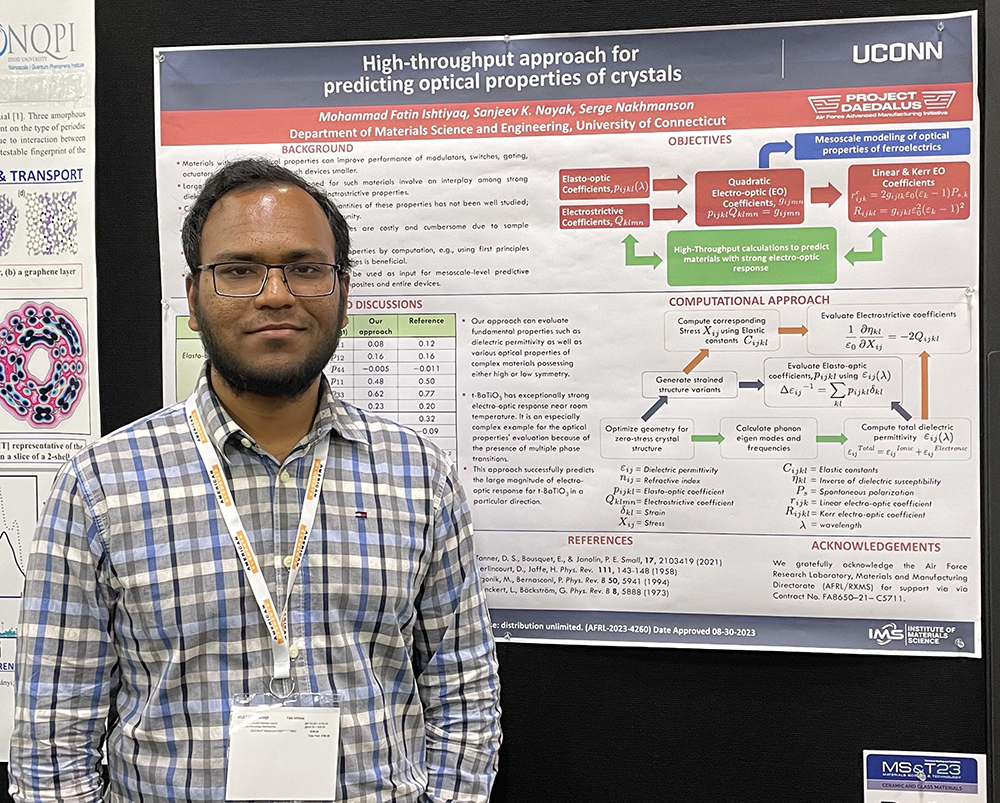
Fatin Ishtiyaq, Ph.D. student in materials science and engineering, won second place in the Material Advantage Graduate Poster Contest
The Materials Science & Technology Technical Meeting & Exhibition (MS&T) is a well recognized annual forum for fostering technical innovation at the intersection of materials science, engineering, and applications. The MS&T conference was held this past October 1st through 4th, 2023, and a UConn graduate student took home second place in one of its renown poster competitions.
Fatin Ishtiyaq, a UConn Ph.D. student, won second place in the Material Advantage Graduate Poster Contest for his poster titled High-throughput Approach for Predicting Optical Properties of Crystals. He happily received a $150 prize.
In an explanation of his research, Ishtiyaq said, “In optical materials, the refractive index is the most important property. Usually, refractive index cannot be changed on the fly, but in materials with strong electro-optic couplings this can be done by the application of an electric field. Therefore, predicting electro-optic coupling in materials can be of paramount importance for advanced applications. We developed a general approach to compute these couplings in optical materials of any symmetry. These concepts can be utilized in devices such as modulators, switches, gratings and actuators, which can improve applications including photonics, optical communication systems, heads-up displays, and military and space technologies.”
Professor Serge Nakhmanson, Ishtiyaq’s advisor, says of the win, “I am delighted for Fatin, who represented his research and that of our group with such finesse and confidence. At the same time, I am very happy that, apparently, our modeling studies of materials optical properties are appreciated by the community – including our Air Force Research Lab (AFRL) colleagues, who were among the MS&T conference attendees.”
Ishtiyaq began attending UConn in 2020 to obtain his Ph.D. in materials science and engineering. He is expected to graduate in 2025.
Author: Two UConn Professors Recognized At The Annual American Ceramic Society Meeting
By Alec Arbia, Written Communications Assistant
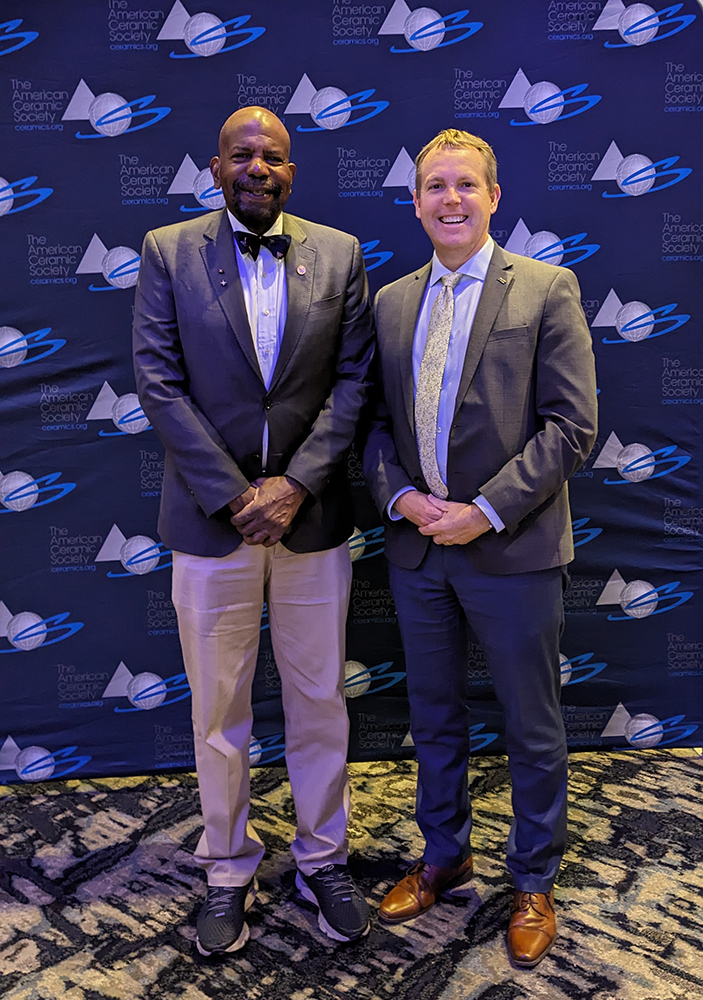
University Professor Dr. Cato T. Laurencin (left) and Department Head of Materials Science and Engineering Bryan Huey, Ph.D., (right)
The American Ceramic Society (ACerS) is a nonprofit organization of more than 10,000 ceramic and glass professionals that focuses on scientific research, emerging technologies, and applications involving ceramic materials. At the annual meeting in early October, two UConn professors were recognized.
Bryan Huey, head of UConn’s Materials Science and Engineering (MSE) department, was inducted as a society fellow. ACerS fellows are selected based on outstanding contributions to the ceramic arts or sciences, either through broad and productive scholarship and service in ceramic science and technology, or by conspicuous achievement in the ceramics and industries. Dr. Huey previously led the Basic Science Division, ran their annual EMA conference, and was just announced as the lead organizer for the ~1000 attendee 2025 PacRim meeting.
University Professor Dr. Cato Laurencin, chief executive officer of the Cato T. Laurencin Institute for Regenerative Engineering, received the BioCeramics Division’s Larry Hench lifetime achievement award. This award recognizes only one recipient each year for their lifetime dedication, vision, and accomplishments in advancing the field of bioceramics, particularly in contribution to translating technology towards clinical use.
The broader conference (MS&T’23), in Columbus Ohio, also featured a symposium organized by Professor Serge Nakhmanson, a parallel conference in which Professor Mark Aindow was a key organizer, and additional talks by professor Alexander Dupuy as well as many of UConn MSE students and postdocs.
Author: “MSE Is Not Just A Subject; It’s A Constantly Evolving Universe Of Possibilities”
By Alec Arbia, Written Communications Assistant
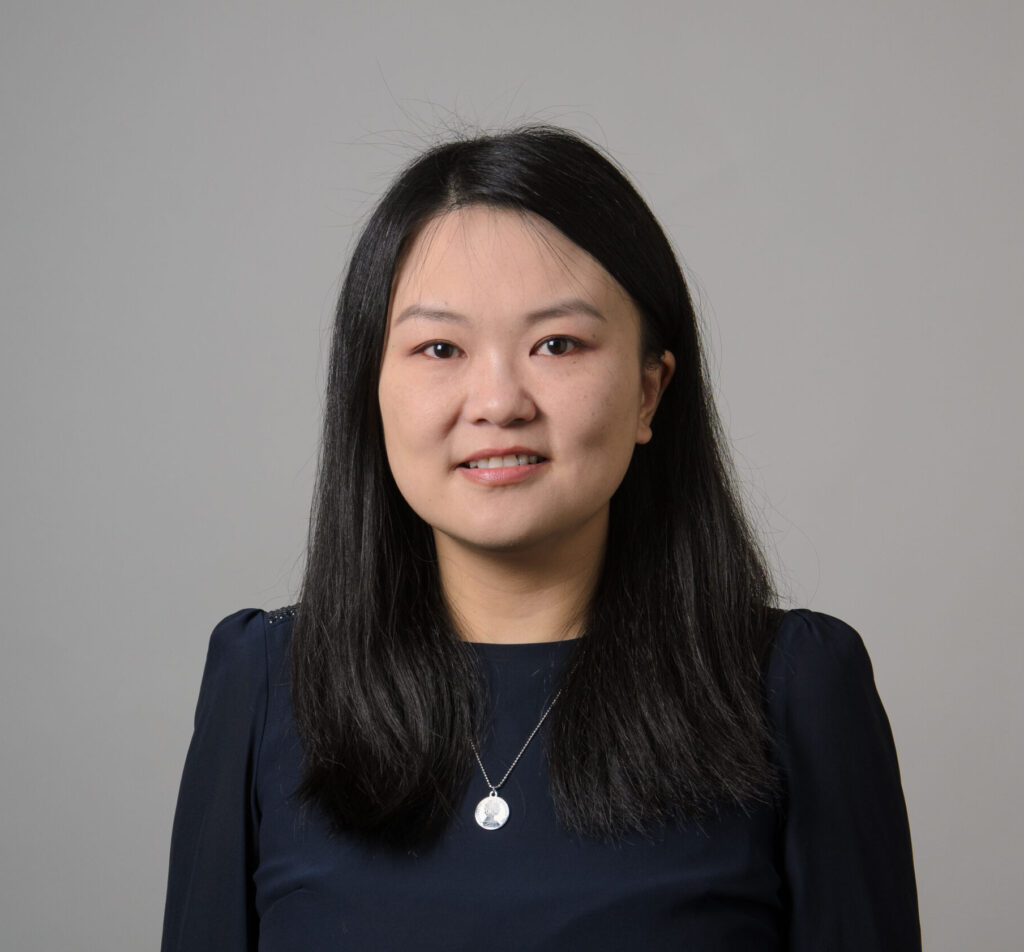
MSE Assistant Professor Yuanyuan Zhu; Director InToEMCenter, Innovation Partnership Building | UConn Tech Park
UConn Professor Yuanyuan Zhu first got into the field of materials science and engineering (MSE) because she found it fascinating. “When I was in college, I realized that MSE was this amazing blend of chemistry, physics, and engineering, all rolled into one. That interdisciplinary aspect was a big draw for me, and it made the subject matter incredibly complex but interesting. What keeps inspiring me in MSE is the captivating blend of possibilities that it offers. We’re in this amazing era in materials characterization, as we can dig deep into the atomic arrangement, figure out the exact chemical makeup in specific spots, and unravel the mysteries of why materials behave the way they do.”
What’s even cooler, Zhu went on to say, is that MSE isn’t just about seeing things at the tiniest scale. “My research focuses on going beyond the static and isolated views we often get. We want to understand how materials work in action, how they degrade over time, and – most importantly – how we can make them last longer or even recover their performance. MSE is the thrill of limitless possibilities and the chance to apply all of this knowledge to solve real-world problems. That’s what keeps me hooked in this incredible field!”
Zhu’s current research is about connecting the dots between the tiniest building blocks of matter – like atoms and nanoscale structures – and the big-picture physical and chemical properties of materials. “It’s essentially about understanding how interactions at a fundamental scale affect the way materials behave on a larger scale. To do this, we’re using some cutting-edge tools and techniques, like in-situ environmental Transmission Electron Microscopy (ETEM). This technology lets us watch materials in action while they’re under different operation conditions, almost like capturing a live movie of their behavior at the nanoscales. We’ve also jumped into the world of Deep Learning-based computer vision. It’s a bit like teaching computers to see and analyze materials the way a scientist would, but with significantly improved statistically meaningful representations.”
In a nutshell, “our research is all about uncovering the secrets of how materials respond when they’re put to work – including under normal operation conditions as well as under extreme accident conditions for safety evaluation. We’re looking into how materials evolve, how they perform, and how we can use this knowledge to develop better catalysts, explore safer fusion energy, and contribute to a more sustainable future. It’s an exciting journey, and we’re just scratching the surface of what’s possible.”
An important part of this research is its real-world application. “By delving into the dynamic behaviors of atoms and nanoscale structures, and linking them to macroscopic materials properties, we’re uncovering a realistic picture about how things work under technologically relevant conditions. For instance, we’re diving deep into fusion energy materials, which could be a game-changer. If we figure out how materials behave under extreme fusion reactor conditions, we might unlock a whole new world of clean and sustainable energy sources. That could mean a future with way less reliance on fossil fuels.”
Zhu said that the best way to think about how in-situ materials characterization matters to everyone is like this: “Imagine if we could make industrial chemical processes cleaner and cheaper. That would mean less pollution in the air and more affordable fuels, which is a win for everyone. That’s the kind of thing we’re exploring with catalysts and their regeneration strategy, making the production more eco-friendly and cost-effective. Simply, our research isn’t just about science in a lab. It’s about making things work better, safer, and greener – which could benefit individuals, businesses, and whole industries. It’s a pretty exciting journey we’re on!”
When asked about the importance of including students in such incredible research, Zhu said that “working with students isn’t just beneficial; it’s essential to our research. It’s like adding a turbo boost to the research in this field, and it’s a win-win situation. For one, teaching and mentoring students sharpens my ability to communicate complex scientific concepts effectively. When I can explain something to a student in a way that they understand, it deepens my own understanding too. But perhaps the most exciting part is seeing students grow and develop. Watching them apply what they’ve learned to real-world research problems and witnessing their “aha” moments is incredibly rewarding. It’s like passing the torch to the next generation of scientists and researchers, and it fills me with hope for the future of our field.”
Earlier this year, Zhu was granted the NSF Early Career Award in support of her research project titled “CAREER: Mechanistic Understanding and Strategies to Improve the Regeneration of Supported Nickel Catalysts for Methane Conversion.”
Zhu explained this research project as one that “addresses a critical issue in the field of thermal catalysis, particularly in the context of mitigating greenhouse gas emissions and advancing sustainable energy solutions. The project focuses on gaining a comprehensive understanding of regenerating supported nickel catalysts used in methane conversion. While previous studies have predominantly concentrated on making catalysts more stable, this project uniquely centers on catalyst regeneration. By filling this critical knowledge gap, we aim to extend the operational lifetime of methane catalysts, ultimately contributing to enhanced carbon management and sustainable reduction of greenhouse gas emissions.”
This research grant brings nearly $600,000 to the university. “This funding plays a vital role in supporting students and the research endeavors outlined in the project over the next five years. These objectives include gaining fundamental insights into catalyst regeneration, carbon gasification, and potential regeneration strategies applicable to other supported metal catalyst systems. The scientific and environmental implications are truly global—with the potential to address urgent challenges like energy sustainability and emissions reduction to better the environment. I am enthusiastic about the opportunities this award offers to contribute to a more sustainable future.”
When it comes to those considering majoring in or pursuing a career in MSE, Zhu’s advice is as follows: “MSE is not just a subject; it’s a constantly evolving universe of possibilities. The key is to keep your curiosity alive. Also, remember that not every experiment will yield the results you expect. That’s often when the true learning happens. Persistence and resilience are your best companions. Always ask questions and remain hungry for knowledge. In MSE, innovation thrives when we challenge established norms and seek inventive solutions to the difficulties we encounter.”
MSE department head Bryan Huey adds, “and it’s not just about catalysts and microscopes and improving our environment—other materials engineers are inventing the core the next generation of high temperatures materials for aerospace, semiconductors for AI processing, batteries for our electrified world, artificial muscles and tissue for public health, new plastics and glass and composites, and so much more. Professor Zhu really exemplifies how the field of materials engineering provides the opportunity to build a career around your passions to improve the world around you.”
Lastly, Zhu said, “remember that MSE is a dynamic and rewarding field with vast potential for innovation and impact. It’s not just about studying materials; it’s about shaping the future. By nurturing your curiosity, continuously expanding your knowledge, and always keeping the bigger picture in mind, you’ll embark on a journey that promises a fulfilling and meaningful career in MSE. So stay curious, keep learning, and embrace the exciting challenges that lie ahead!”
Author: Congratulations to MSE Professor Radenka Maric
You will be redirectly shortly.
UConn Celebrates the Inauguration of Radenka Maric as 17th President
Author: Working Towards Safer Vessels For Our Navy
By Megan Andrew and Alec Arbia, Written Communications Assistants
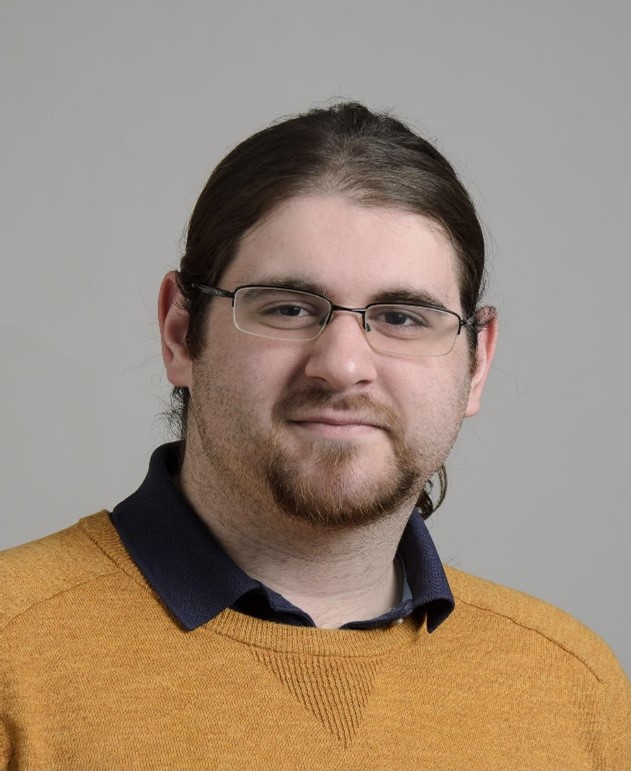
Matthew Caruso is a Ph.D. student in Professor Lesley Frame’s research group studying weld cracking and weldability
After current MSE Ph.D. student Matthew Caruso received his bachelor’s degree in chemistry, he was driven towards more interdisciplinary research that would broaden his skillset in engineering.
Caruso’s undergraduate advisor at the University of Tennessee, Knoxville (UTK) raved about the Northeast. After deciding it was the perfect place to pursue his higher education, Caruso discovered “UConn’s MSE department has a ton of great facilities.”
“I have always been fascinated by x-ray and neutron diffraction as analytical techniques,” Caruso said. “I am also really interested in how various thermal processes affect the residual stress state of materials. The thermal processes that I am focusing on for my thesis are welding and precipitation hardening. So, looking at residual stresses using x-ray and neutron diffraction blends my interests nicely.”
Caruso went on to explain why he made the jump from a BS in chemistry to pursuing a Ph.D. in materials science and engineering. “I looked around and realized that my undergraduate research was requiring a lot of knowledge of electronics and practical programming, as I was building a small single-wavelength spectrophotometer from scratch. I was constantly asking my engineering friend for advice. Once I realized how interdisciplinary real research could be, it opened my eyes to the fact that I didn’t have to stay in chemistry.”
Currently, Caruso investigates weld cracking and weldability as part of Professor Lesley Frame’s research group working with Electric Boat. Specifically, Caruso’s focuses on ductility dip cracking, which happens when the welded metal cools and solidifies. It is identifiable by the formation of small cracks which can propagate and weaken a joint over time. This research is funded by the National Institute for Undersea Vehicle Technology (NIUVT).
Caruso is seeking to uncover the source of certain cracking in welds by analyzing the effect of residual stress on cracking. “We can look at the crack characteristics and features using optical and electron microscopy. We can look at the residual stresses using x-rays and neutrons.”
Ductility dip cracking is an important topic that continues to affect the metalworking industry. It occurs in metals that are currently used in naval vessels. “Preventing this type of cracking can result in safer vessels for our navy.” Caruso hopes his research will aid in our understanding of ductility dip cracking and lead to approaches that will mitigate its occurrence.
The best part of working within the UConn MSE department, Caruso said, is the tight-knit community. “The educators within the department are stellar. I am constantly finding ways to apply what I am learning to my own research in clever ways.” He went on to cite emeritus professors Theo Z. Kattamis and Harold Brody as “treasure troves of metallurgical knowledge and experience.”
Caruso had many good things to say about his faculty advisor, Professor Lesley Frame. “She’s very hands-on and makes time for all her students, despite the fact that our research group is constantly growing. Every time I meet with her, I leave with new ideas and knowledge to propel me further in my work. I don’t think I could’ve asked for a better advisor.”
Professor Frame had equally kind words to share with us about Caruso. “He’s mastered every analytical technique I have pushed his way, and he is always looking for better ways to understand materials’ behaviors. He has been a joy to work with, and I’m very excited about the research we will do together as he completes his PhD.”
Like most Ph.D. students, Caruso is a part of the teaching assistant program. However, Caruso experienced a slightly different version of this as an aid to Undergraduate Lab Director, Professor Fiona Leek’s Senior Design course. Caruso explained, “I’ve been afforded the benefit of what I would consider to be a non-traditional TA role, mentoring some of the teams and helping to keep them on track. I find working with driven students to be extremely rewarding.”
Caruso was also excited to share about the work he did this past summer. “For a week in September, I worked at Oak Ridge’s High Flux Isotope Reactor on the HIDRA instrument to measure residual stress with neutrons. It was an incredible experience, and I look forward to returning to extend my research further.”
“In August,” he continued, “I participated in the National School for X-Ray and Neutron Scattering. It’s a joint 2-week program between Oak Ridge National Lab and Argonne National Lab. They fly out 60 prospective users to ORNL and ANL to learn about x-rays and neutrons. The first week was spent learning about neutron scattering at ORNL, and the second week was spent at ANL learning about synchrotron x-rays. We learned everything from how these amazing facilities operate to what the specific applications are for x-rays and neutrons. All of my cohorts were great, and we have continued to keep in touch after the program. In fact, I ran into one of them during my instrument time in September, and look forward to seeing more of them around the various user facilities.”
Caruso looks into the future with excitement, even as he is challenged by the research. His enthrallment with x-ray and neutron scattering pushes him to aim for a career in a national lab once he completes his PhD.
Author: MSE Professors’ Work Featured on Cover Of Journal Of Applied Physics
By Alec Arbia, Written Communications Assistant
A publication by Material Science and Engineering (MSE) Professors S. Pamir Alpay and Serge Nakhmanson, “Modeling structure–properties relations in compositionally disordered relaxor dielectrics at the nanoscale,” is being featured on the cover of the Journal of Applied Physics. Two other researchers involved with this publication are UConn alums Ashok Gurung and John Mangeri.
Their work involves understanding the influence of microstructure and morphology in dielectric materials, such as relaxor Ba1-xSrxTiO3, on their properties and performance in a variety of technological applications. They studied the frequency-dependent dielectric response of this solid-solution system while accounting for the local fluctuations in its composition. To do this, they adopted a phase-field method combined with finite element based simulations.
S. Pamir Alpay has been a part of UConn’s MSE department since 2001. He served as MSE’s Department Head from 2013-2017, and was made a Board of Trustees Distinguished Professor in 2020. Currently, he serves as UConn’s Vice President for Research, Innovation, and Entrepreneurship. Serge Nakhmanson has been at UConn since 2013 and is an Associate Professor in MSE and Physics departments. Currently, he serves as MSE’s Director for Accreditation.
Author: MSE Welcomes Alexander Dupuy to the Department
By Alec Arbia, Written Communications Assistant
We are excited to welcome our newest faculty member, Alexander Dupuy, who joins our department as an assistant professor this fall.
Having received his Ph.D. in mechanical engineering from the University of California, Riverside in 2016, Dupuy went on to work for the University of California, Irvine as a postdoctoral scholar and then as assistant project scientist before joining us here at UConn.
With 16 years of research experience in ceramic processing and synthesis, particularly using Spark Plasma Sintering (SPS), Dupuy makes for an exciting addition to the department. His research interests include materials related to electrifications (such as energy generation, storage/batteries, delivery, and conversion), materials for high temperature and extreme environments, and the processing, properties, and behavior of high entropy ceramics.
Dupuy previously authored 23 scientific publications. He also has significant mentorship experience, guiding 7 Ph.D. students, 11 undergraduate researchers, and 5 senior design students in their work over the past 13 years.
“I am thrilled to become a Husky,” Dupuy tells us. “The MSE department, School of Engineering, and Institute of Materials Science have made UConn a world-renowned institution for materials science scholarship and innovation. I am so pleased to be joining UConn and contributing to its important teaching and research missions.”
Author: Pamir Alpay Appointed Vice President for Research, Innovation, and Entrepreneurship
You will be redirected shortly.
https://today.uconn.edu/2023/09/message-to-the-university-community-3/
Author: Scientists Create New Material Five Times Lighter and Four Times Stronger Than Steel
You will be redirected shortly.
Author: Be Part of the Materials Science Revolution
You will be redirected shortly.
https://studyinternational.com/news/be-part-of-the-materials-science-revolution/
Author: Strong as Glass
You will be redirected shortly.
Author: Brand-New Science 1 Facility Touted as Game-Changer for UConn
You will be redirected shortly.
Brand-New Science 1 Facility Hailed as Game-Changer for UConn
Author: High School to Advanced Manufacturing Development: Vincent Palumbo’s Journey to Mott Corporation
By Megan Andrew, Written Communications Assistant
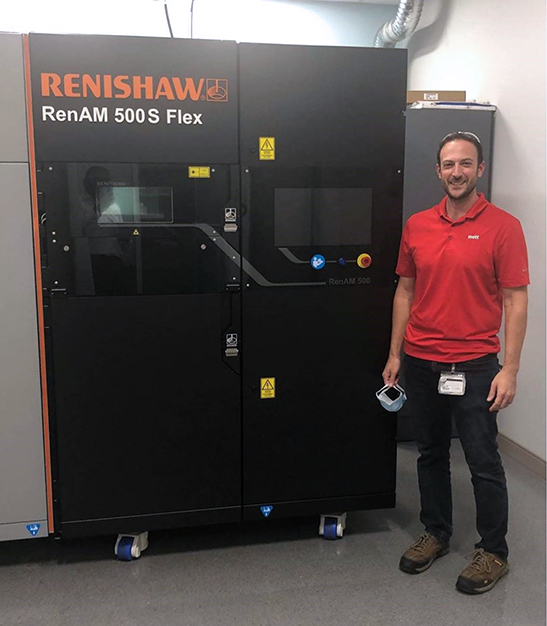
Palumbo next to the Renishaw AM 500S Flex after its installation in the Mott Customer Innovation Center.
UConn MSE Alumnus Vincent Palumbo (PhD 2013) was inspired to enter the field of materials science and engineering after attending the E2K high school engineering program at UConn.
“It was a way to explore all the engineering disciplines at the university. You spent a week there in the summer, and we got to see all the engineering disciplines, from civil to environmental, mechanical, materials science, chemical, etc. Materials science was the one that stood out to me the most,” Palumbo said. “They had really interesting, hands-on demonstrations and discussed applications of various materials, how they are processed, and how some properties can be tuned to fit specific end uses.”
That E2K program was just the first step along an impressive career path for Palumbo, who is now Program Manager for Advanced Manufacturing Development at Mott Corporation.
Mott Corporation develops and sells filtration and flow control components across a wide variety of different industries. From orange juice shelf-life stabilization, to the treatment of wet macular degeneration, to electrolysis for green energy, to National Oceanic and Atmospheric Administration satellite longevity, Mott has a worldwide reach (and beyond…).
Palumbo is specifically responsible for vetting new equipment, collaborating with other companies in additive manufacturing, and working on root-cause failure investigations. “It’s a lot of responsibility pushing new, state-of-the-art technology acquisitions for our company. The company is growing very fast, which is great. I hope to be instrumental in getting our new capabilities up to speed, supporting production and research at the same time,” he said.
Palumbo’s ability to excel in this position has been 15 years in the making.
After sparking his initial interest in the E2K program, Palumbo decided to attend UConn for his undergraduate degree in 2004. The University had one of the top public programs for materials science, and Palumbo had access to state-of-the-art equipment and facilities. Palumbo recalled, “UConn had a lot of characterization equipment available to the students that were working at the time, and that was somewhat unique.”
After his first four years, Palumbo decided he wasn’t finished at UConn. His decision to pursue his PhD at UConn came easily, he said. “I liked the people there, the professors, and the program overall, so I honestly didn’t have much motivation to look elsewhere.”
Working with Professor Bryan Huey in the undergraduate labs also played a role in his continued education at UConn. “I really liked the work we were doing, I liked working for him in general, and I got to see a lot more of the university than I would have if just staying in course work. That really helped foster my interest in pursuing advanced degrees and staying in the UConn MSE program.”
After graduating with his PhD in 2013, Palumbo stayed at UConn for about a year as a postdoctoral fellow before moving on into the workforce. When a recruiter from Mott reached out to him, Palumbo found what he was looking for in a career. “I went for a tour and the interview, and I was impressed with what I saw. The capabilities in their lab, and the types of products they were making, were very interesting. So, I just took it from there, and here I am eight years later,” he explained.
Originally hired as a Metallurgist, Palumbo first focused on lab requests that would help solve production floor issues, quality issues, doing failure analysis, and root cause investigations. “You know, utilizing the materials science techniques that I had learned from my undergraduate and graduate careers at UConn,” he laughed.
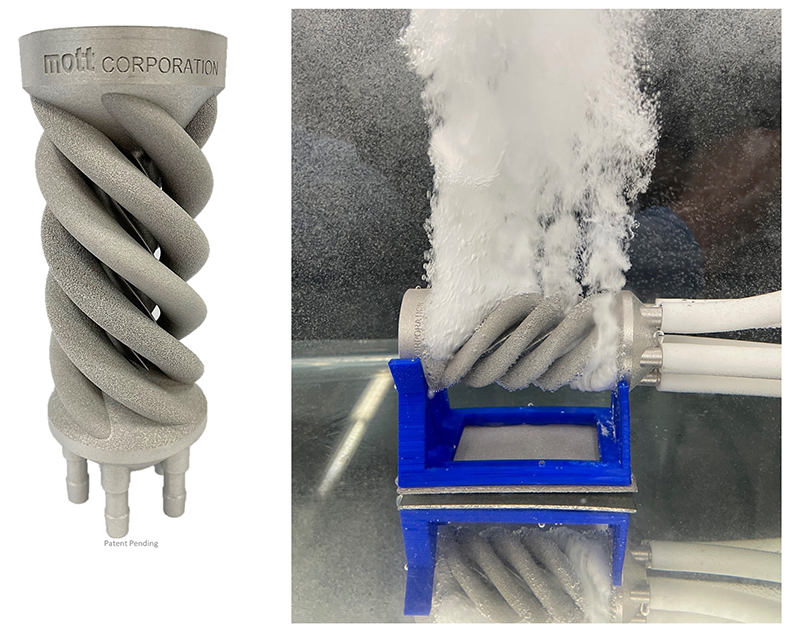
An example of a printed component being used for gas-to-liquid mass transfer aka “sparging”. This part, created in a single build, features 5 independent elements with different porosities.
“I was able to come in having familiarity with most of the lab equipment in Mott’s R&D group. Tools like the scanning electron microscope, X-ray fluorescence system, and mechanical testing machines. I had experience with those techniques because of the curriculum at UConn and some of the research efforts that I did for my masters and PhD work, so I was able to hit the ground running. Many graduates from other universities are familiar with those same tools, but they didn’t get to run such equipment themselves. They had to give the samples to a grad student who would run it and give them the data. I think that’s a big benefit which UConn offers—access to all of the modern tools materials engineers use, gaining real research experience, and being hands-on. It really does pay off.”
From there, Palumbo moved into a Research Scientist role examining new capabilities development, where he worked with a team to “leverage new techniques and technologies, which we had not yet integrated into Mott, to make new or improved products for our company and clients,” he said, “One of those concepts was metal additive manufacturing. Through collaboration with service providers, equipment vendors, and the additive manufacturing center at UConn, I was able to narrow down what specific additive manufacturing technique and equipment manufacturer was the right fit for us. We then acquired the equipment, spent some time refining the processes, developed a range of media suitable for filtration and flow control applications, and started making prototypes for customers and small run production parts. The program is really taking off.”
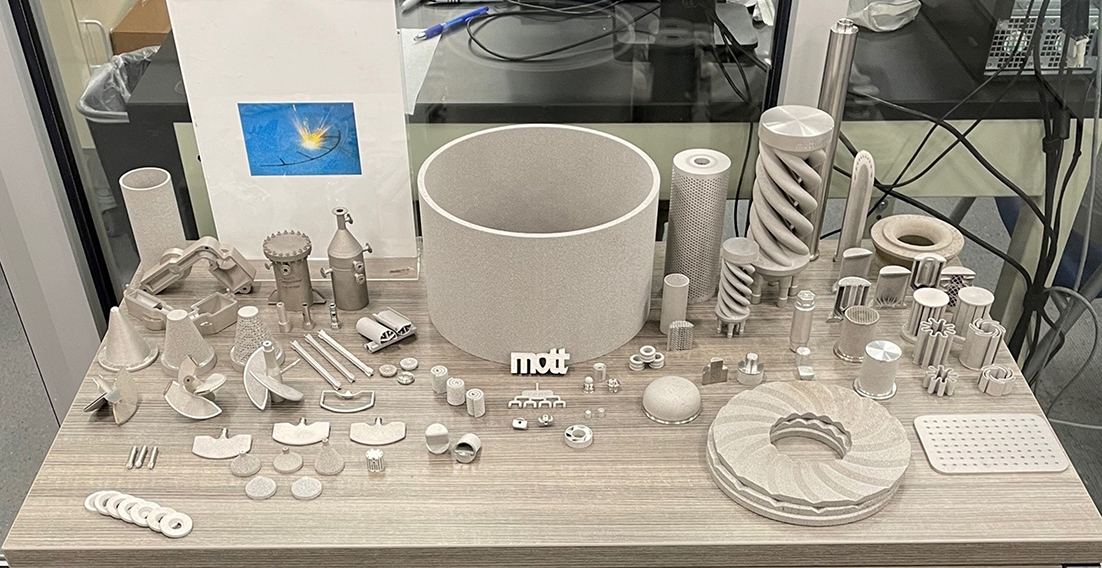
Examples of the unique geometries and consolidation of parts made possible by the metal additive manufacturing process. These components all incorporate precisely controlled porosities for various filtration and flow control applications.
At the beginning of this year, Palumbo became the Program Manager for Advanced Manufacturing Development, where he identifies and proves out manufacturing and characterization equipment that supports Mott’s strategic growth and enables new fabrication capabilities. “There are ten different vendors that are going to make the same machine. It is important to consider how we compare those and know which is the right fit for us in terms of everything from the capabilities of the machine, its footprint, the resources required to operate it, and the level of technical support that the equipment manufacturer offers. Then, work on the logistics of how to bring those pieces in and implement them into the workflow of our facility.”
It’s his favorite part about the job. “It’s a longer process, it has its ebbs and flows of whether it’s going to pan out or not, but when you finally do get the approvals, and you can justify the expenses, you can make a case for why we need a particular piece of equipment. Once you have that thing working out on the floor and people can see its benefits, that’s very fulfilling,” he said.
Palumbo also collaborates with other companies that are doing additive manufacturing. “We can leverage our strengths, and theirs, to come together to advance what we’re trying to do in the world of additive manufacturing, supporting our ultimate efforts of filtration and flow control,” he said. To do this efficiently, Palumbo said he often draws from different interdisciplinary and collaborative work he did in the UConn labs.
Although in a more managerial role, Palumbo still appreciates root-cause investigations around the lab as one of the most rewarding parts of his position at Mott. “That means finding why something failed and how we can prevent it in the future: Is it back to the raw materials stock, is it a part of the processing parameters, or was it simply just a mistake that somebody made? Going through all those possibilities, putting together the timeline of how and why something happened, and identifying how we can grow and be better in the future to avoid similar issues, that’s really rewarding,” he said.
Palumbo offered some advice to students looking to find a company and career path where they will be consistently excited to go to work.
“Do the internships as early as you can. Don’t be afraid. Just put yourself out there, talk to people, go to the career fairs, do undergraduate student research if it’s available, work with a professor for a couple of semesters, get that experience because that really does stand out,” he said. “It doesn’t have to be the exact thing you are learning about in a course. If there is something that interests you and you can relate it somehow, go after that, because that’s just going to make you better at your future jobs. If you truly have an interest in what you are doing, it’s a lot more rewarding.”
Department head Huey notes “Dr. Palumbo’s comments echo what so many of our alumni tell us…about the importance of hands-on experience, and in enjoying what you do. That’s one reason one UConn MSE undergraduates earn more in-lab credits than in any other engineering major on campus. We recognize the value of these experiences, and how they help students be prepared for internships and future jobs. And there isn’t a program in the country with newer or more impressive facilities. That includes 4744 square feet and >$500k of recent equipment investments exclusively for our undergraduate labs. And this is amplified 50-fold across the more research-focused rest of the new Science1 building, along with the already-impressive resources at IPB and C2E2.”
Huey says, “Most of all, it’s exciting to see the contributions our alumni like Vincent are making as materials engineers.”
Author: EAG Laboratories Scientist Shares Insight into Nanotechnology Research
By Megan Andrew, Written Communications Assistant
Nanotechnology is a rapidly expanding field that has the potential to change the way we live, work and communicate. With an increasing number of applications and products that utilize nanotechnology, the need for scientists who can develop and test these materials is growing. Nanoindentation/AFM Scientist for EAG Laboratories, Tyler Flanagan, is at the forefront of this field. In an interview, Flanagan shared insight into his work and how he became a nanotechnology scientist.
Flanagan received his PhD in materials science and engineering from the University of Connecticut, where he studied under Professor Seok-Woo Lee. Lee was a great inspiration to Flanagan, and provided him with the support he needed to complete his PhD. Lee was “very supportive. PhDs are hard, very time-consuming, and most people want to quit at a certain point. I definitely considered it myself, but he kept me going, and I’m glad he did,” said Flanagan.
Before his enrollment at UConn for his graduate studies, Flanagan majored in physics. However, upon doing research into solid state materials like semiconductors, “it kind of just seemed like a natural transition from what I was doing. I really liked the research I did with dislocations and metals,” Flanagan said.
Flanagan’s expertise in nanoindentation is what led him to his current position at EAG Laboratories. EAG Laboratories is a scientific services company that provides materials testing and analysis for clients in the academic, industry, biomedical, and aerospace sectors. Flanagan runs experiments for clients and works on a wide range of projects, from computer chips to medical devices. He runs AFM and profilometry to obtain surface topographies and mechanical testing. Flanagan said, “I work on basically a new thing every day.” Due to non-disclosure agreements, he cannot discuss specifics, “but you almost definitely have some products that I’ve worked on,” he said.
Flanagan’s time at the University of Connecticut prepared him well for his work at EAG Laboratories. “They initially hired me because of my expertise in nanoindentation, which is what I did during my PhD,” said Flanagan. EAG Laboratories recently built a custom stage in-house for nanoindentation in-situ in an SEM, something that Flanagan explored heavily for his thesis. Flanagan has also found that the writing skills he developed during his PhD have come in handy in his current job, as he reviews reports daily and writes several himself.
Recollecting on the courses he remembers from five years prior, Flanagan noted Professor Rossetti’s crystal structures course as being one of his favorites. He also specified Professor Huey’s characterization course as being particularly helpful “because that gave me an overview of all the things I interact with all the time here. For example, I’m able to look at XRD data, without having run it, and interpret it.”
Flanagan’s advice to current materials science and engineering students is to “look for something that’s in line with the skills you have. I know some people spend a lot of time looking for a job, but really you kind of just target it to what you want to do, or what you are interested in doing.”
As his journey continues, Flanagan said he is hoping to move into a more managerial position. “I don’t mind running tools all day, but ideally I want to move away from the bench at a certain point,” he said.
Flanagan is a scientist who is making significant contributions to the field of nanotechnology. His expertise in nanoindentation and AFM is especially valuable to clients in the industries he serves. As the importance of the field of nanotechnology continues to grow, scientists like Flanagan will play an essential role in developing new materials and technologies that will improve our lives.
Author: Make a Positive Impact on Someone Else’s Life
By Alec Arbia, Written Communications Assistant
Jake Lampron, MSE alum (BS’16), has been a Type I Diabetic since age 7. “When I was about 12 or 13, I began using an insulin pump manufactured by Medtronic. My familiarity with the product and desire to help others lead me to applying for jobs at Medtronic and ultimately getting an offer.”
When Lampron first arrived at UConn, he didn’t even know that materials science and engineering (mse) was a major. “I was planning to major in mechanical engineering. After taking Engineering 1000 and hearing all about mse, I thought that it may be a better path for me. One reason for this was my liking for chemistry, which seemed much more prevalent in mse than in mechanical engineering. Additionally, mse seemed to be on the rise in popularity among companies and I believed the job prospects would be better upon graduation.”
There were several professors that had a lasting impact on Lampron. “Professor Daniel Goberman was so passionate and always full of energy; his enthusiasm for this field and commitment to passing that along is what I always remember. Professor Seok-Woo Lee was a great teacher and his dedication to his students is something that I really admired and appreciated. Professor Harold Brody, my advisor, was a great mentor to me during my time at UConn.”
Lampron’s current job title at Medtronic is Materials Engineer II. “In my current role, there are two focuses. First, I support the released-product engineering team to keep materials and components available to support ongoing manufacturing. In this role, I support material change products brought about by material obsolescence, failures, or regulatory compliance. The selection of materials is based upon many criteria, but the most important things I look at include material properties and biocompatibility.”
“The second focus involves sustainability and ensuring a successful future for the company,” Lampron said. “With regulations becoming even more stringent, it is important to identify and utilize materials that will not be restricted and of course are safe for use. Identifying new materials-processing technologies is another important aspect of my role. It ensures we are manufacturing our products with the highest efficiency and cost effectiveness as possible.”
As a Type I Diabetic, Lamprom knows firsthand “the importance of these devices and how they can change lives. The most rewarding part of my job is knowing that the products I help to design and provide will be important for patients all over the world. Even though I am just a small part of the entire operation, I feel a sense of happiness realizing that I had some part in providing a positive impact on someone else’s life.”
Lampron was eager to talk about the future of this technology. “My team has been looking at the new regulations being set by the regulatory bodies and regions across the globe. When we identify nonconformances, I assist in performing investigations to understand the failures and see what changes need to be made. In some instances, big changes may need to take place in terms of the material being used or the way parts are joined together. A lot of my upcoming work will look at potential alternatives and different ways of manufacturing to remain in compliance with these new regulations. I am looking forward to this, as it gives an opportunity to think outside the box and allows me to use my materials background and knowledge to make safer and better products for those who really need them.”
What Lampron wants current mse students to know is simple: “This field is still on the rise and there are so many opportunities out there. A major in mse will give great insight into materials behavior and considerations for design, which is imperative to many roles within engineering. As for a career, I believe that many employers are realizing the need for more mse majors, which opens many doors. The nice thing about mse is that with our background there are so many different industries and positions available, which means we have the opportunity to choose a job that best aligns with our interests.”
Author: Work for a Company that Works for You
By Alec Arbia, Written Communications Assistant
Aliya Eichacker (MSE’16), currently works as a product development engineer at Prysmian Group, a company that specializes in the production of specialty electrical cables.
When asked what led to her accepting this position, Eichacker said, “I chose Prysmian Group because they truly care about advancing sustainability in their products and processes, and are also committed to improving gender equality in manufacturing and a strong female presence in leadership and STEM roles.”
In high school, Eichacker knew that she loved both chemistry and physics, and wanted to study both together in a way that would make an impact on the world. Materials science and engineering (mse) gave me that opportunity; I was able to learn about chemical structures, chemical kinetics, thermodynamics – and more – to combine into a full understanding of real-life materials that can be applied to a broad range of industries.”
It was Professor Pamir Alpay, now interim Vice President for Research, Innovation and Entrepreneurship, who motivated Eichacker to attend UConn specifically, as during a campus tour he was “attentive, passionate, and inspirational.”
“There were many professors who impacted my time at UConn and who gave me the time and resources that led me down my career path,” Eichacker remembered. “Professor Bryan Huey was my academic advisor for three years and taught me a lot about project leadership and critical thinking. Professor Harold Brody [Emeritus Professor] was my academic advisor during my first year, and I continued to meet with him throughout my time at UConn as a mentor for advice and guidance on my career.”
In regards to her current job, Eichacker explained, “Prysmian Group manufactures wire and cable for almost every industry: building wire, electronics, EV cables, power distribution, nuclear plants, oil & gas rigs, optical fibers for telecommunications and so much more. I work in the Research & Development Department with people all over the world to create new products for the wire and cable industry.”
“As Product Development Engineer, I primarily work on cost-savings projects and developing new products,” Eichacker said. “I work on Prysmian’s Electronics portfolio of wire and cable – think computer cables, fire alarm cables, security alarm cables, coaxial cables, etc. There’s a big push for developing new materials to use as insulation on cables, especially products that can be more sustainable or 100% recyclable. I also support quality issues, sales team inquiries and quotes and more.”
When asked about the most rewarding part of her job, Eichacker said it’s “when I can help customers and produce a new product that is essential to the market. I like being able to help others and it is even better when we can collaborate with another team and broaden the range of markets to target with a new product or material.”
“The most difficult part of my job is timing,” Eichacker admitted. “When you’re dealing with a large manufacturing company, there are many moving parts and things can get delayed easily. It takes strong communication to be able to move projects in the right direction in a timely manner.”
Eachacker then went on to mention her excitement for the new manufacturing plant that Prysmian Group is building in Brayton Point, MA. “This plant will produce submarine cables – cables designed to be submerged below the water, laying on top of the sea floor and buried in appropriate places – which will power new wind farms off the east coast of the US. Prysmian Group owns cable-laying vessels currently used in Europe and will bring that capability to the US as well. It’s an exciting new opportunity for green energy to be built in the next few years.”
The advice Eichacker wants to give current mse students is as follows: “Try to experience a wide range of what materials science and engineering has to offer. The great thing about this major is that you can apply it to almost every industry; I’ve worked in characterization, computational materials science, electrochemistry, metallurgy labs, and polymers – and I am still finding new things I love about materials science.”
Author: “Work Hard and Never Give Up”: An Alumna’s Advice to Current MSE Students
By Alec Arbia, Written Communications Assistant
When asked what advice she’d give to current materials science and engineering (mse) students, Gabrielle Charno said to “work hard and never give up. MSE classes will test you and frustrate you. You’ll have to stay up late studying and probably spend a lot of time worrying about exams and projects – but don’t let it discourage you. Engineering courses are meant to be challenging and teach you critical thinking skills. It is worth it! Keep going!”
Ever since she was little, Charno knew she wanted to go into engineering just like her dad. “I was always interested in math and science growing up. When I attended UConn’s engineering orientation, I was amazed by how many areas materials science and engineering touched. I felt it was the most diverse engineering discipline that had potential for excitement in everyday work.”
“Professor Brody was the most impactful and inspirational professor in my time at UConn,” Charno said. “He challenges you, pushes you to be a critical thinker, and helps you understand that there are many ways to solve a problem. He encourages you to work as a team and collectively brainstorm potential solutions. Professor Brody always supported my athletic commitment while on the soccer team at UConn as well.”
Charno worked at several companies before finding her current position as Program Manager at Lockheed Martin. “I started my career at Electric Boat working in the Materials and Welding Department on shipyard support and laboratory assignments. I enjoyed the hands-on nature so much that I then altered my career to focus more on manufacturing. At Nucor Steel, I was on the shop floor every day ensuring we produced the highest quality product while meeting our commercial customers’ needs and requirements. However, I did miss the defense industry, so I transitioned to my current position at Lockheed Martin working on Air Force programs within Strategic Missile Defense.”
“As a project manager, I am responsible for the execution of our program,” Charno explained. “My job consists of managing customer requirements, staying within the cost and schedule baseline, identifying risks and opportunities, and delivering our hardware on time to ensure we meet all program milestones. My favorite part of my job is the development of technology and working on products that are operated directly by our military for national defense.”
Charno advises current mse students to utilize everything the program has to offer. “The MSE department has so many opportunities. Take an elective you think might be interesting, join a club, go after an internship, or become a researcher or TA for a professor you really admire. The network of UConn alumni in mse is extensive too. Always reach out, we like to help!”
Author: “Explore Everything Materials Science and Engineering Has to Offer”
“Really take the time to explore everything materials science and engineering (mse) has to offer,” said Noveen Delaram, UConn MSE alumnus (MS’17), when asked what advice he has for those considering the major.
Delaram himself first realized what he wanted out of a career at fifteen years old, when he joined a team that would build electric- and solar-powered vehicles from scratch and race them. “I was the person on the team that was always in charge of all our composite work, so I would prep, layup, and work on pieces made of carbon fiber and fiberglass. From then on, I knew I wanted to be an engineer and work with composites.”
At first, Delaram committed to UConn as a chemical engineering major. He didn’t realize composites work really fell under Materials. “After attending one of the sessions in ‘ENGR 1000: Orientation to Engineering’, I saw what was said in the presentation for mse and immediately ran to the engineering office and swapped my major. I loved everything I saw.”
Delaram loved it so much that he stayed at UConn for graduate school. “I was offered a great opportunity to work with some undergraduate research my senior year, which led to me being offered a graduate program. It gave me the chance to work with some cutting-edge technology and learn a lot of key analysis techniques that have carried me through my career so far.”
The most inspiring professor Delaram had during his time at UConn was Professor Pamir Alpay, who currently serves as the interim Vice President for Research. “He was the MSE department head at the time, and worked very hard to stay well informed on the progress in our courses and who the students were in every year. He truly acted as a mentor to everyone in the department and made an effort to work with everyone who came to him.”
Currently, Delaram is a Materials & Process Engineer at Sikorsky, an aircraft manufacturer based in Stratford, Connecticut. “I consider myself very lucky to be in the position I am in now. The introduction to the company and my current group came from a friend I made during my time as an undergrad at UConn. I had a chance to speak to a member of this team outside of the normal interview, ask some questions, and learn everything the team does. Our conversation really sold me on the job and the work I would get to do.”
Delaram then went on to explain what exactly that work is. “The team I am a part of focuses on composite and raw material related work for helicopter blades. Our business group has people in many different aspects of aircraft production. We have teams that focus on failure analysis, metallurgy, and many more fields. We support production of every aspect of an aircraft.”
When asked his favorite part of his job, Delaram said it’s that no two days are the same. “Every day brings a new challenge, a new problem to get to the root cause of, and it provides a challenge every day.”
However, the most difficult aspect of the job lines up with his favorite part. “Because there are constantly new problems, there is not always a known answer to the issue at hand. This means that I must make sure any answer I give matches previous work and matches specification and drawing call outs. With a company that’s been around for 100 years, I cannot always ask the person who made a given drawing note, so making a judgment call sometimes requires gathering a lot of input.”
One upcoming project that Delaram was excited to talk about is as follows: “At the very end of 2022, the US Navy gave the green light for full rate production of the CH-53K King Stallion helicopters. That will really kick up work for us here and as one of our newest aircrafts, we get to work with a lot of newer processes and materials.”
Delaram said that students looking to pursue a career in materials science and engineering should “take the time to explore everything materials science and engineering has to offer. It has one of the most diverse workloads in all of engineering. Someone with a background in mse can find work in almost any field, but really make sure to pick an area of focus. Learn to diversify, try to learn a little bit of everything, but make sure to pick a focus and go down that route.”
Author: Discovering the Power of Materials Science at UConn: “Material is the foundation of everything.”
By Megan Andrew, Written Communications Assistant
Zhongyuan Li, a fourth-year UConn MSE graduate student, has recently published “Unraveling the ultrahigh modulus of resilience of sequential-infiltrated core-shell polymer nanocomposite nanopillars” in the Materials & Design journal, a multi-disciplinary journal that seeks to bring together aspects of materials science, engineering, physics, and chemistry. In Li’s research, the resilience of the SU-8 polymer is explored in-depth. “When a material is deformed due to impact, the material can restore to its original shape if the resilience is high enough,” Li said.
The SU-8 polymer he is studying is widely used to make micro/nano electromechanical systems. Improving the resilience, in turn, improves the reliability of the overall sensors and actuating systems, for instance mass sensors, accelerometers, and even optoelectronics.
As part of Professor Seok-Woo Lee’s research group, Li delves into the development of hybrid organic-inorganic polymer nanocomposites. His research is supported by the National Science Foundation’s Mechanics of Materials and Structure (NFS- MoMS).
When Lee was looking for graduate students who could study the mechanical properties of polymer composite materials in 2019, Zhongyuan came to UConn to join his group. “My project and his background matched perfectly! I learned a lot from him as my knowledge of polymers was lacking until now,” Lee said.
“The best way to improve the resilience of polymer materials is to make polymer composite. But making nano-size polymer composites is extremely difficult,” Li said. In his research, Li uses a unique method called vapor phase infiltration to make AlOx/SU-8 composites. After solid-state infiltration of nanoscale aluminum oxide (AlOx) particles into an SU-8 polymer matrix, the resilience of SU-8 is greatly improved, Li said.
Li does acknowledge some limits and room for improvement, due to a still relatively shallow infiltration range. The group is working towards increasing the infiltration depth so resilience can be improved even further.
Li explains that his career path in materials science and engineering (mse) stems from encouragement from his mother, who works in the chemical industry. His inspiration especially grew during his senior year of high school, when Li became interested in utopian science fiction and was enthralled with imagining the technologies that existed in books and movies. A space elevator depicted in the movie “Wandering Earth II” is one of his favorite examples.
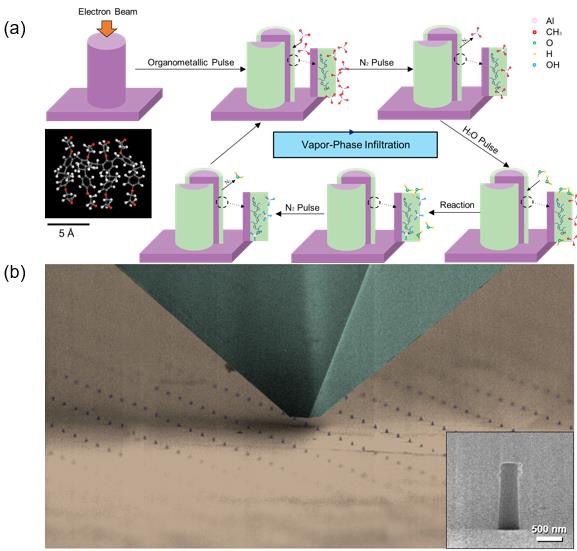
Figure (a) Schematic illustration of the preparation of a-AlOx-infiltrated SU-8 nanopillar by vapor-phase infiltration (VPI) method. (b) SU-8 based nano-pillars fabricated by electron-beam lithography method.
“The only limitation for actually realizing this technology someday is the strength of material,” he said, “I think I can make some progress in this area.”
Following graduation, Li plans on further advancing research, publishing more, and ultimately creating products based on his continually-growing knowledge in the mse field.
Li received his bachelor’s degree in Polymer Science and Engineering from Sichuan University in Chengdu City, Sichuan province in China. He won the ‘Best Data Analysis/Presentation’ prize at the 2020 International Mechanical Engineering Congress & Exposition (IMECE) conference. But lately Li explains he is focused more on “science-based research, rather than engineering.”
The university’s ranking combined with the friendliness of the faculty advisor are truly what made Li choose to attend UConn for his graduate degree, he said. “I think my experience as an MSE graduate student is a mixture of loss and exhilaration.” That’s because during his first year at UConn, the pandemic occurred, and Li was forced to stay home without experiencing the hands-on work of the UConn laboratories. Fortunately, as life gradually returned to normal, “life at UConn MSE became colorful,” as his hand-on experience was finally able to flourish in the labs.
Professor Lee also remembered how the pandemic affected Li. “When the pandemic started, he quickly switched modes from experimentalist to theorist. He began studying various mathematical models of composite mechanics and creating his own calculation code to quantitatively understand why his composites exhibited both low Young’s modulus and high yield strength. Although he did not have access to laboratory equipment, I was really impressed with how he was so successful at performing numerical calculations to better understand the experimental data he fortunately obtained before the pandemic,” Lee said.
“I learned to use many high-end experimental instruments, got help from more senior group members, and developed friendships with them. I also had the chance to visit other advanced laboratories like Brookhaven national lab and the Kavli Nanoscience Institute at Caltech,” Li said.
Each week Li attends a seminar as part of the faculty mentorship program, in which each student is assigned a faculty advisor to assist them in their research journey. Li finds the seminars to be a great opportunity to ask questions and learn more about related research. He is also quick to point out “my supervisor is very friendly and cares about his students.”
“I was impressed by Li’s deep insight into polymer mechanics and his remarkable ability to pivot and do important theoretical work. I am delighted that all his efforts are finally published in one of MSE’s high-profile journals, the Journal of Materials and Design,” Lee said.
Backed by his research success and satisfaction, Li gives undergraduate students a word of advice:
“I encourage them to join different research groups to experience the experimental process firsthand, and then combine those experiences with what they learned during their undergraduate studies to make a career plan for their future,” he said.
Author: How UConn MSE Faculty Transformed Undergraduate Student Yinyu Wang Inside and Out
By Megan Andrew, Written Communication Assistant
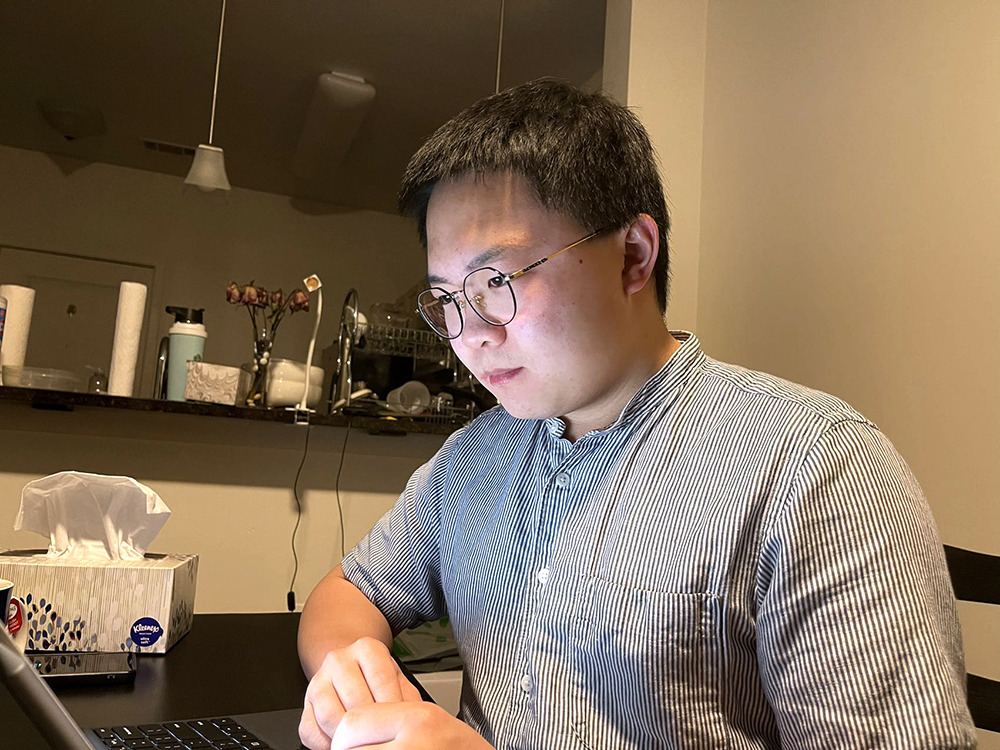
Yinyu Wang (MSE’23) studies electrospinning nanofibers contributing to clean energy research as part of Jasna Jankovic’s research group
While Yinyu Wang, a UConn MSE undergraduate student, initially wanted to pursue civil engineering to follow in the footsteps of his father, his acceptance to the MSE program changed his plans. “It is an interesting field of study, and it also interacts with other engineering fields, including civil engineering,” he said.
Today, Wang is participating in clean-energy research alongside graduate students in Professor Jasna Jankovic’s research group. Specifically, he is working with graduate student Sara Pedram in Jankovic’s lab on electrospinning nanofibers, which can be used in fuel cells. They are working to create and test tubular nanofibers, which are based on a cylindrical cell structure, rather than a traditionally cubic structure. He said as climate change increasingly affects the globe, “it is even more imperative for scientists and engineers to look into this area of creative materials configurations for future energy generation.”
Wang said the reason he so thoroughly enjoys UConn MSE stems from multiple aspects of the program, but “professors are the most important here, in my opinion. It is the caring, knowledgeable, and helpful professors that keep encouraging me to move forward,” he said.
Wang pointed out Jankovic as a large motivation for his research. “Her knowledge, patience, and caring nature are what drive me to move on. She would help me analyze my failures and encourage me to tackle challenges in the lab.”
Wang was granted funding during the summer of 2021 through UConn’s Research Experience for Undergraduates (REU) program to do research with Jankovic.
Wang said his experience working with Jankovic has transformed his life outside of the lab as well. “I become a more curious person both in academics and life,” he said, “I have become handier than I was before, and prefer to fix things on my own by using my own skills and online resources.”
“I remember Professor Kattamis and Professor Brody giving us insights about metallurgy, and Professor Leek providing us with hands-on experience in the lab. I’m very fond of professor Frame’s energetic class lectures too,” Wang said.
Wang especially appreciates Professor Leek‘s influence on him as a student: “I learned many valuable and important lessons from her, from paying attention to lab safety to gaining all the hands-on experiences in MSE. I was able to cast metal in her lab for the first time in my life, and to learn basic operations of an SEM machine. She is always patient with her students, and she always does her best in helping her students learn and develop in the field of MSE.”
“I remember Yinyu struggled initially to find a student research position but never gave up. He has been part of Dr Jankovic’s research team for some time now. When I ask how it is going, his reply shows he is passionate about his research area and really enjoys working with his colleagues. Yinyu has become a careful experimentalist with a good eye for detail. Seeing this transformation is the absolute best part of my work.” Leek said.
Wang elaborated on his undergraduate experience and said that both classes and undergraduate research enrich his MSE experience. “Lab classes here are exciting to take, and the feeling of accomplishment when I successfully perform an experiment is satisfying … What’s more, UConn also offers undergraduate research programs to students, so we are able to work with a professor on projects interesting to us and develop independent learning skills,” he said.
Wang’s excitement towards his undergraduate research reached new levels after relocating to the new Science 1 building this year:
“Words can’t really express how excited I was when I visited the labs in the building. The automatic fume hood is eye opening, and the office environment is simply bright, clean, and comfortable. The most important thing I noticed is the new design of the eye washing station and shower station: It reduces the procedures to turn them on by simply pulling the handles, making labs much safer,” he said.
Another area where he has grown as an academic is in his motivation to read. “I just felt like I should receive knowledge not only from school but also from extracurricular sources. I also started writing a diary just to keep track of my feelings and thoughts, and I think it helps me calm down and relax.”
Outside of class, Wang participates in the UConn Airsoft club and enjoys cooking.
“To me, cooking is like performing experiments in a kitchen setting. Spices and foods become the “chemicals” and I love trying out different combinations of them. Sometimes it comes out great and sometimes it may require further…adjustment,” he said.
After graduating this spring, Wang plans to continue his education at UConn MSE in the graduate program.
Author: MSE Professor Collaborates With Others to Write Accomplished Research Paper
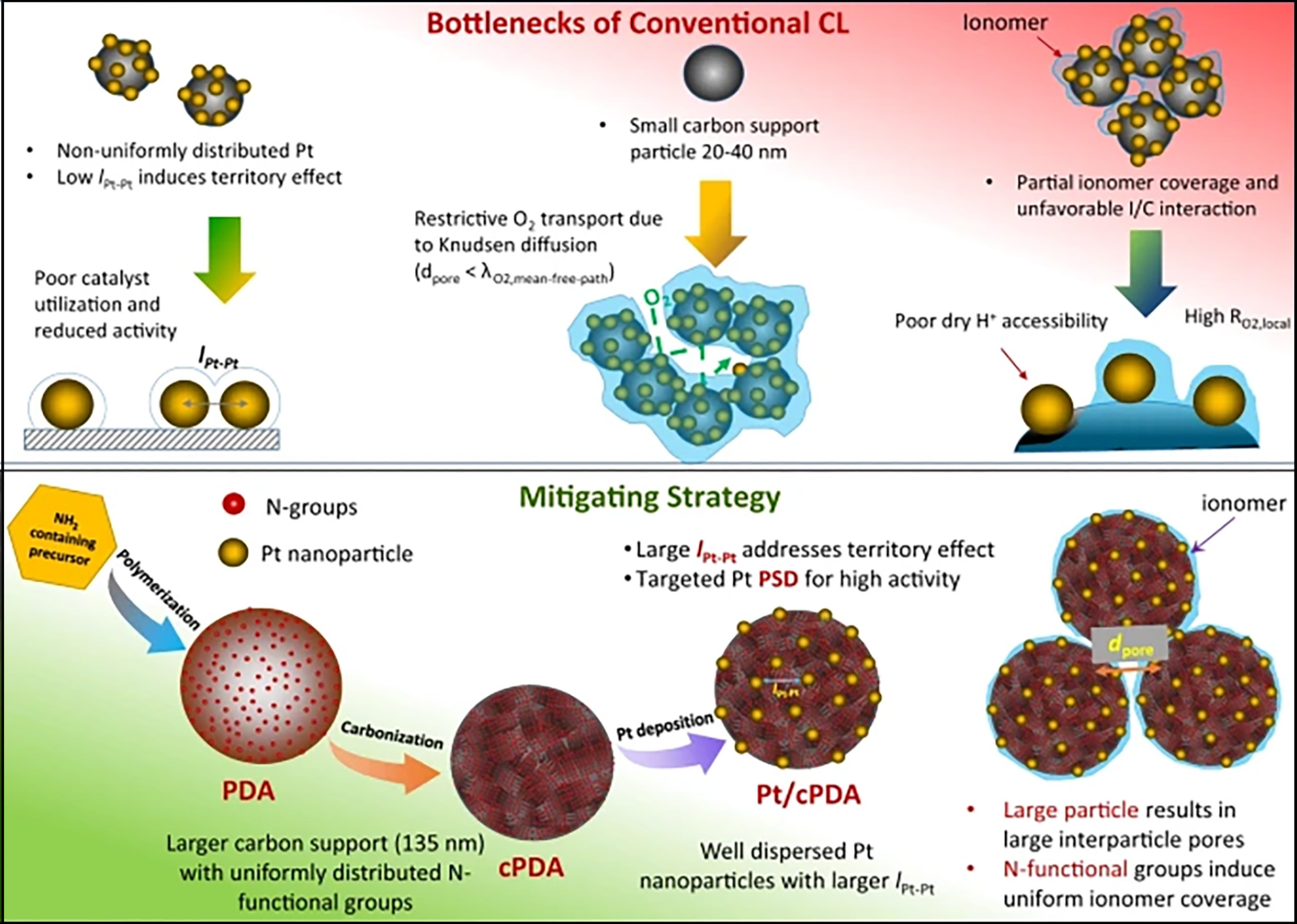
Schematic diagram depicting the bottlenecks of conventional catalyst layer and new catalyst design strategy.
MSE Professor Jasna Jankovic, in collaboration with Muhammad Naoshad Islam, Abdul Bashith Mansoor Basha, Vinayaraj Ozhukil Kollath, Amir Peyman Soleymani, and Kunal Karan published a research paper that made it into the Top 25 Nature Communications chemistry and materials science articles of 2022.
Titled “Designing fuel cell catalyst support for superior catalytic activity and low mass-transport resistance”, the article was published in October 2022 and has over ten thousand accesses as of April 2023.
Professor Jankovic was excited to explain her and her colleagues’ work. “This publication reports on fabrication and testing of a novel catalyst for fuel cells. Fuel cells are clean energy devices that produce electricity from air and hydrogen fuel for a range of applications such as cars, trucks, stationary power, backup power, etc. The electricity is produced by electrochemical oxygen reduction and hydrogen oxidation reactions. Very active catalysts are needed to speed up these slow reactions, especially the oxygen reduction reaction. Our collaborative team designed a very active catalyst based on large carbon spheres, functionalized with nitrogen, with small platinum particles uniformly distributed in and on them. This special, rational design improved the activity and the durability of the catalyst. If this catalyst is used in fuel cells, the devices that they are used to power will perform with higher efficiency and last longer.”
Many different minds came together to work on this. “Our collaborator Professor Kunal Karan from the University of Calgary in Canada contacted us to perform some advanced microscopy on his catalyst and catalyst layers. My postdoc Dr. Amir Peyman Soleymani performed a lot of fancy microscopy to support the research. I also spent hours and hours discussing the results with the team. We all finalized the paper together, which the Calgary team led and we supported.”
Jankovic made sure to mention that she loved working with so many different people. “My research team at UConn has many, many collaborations across the US, Canada, Germany, and South Africa, with people in industry, national labs and academia. Collaborations bring many researchers together at times when they can share knowledge, resources, and successes like this. It also gives students exposure to many different research projects and expands their network. This is our mode of work – and it works! In this particular collaboration, we exchanged samples, reports, ideas and discussions. It was a great collaboration!”
When asked about where this research may go, Jankovic said, “I am hoping that this catalyst will be mass-produced and commercialized with one of our industrial partners.”
Author: “It’s Alright to Rely on Others, and to Ask Questions”
By Alec Arbia, Written Communications Assistant
“I stumbled upon materials science and engineering,” said Ben Labkovsky, senior materials science and engineering (mse) major at UConn. “I started as a physiology and neurobiology major and found that it was a terrible fit for me immediately. When searching for a new major, I decided to read the descriptions for the majors at UConn. Once I saw materials science and engineering, a field I’d never even thought of before, I was instantly intrigued and wanted to give it a try. Thankfully, I did, and I’ve been in love with it ever since!”
When asked what professor impacted him most, Labkovsky decided he would have to say Professor Leek. “Between classes being moved online, being a commuter student, and transferring late into the major, I found myself really disconnected from the rest of my class. Once we were back in person, I started taking Professor Leek’s lab classes. I was able to find a new appreciation for mse, especially since her passion for the subject is contagious. She’s helped me many times during the two years I have known her. This past year alone with she wrote a letter of recommendation for me and helped me through Senior Design. I feel that I have newfound confidence in myself and the questions that I ask because of her.”
For three semesters now Labkovsky has worked as a teaching assistant. “Being a TA has expanded my communication skills and time management, and has helped me retain the knowledge taught in the courses. It’s fulfilling to help students with problems and be supportive of them when they need it. Although it can be overwhelming when a class has a large number of students, I’m glad I decided to do it.”
One of Labkovsky’s favorite parts of the mse major is how tight-knit of a community it is. “I’ve been able to communicate with other students in the major, and we’ve been able to help each other and be sources for each other. I feel I’ve been able to excel since I have friends who I can bounce ideas and questions off of.”
This relates to Labkovsky’s advice to other mse students: “It’s alright to rely on others, and to ask questions. I found myself enjoying my education and understanding material the most when I was discussing topics with my friends, and we were working together to solve problems.”
In regards to the future, Labkovsky’s current career goal is to become a patent lawyer. “I’ve always wanted to be a lawyer, but I was never sure of what to pursue until the end of high school. With the way materials and equipment are advancing, I thought being a patent lawyer for material science would be a great idea. Material selection can be a defining characteristic for a patent to succeed, and I hope to use my knowledge to help those coming up with patents for material-based needs. My degree in mse should make me more approachable and a better candidate for these matters.” Labkovsky will be graduating in August 2023.
Author: MSE Students Are Incredibly Well-Rounded
By Alec Arbia, Written Communications Assistant
Emma Lucas, an undergraduate student studying material sciences and engineering (mse), is successful both in her academics and on UConn’s women’s rowing team. Emma says that balancing the two “gets hard sometimes, but having a rigorous schedule helps me prioritize what’s important and gives me the structure I need in my day.”
Emma has even won the Scholar Student-Athlete Award from the Collegiate Rowing Coaches Association (CRCA). This award requires that student-athletes row in at least 70 percent of the regular season and/or at championships, all while maintaining a minimum 3.5 GPA.
Department Head Bryan Huey, who is a recent convert to rowing, knows just how committed one has to be to get on the water at sunrise and then work through the rest of the day, “Emma is a wonderful example of how our students can be so successful in the classroom, while also advancing their other passions or obligations like collegiate sports, band, jobs, volunteering, clubs, campus research, and so many other interesting activities.”
Emma chose to study mse after taking ENGR 1000: Orientation to Engineering with Professor Kevin McLaughlin. “We were able to hear from professors what we’d study and eventually do when we graduated, and I found mse to be the most exciting.”
Emma has also had the opportunity to work in the undergraduate lab. “My time in the lab has been such an awesome experience. I love working hands-on, and being able to use that to supplement my learning from sophomore to senior year has been so beneficial.”
As part of this experience Emma worked with Undergraduate Lab Director Fiona Leek. “Professor Leek has been such a crucial part of my learning in MSE, and I really appreciate all the hard work and late nights she puts in to help get things done.”
When asked her thoughts on the Science 1 building, Emma says that “The new labs are so cool and are making the undergraduate lab experience even more amazing than it already was. They have the potential to really expand interest in the mse major.”
On top of being both a student and rower, Emma has also participated in an internship with Electric Boat (EB), a company that has been the primary builder of submarines for the United States Navy for more than 100 years.
Emma says during some days at EB she’d do work on a computer with the help of her coworkers. “On other days I’d head over to the weld lab.”
Welding seems to have been Emma’s favorite part of the internship. “I struggled for a while in the beginning, but I ended up picking up on shielded metal arc welding. I was able to get a few of my welded plates bend-tested and they passed! I also attempted gas metal arc welding and gas tungsten arc welding, but I found those more challenging.”
As another part of the internship, Emma gained experience in the Non-Destructive Testing (NDT) lab. “I was able to try my hand at magnetic particle testing for indentations in welds on a practice plate. I was then also able to see the NDT inspectors investigate some welds that eventually would be used on one of the submarines.”
When asked for a fun fact about herself, Emma revealed that she’s a triplet. “My two sisters, Sophie and Abby, play college soccer at Salve Regina University and Southern Connecticut State University.” Emma herself will be graduating from UConn in May 2023.
Author: The Husky Behind Intel: How UConn Alumnus Chigozie Muoto is Driving Innovation
By Megan Andrew, Written Communications Assistant
The number of opportunities for UConn materials science and engineering graduates is endless. Chigozie Muoto combines his Materials Science and Engineering PhD with an MBA as a business strategy manager for Intel Corp.
Muoto graduated from UConn with his PhD in 2011, at which point he was hired by Intel Corp. as a process engineer in Hillsboro, Oregon. Over the nearly four and a half years he spent in this role, Muoto researched the “best and most efficient technologies that would be used in our latest products.”
Muoto worked with a team to analyze and redesign lithography processes for Intel’s microprocessor products. His day-to-day responsibilities required him to be in one of Intel’s advanced fabrication factories, working hands-on with semiconductor lithography equipment and utilizing the skills he had acquired and developed in the labs at UConn.
After receiving his Undergraduate degree at the University of Lagos in Nigeria, Muoto knew he wanted to advance his academics in the United States. But why UConn?
“It wasn’t like anyone told me about UConn,” he said. “I was researching many schools on the Internet.”
What stood out to Muoto about UConn was the technology available in the research labs. He recalled researching several options to pursue his masters and was amazed by “how easy it is for students to gain access to instruments I never got the opportunity to use.” Muoto was also drawn by the “diversity in research projects the professors had,” he said.
“I really wanted to go to UConn,” Muoto remembered, “I thought about it for many months.”
Once accepted, Muoto was exposed to far more than he initially expected. “Not only did I get access to that lab equipment, but I was also trained on how to service the equipment.” This proved very valuable in his first interview with Intel. “That was part of the reason I got the job,” he said, “the experiences and skills they were looking for were very similar to what I did in the lab at UConn.”
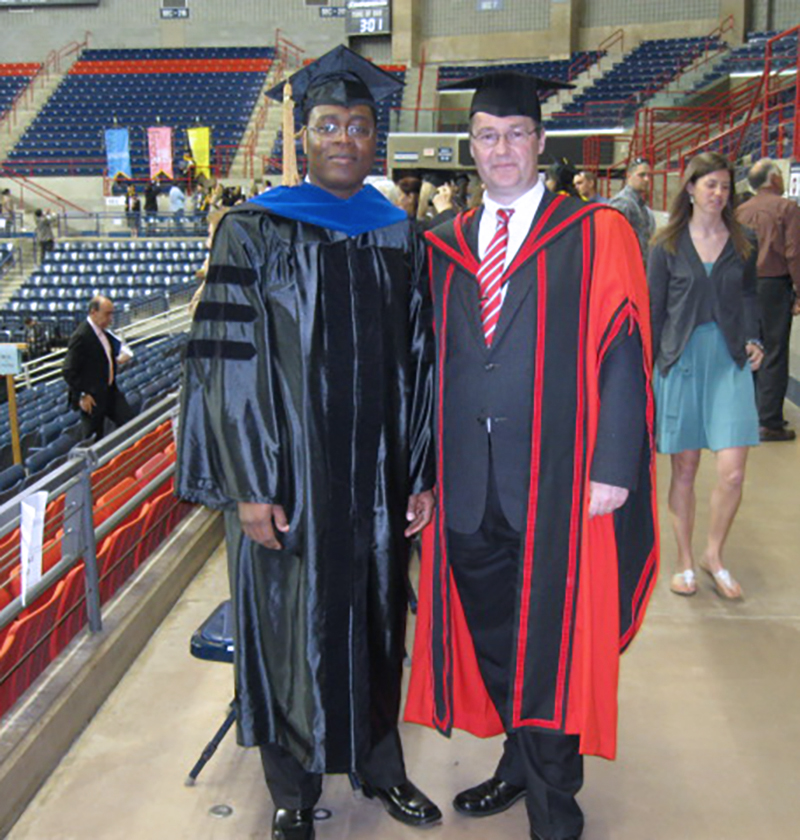
Chigozie Muoto (left) with his advisor Professor Aindow (right) at his PhD Graduation ceremony in 2011
Muoto also fondly reminisced about Professor Mark Aindow, his advisor. Aindow encouraged Muoto to write scientific papers, which led to an impressive six publications for Muoto over the course of his UConn degree. “At first I wasn’t thinking of it as something I could do,” Muoto said. “The way he advised me was just exceptional.”
Although he thoroughly enjoyed his engineering position, Muoto found himself interested in the business side of Intel. He went on to get his MBA at the University of California, Los Angeles Anderson School of Management. In 2017, he returned to Intel as a product manager.
In three years, Muoto rose to his current position of business strategy manager. “I have contributed immensely because of my engineering background,” he said. While most people involved in the business side focus on the status of the industry, Muoto’s deep understanding of both business and engineering allows him to lead Intel to more efficient and plausible business solutions.
Muoto’s career path serves as an example of the unique professional options that come with a degree in materials science and engineering. Muoto advises current students to begin exploring their options early. “Start researching the companies you want to go to, and start networking,” he said.
Muoto struggled himself with deciding on a career that fit his interests. “Sometimes its not very clear because you don’t have a lot of information about them,” he said. “At the end of the day it’s not just about the money or the accolades…follow your passion. Everything else will follow.”
Author: MSE’s Involvement in the University Materials Council
By Alec Arbia, Written Communications Assistant
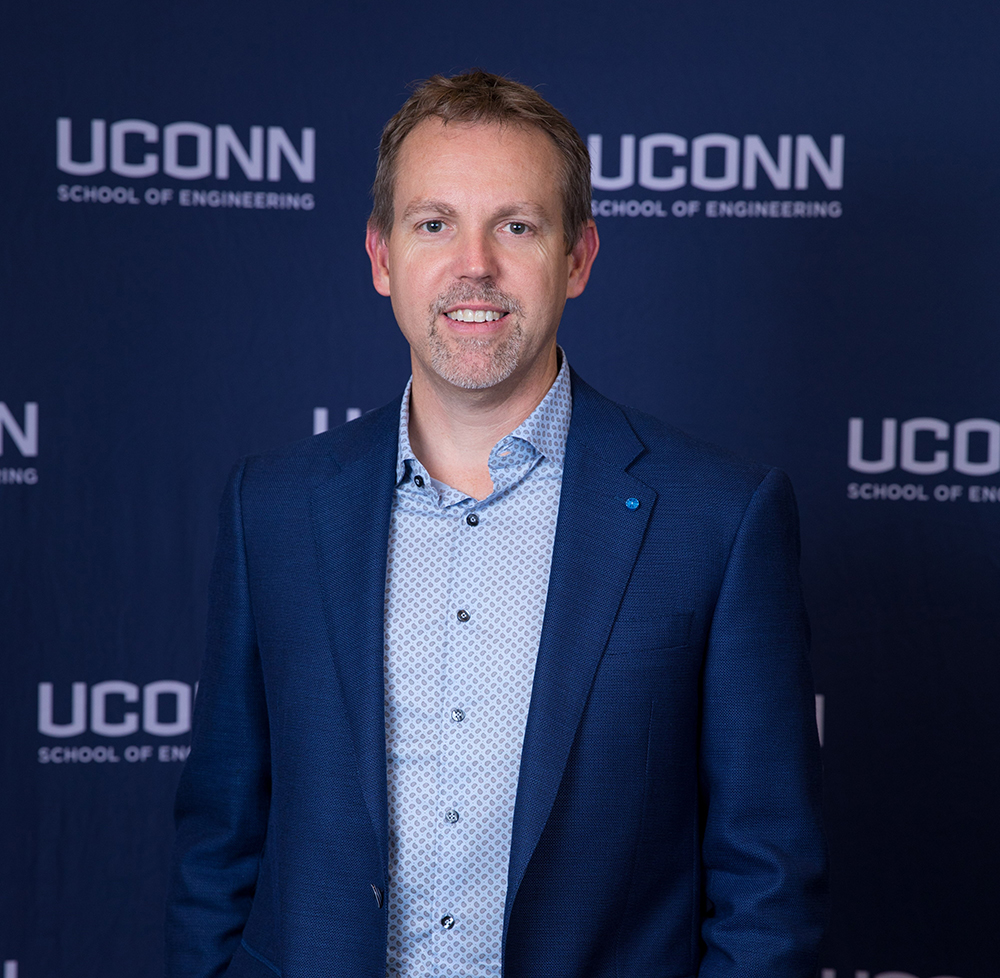
MSE Department Head Bryan Huey, who was elected as chair of the ‘University Materials Council’ (UMC) for the 2022-2023 academic year.
For the 2022-2023 academic year, Department Head Bryan Huey was elected as the chair for the nationwide association of MSE department heads. This ‘University Materials Council’ (UMC) meets twice a year to share statistics about our programs, lists of students interested in graduate school, and other helpful information. “We also host academic job announcements—it’s been an amazing year for MSE programs across the country, with more than 45 faculty searches over the past 9 months. Most of all though, we are there to share best practices with each other.”
For instance, in 2020 the UMC had several virtual meetings as they realized the magnitude of the looming Covid pandemic. Member programs shared valuable advice on effective lab instruction during Covid, supporting our department communities from afar, approaches to health and safety, and more.
“It really helped us all to collectively figure out ways to best deal with Covid as educators,” Huey remembers. “For example, I believe several programs have now duplicated how we modified our weekly seminars here at UConn. As we shifted to talks online, we encouraged much shorter presentations, and balanced that with substantially more discussion driven by panels of students with overlapping interests. Even after pivoting back to being in person, we’re still benefitting. I don’t think seminar visits have ever been so engaging.”
Professor Huey and the other 5 UMC officers are responsible for organizing the biannual meetings. This past fall, the UMC assembled in Boston coincident with the Materials Research Society Conference. The 65 attendees enjoyed panel discussions focused on undergraduate student recruiting, budgeting, and advice for new department heads. This Spring, 45 heads met in San Diego alongside The Minerals, Metals & Materials Society (TMS) conference. There was an update on student recruiting, discussions on how to leverage artificial intelligence in materials education, and conversations about department culture and inclusivity.
“I’m especially pleased that broad support emerged across the UMC membership for a few nationwide efforts that should benefit materials professionals,” Huey notes. “For one, we’re going to kick off communities of practice for those supporting our teaching labs. This will make it easier for us to share popular lab modules, or to identify the most suitable equipment for an undergraduate lab.”
After speaking about past improvements, Huey went on to talk about the future. “I’m personally most excited about another effort, focused on more effectively broadcasting what materials engineers really do, and the impact we have on society. The roughly 130 Materials programs across North America all work so hard on outreach about materials for our own institutions. Now, we aim to collectively create and share such content. Initially there will be 2 main approaches. One will target high school students, featuring short video clips from recent alumni about the interesting problems they solve as materials engineers. The other will assemble video segments, audio clips, and other news items, from major leaders in industry about the impact of advanced materials for their various technologies – and more broadly, for society.”
The UMC meetings also historically feature a carefully structured ‘brag session’. Every professor is allowed 1 slide, and 60 seconds, to share highlights about their own program. “As the UMC chair, that’s one of the hardest jobs – holding professors to just 1 minute. It’s been especially hard for me representing UConn, as there’s so much to be proud about. Student successes, faculty innovations, major awards, and of course Science One. We are envied by many right now, not just on campus but across the country. UConn Materials is just such a great place to be.”
Author: Meet MSE Alumnus Vincent Ybanez Working at the Forefront of Jet Engine Technology
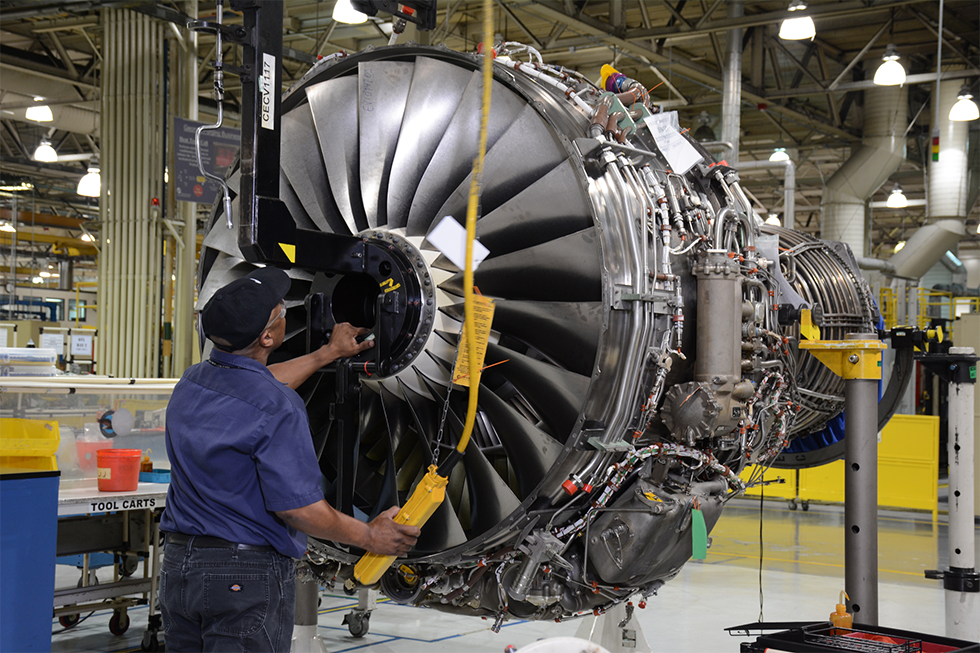
Mechanic overhauling engine at an Aftermarket Repair Shop. Pratt & Whitney Aftermarket and Sustainment Engineering group provides innovative aftermarket repair strategies for various jet engine hardware.
By Megan Andrew, Written Communications Assistant
Vincent Ybanez has always been fascinated by the properties of different materials and how they can be used to solve complex problems. Now, as a key member of the Aftermarket and Sustainment Engineering team at Pratt and Whitney, he’s putting that expertise to work on some of the most cutting-edge engine technologies around.
In his role of senior design engineer, Ybanez works on repairs for jet engine hardware by “initially developing repair concepts, establishing design and testing requirements for the repair, substantiating and obtaining approvals within the various engineering groups, and drafting the technical documents for the repair.”
The specific processes he uses to repair engines utilize solid-state welding, fusion welding, additive manufacturing, machining, and plasma spray coating to optimize cost and repairability of hardware.
“UConn’s MSE curriculum and instructors provided an excellent basis for understanding materials science and general engineering fundamentals, which help me make design engineering decisions with a materials engineering mindset,” Ybanez said.
Ybanez recalled that his initial interest in engineering came at an early age, as he worked alongside his father on home-repair projects. Following that spark of interest, Ybanez attended a vocational technical high school, where his hands-on work with electromechanical technologies solidified his future career path.
“I chose UConn as their Engineering program is highly acclaimed, the university itself was known as one of the top public research universities nationwide, and I heard many good experiences of the university and Engineering program from friends and relatives,” Ybanez said.
At UConn, Ybanez discovered the materials science and engineering (mse) field through Professor Daniel Goberman’s ‘Foundations of Engineering’ class. “I didn’t realize mse was a field until that class, and how broad the mse field was, as well as the various job opportunities that materials engineers can pursue,” Ybanez said. That helped him decide to declare mse as his major.
With Professor George Rossetti as his advisor, Ybanez was able to explore different career options during his undergraduate studies. “I remember having helpful discussions with him regarding pursuing graduate studies versus working directly in industry after graduation, which led to me pursuing an independent study opportunity to help me decide,” he said.
Ybanez also fondly described his favorite class as being ‘Failure Analysis’ with Goberman. “The class content has been very useful in my Welding Engineer role when I am leading various investigations for welding process failures and improvements,” he said.
“I remember all the MSE professors not only being very knowledgeable within their fields, but also being very engaging and enthusiastic when teaching as well. The enthusiasm of all the professors and staff, as well as the smaller size of the MSE department, helped MSE feel like a more close-knit and inclusive department in the UConn School of Engineering,” Ybanez said.
After graduation, Ybanez decided to move directly into industry before pursuing his MS in welding engineering a few years later at The Ohio State University. There, Ybanez recalled drawing from his UConn education in materials science and engineering to excel in his academics. “Topics such as phase diagrams, microstructure, phase transformation in steels, and thermodynamics were being reintroduced in my grad school program, and I was able to easily understand them due to my strong undergraduate background.”
He also drew from his experience in a favorite independent study class. Because of his work as an undergraduate research assistant in Professor Puxian Gao’s Nanomaterials Science Lab, he gained insight into the research lab setting and what post-graduate research would be like. Ultimately “this helped me with the personal decision of pursuing industrial experience instead of post-graduate academic research right after graduation,” he said
Directly following his graduation with a BS in mse from UConn in 2016, Ybanez was hired as a materials engineer for Quest Global in East Hartford.
His involvement in both the Material Advantage club, as well as the Engineering Ambassador club at UConn, helped him stand out from other candidates when applying for his first job after graduation. Ybanez advises current students to do the same—”get involved.”
“Particularly, leadership roles set potential new hires apart,” Ybanez said. “Also, try to pursue and apply for any internships and/or independent research opportunities that are available. This will help you decide which specific field/industry you want to specialize in, as well as whether you want to pursue post-grad academic research or industrial work right after graduation.”
Author: It’s Never Too Late to Switch to MSE!
By Alec Arbia, Written Communications Assistant
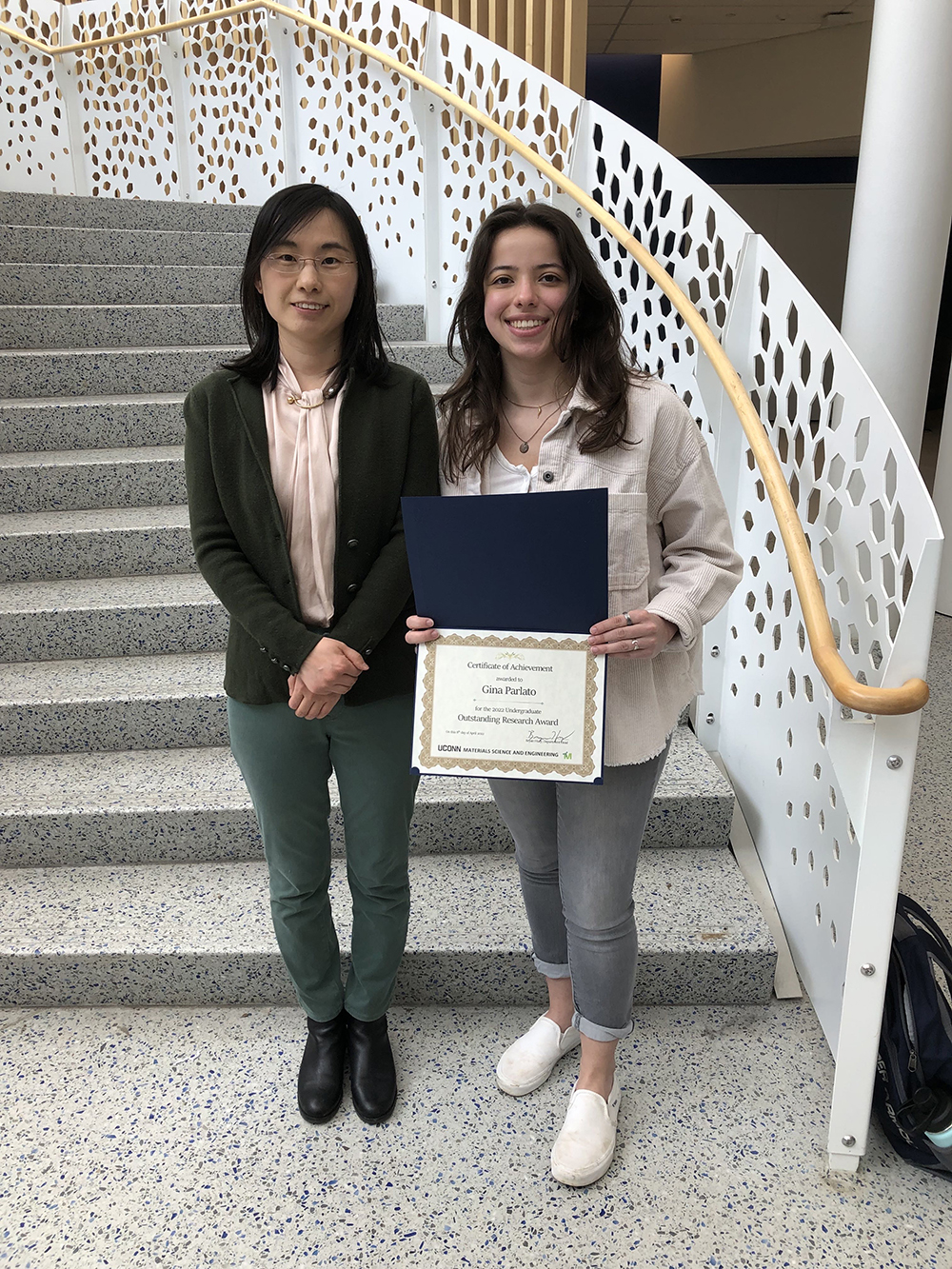
Assistant Professor Xueju “Sophie” Wang standing with undergraduate Gina Parlato after the latter received the 2022 undergraduate outstanding research award.
Sometimes you don’t know which major is perfect for you until a bit later in the game, as was true with undergraduate student Gina Parlato.
Originally a mechanical engineering major, Gina had no idea the materials science and engineering (mse) major existed. “I found out about it through an upperclassman I knew who was in mse. She told me all about the program and what materials science engineering was. After that, I was so interested in it that I changed my major the next semester.”
Switching majors actually put Gina off-track to graduate, which makes this her fifth year at UConn. “I took whatever courses I could over the summer and winter semesters to catch up and put in a lot of hard work. However, I wouldn’t change anything. I’ve loved my time at UConn and I’m so glad I found mse, because I really love it.”
Gina says that Professor Fiona Leek has impacted her the most. “She is always available to answer any questions I have and she’s always advocating for her students. Every class I’ve had with her was one that I looked forward to going to.”
In regards to her favorite area of mse, Gina is most interested in polymers. She was actually able to do some research with Professor Xueju “Sophie” Wang. “We worked with liquid crystal elastomers, a smart and soft material, to make soft robots with reversible shape and color changing capabilities.”
Professor Wang thinks very highly of Gina. “Gina is the best undergraduate research assistant I have had so far. She performed extremely well and co-authored two journal papers during just one summer in my group. In recognition of her research excellence, she received the 2022 undergraduate outstanding research award.”
When asked her thoughts on the new laboratories in the Science 1 building, Gina says that they’re amazing. “I’m grateful that I get the chance to use such a nice facility.”
Not only is Gina stellar in the academics department, but she’s also part of the women’s hockey club. “Hockey is something I’ve balanced with school for as long as I can remember. We only practice twice a week and have 1-2 games per weekend, which is a lot less than how much I practiced in high school. Deciding to play in college was an easy choice for me, because it’s the perfect break from schoolwork and I already knew I could manage my time.”
Additionally, Gina has interned at EssilorLuxottica, a company that designs, produces and markets optical equipment, prescription glasses and sunglasses. “The internship offered me a lot of hands-on opportunities in the lab to learn how to use new machines and techniques. They wanted me to learn as much as I could and provided me with every opportunity to do that.”
Gina describes the company’s culture as nice and friendly, and says that all the employees love working there. “They would regularly plan company outings. They also care a lot about their employees and have a nurse on staff daily in case of any emergencies.”
Gina’s day-to-day responsibilities involved running experiments under the supervision of some of the company’s senior engineers. “There were some devices and machines I had never used before, so it was a bit of a learning curve getting comfortable using those. However, the senior engineers were always more than willing to answer any of my questions.”
When asked what advice she’d give to other students looking to succeed as an intern, Gina says, “You get out what you put in and every opportunity will teach you something. Try to learn as much as you can, because even if you hate the internship you can still learn about what you want from a job in the future. You’ll learn something no matter what, as long as you put the effort in.”
When asked about her future, Gina answers, “Ideally, I would like to work with polymers in either the biomedical or aerospace fields. UConn MSE has given me a good understanding of materials science and provided me with ample opportunities to get hands-on experience in the lab.” Gina will be graduating in May 2023.
Author: Another Strong Addition to the MSE External Advisory Board
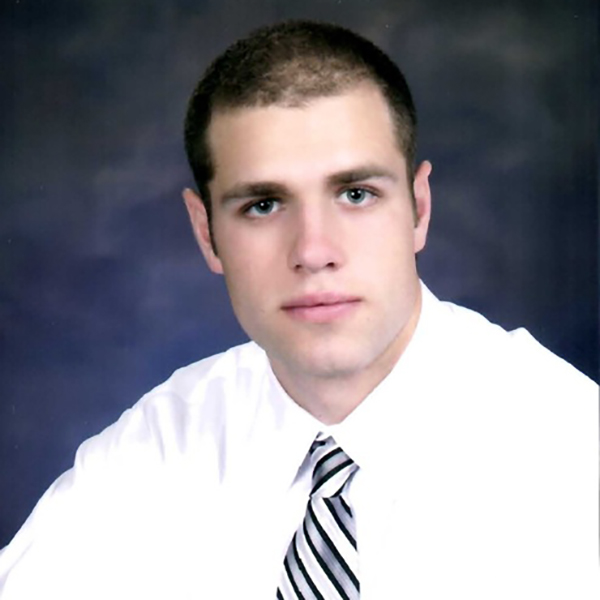
Steve Mayott, Manager of Materials Engineering & Laboratory Services at General Dynamics Electric Boat
By Alec Arbia, Written Communications Assistant
The department is excited to welcome Steve Mayott as the newest member of the MSE External Advisory Board.
Now comprising nine highly reputable industry partners and alumni, the Board works to guide our curriculum, support our initiatives, and ultimately enhance the Materials Science and Engineering Department at the university, state, and national level.
Mayott currently works at General Dynamics Electric Boat as Manager of Materials Engineering & Laboratory Services. He oversees several technical groups, including metallic materials engineering, metallic additive manufacturing, the metallurgy laboratory, and the chemistry laboratories. One of his responsibilities is assuring that correct metallic materials, materials processes, and material specifications are used in the design and construction of submarines. He is also responsible for the evaluation of material non-conformances, mechanical property testing of metallic materials, and the adoption, implementation and oversight of metallic additive manufacturing at the company.
Department Head Bryan Huey notes, “We are pleased to continue our partnership with GD-EB, which is home to so many of our alumni and obviously a key manufacturer in our state. Their input and advocacy will be important as MSE grows into the new Science 1 building.”
Along those lines, outgoing external advisory board member Peter Jarrett said, “It’s funny to realize that the old IMS building was practically new when I arrived in 1978. I wish you and your department all the best going into the future.” MSE is grateful to Peter for many years of dedicated service as a board member and alum. He recently retired as Chief Technology Officer for Ocular Therapeutix.
The External Advisory Board’s next meeting will be held in-person in Science 1 on the afternoon of April 14th, 2023, and many will join the department’s annual banquet that evening.
Author: You Can Inspire Your Kids Someday to Study MSE
By Alec Arbia, Written Communications Assistant
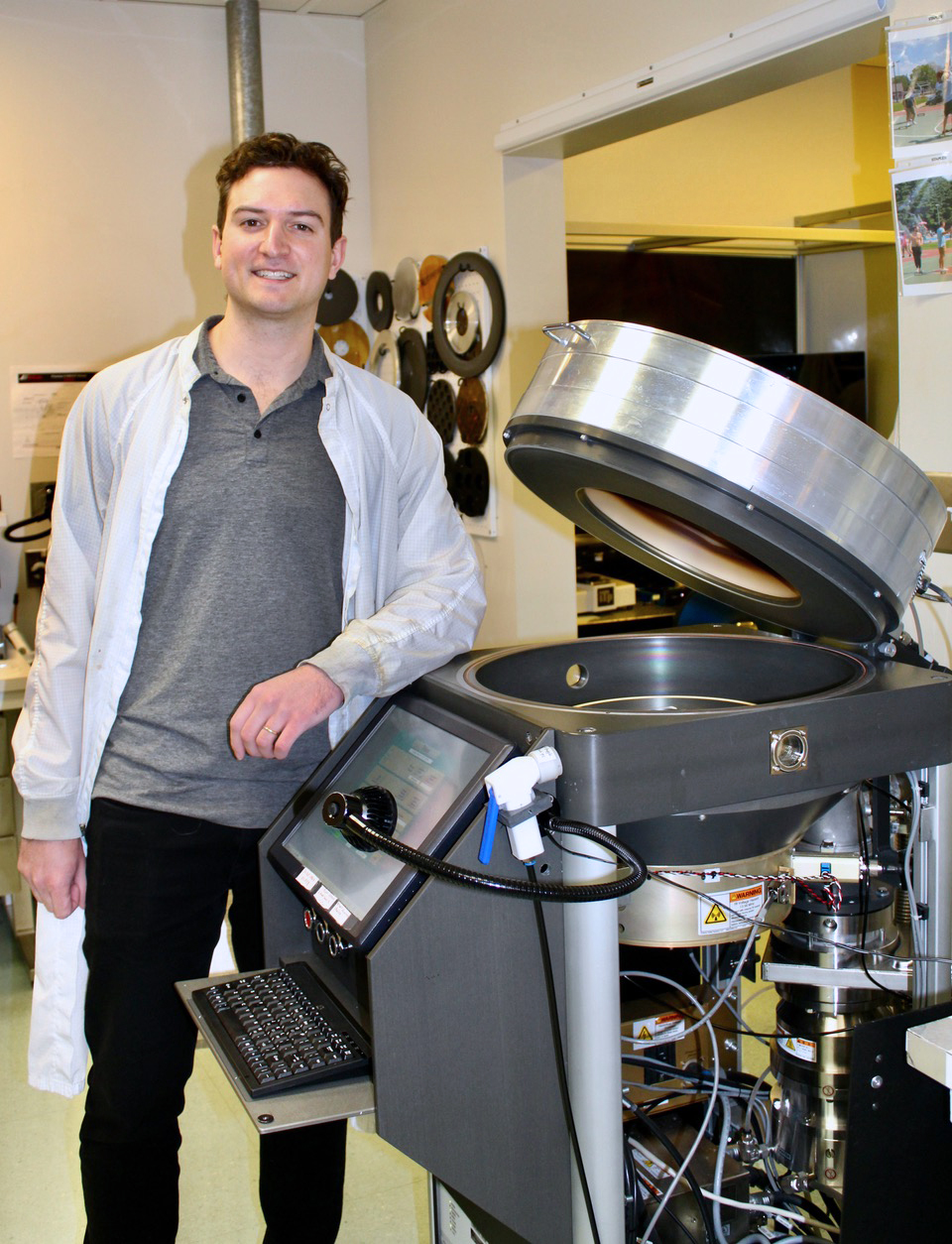
Anthony Manni, UConn MSE alum, standing next to a plasma etch chamber that he uses for daily production as Chief Technology Officer at TelAztec
When asked what led to him majoring in materials science and engineering (mse), Anthony Manni, UConn alum, said his biggest inspiration has been his father, Jeff Manni. “He’s been a laser scientist for the last 40 years and is an encyclopedia of optical materials and laser crystals as a result. I knew that if I got an education in mse I could work with him one day, which is still a major goal of mine.”
Manni initially toured UConn during his junior year of high school. “MSE was a very unique program at the time, the only MSE undergraduate program at a state school in New England. Because of this, I was fortunate to attend UConn for nearly in-state tuition via the Regional Student Program. This was a big deciding factor, and I’m extremely grateful for that opportunity.” The department’s strength in nanotechnology was also very appealing and a focus of Manni’s elective courses.
Several professors inspired Manni during his time at UConn. He mentioned Professor Rainer Hebert (Associate Director of IMS and Director of Pratt & Whitney Additive Manufacturing Center), Dr. Harold Brody (Emeritus Professor), and Dr. Bryan Huey (MSE Department Head). “Professor Niloy Dutta (of the Department of Physics) was one of my favorite professors because of his laser research. Dr. C. Barry Carter (Emeritus Professor) was great as well, his lectures were more like discussions, and he worked hard at helping students internalize concepts. The topics I learned in solid state physics and ceramic materials taught by the latter two professors, respectively, were immediately applicable to my job when I started at TelAztec.”
Manni said that he has his father to thank for his exciting career at TelAztec. “He sent my resume to some companies in the greater Boston photonics industry when I was looking for summer internships. A year after I graduated, TelAztec reached out and asked if I would be interested in what was originally a technician role. Given my background in nanomaterials, it was a perfect fit and I was familiar with all of the fabrication procedures here, so they hired me as a staff scientist instead. Six years later – this past fall – I was promoted to Chief Technology Officer (CTO) because of all the work I’ve done to progress our technology in terms of production efficiency and generating new ideas.”
“My role as CTO basically spans every technological aspect of our daily operations,” Manni added. “I’m currently the principal investigator on a Small Business Innovative Research (SBIR) Project, so that takes up much of my time. Additionally, I lend technical leadership on our commercial production jobs, and develop new uses for technology like 3D printing of manufacturing-related tools and vacuum-forming of custom packages. I also wrote and continually maintain a custom python library for data compilation and analysis so our engineers can spend less time on generating reports. Lastly, I do a lot of nano-photonics simulations, especially when writing proposals for new project funding.”
When asked about the favorite part of his job, and then the most difficult part of it, Manni answered that they were one in the same. “Creating new products is the most difficult aspect of what I do. Ironically, the most difficult things also tend to be the most rewarding. We have a lot of ideas, and many of them don’t work. Facing failure head on and having the patience to learn from it, rather than to sulk or give up, is a constant struggle. I try to highlight the victories when I can – and when I do fail, make sure I gather enough information about it to truly learn and make progress on the next attempt.”
Manni has several projects coming up that he was excited to talk about. “Currently I am working on projects for the Air Force developing novel optical components with our metasurface technology for defense systems based on high power lasers. We are also developing our random anti-reflective nano-texture treatment for diamond, which has applications in semiconductor manufacturing as well as quantum computing.”
The advice that Manni has for current MSE students is what he says every professor tells you as a first year: “Just stick with it! Those first few courses are tough, and you just have to keep your head up. Collaborate with others as much as possible – it’s often easier to learn a concept by talking it through with someone who doesn’t understand everything about it, rather than being lectured by someone who does.”
Another recommendation Manni has is getting into coding. “If you don’t code now, it’s never too late to start. I learned how to code when I was 27 and it changed my life. edX.org, Coursera, and Udemy are all great platforms for learning through practice. Or even youtube videos!”
Manni reflects on his time as an undergraduate fondly. “UConn’s MSE program provided me with such a versatile foundation and the tools I use every day in my career. I’m grateful to everyone in the program and highly recommend it to anyone considering UConn or engineering in general!”
Author: “Every Leap in Human Civilization is Dependent on the Discovery of New Materials”
By Alec Arbia, Written Communications Assistant
“Pursuing my PhD at UConn was one of the best decisions I have made in my life,” says Garvit Agarwal, MSE alumnus.
Agarwal initially earned his bachelor’s degree in metallurgical and materials engineering in 2011 at the Indian Institute of Technology Roorkee. “At that time, I had little knowledge about what materials science and engineering (mse) was all about, but over the years I realized that mse is truly a combination of many different disciplines, and I think that is the best part about it. You get to do everything, from physics, chemistry, mechanical engineering – even chemical engineering. It has all different disciplines combined into one, so it’s truly a multidisciplinary field. I think that inspires me to continue to do research in mse, because I don’t have to choose one particular discipline and stick to it. I get to do everything that I want to do.”
When Agarwal finished his undergraduate degree, he began looking at schools in the U.S. to pursue further education. “I decided to attend UConn specifically because I found that the MSE department had a really good mixture of faculty members working in various different areas of mse, which makes it an ideal place to pursue collaborative research. We have faculty members who are doing state of the art computational science, and we also have professors who are using advanced experimental techniques to unravel the science behind how materials behave. That’s a very healthy mix of computational and experimental scientists in the department.”
Most of Agarwal’s inspiration during his time at UConn came from his advisor, Professor Avinash Dongare. “I don’t think I have words to thank him enough for what he has done for me. He has made me what I am today as a scientist.”
Agarwal went on to reveal that when he first arrived at UConn, he had never done computational materials science before. “I had no prior experience in that area, and Professor Dongare was very patient while teaching me all the different kinds of computational techniques that he uses in his research group to study materials. The group was small when I joined, so he was very focused on each and every student – he would personally sit down and teach me things that were necessary for me to pursue my PhD.”
Professor Dongare was also deeply motivating. “He wouldn’t shy away from sitting down with you, looking at the raw data that you have generated during your computational study, and discussing various hypotheses based on the data. He would want to make sure that you are doing the science in the right way, so he would guide you in how to think about a particular problem. I believe this is a very essential part of the PhD training. You are being trained as a scientist to better comprehend the data at hand and explore new hypotheses. He was very good at that.”
Agarwal also made it a point to mention how much he was motivated by Professor Rampi Ramprasad, who has since become a professor at Georgia Tech. “I must mention him because I was also truly inspired by him. His passion for science is contagious. Every time I would talk to him, I would feel motivated to do more science and to learn new things. He is a truly inspiring person.”
Agarwal went on to discuss what he did immediately post-UConn. “After I graduated, I went on to pursue a post-doctorate at Argonne National Laboratory for two years. At Argonne I was working as a part of the Joint Center for Energy Storage Research (JCESR), which is one of the DOE’s Energy Innovation Hubs.”
It was there that Agarwal started doing battery research and battery materials modeling. “Specifically, I was doing machine learning for the discovery of new battery materials as well as looking at complex interfaces between electrodes and electrolytes in the batteries and modeling them using Density Functional Theory (DFT) calculations. That was a new and enriching experience for me. I learned a lot of new skills and collaborated extensively with experimental groups which allowed me to grow further as a researcher.”
Agarwal explained that his role at Argonne as a postdoctoral scientist was a catalyst to his current position at Schrӧdinger, Inc. “My current role is Battery Materials Simulation Scientist – so what I’m doing at Schrӧdinger is sort of an extension of what I did at Argonne. Now, at Schrӧdinger, I’m developing novel computational methods and tools that allow scientists to accelerate the design and discovery of novel battery materials.”
This work has a real-life, world-wide impact. “We have customers not only in the U.S., but all around the world. All these industries are designing batteries that are used in cars, electronic devices, and everywhere else. They use our tools to model the materials at the fundamental level. These models allow us to understand how material properties affect the device performance, and that shows you how your contributions can impact real life technologies in a positive manner.”
While Agarwal’s first favorite part of his job is advancing the materials modeling technology, his second favorite part is interacting with the customers who are using it. “As an application scientist I need to explain the application of our tools and technologies to the customers. I get to demonstrate how our tools can make an impact for various applications.”
When asked what advice he’d give to current and future students, Agarwal said to “always be curious. Ask questions – never be afraid of asking questions about anything. Those are the most important things that everyone should do, not only those who are considering material science and engineering as a major.”
However, if he had to speak some words of wisdom to prospective materials science and engineering students specifically, they would be as follows: “Over the years what I’ve realized is that mse is a multidisciplinary field. If you are looking for a discipline where you enjoy doing bits of everything, mse is the discipline for you. It’s a true blend of various basic science domains and engineering disciplines. If you are confused about choosing a discipline – for example, between chemistry and physics – My advice would be to go for materials science and engineering. With mse, you don’t have to choose one particular discipline. You get to enjoy the best part of each one.”
Agarwal went on to say that the other rewarding part about mse is that you get to better understand the nature of the world we are surrounded by. “There are materials all around us, so once you start understanding how particular materials behave, you get to understand the world around you better. Once you start, I’m sure you will never want to leave this field, because there are so many interesting things around us, and we always need materials to make progress and solve societal challenges.”
Agarwal used a fitting example of the invention of the Li ion battery in the 90s. “We never had such a technology before, and we needed mse to make that technology successful. Every leap in human civilization is dependent on the discovery of new materials.”
Author: Dr. Cato T. Laurencin Awarded by the American Chemical Society Receiving the 2023 Priestley Medal
You will be redirected shortly.
Author: 2023 Graduate Student Appreciation Week
Author: Sharon Uwanyuze Wants to Lessen Pollution in the Aerospace and Automotive Industries
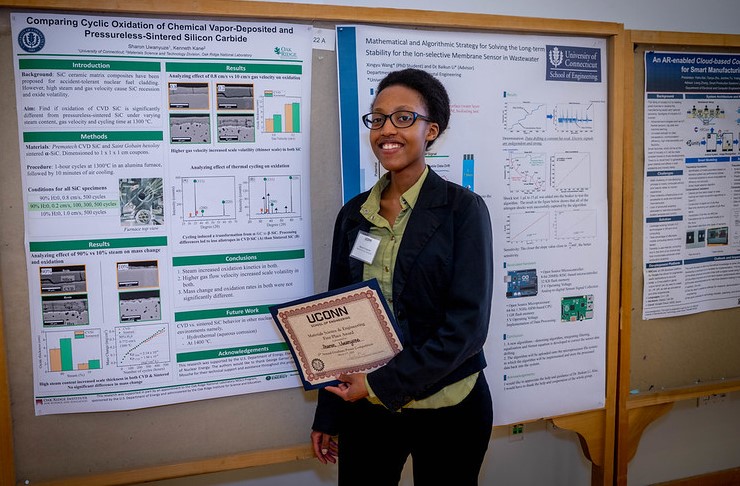
MSE graduate student Sharon Uwanyuze after being awarded the “Best in MSE Program” certificate by the School of Engineering during the 2020 Annual Poster Competition.
By Alec Arbia, Written Communications Assistant
When asked to describe her overall experience as an MSE graduate student, Sharon Uwanyuze says it was one that “pushed me out of my comfort zone to explore more of what I can be.”
Uwanyuze first got connected with UConn’s Department of Materials Science and Engineering when she went to a conference back in 2018. “I was an undergraduate research assistant at the University of Alabama in Birmingham, and when I went to present my work I met MSE faculty member Professor Cato Laurencin. When he came over to my poster we talked for some time, and I told him I was applying to grad schools and also some industry positions. He told me about the great opportunities at UConn, and I later looked up the school. It definitely seemed very competitive and in a new area which would make it more of an adventure for me. I then got in contact with some other professors who were very interested in some of the work that I’d been doing. These interactions made coming to UConn a smooth transition.”
When Uwanyuze first became interested in research as an undergraduate, she worked in an advanced ceramics lab. Her current research involves understanding and mitigating interfacial reactions that form during investment casting of titanium alloy parts in ceramic oxide molds. In simpler terms: “When we want to make a part out of titanium or titanium alloys (with additives), the raw materials have to be melted and then put in a mold of the shape that you want. That mold is made out of ceramic materials. What we then want is to carefully choose the material we’re making the ceramic mold out of so that we prevent reactions when the metal touches the ceramic surface. My work deals with innovating new materials that can show even higher chemical resistance than the current materials that are used.”
What interests Uwanyuze most about this research is the application of the parts that she makes. Titanium is lightweight, corrosion resistant, and has excellent biocompatibility. “More than half of titanium alloy parts (around 60%) go to aerospace applications and allow us to have lighter planes that consume less fuel – that’s less pollution, and faster planes as well. The other relatively large percentage goes into making biomedical implants, like knee implants or hip implants, which are very useful for a person who has a disability.”
When asked what she hopes the impact of this research will be, Uwanyuze says, “I’m really hoping that we can implement more of the material that I’m studying – which is called strontium zirconate – as an improved mold material in casting titanium alloys. If we use advanced materials like these as mold materials, then we can make more titanium alloy parts – without the need of extra processing to remove reaction layers. The manufacturing would take less time and gradually become cheaper, meaning that we can produce more of these parts and we can have them in other applications – not just the high-end applications like aerospace and biomedicine. We can have them even in automotive parts. If our cars have lighter materials – I think they are trying to implement aluminum, but titanium can get to an even higher temperature – we can have lighter cars, less fuel consumption, less pollution. That is what I hope will be the general impact.”
Already, Uwanyuze has had the opportunity to publish several research papers. “Publishing a paper can be almost a whole year worth of data collection, writing, revising, review. We first have to understand what is not known currently and how can I bridge that gap, and then collect good data. Sometimes you go to the lab and things just don’t want to work out, so you come back and try again. It’s been a journey and it has taught me perseverance.”
Additionally, Uwanyuze has a lot of interest in mentoring and teaching. “In the MSE department we serve as teaching assistants for a couple of semesters, but I went ahead and did an extra semester. I also took the Graduate Certificate of College Instruction, which is a program that is available to grad students who are interested in improving their teaching and considering a possible career in academia. It’s offered through the School of Education, and I finished that last December. During that process I was able to apply what I learned and the MSE department awarded me the MSE Teaching Excellence Award in 2020 so I was grateful for that.”
Uwanyuze is a member of several organizations, including Grad Black STEM where she helps to mentor undergraduate students seeking to pursue higher education in a STEM field. Previously, she served as Intellectual Merit Chair, but was recently elected President of the organization. “The role of Intellectual Merit Chair is to plan events and activities that enhance the academic excellence of the members. Some of the things we do are effective presentation styles, research seminars, and good ways to present your research to a wide audience.”
As President of the organization, Uwanyuze now oversees activities in other areas as well, such as Broader Impact and Professional Presence, which consist of mentoring undergraduates and learning how to make yourself marketable.
Another organization Uwanyuze is part of is His Branches Adventurer Club, a local church-based program for children in grades 1-4 to play, learn and improve their social skills. Previously she was the Director of this program, and now serves in an advisory role. “I love to see the imagination, creativity and innovation that the children have, and being able to work with a child through their process of discovering themselves and discovering a new topic. We learn about different things like fire safety and hygiene, and just being able to read. These are simple things, but the same concept applies to general teaching skills, like teaching an undergrad course. I still have to understand that they’re people, they’re not just there to consume information. Just caring about the whole person. I really enjoyed that role.”
Uwanyuze says that the MSE department at UConn is really interconnected. “It’s not an overwhelming size, so we are able to get to know each other, both among students and between students and faculty. We have a lot of resources at our disposal; the labs are great. I have the opportunity to work in both the new Science 1 complex and the Innovation Partnership Building, both of which are world-class facilities. It’s been really nice having those buildings at my disposal. The move was a bit challenging but it was worth it in the end.”
There are many people in the MSE department that Uwanyuze admires. “I have great role models in the department, whether it’s other students or faculty that I can look up to and that push me to aim even higher. The support system has been great, both in classes and in research as well. I’ve had really supportive advisors.”
Currently Uwanyuze’s advisor is Professor Pamir Alpay. “Even though he is now the interim Vice President for Research, he makes time for us as his students through weekly meetings and checking in with us both about our academic research and professional goals. I appreciate that.”
Uwanyuze also speaks fondly of her former advisor, Professor Stefan Schaffoener, who transferred from UConn to the University of Bayreuth in 2021. “Even though he moved to a different school, he still stays in touch with the students he advised almost on a weekly basis to check in on how we are doing in terms of research, academics, and even job applications.”
When asked how UConn has helped her work towards her career goals, Uwanyuze says, “When I was a younger student at UConn, I felt like I had opportunities to grow in either industry or academia. I mentioned resources such as the Graduate Certificate of College Instruction, which was a great stepping stone toward exploring the world of academia. Regarding industry, different career fairs and internship opportunities were extremely helpful. So I’ve been able to explore both industry and academia, and gladly I have job offers and opportunities in both. So that in itself is a great indication of how well the department and the school have prepared me to have several doors open in my future.”
Uwanyuze made it a point to mention how grateful she is to be featured. “I just think it’s really nice to have opportunities like this to reflect on ourselves and our own journeys and get to share them with somebody else. I’m glad that the department is valuing sharing people’s stories. It’s nice when we can share and maybe somebody can relate to it or even be inspired.”
Author: MSE Alumnus Adam Wentworth Uses 3D Printing to Create Patient-Specific Models at Mayo Clinic
Author: Undergraduate Recovers Silver from Computer Keyboards
By Alec Arbia, Written Communications Assistant
Jack Kaszas, undergraduate materials science and engineering (mse) major, is excited to reveal the results of his independent research project. He was successfully able to recover silver from several computer keyboards.
“Keyboards each contain two thin sheets of silver-plated plastic,” Kaszas explained. “These sheets lie below the keys, and when a key is pressed it causes the two silver-plated sheets to touch. This completes a circuit, and depending on the resistance of the circuit formed, the computer can tell which key is being pressed.”
Kaszas then went on to explain how the silver was recovered. “I first soaked silver-plated sheets from 46 keyboards in dilute nitric acid (HNO3), which caused the silver plating to dissolve as silver nitrate (AgNO3). I then separated the silver from the solution by adding a small amount of hydrochloric acid. Silver compounds form insoluble silver chloride in the presence of chloride ions and precipitate from solution (AgNO3 + HCl -> AgCl +HNO3). Next, I washed the silver chloride (a white solid) with water and added lye to convert it into silver oxide (2AgCl + 2NaOH -> Ag2O + 2NaCl + H2O). I then reduced the silver oxide to silver metal by adding sugar. The sugar molecules donate electrons to the silver oxide to create a finely divided silver powder. After washing with water, I melted the silver powder into a shiny button with a blowtorch.”
Department head Bryan Huey notes: “This is such a great example of how MSE students can align their own passions, apply the concepts they’ve learned in our program, and leverage our amazing undergraduate lab facilities. In this case the work was totally driven by Jack’s creativity, and an interdisciplinary collaboration between Professor Fiona Leek (MSE) and Professor Christian Brückner (Chemistry). It was really surprising just how big of a lump of silver Jack was able to reclaim—I expect that’ll sit on his desk for years to come and impress everyone who asks about it.”
The research project’s primary goal was to explore the recovery of valuable metals from electronic waste. Kaszas chose this topic due to his interest in applying mse to sustainability. “I want to use my engineering knowledge to explore recycling pathways and carbon neutral materials manufacturing.” Kaszas will be graduating in May 2023.
Author: MSE Professor Gao Encourages Students to Take an ‘Open-Minded Approach’
By Megan Andrew, MSE Communications Assistant
Materials Science and Engineering Professor Pu-Xian Gao said that he finds his career most rewarding when he sees the difference he has made in a student’s life. He recalled a particular time he was chairing a conference and a former undergraduate student approached him. According to Gao, the student gave him a warm and enthusiastic greeting, and insisted that it was Gao’s class that pushed him to pursue a higher education.
Gao has been a with the UConn MSE department for 15 years, joining the faculty in 2007 after earning his PhD from the Georgia Institute of Technology.
Despite being very comfortable in his role within the department now, Gao entered the job as a professor with what he calls an ‘open mind,’ because he was unsure about the future of his career. After growing to love his position at UConn, Gao advises his students to have the same open-minded mentality about their future as they navigate the wide variety of career paths available to them.
Although his passion for teaching was ignited in part by chance, Gao made the decision to come to UConn specifically much more deliberately. “At the quiet and beautiful corner of the northeast, UConn boasts as a comprehensive and diversity-driven school,” he said.
Aside from the location, Gao also enjoys the competitive athletic programs and sporting events at UConn.
“UConn Huskies are well known for ‘our amazing athletics’ with outstanding athletic teams and athletes that rack up championship titles and make us proud.”
However, above all else, Gao was impressed by the prestige of the academics.
“UConn has solid academic quality, as it ranks the top research public university in the northeast. It continues to show consistently strong performance on many metrics,” he said.
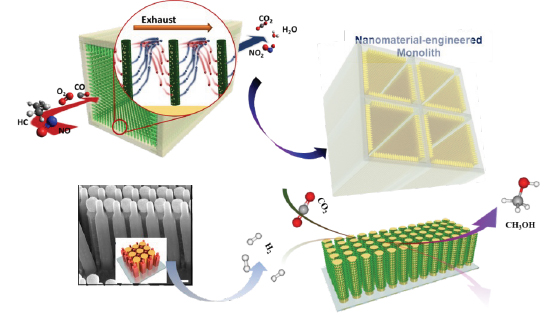
Nano-engineered monolithic devices are developed at the UConn Nanomaterials Science Laboratory for cost-effective and energy-efficient emission control, hydrogen production, and methanol synthesis, which are intercorrelated and can be potentially integrated as eco-friendly and sustainable chemical/fuel manufacturing systems. (References: Nature Communications 2020, 11, 1062; Nano Letters 2018, 18, 4914; Advanced Materials Interfaces 2018, 5, 1700730).
For the past decade and a half, Gao has aided in furthering MSE academics. A major part of this was through his research contributions. Gao said he is currently focusing on the design, engineering, and science of nanostructured materials ensembles. His work specifically addresses relevant and pressing issues in the world today, such as energy sustainability and climate change. Some examples of his work include low temperature adsorbers and catalysts for emission control, carbon capture and utilization, sustainable and renewable fuels, electrodes for water electrolysis, sensing and remediation devices for environmental monitoring and management, materials for advanced PPE and medical instruments, scalable nanomanufacturing, and in-situ characterizations of chemical/energy transformations.
Since much of his work involves other areas of study, he and his research group work alongside team members from various universities, national labs, and industry partners, such as the United Technologies Research Center, the Honda Research Institute, and Umicore.
Gao said that aside from himself, these relationships with industry partners also benefit his students. “I am very glad that many of our former and current undergraduate and graduate students, as well as postdoctoral trainees, have benefited from these relationships in the forms of either an internship, assistantship, or as a project participant,” he said.
After building strong relationships in interdisciplinary fields and communities, Gao is able to fully pursue the research he is passionate about. Early on in his career at UConn, he felt that he must make a distinction between his independent research and his experience training as a graduate student. However, he quickly learned that the people around him in the community took a more holistic approach.
“I felt very fortunate early on, and always thankful, that people in the research community have been open-minded and receptive to allow us to establish and position with a unique and impactful research area…We take pride in being able to contribute to the causes of tackling some technological and scientific problems in a large scale, such as the global emission control and utilization issues I mentioned earlier. I am excited and look forward to the bright future of this challenging endeavor.”
Gao’s appreciation of the communal feeling he experiences as part of the MSE Department has extended into both his classroom and his labs. His ability to do this is largely thanks to his outside partnerships with both academia and industry sectors.
“Over the years, we have engaged a broad array of interdisciplinary research topics and subjects in my laboratory, which is equipped with various capabilities from materials synthesis, processing, characterization, to device testing and modeling, thanks to the strong support over the years from the university and other sources.”
Gao likes to see students take full advantage of these resources.
“Despite the focus needed on individual research, we have always encouraged students to fully utilize the available resources in lab and get trained, and be capable of doing multiple things, not just one thing. That said, ‘multi-tasking’ ability is a beneficial trait that is trained for our students.”
He has found that such “full-range” preparation, both in-class and hands-on, has equipped students for various careers, regardless of the specific industry.
“Therefore, if there is any suggestion to current students, I would say, be open-minded about approaches, directions, and positions, ‘all roads lead to Rome.’ Of course, once settled in, self-belief, hard work and persistence matter for eventual success,” he said.
Author: Two MSE Alumni Join the MSE External Advisory Board
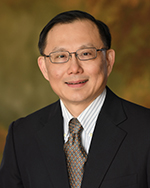
Paul Su, Staff Vice President, Principal Research Scientist, Equipment and Materials Science Research, FM Global
By Alec Arbia, Written Communications Assistant
The department is excited to welcome Dr. Paul Su and Victoria Reichelderfer as the newest two members of the MSE External Advisory Board. Now comprising nine highly reputable industry partners and alumni, the Board works to guide our curriculum, support our initiatives, and ultimately enhance the Materials Science and Engineering Department at the university, state, and national level.
Dr. Su is a University of Connecticut alumnus who earned his Ph.D. from the Materials Science and Engineering department in 1997. Paul has participated in materials R&D for over 30 years, especially in corrosion mitigation, materials degradation and monitoring, failure analysis, and chemical product development in the property insurance, chemical, and aerospace industries. He is a Fellow of the National Association of Corrosion Engineers and member of IEEE, ASM International, and ASME societies. In addition, Paul has received a patent and seven industry awards.
Victoria Reichelderfer graduated from UConn with her bachelor’s in 2020 and from the University of Colorado Boulder with her master’s in 2022, both in materials science and engineering. After moving back to the east coast, she began working as a materials and process engineer at Kaman Air Vehicles in Bloomfield, CT. There, she supports materials selection and process development, working mainly with metals and composites. Outside of work, Victoria is involved with the Society of Women Engineers and ASM’s Heat Treat Society, and is an active member of the Heat Treat Society’s R&D committee.
Cycling off of the MSE External Advisory Board are Peter Chomowicz, Peter Jarrett, and Howard Orr.
Department Head Bryan Huey notes, “We are so grateful to all of our board members for their advice and support, and will miss Peter, Peter, and Howard for their 30 years of collective insights. The EAB in general is always so helpful in advocating for our program, keeping the university attuned to industry priorities and concerns, and steering resources our way like equipment donations, internships, and jobs for our students and alumni.
The Board’s next meeting will be held in-person in Science 1 on the afternoon of April 14th, 2023, and many will join the department’s annual banquet that evening.
Author: The Cato T. Laurencin Institute for Regenerative Engineering Launched at UConn
You will be redirected shortly.
The Cato T. Laurencin Institute for Regenerative Engineering Launched at UConn
Author: It Doesn’t Hurt to Ask If You’re Interested in MSE Lab Work
By Alec Arbia, Written Communications Assistant
If you’re interested in doing lab work as an undergraduate materials science and engineering (mse) student, Jackson Kazsas’ story proves that all you have to do is ask.
When prompted as to why he wanted to study materials science and engineering, Jack says, “I was interested in mechanical and chemical engineering going into college and thought that mse would be a nice hybrid of the two.”
He read about UConn’s Materials Science and Engineering (MSE) department in a brochure during a campus visit and decided to find out if the school’s program would be a good fit. It was. “The small class size has helped me learn more effectively and make better connections with my professors. The MSE professors here are great teachers and great people, and I’ve enjoyed my time as an MSE student.”
Jack says that Professor Lesley Frame’s classes are what impacted him the most. “Her energy and enthusiasm for the topics she teaches have helped me retain my passion for materials science and engineering.”
Professor Frame is honored by Jack’s kind words. “It is always so rewarding as a professor when students ask me challenging questions. It shows that they are truly interacting with the material and that they are thinking about what comes next. Jack was always ready with insightful and challenging questions. I enjoyed having him in my classes!”
As far as research goes, Jack has been involved quite a bit. “I’ve worked in Professor Bryan Huey’s Atomic Force Microscopy (AFM) lab for almost two years now. AFM is a fascinating technique used to characterize the physical, electronic, and magnetic properties of functional materials.”
Jack first got involved with the lab because he wanted more research experience as an undergrad and emailed a few professors to let them know he was interested. “Professor Huey responded quickly and enthusiastically, and so I began work in his lab.”
What Jack does on a typical day in the lab varies a lot depending on the project he’s working on – however, some more consistent responsibilities include making detailed presentations and handling microscopes with care.
When asked his favorite part of this experience, Jack says, “I love the culture in the lab. My coworkers are great to talk to and always willing to help, and the lab meetings are interesting and productive. Working in Professor Huey’s lab is a great experience, and I would not have developed my ambition to earn a Ph.D. without my undergraduate lab work.”
Jack’s advice for other undergraduate students is to not be afraid to reach out to faculty. “Most professors are kind and willing to have undergrads help out in the lab.”
During his time at UConn Jack was also able to work with undergraduate lab director Professor Fiona Leek. “My experience with Professor Leek has been wonderful. She is an excellent professor and seems to understand and connect with her students. I’m sure that her new lab space in Science 1 will prove to be a great educational tool and make her lab classes even better.”
Elaborating on his thoughts about the new laboratories in Science 1, Jack thinks they are “a great investment by the university. The labs are larger, cleaner, and allow for more effective research. Hopefully the new labs lead to many great materials science discoveries in the future.”
As far as Jack’s future goes, he’s primarily interested in applying MSE for sustainability. “For example, I want to use my engineering knowledge to explore recycling pathways and carbon neutral materials manufacturing.”
This semester Jack started his own independent research project involving the recovery of valuable metals from electronic waste, which he recently discussed during a meeting with Professor Christian Brückner, Department Head of Chemistry. Materials Science and Engineering is a multidisciplinary field, which is why members of the major often collaborate with experts in other areas, such as the Departments of Chemistry, Physics, and all other Engineering disciplines. Jack was excited to be able to do just that. “Professor Brückner advised me to focus on some lesser-studied parts of this topic, specifically the analysis of potentially dangerous chemical waste produced during recycling as well as the recovery of more obscure elements (for instance cobalt, yttrium, and indium instead of gold, silver and copper).”
Jack’s biggest goal upon graduating from UConn in May 2023 is getting his Ph.D. – hopefully from Rutgers University in New Brunswick, New Jersey, where he did research last summer as part of an REU program. “UConn MSE has helped me toward this goal by providing a place for me to get research experience and flourish as an undergraduate student.”
Jack has received a scholarship for undergraduate excellence in mse, the Outstanding Teaching Assistant award, and has made several appearances on the dean’s list. He’s an Eagle Scout, the President of RunUC (UConn’s competitive running club), and an undergraduate student flourishing in an MSE professor’s research lab. It truly never hurts to ask.
Author: Study MSE to Make a Difference in Your Interests
By Alec Arbia, Written Communications Assistant
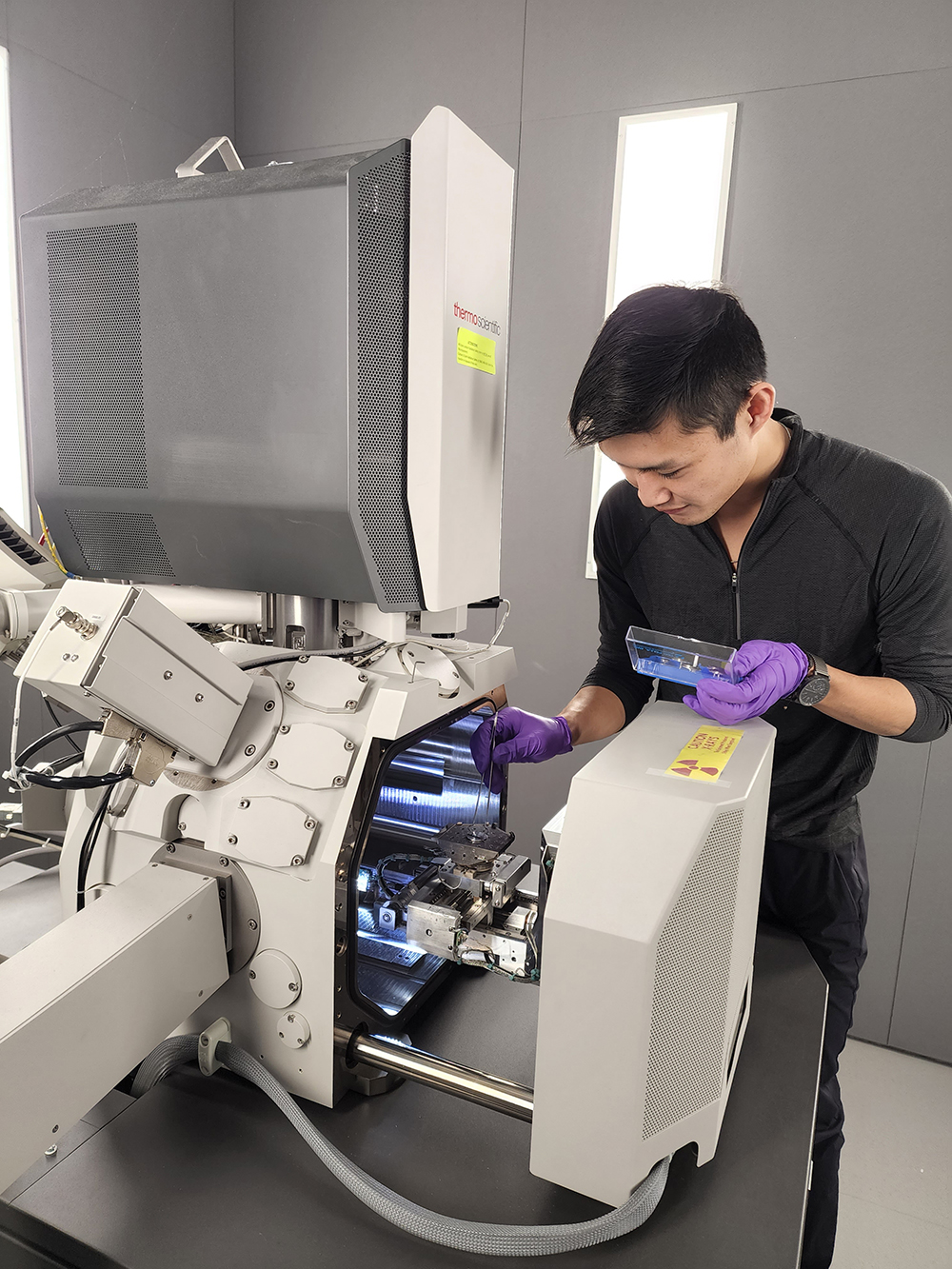
Kyrus Tsai, MSE graduate student, loading a sample into the Teneo SEM at the Center for Advanced Microscopy and Materials Analysis (CAMMA) in the Innovation Partnership Building (IPB).
As an MSE graduate student who used to play division three tennis, Kyrus Tsai wants to use his research to advance the material components used in tennis rackets – but more on that later.
While he was an undergraduate at Calvin College in Grand Rapids, Michigan, Tsai obtained a BSE with a concentration in chemical engineering and a BS in chemistry. But knew early on that he wanted to pursue material science, and also a graduate degree. Since Calvin did not offer a materials program, Tsai jumped into MSE when he came to UConn for a PhD.
“UConn was doing a lot of interesting research and I liked the collaborative nature of the department both between groups and with industry partners. I also recall on my visit, it being mentioned that UConn had the fastest growing Materials program in the nation and that appealed to me,” Tsai remembers.
At UConn MSE, Tsai is currently working on materials characterization of additively manufactured metals by observing the microstructure of these builds using a range of microscopy techniques. “It is cool to be able to observe what makes a given material have its properties and get into those core details. The research allows me to understand the reasons why, and the effects the microstructure has on the overall component.”
When asked what he hoped the impact of this work will be, Tsai says, “I am hoping that what I am doing and what I am observing can be used to improve the relevant additive manufacturing processes. We’re giving information on how process parameters affect the microstructures and ultimately the efficacy of the resulting builds.”
Additive manufacturing (also known as 3D printing) is an ever-growing field. Tsai’s research helps him understand not only newly printed parts, but also damaged ones. Repairing these parts requires studying the connection point between the existing piece and the new addition to determine if the repair will be successful, and whether the part can continue to be used in the same manner.
Tsai describes the MSE faculty members and staff as “incredibly friendly and knowledgeable. . . The collaborative nature of the department has allowed me to get help from other advisors, and gave me insight into other projects and groups.”
Tsai is a member of Professor Mark Aindow’s microscopy group. As part of a major joint effort, he is also regularly updated on the work done in Professor Seok-Woo Lee’s micromechanical testing group and Professor Avinash Dongare’s computational group. “This really helps me to gain a deeper understanding of fields/topics I otherwise may not touch on in my own research. Having meetings where other research areas are discussed in detail gives insight in ways that occasional seminars or research papers I read cannot.”
Tsai is not only a talented academic – he also plays club volleyball on the side. “Being a student athlete is not only possible for undergraduates but graduates as well. I think that is something that is important and a game changer for me. I am so glad that I am able to play competitive sports again since it has always been such a big part of my life.”
When asked what he wants to do upon graduating from UConn, Tsai says he is interested in two different directions that ideally he would combine into one. “The first is advancing the field of something I am interested in by introducing novel materials to those that are commonly used.”
The second direction? Dealing with sustainability. “Being able to use recycled or upcycled materials is incredibly important in my mind. Pollution and waste are huge issues that need to be tackled. I think taking on this issue from a MSE perspective is key.”
Tsai admits he has long been interested in the evolution of tennis rackets throughout the past century. “The evolution from wood to metal to composites like carbon fiber and graphene has always been something that fascinated me.” Some have even incorporated piezoelectrics for vibration damping and ideally more powerful strokes—just ask Professor George Rossetti about developing such rackets which even got used at Wimbledon.
Perhaps sustainable and recyclable tennis rackets are not too far off in Kyrus Tsai’s future. “It would be awesome to be able to be a part of that sort of change.”
Author: Become a Catalyst for the Advancement of Humanity by Studying MSE
By Alec Arbia, Written Communications Assistant
Looking back, Materials Science and Engineering alumnus Manuel Rivas has one major piece of advice for MSE students and graduates: go to as many conferences as possible. It was at conferences that Rivas was recruited to pursue his PhD at UConn, and years later to begin his dream job.
As an undergraduate studying physics at the University of Texas Pan-American, Rivas had the opportunity to be one of three undergraduates to present research at the Electronics Materials and Applications conference in Florida. This is where he met MSE Department Head and Professor Bryan Huey.
Rivas recalls meeting Huey during the conference social when Huey was talking to another professor about atomic force microscopy, a technique he hadn’t heard of before.
“Not being shy, I asked him to explain what AFM was since I wanted to be able to follow the conversation. Afterwards I bombarded him with questions,” Rivas admits.
Professor Huey remembers that conversation well. “Manny impressed me from the start with his ability to think on his feet, the types of questions he asked, and his drive to succeed. It helped that his then-professors also remarked about how much he had learned in their labs as an undergraduate, and how they came to rely on him even for training others. While a student Manny always made the most of every opportunity, whether it was undergraduate research, seeking chances to further develop his leadership skills, outreach events, even helping to launch a company.
Now, Rivas can say he doesn’t regret that move across the country, telling other students to socialize as much as possible at conferences. Shortly after the conference, he got a Skype call from Professor Huey and discussed the opportunity to join his team at UConn while pursuing his PhD.
“I still wasn’t sure of what I wanted with my future at the time, but I knew that this was an opportunity of a lifetime that I did not want to pass up,” Rivas says.
In 2012, Rivas joined the MSE graduate program as a PhD candidate and a member of Huey’s research group. He can say now that going up to Huey that day and eventually moving all the way to Storrs, Connecticut, were not decisions he regrets.
“Joining Huey’s research group was life changing. The group was extremely diverse, always ready to help one another, and pushing each other,” he says. “With their mentoring and comradery, it made being more than 2,000 miles from home not feel so bad.”
Professor Huey was the bridge to many more opportunities to come for Rivas. According to Rivas, he pushed him to apply to the NSF Bridge to Doctorate program (BTD) promoting participants of underrepresented groups in the STEM disciplines. This led to his master’s project, which led to a summer internship at the Army Research Lab near Washington D.C., and eventually a full- time job for three years with the ARL while he completed his PhD.
Though he was balancing a lot as he earned his degree, Rivas says he had a strong support system from friends, family, and the Huey research group. According to Rivas, that support along with having a good line of communication with MSE advisors and mentors, setting deadlines, being upfront when falling behind, and constantly planning how to best execute research were all crucial ingredients to pulling off the balancing act that is any PhD research.
During his time at the US Army Research Lab, Manny was developing a new top electrode for MEMS devices (microscopic devices, particularly those with miniature moving parts). An opportunity arose sponsored by the Defense Advanced Research Projects Agency (DARPA) to conduct research of the MEMS devices in radiation rich environments. Rivas jumped at the chance, eventually presenting some of this research at the IEEE Nuclear and Space Radiation Effects Conference (NSREC). A year after that presentation, and just a week after he defended his PhD, Rivas received a message from a technical recruiter from Blue Origin asking if he was interested in becoming their Radiation Effects Engineer. When Rivas asked the recruiter how they found him, he was told he had spoken with someone from Blue Origin at the NSREC conference who had written his name down in a list of people to watch.
Rivas joined the Blue Origin team at their headquarters in Kent, Washington in 2018 and has worked there ever since as a Radiation (“Rad” as Rivas calls it) Effects Engineer. He is now the Technical Program Manager. As a radiation effects engineer, he helped ensure the mission success of the space rockets and stations; radiation is the highest risk in a lot of these programs. As Program Manager he helps ensure radiation effects are well understood, and mitigated in a timely manner. Ultimately, “rad” is a fitting name for how Rivas describes his job.
“I work with an incredible group of individuals that push me to be the best version of myself. I’m constantly learning, through reading, online courses, conferences. And I get to leave my fingerprint in many things that will not just fly to space but really have the chance to impact the future of humanity,” he says.
The most difficult part of his job, Rivas admits, occurred when he first joined Blue Origin and was pulled into a multitude of meetings involving circuit design review. “At the time, I was a little lost since my background was physics and materials science and engineering, but not electrical engineering. With mentoring and online courses, I’ve managed.”
Within three years of Rivas having entered the field, the technical chair for the 2021 RADECS (the European version of NSREC) and largest Radiation Effects Conference in Europe asked Rivas to be the Session Chair for the conference. “I was honored since I would get to work with members of the Radiation Community from NASA, the European Space Agency, Airbus, and many more.” The community has done things the same way for a long time, but Rivas led a session on ways the community could obtain accurate results in a faster, cheaper, and therefore more effective way.
“The high level of engagement from the community with my session, as well as the congratulations of a job well done from my colleagues who’ve been doing this for 15+ years, was a sign that not only did I do well, but also that this topic will continue to be explored at future Rad Effects conferences worldwide,” Rivas says.
In addition to going to as many conferences as possible, Rivas’ advice for current MSE students is to never stop learning. Every year he selects several papers written in his field to read and analyze, and he is currently enrolled in more than ten online courses. These courses range from project management, to aerospace engineering, to 3D printing.
Professor Huey notes, “Like so many of our graduates, Manny has become an inspiration to our current students. He’s giving back by helping them build out their own professional network. And his work is just fascinating. It’s always a pleasure to hear from him, and so many other MSE alums, when we get to reconnect.” In fact, Manny is giving our department seminar on March 3, and he will also meet with UConn’s Society of Hispanic Professional Engineers (SHPE).
When asked if he had any final comments, Rivas said the following: “Give back to the community, help inspire the future generation of scientists and engineers.” Throughout the year Rivas often enjoys giving talks at local schools and libraries about Engineering for Space to K-12 kids.
“If you can inspire one kid, that kid can go on and make the next scientific breakthrough, which in turn makes you a catalyst for the advancement of humanity.”
Author: Alumnus Reflects on His Wonderful Time at UConn
By Kyra Arena, Written Communications Assistant
Alumnus Haibo Yu has so many positive remarks about his time at UConn. He credits the excellent classes, meaningful research opportunities, supportive advisors and mentors, and life-long relationships made there for his pleasant experience. “All of these have created unforgettable and precious memories that I will carry along in my life wherever I go,” he says.
Yu’s interest in materials science and engineering started at the University of Science and Technology Beijing (USTB) where he received his bachelor’s and master’s. He became amazed by the interdisciplinary characteristics of materials science and the striking structure-processing-performance-properties relationship of materials. “It was also in that period when I started to realize the significance and power of characterization techniques, particularly electron microscopy, for probing materials structures and properties. This unveiling of microscopic interactions is crucial to solving a host of problems for materials applications,” says Yu.
After his time at USTB, Yu decided that he wanted to further his education in MSE. “I wanted to study abroad and explore the field further, particularly electron microscopy characterization,” he said. “UConn was one of my top options, because it is one of the top public research universities in the United States. Most importantly, UConn hosts a stunning Materials Science and Engineering program covering state-of-the-art research in diverse areas of materials science, including Materials Characterization, Materials Synthesis & Processing, and Theory & Modeling.” Thus, Yu obtained his doctorate from UConn in 2017.
At UConn, Professor Mark Aindow served as an advisor and mentor to Yu. During his five years in the Ph.D. program, Yu claims that he learned something new from him every single day. “Professor Aindow not only taught me about what is important both personally and professionally, but also provided meaningful opportunities for growth,” he states. “Professor Aindow is a lifelong role model to me, and his mentorship has had an invaluable impact on my career success to date.”
Another role model that Yu had at UConn was Professor S. Pamir Alpay, who has been the interim Vice President for Research since February 2022. Yu went under his co-supervision for a project on advanced Electrical Circuit Breaker Contacts, funded by GE Industrial Solutions. “It was truly a pleasure working with Professor Alpay, from whom I learned a lot, and I was deeply impressed by his talent, creativity, energy and enthusiasm for life and science,” says Yu.
Post-graduation, Yu took a position at Honeywell UOP in Des Plaines, IL where he currently serves as a Senior Advanced R&D Engineer/Scientist. Honeywell UOP is an international supplier of process technology, products, engineered systems and technical services to the petroleum refining, petrochemical, gas processing and energy industries, and is a leader in the research and development of petroleum and petrochemical processing. “At UOP, I have great opportunities to work with expert colleagues on exciting research projects, and most importantly I can utilize my electron microscopy expertise to support the development of life-changing technologies and to solve metallurgical failure issues in commercial and industrial applications,” he says.
In his position, Yu uses advanced electron microscopy characterization techniques for metallurgical failure analyses. This helps to resolve failure/corrosion issues, including those associated with metals and alloys, and also for catalysts in an industrial petrochemical and refining related environment. Also, he leads corrosion coupon testing to determine appropriate alloys/plastics/coatings for materials being considered for groundbreaking processes/technologies in both modern petroleum refining/petrochemical solutions (e.g., catalytic dehydrogenation, alkylation, platforming) and sustainability technologies (e.g., renewable fuels, battery energy storage, carbon capture).
His research helps commercial customers in oil refining and other petrochemical industries to identify root causes and mechanisms of possible corrosion or mechanical failures during the service life of various plant equipment. “It is gratifying that my research studies can often not only identify the problem causes, but also direct the customers to alternative solutions to mitigate future risks and ensure continued safe plant operation,” Yu claims. “Also, my characterization research plays a part in the company’s sustainability technology development, especially in the areas of renewable fuels, battery storage and carbon capture, contributing to environmental protection with carbon neutrality for a more sustainable future.”
For students who are interested in pursuing a career in MSE, Yu has two pieces of advice. First, find your specific area of interest because it will keep you enthusiastic for your entire career. Second, overcome fears of failure. “Everyone has difficulties, discouragements, and even failures during any research project. It is always beneficial to face these hurtles with optimism and courage. This will greatly help you proceed with a bright future, not only in MSE, but also in life,” Yu wisely states.
Yu expresses his best wishes and heartfelt gratitude to the Department of Materials Science and Engineering at UConn. “I am very glad to see the continued growth of the MSE Department at UConn,” Yu says. “I feel happy for the current MSE students, as they could potentially have access to the premier Innovation Partnership Building center at UConn Tech Park and possess great opportunities to conduct exciting research that is changing the future of materials science. I sincerely wish UConn MSE students joy and success in their futures like I’ve enjoyed.”
Author: Space Nerds and Cyborgs Study MSE!
By Alec Arbia, Written Communications Assistant
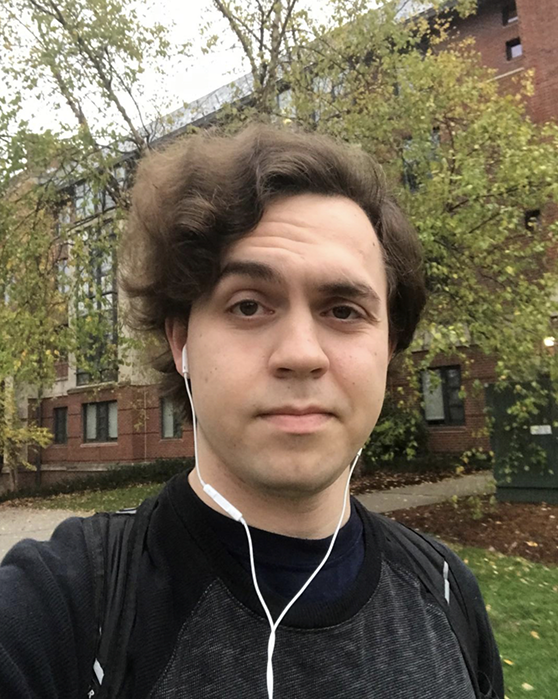 Ever imagined what a day working at NASA would be like? Seth Utter is a senior MSE major who had the opportunity to do just that.
Ever imagined what a day working at NASA would be like? Seth Utter is a senior MSE major who had the opportunity to do just that.
Seth was able to participate in the NASA Pathways program, which is a work-study (co-op) that prepares participants for a career at NASA. Pathway interns gain valuable work experience and are offered a direct pipeline to full-time employment at NASA upon graduation. This was an amazing opportunity for Seth, who has a “fascination for making new materials in the aerospace industry” and originally wanted to be an aerospace engineer. Over three consecutive summers, he was able to work at three different branches of the Johnson Space Center to get an all-encompassing experience of what working at NASA is like.
When asked what he learned from this experience, Seth stated that the better question would be, “What didn’t I learn?” At the materials and processing branch Seth got to work on and design a test for thermal isolators on VIPER, a lunar rover that is currently planned to be sent to the moon in November of 2024. He was also able to study padding for the Exploration Extravehicular Mobility Unit (xEMU), which is the spacesuit that will be worn by the first woman (and the next man) to walk on the moon. At the thermal design branch Seth got to research materials being used for heat shields and conducted a heat shield sizing simulation, for which he had to learn Linuxis. This was Seth’s favorite part of the co-op due to the “great project, great mentor, great colleagues, and it was right up my alley in terms of what I was interested [in]. I got to learn a variety of techniques and even got to do an Arc Jet test where a mock heat shield I made got completely destroyed!” Finally, at the thermal systems branch, Seth used Thermal Desktop software to work on establishing temperature requirements for equipment that may someday be installed at the lunar south pole.
To any students looking to take part in the NASA Pathways program, Seth said “They want space nerds! Show them that you’re a space nerd!” He encourages applicants to “mention any projects you have done on your own time that relate to space and your interest in it.” Seth explained that one of his own biggest selling points was when he described an honors assignment on heat shield applications of Ceramic Matrix Composites (CMCs), which are a type of material that consist of ceramic fibers embedded in a ceramic matrix. It was completely online research with no actual testing, but they loved it. “Most importantly, what you do doesn’t have to be from a professor’s lab or a club activity either! You want to simulate a Mars landing? Do it! You want to build a rocket engine? Go for it! Because even if you fail at doing it or don’t have the money and have to just do a research paper on it (like me), it shows interest! That honestly goes for any industry, not just this!”
Seth originally wanted to become an aerospace engineer but settled on mechanical engineering with an aerospace concentration when he realized UConn doesn’t offer an aerospace program. Seth says that the moment that changed his mind and interested him in the MSE major occurred during his 1000 ENGR: Orientation to Engineering course, when Professor Bryan Huey gave a lecture on Materials Science Engineering and explained how applicable it was to aerospace. What convinced Seth to stay in the major, though, was “the close-knit community of students, passionate professors, and variety of research opportunities available.” Another one of Seth’s favorite parts of the major is how small the class sizes are, as it allows one to get to know their fellow students very well. “It makes communication between peers a lot easier when you don’t have to continuously reintroduce yourself to new people every semester.”
The field that interests Seth the most is thermal engineering. “One of the most interesting topics for aerospace is the developments happening for thermal protection shields. Materials are constantly being developed in different ways to stand up to some of the hottest environments that space throws at us. How do we make it so the material can withstand multiple runs? How do we make it so that it’s easier to create and still perform well?”
Seth’s favorite class that he’s taken thus far would have to be MSE 4040: Materials Selection in Mechanical Design, taught by Professor Greg Ojard. “Arguably one of the most important classes you can take if you plan on doing anything that involves making anything. This class helps you learn how to pick out the right material for the job and understand why certain materials and shapes are used in your day-to-day life.” Seth says that this class was incredibly helpful for his Senior Design Project with Pratt & Whitney, Hybrid Metal Composite Case Design, advised by Professor Sophie Wang. A major part of the project was going through the materials selection process that he had learned in MSE 4040.
Seth enjoys traveling to nearby cities, being a TA under Professor Lesley Frame for MSE 2101: Materials Science and Engineering I, and working in UConn’s new Science 1 building. “The fact that I can now have a meeting with my Senior Design Team in the same room as the equipment we’re going to be using to test our samples is such a huge convenience. Need to check our tensile grip measurements? Just do it right there! Not sure of a test result? Just redo the test right there! Not to mention having everything on the same level reduces time going between using one machine to the next. I can say for certain I won’t miss having to go up and down flights of stairs between our old labs for testing.”
Seth is a recipient of the Lockheed Martin Scholarship, which is a “financial aid program that provides support to freshmen and sophomore students who demonstrated academic excellence, leadership, avid participation in school/community activities, and clear aerospace-oriented career goals.” He has also received the NASA Connecticut Undergraduate Scholarship and is a Babbidge Scholar Recipient. Seth will be graduating in May 2023 and hopes to find a job in a lab environment, testing the latest and greatest in aerospace materials. Eventually he would be interested in a project lead role.
When asked for a fun fact about himself, Seth explained that he has a titanium dental implant in his front tooth. “I am part cyborg!”
Department Head Huey noted, “It’s no surprise that the impact of materials engineering on everything from aerospace, to cyborgs, is motivational for our students. Seth’s experiences at UConn, with the new labs, inspirational classes and projects, and meaningful internships, are perfectly aligned with our department’s goals for all of our students.”
Author: MSE Alumna Encourages: “Don’t be shy to get your hands dirty”
By Kyra Arena, Written Communications Assistant
As an alumna of UConn, Girija Marathe has learned the value of embracing every opportunity that comes her way. Throughout her journey, she has encountered countless situations where she had to roll up her sleeves and dive headfirst into something unfamiliar or challenging. And while it may be intimidating at first, she has always come out on the other side stronger. So, don’t be shy about getting your hands dirty – it is through these experiences that we grow and learn the most.
Marathe is currently a senior engineer at a Fortune 500 Company, Otis, which is the largest manufacturer of vehicle transportation systems. Marathe’s primary responsibility is to support and sustain materials engineering activities. She provides materials engineering support for Otis’ supply chain, their factories, and their commitment to quality. She also performs failure analysis, reviewing, and revising of Otis material specifications in compliance with industry standards. She is further involved with developing cost effective and robust materials engineering solutions for mechanical components of elevators. “Some of my projects are surface engineering of shafts, electronic safety actuators, analyzing coating alternatives on belt cords, and developing and understanding the failure mechanism of safety friction surfaces,” she says.
Prior to her job at Otis, Marathe served as a senior metallurgist at Schaeffler Aerospace. Her role was to maintain bearing quality from raw materials through to the final product stage. She oversaw new heat treat process development to meet customer requirements, wrote internal quality documents and procedures for their Heat Treat and Metallurgical laboratory, and audited heat treat and metallurgical labs at the Danbury and Winsted Schaeffler plants. She also trained new technicians about new customer and internal metallurgical requirements, and performed metallurgical failure analysis on returned parts. “One of the projects which I cherish the most from my time at Schaeffler involved working with the vacuum carburizing process. That included installation of the furnace, process development of the ring component subject to respective customer approvals, writing internal documentation, and ultimately helping to get the plant ready for NADCAP certification for vacuum carburizing process in order to be certified by the Aerospace Auditing committee for full time production,” states Marathe.
The field of materials science and engineering is still very male-dominated, and Marathe acknowledges that she faced some challenges and pushback when she first started her career. “In the beginning, I sensed that sometimes my suggestions and inputs were ignored in meetings, or even passed off by others as their [male coworkers] own,” she says. “However, a short time after I realized this, I started building alliances across teams and got more vocal about my suggestions.” Thus, Marathe’s determination and hard work led to significant accomplishments and successes within her career.
Marathe joined the field of materials science and engineering due to a close family friend who was a MSE professor at her undergraduate university. She later decided to pursue a higher degree in MSE and earned her Ph.D. from UConn in 2011. “I chose to attend UConn because there were very few universities which had metallurgical engineering programs with active research in the field of powder metallurgy or mechanical metallurgy,” she says.
At UConn, Professor Herbert served as a key role model in Marathe’s journey as a graduate student. “Professor Hebert’s calm persona and empathetic nature really supported me through my studies. UConn also enabled me to expand my horizons by exposing me to other materials technologies like developing bulk laminates using ARB, metallic glass,” Marathe says. “I was very fortunate to have a tightly knit and collaborative group of friends and fellow researchers who helped me overcome challenges faced during my graduate journey.”
She also has some helpful advice for students looking to pursue a career in MSE. “One very important lesson I learnt in my career was to gain a few years of experience in the manufacturing and production world. Shopfloor and production floor experience really helped me understand the importance on how real time problems can impact the production and quality of the product,” Marathe states. “Don’t be shy to get your hands dirty while working on the production floor. Be eager to learn something new every day.”
Author: MSE Undergraduate Research Opportunities is What Drew Matthew Carragher to UConn
By Kyra Arena, Written Communications Assistant
Undergraduate student Matthew Carragher already knew when he applied to college that he wanted to pursue materials science and engineering. But he chose UConn because of the MSE Department’s undergraduate research opportunities. “I think what made the decision obvious was the amount of interesting materials research going on at UConn,” Carragher says. “The amount of faculty doing research is massive, making it really easy to find opportunities here.”
Carragher is a senior graduating in May 2023. He chose to study MSE because it is a mixture of different type of sciences. “MSE is an amazing blend of both the hard sciences, concepts you would learn in a chemistry or physics curriculum, and the practical applications of those concepts you get from other engineering majors,” he says. “I think I wouldn’t have been satisfied in my education if I only learned one side of that spectrum, and so MSE was the obvious choice.”
Carragher’s favorite area of MSE is metallurgy. “I don’t think I realized just how much there is to learn about metals until I got to UConn. In class, we often talk about the relationship between structure, properties, processing, and performance, and there are few areas of materials science where that relationship is so strong,” he says.
At UConn, Carragher is a teaching assistant in Professor Fiona Leek’s lab. He helps set up and run the experiments for the junior class, makes sure all the experiments run as smoothly as possible, and imparts practical knowledge of MSE that students might otherwise miss. “Professor Leek has been amazing to work with,” says Carragher. “She is more than willing to listen to the opinions of her teaching assistants and values the ideas we come up with. She gives me the autonomy to run many parts of the lab classes myself, while providing help when I need it. All of these things have taught me a lot about how to be a good teacher and leader.”
Carragher also works in the Foundry with recently retired Emeritus Professor Harold Brody. Carragher describes this as the highlight of his time at UConn. “Professor Brody is an amazing resource, and has an unbelievable body of knowledge to draw from. I don’t think I’ve ever walked away from him and not learned something new,” states Carragher. He also praises Emeritus Professor Brody’s ability to challenge him to think critically and apply every concept he’s learned. “He has made me a far better engineer and academic than I could have possibly imagined.”
Recently, Carragher attended the IMAT conference in New Orleans with fellow undergraduate student, Jaclyn Grace, and Dr. Frame’s research group. Grace and Carragher participated in the Domesday competition where they designed and fabricated a geodesic dome that had to protect an egg from a hydraulic press.
During his free time, Carragher is the president of the Metal Working Club, the chief technology officer of the 3D Printing Club, and a member of UCMA. The Metal Working Club aims to teach students about different metal processing principles, like casting and blacksmithing. The club uses the Foundry and its resources for many of the projects. “The club has given me the chance to apply many MSE concepts to solve problems and help other members with the projects they want to work on,” claims Carragher. “Our faculty advisor, Professor Frame, has been a pleasure to work with and has been extremely supportive of everything the club wants to do.”
Department Head Huey notes that the Metal Working and 3D Printing clubs are incredible opportunities for students, not just to expand their knowledge, but also their organizational and leadership skills. The clubs are so successful because of devoted students like Matt, devoted faculty mentors like professors Frame, Brody, and Leek, and a continued commitment from the department to support and indeed grow the clubs. As Matt has demonstrated, MSE students have wonderful chances to be engineers and practice what they learn while they’re still students. And starting this term, they get to do so in our incredible new Science One building.
After graduation Carragher plans to pursue a master’s degree and then Ph.D. degree. After graduate school he wants to spend some time in industry, and then go back into academia with his practical knowledge. “Research and industry are so deeply intertwined, and I think spending some time in both areas would do everyone good,” he claims.
For students questioning whether to study materials science and engineering, Carragher says to go for it. “Studying MSE is such a good way to broaden your future opportunities,” he says. “Someone with a degree in MSE can go into just about any STEM related job they want, while still getting to learn a specialized field that makes them stand out from other potential candidates.”
Author: Volkan Ortalan Takes DoD University Research Equipment Awards
You will be redirected shortly.
Author: Andres Godoy Wins Chateaubriand Fellowship
By Kyra Arena, Written Communications Assistant
Graduate student Andres Godoy recently won the prestigious Chateaubriand Fellowship to study at the Université Grenoble Alpes in France. The fellowship is a merit-based grant offered by the Embassy of France in the United States that supports Ph.D. students from American universities who wish to conduct research in France. He first learned about the fellowship from Assistant Director of Enrichment Programs for Research and Fellowship Programs, Rowena Grainger. “This opportunity has been a very fruitful and rewarding experience, at the personal and professional level,” describes Godoy.
Godoy received his bachelor’s degree in materials science and engineering from Universidad del Valle-Cali (Colombia) in 2011. He decided to join the field of MSE because he was interested in the idea of working in an interdisciplinary field of science that brings together physics, chemistry and engineering with the goal of designing or discovering new materials. After working at the University of Texas as a research assistant from 2011 to 2017 he joined the MSE Department at UConn as a graduate student.
At UConn, Godoy is a part of Assistant Professor Jasna Jankovic’s research group. “At the time, Professor Jankovic was a new professor in the department, but she had a lot of experience in fuel cells and was eager to build something great,” claims Godoy. “I wanted to be part of that process, and so far we have grown significantly together; I am very proud of that and our team. Professor Jankovic always keeps pushing us to go beyond our limits, but also encourages us to get some time for ourselves to have a balanced life.”
“I am very proud of Andres” says Professor Jankovic. “He has advanced so much during his Ph.D., and gained invaluable expertise in microscopy and fuel cells. His energy and passion are indispensable, and his desire to learn more is admirable. Congratulations to Andres for receiving the Chateaubriand Fellowship! I am sure you will represent our team and UConn in the best light. Also, make sure to wave to us from the top of the Eifel Tower!”
Currently, Godoy is interested in clean energies. “I am especially interested in using fuel cells as a practical solution to tackle the existential climate and environmental crises triggered by the use of fossil fuel-based energy generators,” he says. His goal is to create a new and efficient catalyst materials for proton exchange membrane fuel cells (PEMFC) which use clean fuels instead. This solution would give zero-emissions, be highly efficient, have low maintenance costs, and contain a high energy density.
Godoy built on this area of interest to conduct research while in France. By using advanced electron microscopy techniques, he proposed an investigation into the structure and properties of state-of-the-art and novel catalyst materials used for fuel cells. This will help to fundamentally understand the dominant degradation mechanisms at a nanometric level which these catalyst systems can experience under certain operating conditions.
Post-graduation, Godoy hopes to be a Fullbright Scholar to teach in France, Germany, England or Japan. Then he plans to continue his research in academia and wishes to be a professor.
For undergraduate students considering graduate school in materials science and engineering, Godoy suggests talking to professors and completing an internship. “If you talk to a professor doing research on topics you are interested in or passionate about, most of them are very responsive and willing to help,” he says. “If possible, do an internship and build up a strong resume tailored to the area you feel strongly about. But in general, get out of your comfort zone and do the things that may intimidate you.”
Author: Xueju (Sophie) Wang is a 2022 EML Young Investigator Award Winner
By Kyra Arena, Written Communications Assistant
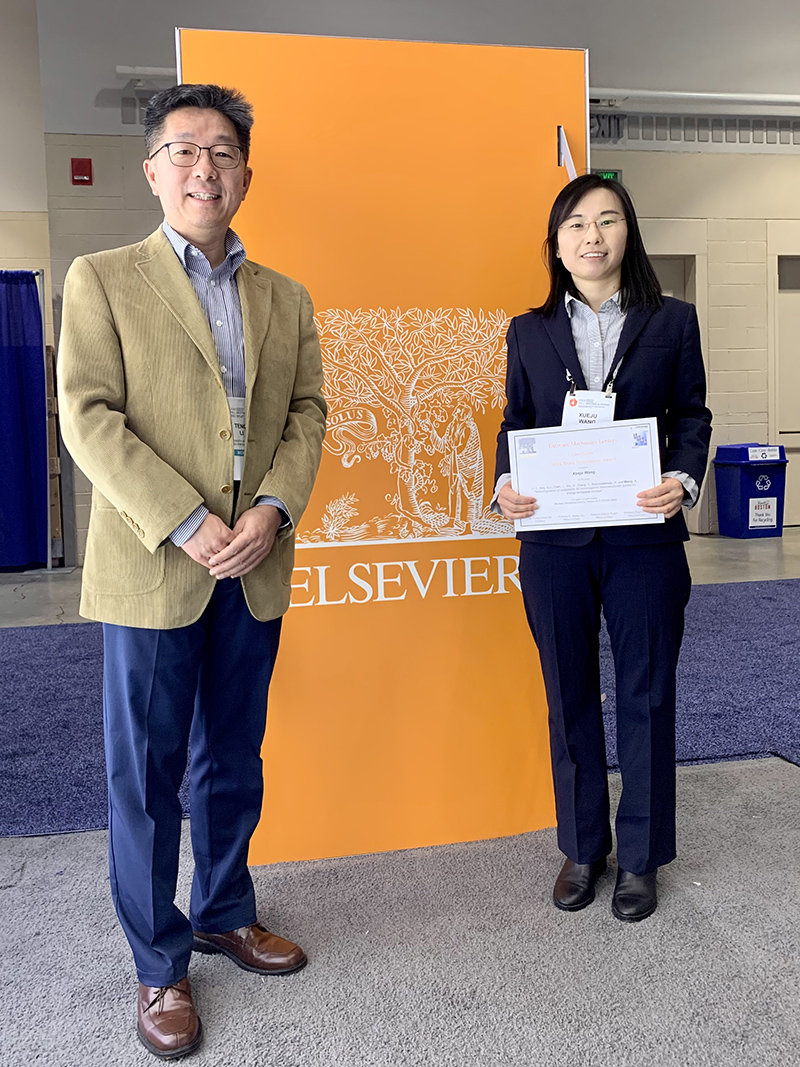
Xueju “Sophie” Wang (right) receiving the EML Young Investigator Award certificate presented by Professor Teng Li (left), editor of the journal EML and professor at the University of Maryland, at the 2022 MRS Fall conference.
Professor Xueju (Sophie) Wang recently won the Extreme Mechanics Letters (EML) Young Investigator Award. The YIA is sponsored by Elsevier to honor the best paper by a young scientist which has been published by the journal EML. The YIA honor is bestowed annually to the corresponding author(s) of the paper who received her/his Ph.D. within 10 years of the award. EML is a journal that focuses on the role of mechanics in various fields such as materials science, physics, chemistry, biology, medicine, and engineering, with a particular emphasis on the originality, depth, and impact of new concepts and observations in applied sciences. Wang is one of just four 2022 winners.
Wang’s paper titled “Reconfiguration of multistable 3D ferromagnetic mesostructures guided by energy landscape surveys” fits perfectly in the scope of this emerging journal focused on the mechanics of functional materials and structures. The paper was recognized for presenting a comprehensive experimental and theoretical study on highly nonlinear, multistable three-dimensional magnetic structures. It explored ways to control their multistable states and least energy reconfiguration paths. The findings are an important step towards the development of reconfigurable structures for a variety of applications, such as soft robotics and multifunctional deployable devices.
Professor Wang is currently an Assistant Professor in Materials Science and Engineering and the Institute of Materials Science at the University of Connecticut. Her research interests include stimuli-responsive materials and multifunctional structures for applications ranging from soft robotics to bio-integrated electronics, which combines elements of mechanics and multiple scientific fields. In addition to the EML Young Investigator Award, Wang has also received the NSF CAREER Award, NIH Trailblazer Award, ASME Orr Early CAREER Award and PMSE Young Investigator Award for her contributions to the field of research.
Author: Dr. Cato Laurencin Receives Shu Chien Achievement Award
You will be redirected shortly.
https://today.uconn.edu/2023/01/dr-cato-laurencin-receives-shu-chien-achievement-award/
Author: MSE Students Visit Nucor for the First Time Since the Pandemic
By Kyra Arena, Written Communications Assistant
At the end of October Professor Lesley Frame and Professor Fiona Leek, Director Undergraduate Laboratories, reinstated an MSE tradition of taking students to visit Nucor; this is the first visit since the COVID-19 pandemic. Students attended as a part of the MSE 4004 Thermal and Mechanical Processing course, as well as students from Senior Design.
Nucor is one of the largest US steel producers. They have a vision that closely aligns with the UConn goals for sustainability.
Professors Frame and Leek claim that UConn is very lucky to have a facility like Nucor in Connecticut that the students can visit to learn more about thermomechanical processing. “It was really wonderful to bring the students to a steel mill where they are using equipment that is from the mid-20th century right to the new instrumented roll stands,” Frame says. “It is important for students to see that updates to manufacturing facilities don’t happen all at once. These upgrades are part of continuous improvements, which is why it is so important to learn about older methods of manufacturing processing and control right alongside the new technological breakthroughs.”
Approximately 30 students attended the tour, with mostly undergraduate students. Students were met by managers and engineers of Nucor, who were very eager to share knowledge, and information about internships and job opportunities. Senior Matthew Carragher said the following about the visit: “The Nucor trip was a fantastic experience. Getting to see the machinery at Nucor really puts into perspective just how large these operations are, and the amount of work that goes into them.”
Author: Graduate Student Presented at the SHPE Conference
By Kyra Arena, Written Communications Assistant
Graduate student Karla Del Cid-Ledezma competed in the Engineering Science Symposium at the Society of Hispanic Professional Engineers (SHPE) Convention in Charlotte, North Carolina from Nov. 2nd to 6th. The SHPE Convention serves as the largest annual gathering of Hispanic STEM students and professionals to network, share research, receive awards, and attend educational workshops. “The convention, besides having the competition, was full of workshops that dealt with imposter syndrome, being authentic, and both personal and career goals/paths,” she says.
In the Engineering Science Symposium, there are five thematic categories that center around the current research conducted that has a potential role in solving society’s greatest challenges. Del Cid-Ledezma competed in the Avances or Advances category where she presented her research titled “Novel Ultra-Resolution Properties of Materials in 3D.” The presentation was about an aspect of her research where she uses an Atomic Force Microscope to look at properties of materials below the surface; then she uses a tomography to reconstruct that data in 3D.
Del Cid-Ledezma is a fourth year PhD student a part of Department Head and Professor Bryan Huey’s lab. At the SHPE Conference, Del Cid-Ledezma represented the Graduate SHPE chapter at UConn, where she currently serves as Vice President. “The convention was the largest gathering of Hispanics in STEM, and it helped reaffirm my sense of community in the STEM field,” she says.
Author: MSE Alumnus Thanks his Previous Major Advisor for his Successes
By Kyra Arena, Written Communications Assistant
MSE Alumnus Junfei Weng credits his time at UConn to his success at the international company, Umicore. This company focuses on catalysis, energy & surface technologies and recycling across the world. “In automotive catalysts, Umicore provides customers with technologies and products in emission control catalysts, mostly for light-duty and heavy-duty vehicles and for all fuel types,” says Weng. “I regularly apply what I learned about catalysts during my Ph.D. studies. My contributions sometimes seem small, but they make important contributions to the business and our customers.”
At Umicore, Weng is a North America Diesel Product Application Manager. In this position, he mainly works on customer support, technical discussions, and internal research and development of diesel aftertreatment accelerated aging cycle (DAAAC) protocols. In the automotive industry, the DAAAC protocol is a diesel aftertreatment accelerated aging procedure that results in catalytic system deterioration similar to that observed in field-aged components. The procedures that were developed aimed to shorten durability testing times dramatically, with a reduction in durability testing time goal of ≥ 90%. It also saves the cost of time, fuel consumption, labors, etc. “My responsibility in Umicore is to understand how we could better systematically and statistically represent the real-world aging in a laboratory environment from the perspective of catalyst deterioration,” he says.
Weng first came to UConn after receiving his Bachelor of Engineering and Masters of Engineering in materials science and engineering at Beihang University. “I was eager to apply for a Ph.D. degree abroad after my Master’s program in China. UConn MSE faculty had received numerous awards for their excellence in research, publications, innovations and education. The strength of the IMS, especially its multidisciplinary focus, was also important to me,” states Weng. “In addition, I had heard from other UConn students about the beautiful campus, the convenient infrastructures, and the friendly culture here. Also, I was thrilled to learn that all full time PhD students at MSE are offered full funding to conduct their studies, research, teaching and outreach responsibilities.”
At UConn, Professor Pu-Xian Gao provided Weng with invaluable mentorship as his major advisor. “He always encouraged me to approach questions from multiple perspectives, and to innovate. This helped me strengthen my “scientific” thinking patterns that I regularly used for my research and nowadays my career,” Weng says. “In addition, I appreciate the power of ‘putting your feet on the ground’ that Professor Gao always mentioned. No matter how innovative an ‘idea’ is, we still need to start from reviewing the literature, conduct careful testing, and finally demonstrate feasibility.”
“I greatly appreciate his kindness, genuine care, and strong support for me when I had to face both academic and life challenges,” Weng states. “He helped me build confidence, diligence, and enthusiasm. It was a great pleasure and honor working with him as his student.”
For students who are pursuing a career in materials science and engineering, Weng has five pieces of valuable advice. First, be curious about the materials themselves. Consider every aspect: the structure, synthesis, characterization, performance, and deactivation. Second, a comprehensive literature review is always helpful. Third, present your research with different audiences to improve presentation skills and receive feedback. Fourth, apply your solid foundation of materials knowledge, and get well trained on the experimental operation and setup. Lastly, seek opportunities in industry to bridge the gap between academic research and real-world innovation.
Author: UConn Sparked an Undergraduate Student’s Love for MSE
By Kyra Arena, Written Communications Assistant
Undergraduate student Jaclyn Grace’s involvement on campus is astounding; she keeps busy as the President of UCMA, President of the 3D Printing Club, a teaching assistant for MSE 2101 and UNIV 1820, a Maker Specialist for the Werth Innovation Zone, was a member of the VII Explore Engineering Camp, competed in the International Materials Applications and Technology (IMAT) conference and works as a part of Professor Bryan Huey’s research group. In other words, she does it all!
Even though it’s clear Grace loves materials science, she initially started out as a biomedical engineering student on the biomaterials track. But, when she learned that the same program was offered in materials science, she immediately switched. “There’s a lot of versatility in materials science and I love how broad the program is,” she says.
As President of UCMA and President of the 3D Printing Club, Grace has a lot of responsibilities. For UCMA, she plans and organizes the annual MSE banquet as well as plans other outreach programs. At the 3D Printing Club, Grace teaches students how to use different modeling software such as SolidWorks, Fusion360 and OnShape. The club also has a design challenge every month and has run a design competition for high school students too.
Out of all her involvements, being a Maker Specialist for the Werth Innovation Center is one of her favorites. “I love working in the Makerspace. I have access to a multitude of different machines such as 3D printers, laser engravers, sewing and embroidery machines, soldering equipment and woodworking tools,” says Grace. “I’ve been working in the IZone for a year and a half now, and it has become a safe place for me to go when I just need a break from everything. I have also made a bunch of connections with both staff and students of First Year Programs and had the opportunity to run many different programs such as sewing and textile skill shares, challenges such as the marble and egg drop challenge, and Month of Discovery activities.”
In the Makerspace, Grace is also a teaching assistant. She teaches UNIV 1820, which is Introduction to Making. This includes teaching students how to use different machinery in the facility, such as sewing and 3D modeling. Another course she helps with is MSE 2101, the introductory class for non-MSE majors “Materials Science and Engineering I.” Her responsibilities include holding office hours and grading homework.
The Makerspace isn’t the only place that Grace gets to help others. This past summer, she worked at the VII Explore Engineering camp, is a weeklong residential experience designed to introduce high school students to all the engineering disciples at UConn. “That camp was one of the most rewarding experiences I’ve ever had. It’s crazy how many faces light up when you show students how their interests match to a major,” she states. “During the E^2 camp, I got to do a demo creating casein plastic, which is a plastic that is made simply using heated milk and vinegar. The students loved it.”
One way that Grace gets involved in research is with Professor Huey’s lab. In his research group, she is learning to operate an Atomic Force Microscope. Over the summer, she was involved in a research paper in conjunction with Professor Xueju “Sophie” Wang’s, studying Shape-Memory Thermochromic Liquid Crystal Elastomers. For this, Grace conducted force curve mapping at variable temperatures to see how the mechanical properties of the LCE reacted to heat. Grace praises her time in the lab: “Professor Huey has provided me with numerous opportunities and connections to further my career in MSE.”
Another faculty member that Grace praises is Undergraduate Laboratory Director Fiona Leek. “She has been the perfect mentor over these past few years,” she says. “It’s awesome to get real lab experience before working in industry. Those lab experiences are invaluable. Not a lot of other majors have this opportunity.”
Speaking of opportunities, one major event that Grace attended this semester was the International Materials Applications and Technologies (IMAT) conference in New Orleans, Louisiana. There, Grace competed in the DomesDay competition where her peer, Matthew Carragher, and her designed and fabricated a geodesic dome that had to protect an egg from a hydraulic press. “If it weren’t for the MSE Department, I would not have had the opportunity to go on such a trip. It was a great way to learn more about materials science, explore a new city, learn more about the professional side of engineering, and make some new connections,” she says.
Post-graduation, Grace hopes to go into biomaterials and tissue engineering. Her end goals are to apply additive manufacturing technology with stem cells, but she also really enjoys polymers and 3D printing technology. She plans on going to graduate school to obtain a MS in MSE with a graduate certificate in BME, and to later build a career around this expertise.
“I love STEM cell technology and want to find solutions to the lack of organs needed for medical transplants. I like the idea of helping people without being in the operating room,” Grace states. “UConn MSE has helped me work towards my goals by giving me opportunities to take elective classes in areas I’m interested in, as well as connect me to people in industry.”
For students questioning studying materials science and engineering, Grace definitely recommends it. “I always say that MSE is the broadest engineering field. Some people think mechanical engineering deserves that title, but everything in our world is made from materials. You couldn’t have mechanical engineering, civil engineering or electrical engineering without MSE,” she claims.
Also, Grace praises the flexibility of materials science and engineering. She says that “with a degree in materials science, you’re able to do essentially whatever you want post-graduation. It’s such a versatile field, and you can find a way to tailor your degree to your interests no matter what.”
Author: Theo Kattamis Retires after being with UConn’s MSE for Over 50 Years
By Kyra Arena, Written Communications Assistant
Theo Kattamis has played a vital role in the development of the MSE Department at UConn. He has witnessed the creation of an undergraduate program, expansion of the department and new research findings. He remained loyal to UConn because he “liked the University’s environment which was very friendly and helpful, and the job which offered the possibility of growth.” And now after 50 years of employment, Kattamis has retired. He will extend his extraordinary contributions and service to UConn’s MSE Department as an active emeritus professor.
When Professor Kattamis first came to UConn in 1969, he joined the Metallurgy Department which offered only a graduate program. “Since the Department was located from the early seventies in the Institute of Materials Science Building, its name evolved to the Department of Metallurgy and Materials,” says Kattamis. “Many years later we added an Undergraduate program, and shortly thereafter, following a world-wide trend, we became the Department of Materials Science and Engineering.”
Over the years, Kattamis taught three graduate courses: Solidification of Metals, Welding Engineering and Powder Metallurgy Processing. He also taught two non-engineering electives for undergraduates: History of Materials and Technology and History of Engineering Until the Dawn of the 20th Century. More recently, he taught important core courses for the department related to processing and has taught literally thousands of UConn engineers through the Introduction to MSE course.
Kattamis first obtained his bachelors in mining engineering from the Université de Liège, Belgium. During his fifth year he was appointed as an assistant lecturer and decided to obtain a second degree in geological engineering. But, “after practicing as a geological engineer in what is now the Democratic Republic of the Congo, I changed my mind as I was walking through the jungle full of snakes. Instead, I finished my studies with an extra year focused on extractive metallurgical engineering” he says. After that he attended Massachusetts Institute of Technology (MIT), where he obtained his MS in metallurgy with a research focus on the dendritic structure in low alloy steels and the way the alloying elements are distributed within the solid (“micro-segregation”). 18 months later he received his ScD focused on the microstructure and mechanical properties of solids formed from highly undercooled (up to 300oC) melts.
In the field, Kattamis’ expertise is solidification of metals and ceramics, materials joining and materials processing in the liquid and vapor state. Out of his 128 published research papers, his two favorites are “Influence of Coarsening on Dendrite Arm Spacing of Aluminum-Copper Alloys” and “Influence of Coarsening on Dendrite Arm Spacing and Grain Size of Magnesium-Zinc Alloy” because of their focus on coarsening. “For a long time, my peers did not believe in coarsening. But, interface instability of the growing crystal leads to the formation of arms and an increase in the specific solid-liquid interface area and there comes coarsening which pushes back the dendrite arms trying to reduce that interface area,” says Kattamis. “I had to do more work to convince them that I was right.”
At MIT Kattamis fell in love with an academic career. “I stayed at MIT as a research associate for three years and felt very much attracted by an academic career,” he states. “My desire to join an academic institution and contribute to the education of future generations encouraged me to start exploring available academic openings.”
Kattamis’ professor and mentor at MIT, Merton. C. Flemmings is the reason why Kattamis teaches at UConn. “Professor A. J. McEvily, at that time Head of the UConn Metallurgy Department, established at UConn in the Fall 1968, called Professor Flemings looking to hire a young professor specializing in the area of solidification,” Kattamis says. “I was interviewed, offered and accepted the job as an assistant professor, starting in January 1969.”
When he first came to UConn, Kattamis was in shock. “There was only a restaurant/coffee shop (Kathy John’s), a drugstore, a pizzeria and a cinema!” he exclaims. Since then, Kattamis claims that the University has physically and academically grown tremendously. But the University is still growing! “The MSE Department is rapidly growing, and this Fall will have a new building (Science 1),” says Kattamis. “[The major] has several concentrations, such as classical Metallurgy, Biomaterials, Nanomaterials, Energy Materials and Electronic Materials. MSE graduates find well-paying jobs and will join a group of very successful alumni”.
He was promoted to associate professor in 1971, awarded tenure in 1973 and became a full professor in 1975. Recently, Kattamis was awarded the honorary title of emeritus professor, making 2021-2022 his last year as a full-time faculty member. But, as current MSE Department Head Bryan Huey notes, “fortunately for our students, Theo is remaining active as an emeritus faculty member, and so continuing to share his wisdom and excitement for the field.”
Kattamis has been an essential asset to the creation and development of UConn’s MSE Department; the program would not be what it is today without his years of expertise. His knowledge, teaching, humor, and insight have been indispensable. The Department of Materials Science and Engineering thanks Professor Kattamis for his dedication and loyalty and congratulates him on his retirement.
Author: MSE e-Bulletin 2022
Welcome to our 2022 Outreach Bulletin! This publication is intended to share news stories and features about departmental accolades, research being conducted by MSE faculty, and alumni interviews that highlight our students’ diverse accomplishments post-graduation.
We hope that you will find inspiration in the many ways in which UConn MSE continues to grow and diversify while remaining on the cutting edge of research and innovation.
INSIDE
3 Department News
15 Undergraduate Students
19 Senior Design Day
23 Graduate Students
25 Alumni
Author: Programming Adaptive Structures of Stimuli-Responsive Materials via Selective Mechanical and Light Control
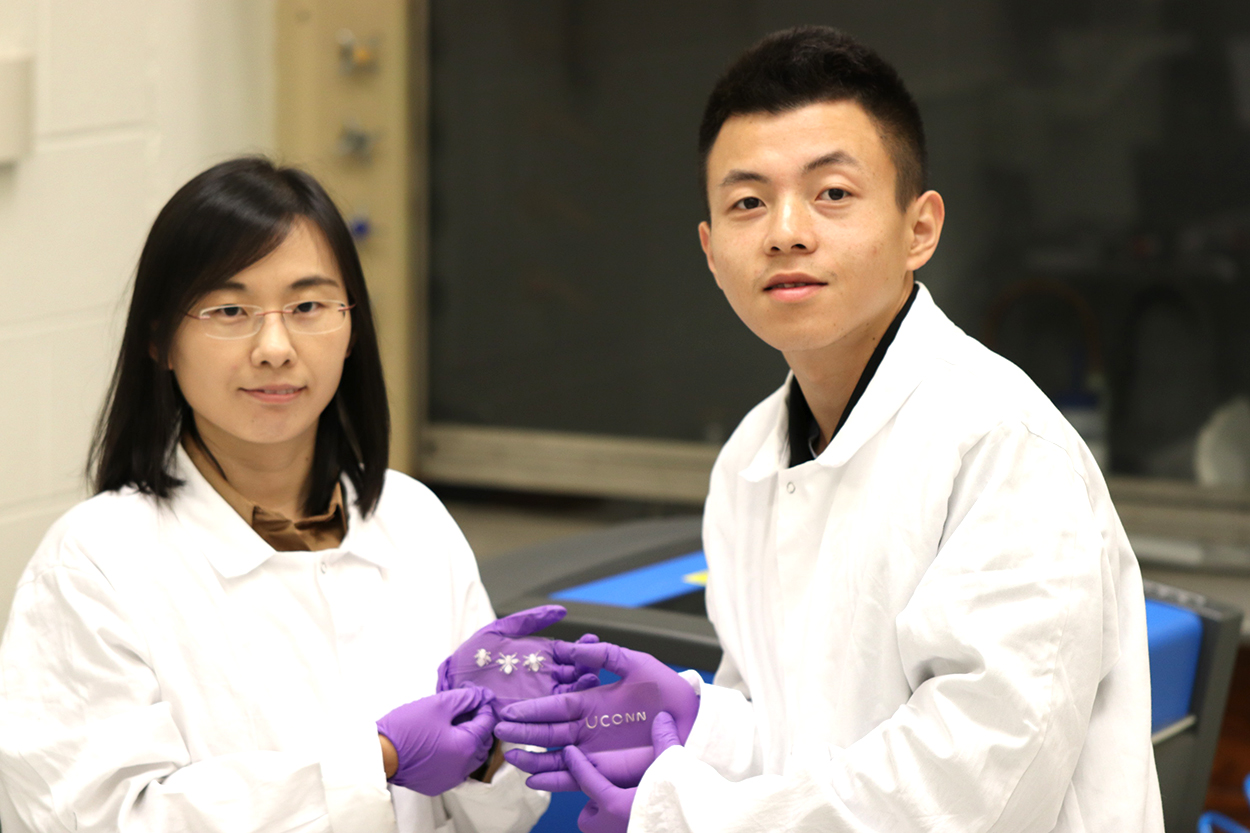
Assistant Professor Wang and her Ph.D. student Yi Li holding morphable LCE structures and UCONN letters
By Kyra Arena, Written Communications Assistant
UConn’s Materials Science and Engineering Department has the pleasure of congratulating Assistant Professor Xueju “Sophie” Wang on her group’s recent research achievements. The prestigious Journal of Matter has accepted Wang’s research paper titled “Morphing of Stiffness-Heterogeneous Liquid Crystal Elastomers Via Mechanical Training and Locally Controlled Photopolymerization.” The work is in collaboration with Dr. Teng Zhang at Syracuse University.
“Adaptive structures of stimuli-responsive materials that can change their shapes and therefore functionalities are promising for many applications including soft robotics and biomedical devices,” says Wang. “The local control of their material properties and morphing behaviors has long been desired but remain a challenge.” Therefore, Wang has researched ways to control these materials.
Her paper introduces a simple technique to create stiffness-heterogenous morphing structures of liquid crystal elastomers via selective photopolymerization and mechanical programming. Tailoring molecular interactions enables material regions of distinct stiffness, which synergistically determines the morphing behavior of diverse asymmetric three-dimensional (3D) structures and subsequent sequential programming of the structure.
Various demonstrations have been performed, including several biomimetic 3D structures like the flapping of butterfly wings or octopus tentacles bunching up, as well as programmable “UCONN” letters using the new photo- and mechano- induced approach employed by Wang and her team. Furthermore, the surrounding non-photopolymerized regions can also be programmed, allowing for reshaping as shown in a sequentially shape-morphing “face” that can reveal the “nose”, “mouth”, and “eyes” in a well-controlled manner. “The results represent a significant step toward creating next-generation intelligent materials and structures for engineering applications,” Wang states.
The Journal of Matter is a peer-reviewed scientific journal that encompasses the field of materials science. It only publishes scientific articles that contain significant original research, with less than a 13% acceptance rate. Wang says, “our group is very happy about our work being accepted by the journal because it not only acknowledges the quality of our work, but also its impact to a broad audience.”
Wang joined UConn MSE in 2020 from the University of Missouri, Columbia, where she had been an assistant professor of mechanical and aerospace engineering. Prior to that she received her Ph.D. in mechanical engineering from the Georgia Institute of Technology and completed her post-doctoral research at Northwestern University.
